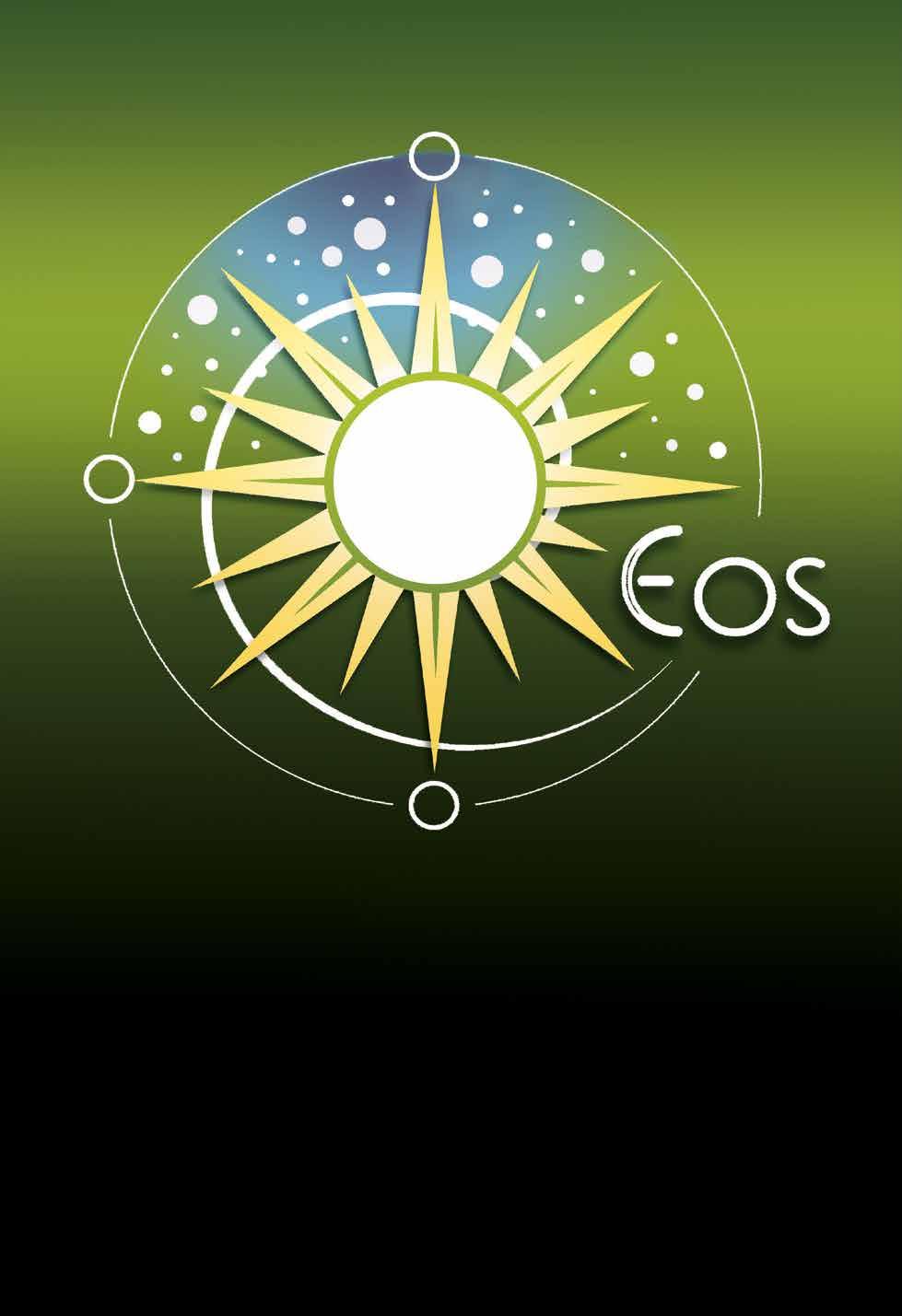


















































































































Understanding Energy Modalities and Myself by Michelle McLemore Page 8
Looking At Death, Finding the Heart by David Lawson Page 10
Page 36
Page 98
Angels On the Surgery Critical Care Ward by Madeline Strong Diehl Page 12
Waking Up After 2020 by Kirsten Mowrey Page 16
Shadows That Illuminate by Laurel Decker Page 18
Happiness is Just a Twist Away — An Interview with Balloon Artist, Carolynn Hayman by Cashmere Morley Page 40
Healing Hands Physical Therapy — Amira Tal-Henig’s Labor of Love by Michelle McLemore Page 52
Jewish Family Services — Providing Services to Vulnerable Families by Sandor Slomovits Page 56

The Aura Inside You — Photographing Your Deeper Self by Cashmere Morley Page 60

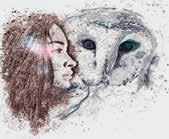
Mind and Spirit — A Return to (Psychedelic) Plant Medicine by Catherine Carr Page 63
Bringing Youthful New Leadership to Jewel Heart — The Crazy Wisdom Interview with Spiritual Director Demo Rinpoche by Madonna Gauding Page 69
Healers of Ann Arbor ~ HeartMath™ with Rachel Egherman by Laura K. Cowan Page 6

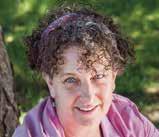
Sustainable Health ~ Ask for Help! by Diane Babalas Page 19
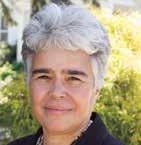
What’s New in the Community ~ by Lynda Gronlund Page 24
All Creatures Great and Small ~ Covid Cats — Quarantine? Let’s Do It Again! by Dori Durbin Page 31
Crysta Goes Visiting ~ by Crysta Coburn Page 32
Leaps of Faith ~ The Thrift Depot by Laurel Hogge Page 34
Random Acts of Kindness ~ Layla Ananda’s List of Miracles — Celebrating the Gift of Sight by Madeline Strong Diehl Page 36 Out of My Comfort Zone ~ by Diane Majeske Angie Martell and Lama Nancy Burks

Pages 38 and 39
Weekend Getaways ~ Up North Excursion — Petoskey Region Roundup by Petula Brown Page 44

Green Living ~ Putting Our Yards to Bed For Winter by S. K. Rosina Newton Page 66
Our Yoga Column ~ by Katie Hoener Page 68
CWJ
Demo Rinpoche, a 40-year-old Tibetan Buddhist monk and incarnate lama, who has spent most of his life studying in monasteries in India with thousands of other monks, and under the Dalai Lama’s direct supervision, now lives on his own in a simple apartment in Ypsilanti, Michigan.

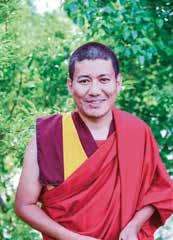
Food Section
Starts on Page 45
Fair Food Network Stepped Up to Meet the Moment by Oran Hesterman Page 46
Great Tastes in Local Foods — by Crysta Coburn Blazin’ Burgerz Page 48 Gora’s Grill Page 48 Detroit Cookie Co. Page 49
Eat Close to Home by Crysta Coburn Page 50
Tea Time with Peggy — Chai Tea - Spice for Health! by Peggy Alaniz Page 51
CWJ
The Crazy Wisdom Kids Section ........................... Starts on Page 78 Kids Book Reviews by CWJ Staff Page 78
Conscious Parenting Column ~ Mindfulness Tips Teens Wish Parents Knew by Natalie Freeburn Page 79
Crazy Wisdom Kids in the Community Finding an In-Person Meditation Class For Your Kid by Laura K. Cowan Page 80
The Crazy Wisdom Community Journal has been published three times a year since 1995. Copyright © Crazy Wisdom, Inc. — August 2021
No parts of this publication may be reproduced for any reason without the express written approval of the publisher. There is a token fee charged if you would like to use an article in this publication on your website, so make sure to contact us first. Articles from back issues are available on our website’s archive.
Crazy Wisdom Bookstore was founded in 1982. Since 1989, it has been owned by Crazy Wisdom, Inc., which consists of Bill Zirinsky and Ruth Schekter.
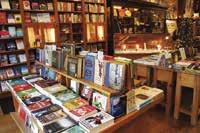
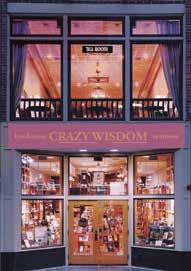
Design and Production Editor
Carol Karr Designers: Jennifer Carson, Carol Karr
Managing Editor/Staff Coordinator Jennifer Carson
Ann Alvarez, Jennifer Carson, Crysta Coburn, Michelle McLemore
Writers
The Crazy Wisdom Calendar Section Calendar Edited by Michelle McLemore Starts on Page 84 The Calendar Page 84 Background Info on the Teachers Page 101
Yoga & Meditation to Holistic Medicine A Physician’s Journey — Excerpts From a New Book by Dr. Dennis Chernin Page 90
Book Review: The Modern Guide to Crystal Healing By Phillip Permutt Book Review By Catherine Carlson Page 95
Creating Tea Rituals to Nurture the Divine Feminine by Shalina N. Rankin Page 97
Book Review: Sensitive is the New Strong By Anita Moorjani Book Review By Catherine Carlson Page 102
Peggy Alaniz, Ann Alvarez, Petula Brown, Catherine Carlson, Catherine Carr, Crysta Coburn, Laura K. Cowan, Madeline Strong Diehl, Lynda Gronlund, Rosina S.K. Newton, Katie Hoener, Laurel Decker Hogge, Diane Majeske, Michelle McLemore, Cashmere Morley, Kirsten Mowrey, Irene Nagler, Sibel Ozer, Moira Payne, Sandor Slomovits
Jacob Bauman, Jennifer Carson, Ani Daher, Logynn Hailley
Senior Photographer: Linda Lawson Susan Ayer, Mary Bortmas, Rachel Everheart, Tobi Hollander, Kate Jackman, Hilary Nichols, Edda Pacifico, Joni Strickfaden, Rachael Waring, Jennifer Wooley
Distribution
Bob Cain, Mary Ellen Cain, Paul Stehle
Advertising Sales Manager Tana Dean
Calendar Staff
Jennifer Carson, Michelle McLemore
Publisher/Editorial Director Bill Zirinsky
The deadline for Paid Advertising is Monday, November 22, 2021 Contact tana@crazywisdom.net
Listen to the interview with Crazy Wisdom’s co-owner, Bill Zirinsky, on Art & Soul with Lisa Barry.

“Being local and supporting local is what we do! Sharing those values with the Crazy Wisdom Community Journal is why we advertise with them. They are an amazing resource for folks in the community to learn about what’s happening.
“
—Ken Davis, Marketing Director, People’s Food Co-op
My advertisement in the Crazy Wisdom Journal brings me a lot of business. People come in saying they saw my ad in the Journal. Generally, I have found that word of mouth is the best way to build business, but advertising in Crazy Wisdom Journal has really paid for itself. I love you guys!!”
“
— Cathy Boaz, Owner, Kokopelli’s Korner
For 25 years I’ve looked to The Crazy Wisdom Journal for inspiration, healing resources, and metaphysical news. It’s a treasure trove of information for local seekers and I’m thrilled to be advertising in the Journal now. Tana is so helpful and knowledgeable and the artists did amazing work on my ad. Folks see my ad and contact me for astrology services. Advertising here grows my business!”
— Alice Davinich, Owner, Northern Sky and Beyond
Alice Mixer 21
Ann Arbor Pharmacy 19
Ann Arbor School of Massage 22
Arcana Press 23
Back 2 Basics Health and Nutrition/ Juli Johnson 21
Bgreen, Inc. 19
Bio Energy Medical Center 5
Bobbi Kowalski 77
Caroline Charlesworth 22
Carol Trembath, author......................................................................... 81
Castle Remedies 9
Cherie Ann McMullen 21
Conrad J. Welsing 21
CW Poetry Ad 87
CW Weekly E-zine 29
Dalat 23
Deep Spring Center 31
Dr. Raymond Kong / Acupuncturist 20
DNA Sales 2100 61
Earth Elements 7
Elizabeth Hurwitz Elder Law 20
Emanuele Acupuncture Center 20
Eve Wilson 23,31
Evenstar’s Institute 11
Fiery Maple Wholistic Healing 17
Fran Adler, LMSW 22
Frog Holler 45
Ginger Chase Massages 22
Grove Emotional Health 65
Healing Hands Physical Therapy 22
Healthy Births-Healthy Lives/Beth Barbeau 53
Henry Buchtel 20
Huron Valley Humane Society 17
Iglesia Martell Law Firm, PLLC 35
Intentional Living Collective/EOS Portal Inside Back Cover
Interfaith Center for Spiritual Growth 17
Jessica Ryder 22
Judy Ramsey / Heart to Heart Animal Communication 20
Juli Woodward 7
Karlta Zarley 96
Kokopelli’s Corner 33
“The Crazy Wisdom Community Journal readers share several of the same values as many Rudolf Steiner School of Ann Arbor families—strong community, a holistic lifestyle, passion for the arts, a love of education—making advertising in the CWJ a great way to reach families with students who thrive in our education. The Journal is a great resource for us and for the Ann Arbor Community!
— Cassie Standke, Rudolf Steiner School of Ann Arbor
As a metaphysical, spiritual tool, and gift shop that also offers Reiki, Crazy Wisdom Community Journal fits us perfectly. We have been advertising with them since our opening in 2018. They have been fantastic to work with and even helped us by offering online advertising and talking us up on their social media. Tana is always there with an answer. She’s quick to offer suggestions or reminders when asked and our ads always come out looking beautiful. I have no doubt we will be working with them for years to come.
—Kristen Madrid, Owner, Earth Elements
Krasnick Regenerative Medicine 37
Leslie Science & Nature Center 81
Lori Curry 23
Lou Weir/ The Diamond Approach 67
Malcolm Sickels / Ann Arbor Thermography 13
McLaren Wealth 25
Melisa Schuster, LMSW 20
Michelle McLemore, Healing Guide 59
Michigan Collaborative for Mindfulness in Education 58
Michigan Merinos/Happy Goat Lucky Farm 23
Monica Turenne / Four Paws Veterinary 43
Mystic Creations 23
Nanci Rose Gerler 21
New Earth Home and Garden 22
Nia Spongberg 21
NITE - Naturopathic Institute 1

Neighborhood Theatre Group 47
Noel Kemeny 55
Northern Sky and Beyond/ Alice Davinich 20
Pacific Acupuncture Center 20
People’s Food Co-op 15
Pop Designs and Creations 20
Readings With Gail 21
Roos Roast 88
Rudolf Steiner School Inside Front Cover
Sacred Sexuality/ Leslie Blackburn 23
Seed Cellar Back Cover
Seven Notes Natural Health/ Rob Meyer-Kukan 22
Stephen Rassi / Chrysalis Facilitation and Counseling 22
Susan McGraw 21
Suzy Wienckowski/ Reiki 23
Symmetry Biofield Therapy 59
The Celebrated Heart/ Rachel Egherman 7
Transitions LLC/Linda Bender 22
Triple Crane Retreat Center 73
Valiant Realty Michigan/ Linda B. Long 13 Victoria Schon 94
Wisdom Heart Coaching/ Larissa Czuchnowsky 97
Wonder Twinning 20
Yoga Space / Sue Salaniuk 17

Mary Bortmas is a photographer with over 25 years of experience. She photographed the King family in Issue #77 and the lead photo for the What's New Column in this issue of the Journal. She owns her own studio, Unforgettable Photos, in Manchester. In her spare time, Mary enjoys traveling (especially to visit her five children), crafting, and gardening.
Michelle McLemore interviewed Amira Tal-Henig and wrote an essay for this issue of the Journal. She is also an editor for the Journal, a freelance writer, and the Journal's Calendar editor. A practicing Energy Therapist, and HT Practitioner, McLemore is additionally trained in Sacred Geometry, Reiki, and Native American healing. She developed, and taught, one of the first stress management courses for public schools, and today offers individual and group workshops along with Tai Chi and yoga. As a spiritual guide, she offers relationship sessions and officiates weddings.
Peggy Alaniz is the Journal's tea columnist. While attending Naropa University she worked at Celestial Seasonings Tea company and attended a history of tea conference instructed by Ken Cohen. In her free time she writes poetry, and studies reiki and karate. A life long tea enthusiast, she continues to study about tea, herbs, and tisanes.
Paul Stehle has been distributing our magazine all around the town since 2005, and for many places, he is the friendly face of the Crazy Wisdom Journal. He worked for MichCon/DTE for 30 years. He and his wife, Anne, live in Saline, and they have two grandchildren. Paul loves muscle cars and motorcycles, but only from afar. He works on 1:24 scale die cast model cars instead.

Laurel Decker is a curious soul who wrote a personal essay on the shadow self in this issue of the Journal, and is the Journal's Leaps of Faith columnist. She embraces every opportunity to learn about this world and its people. She is fascinated by subjects that bring peace and alignment to herself and others. She applies everything she knows about these subjects as a yoga instructor, mom, flight attendant, artist, and writer.
Catherine Carlson writes book reviews for the Journal. She grew up in Ann Arbor and spent time living on both the East and West Coasts before returning home with her family. She is a lifelong student of alternative health, metaphysics, Aura-Soma and does birth chart readings as an Astrologer.

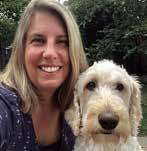


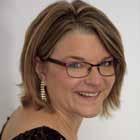
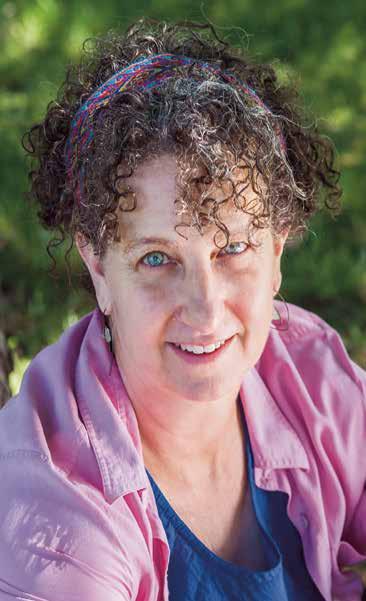 By Laura K. Cowan Photographs by Fresh Coast Photography
By Laura K. Cowan Photographs by Fresh Coast Photography
With the past year or two of constant stress, many people are looking for a simple way to relax on an ongoing basis. This reminded me of a previous experience with HeartMath™, and so I connected with Rachel Egherman of The Celebrated Heart, formerly of Head-To-Toe Therapies. In all my healing journey, I’ve never come across anything quite so simple and effective for calming and checking in with the heart space as HeartMath™. I wanted to learn more about the process and how you might evaluate if the self-care technique might be helpful to you.
In all my healing journey, I’ve never come across anything quite so simple and effective for calming and checking in with the heart space as HeartMath™.


“HeartMath™ is heart-focused breathing, or breathing through the heart space,” Rachel Egherman said of the gentle form of self-care that helps you check in with your body, your heart space, and feel supported. “This is something you can do yourself in the grocery store line. It’s a way to quickly self-regulate.”
Egherman has been a reflexologist and HeartMath™ coach for a number of years, working out of her former clinic Head-To-Toe Therapies with business partner Judy Ramsey. After closing the clinic to focus on other work during the pandemic, Egherman says she took some time off before doing more one-on-one HeartMath™ coaching and starting a group session on Zoom. She’s passionate about not just physical healing but the emotional wellbeing of her clients, and it shows in the way she speaks gently and checks in with how her clients are doing.
According to Egherman, HeartMath™ is not therapy or meditation, but “a blend of science and simplicity” for self-regulation and relaxation. It can also be combined with healing modalities such as reflexology to help people process emotions stored in the body as tension.
I sat down with Egherman to talk about the benefits of this unique form of selfcare, and how you might judge if it’s something you want to try. I love HeartMath™ because it’s something you can learn in just a few sessions and then carry forward
According to Egherman, HeartMath™ is not therapy or meditation, but “a blend of science and simplicity” for self-regulation and relaxation.
in daily life. I’ve done several HeartMath™ sessions with Egherman in the past at her clinic, and left feeling centered and peaceful. Processing issues that came up during the session was much easier to handle than it sometimes can be during the healing process.
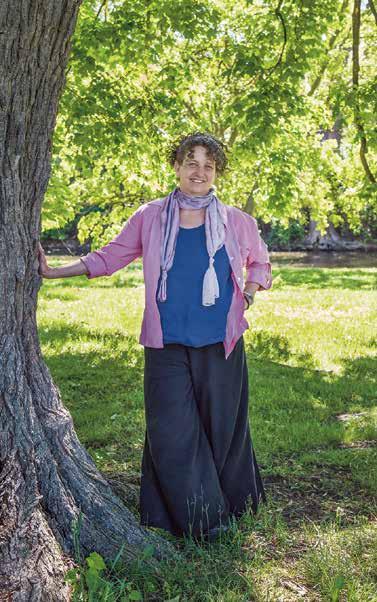
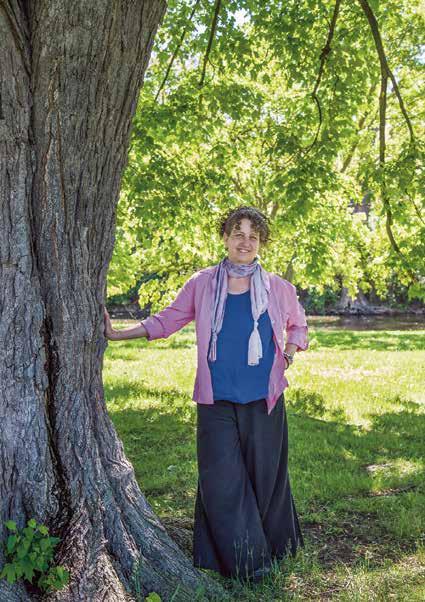
Laura Cowan: Tell me about HeartMath™ and how it works.
Rachel Egherman: The typical process for a one-on-one goes like this: First, I try to find out what your goal is. Where are you at right now? I work with people across the spectrum from those who have no self-care routine to advanced yogis, so I’m trying to find out where you need support, whether that’s physical or emotional. For example, if you’re struggling with an autoimmune disorder, we might want to start with the physical.
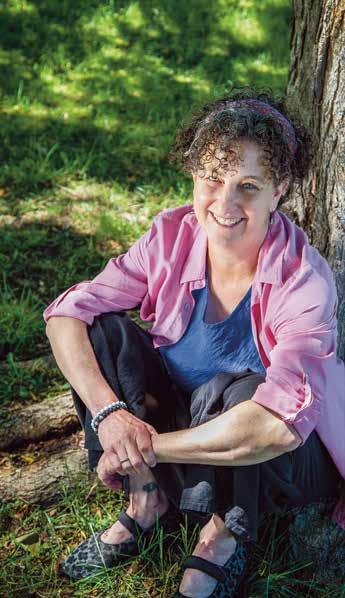
Then, we look at techniques to tap into your heart space. There is a foundation of breathing to let go of stress or the negative effects of stress.
Finally, we have worksheets designed to help you recognize what depletes you and what renews you.
Laura Cowan: How long do people typically work with you?
Rachel Egherman: I work with people for about four-six sessions, it’s not a long-term relationship. [HeartMath™] is super simple and profound. Don’t be fooled by how deceptively simple it is, though. I give you the tools to move forward, and I help you identify some sticking points.
Egherman asked me to sit in on one of her virtual group sessions. Here is the way she ran us through an exercise she calls “the soft pause,” which can help us support ourselves or others through a stressful experience:
People are reconnecting as the pandemic starts to calm, reaching out, seemingly out of nowhere. Everyone has a story that has been super challenging this past year. As we reconnect, we allow people to share their stories, and we can tap into our breathing as they speak so we’re not absorbing all this grief and stress.
We also consider how we’re sharing our stories. Every time you share your story, depending on how you’re sharing it, your body releases all that stress and cortisol again. Your body doesn’t know the difference between this and the actual event reoccurring…. Be careful not to get too involved in telling your whole story over and over. We can be a source of listening and holding love for people, share heart-focused breathing, or a prayer with others who get amped up when sharing their story. The important thing is to offer it as an invitation, not push it on someone.
For the pause practice, Egherman told us to relax, to let our shoulders drop, bring attention to the heart space. We came into an easy breath that’s a little deeper than normal. We noticed the flow of our breath in and out of the heart. We then made a connection with everyone on the call, connecting through all of our heart spaces.
As we sat with the focus on our heart space and allowing connection with other people on the call, Egherman talked us through some strategies for relaxing through stress. She talked about how many of us have dealt with feelings of urgency and not being able to do enough in the world recently. It can help to connect with an energy of softness and patience. This is the soft pause. We started in the heart space, feeling a conscious but easy softness in the chest. We sat with this for a few minutes. Then, Egherman helped us visualize feeling the softness radiating through every cell in our bodies. We spent a few minutes just allowing this softness to spread. In this space, we can connect with the matrix of all that is and ask to receive the support we need. We sat as a group, allowing our minds to follow where that process might lead.
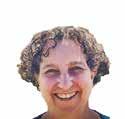
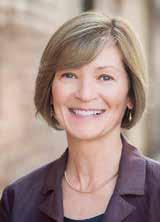


At the end of the session, we came back to our breathing and felt our own individual hearts. This is important during exercises where you’re feeling other people’s energy—to return to your own energy and be aware of your own body as distinct from others before close. It helps you return to normal daily life to first ground and be aware of your present body again.
Before we closed the session, Egherman asked: “What do you want to anchor in? What does your reservoir of soft heart energy look like? How do you connect to softness?” She recommended that we could use the energy as we converse with people who might be stressed, sharing what happened to them during the pandemic. We can imagine ourselves being in a soft reservoir of water or opening our hands to create softness within us. She told us that when you share that, the other person has access to that support as well. It seems similar to how a good friend holding space for you in a crisis can create the room for sharing what you’ve been going through, except the support feels broader, almost universal.
We closed the session with people sharing how they felt during the HeartMath™ session, and what had changed. The nice thing about HeartMath is that it can be tailored to your situation. If you’re struggling with anxiety or a health problem, the process both focuses on the area that needs extra support and avoids over-straining your already stressed body. You can use HeartMath to process grief, or to help your body relax through a time of extra stress.
I hope that this gives you one more option to consider if you need extra support as we emerge from this collective time of stress and grief. Many blessings.
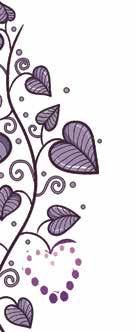



What’s in a name? That which we call energy therapy by any other name would be valued the same. Or would it? History, Hollywood, and cultural bias have long pitted healing philosophies against each other and, in some cases, ostracized or executed people (in some countries even today) for even a suspicion of one’s involvement with energy manipulation.
Educating myself (and my clients) about the different forms of healing practices has been important. Labels casually thrown about by family, friends, clients, and strangers have revealed ignorance, stereotypes, and my own squeamishness based on not wanting to misrepresent truth nor step on any cultural toes.
In the first year of energy training, the initial conundrum was to wrap my farmgirl, Catholic-raised mind around the fact that an average person—like me, like you—could provide pain relief and sometimes relieve all symptoms of illness for a client. The term “healer” and “healing” was used in classes. Healing, I could see and believe. But, to call myself a “healer?” That didn’t sit well. I made peace by defining myself as a healing “guide” since healing belongs ultimately to a client. My goal was (and is) to assist healing and then educate clients in building their own healthy proactive strategies. My internal conscious meter relaxed—or so I thought.
Labels casually thrown about by family, friends, clients, and strangers have revealed ignorance, stereotypes, and my own squeamishness based on not wanting to misrepresent truth nor step on any cultural toes.
At some point I attended a group angel reading out of town. When the intuitive’s eyes lighted upon me, she quickly called out, “You are a healer. You need to quit being afraid of people calling you a ‘witch.’” In less than 30 seconds, this stranger had identified, called out, and dismissed a harassing thought. It was true. I was encountering accusing vibes from Christian friends and locals which made them hesitant to reap the benefits of a session. They had no context for understanding healing facilitated from a simple girl next door. So, I began pondering how best to educate fearful people that energy healing was not anti-Divinity?
Training and years went on. I chose to explain the science and research behind energy healing. This helped turn an abstract concept into a more comprehensible idea. The best explanation, of course, was simply when someone tried a session.
Then, a new label arose. Several times in one year, I was appraised (each time by a stranger) and it was declared, “You have Native American blood.” Then, the individual would ask, “What nation?”
I stammered. “Mmmm, no. We’ve no genealogy support of that. Though, my husband is one eighth Cherokee.”



In each instance, the person was not deterred even momentarily in their stance. “No. You definitely have it in your blood.”
What to say to that? I’ve had training by indigenous teachers, but training does not suddenly change one’s genetics. Add to this a friend, familiar with my energy work, one day pronounced he believes I am a Shaman. Inside I recoiled slightly. I quickly clarified, I have not had appropriate training or teaching for that title. He scoffed and said my opinion didn’t match my work.
Time went on. Sessions and casual labels by others continued. My husband and a client friend, Dee, occasionally gave impromptu testimonials to folks. Both jokingly referred to the helpful “Voodoo” that I do.
One day Dee and her sixteen-year-old football player grandson came for his first appointment. They had just seated themselves at the dining room table. Normally, we’d begin reviewing the new client’s health history and set goals. But first, I felt I needed to make a distinction.
“Okay, before we get started, Dee, did you bring the chicken?” Both of their faces went blank with confusion.
“You know, for the blood sacrifice.” The young man’s eyes grew wide, and his head jerked to look at his trusted grandmother. Dee was chuckling and shaking her head. “Okay. I get it now,” she laughed.
I broke into a grin and apologized to the young man. “And that’s one of the reasons this is not Voodoo. Everybody clear?” Color came back into the stocky boy’s face, and he breathed easier.
I chose to explain the science and research behind energy healing. This helped turn an abstract concept into a more comprehensible idea. The best explanation, of course, was simply when someone tried a session.
People psychologically create labels for others to help make sense of the unfamiliar and to categorize threat levels in society. It is the primitive brain’s normal strategy for safety. It is also where stereotypes begin. With new information, or repeat encounters with something or someone different, the advanced healthy brain should reinforce or revise its initial labels and concerns. With increased encounters, usually there is a decline in fear and a decline in the prejudice—typical side effects. But, if someone doesn’t have encounters, they borrow what other people tell them or what they’ve seen from Hollywood, regardless of its accuracy.
Am I personally worried about being confused with a witch, a native American healer, or a Voodoo queen? No. But, my heart is also very clear on not claiming titles that do not fit what I do or who I serve. “Guiding” resonates with my heart. It will be sufficient regardless of how I do the job.
What someone else thinks of me may influence how they choose to interact with me, but it does not make me what they believe. Like grade school name calling (positive and negative), I am no more an “angel” or “gifted” than I am “a witch” or “charlatan” simply because one doesn’t understand how energy works. In the early years, my concern was others not understanding the work and therefore missing out on an opportunity to heal. I was eager and passionate. Now, I understand that to trust universal energy, is also to learn to trust that the right clients will find their way to me. And at that time, I can educate them on what and how energy works— at least how it works with me. And that is my heart’s direction—to educate, to nurture, and to help people understand the incredible design of this world.
I get to choose each day, each moment, what I will advocate for, who I will show kindness to, and how I will affect the environment around me. All of us do, no matter how we identify, no matter how others assess us. Everything is energy. The physical, the invisible. Thought to action. Sound to Light. The all is the All—Spirit, Ki, Chi, Qi, Prana, Life force. And we are a part of it, not apart from it.
And for the record? Of all the nick name labels I’ve been given, I like “Jedi Master” best.
Am I personally worried about being confused with a witch, a native American healer, or a Voodoo queen? No. But, my heart is also very clear on not claiming titles that do not fit what I do or who I serve.
Michelle McLemore is a certified Healing Touch Practitioner with additional
in a variety of other energy modalities such as Sacred Geometry, Reiki, essential oils, and herbs. This synthesized with her degree in psychology, prior teaching experience, yoga, Tai-Chi, and dance instruction and is just the start of her stress management wellness offerings. For more information, visit michellemclemore.com.


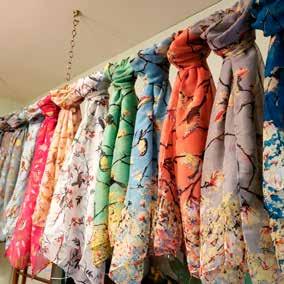





 By David Lawson
By David Lawson
This is a falling-down life. It changes, we change, everything changes! Worst of all, we have almost no control over how our life unfolds on a day-by-day basis, and so it becomes essential to learn how to deal with the basic facts of impermanence and no control without resorting to a kind of indifferent resignation. It’s not so easy, is it?
I was diagnosed with stage four lung cancer in October of 2019. When I first received the diagnosis, a fog of deep shock took over. How could this happen? What had I done wrong? Then came anger, disbelief, sadness, and anguish. I started preparing myself to say “good-bye” at that time, believing I had about three months to live. I withdrew.
Withdrawing from life is one way we try to exert control. We look for a space in which we think there is no change or instability, and we think we can find it by running away. But it never works, and the reason it does not work is that in pushing away the things we don’t want, we also push away those things that are good and have served us well. This happens because each of us is connected to all other things in this world as they are connected to each other. Push away one thing, and the rest of the world follows.
How, then, can we learn to deal with the inconvenient truth of impermanence, the instability of all phenomena including ourselves? Well, to start with we can learn how to let ourselves really feel the instability and unreliability of things deep in our bones. We normally understand the instability of life in only a cursory, intellectual way. It rarely occurs to us to look more deeply into the matter. However, with deep-down awareness of our precarious situation in each moment, as well as the ways in which we have caused ourselves pain by trying superficial means to fix it, we learn that rather than being a calamity, this life is beautiful in an unexpected way. And it is beautiful at least partly because of its precariousness and instability. It is also ungraspable.
We tell ourselves that we are going to take hold of life and grab everything we can, but is this really possible and does the project of grasping and holding really make us happy? Unfortunately, part of the reason this strategy never works is that in thinking of life as something we need “to get the most out of,” we separate ourselves from it. Life becomes an object of our desperation. The things we want become carnival prizes, and we believe the carnival barker when he says, “Step right up. This can be yours!” But nothing can ever be really mine because it slips through my fingers even as I try to hold it.
If we live our lives only craving and grasping, we set ourselves up to feel as orphans in the world rather than as part of the web of existence in which there are no forgotten ones, nobody left behind, nothing independent of the flow of life.
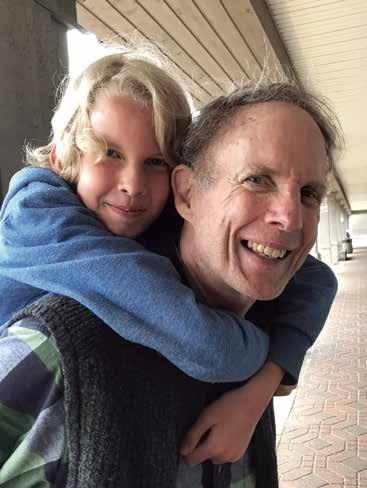
When we are honest with ourselves, we see that we have never been able to grab hold of anything that, in itself, could make us feel more complete.
Besides craving for things, we also crave what the Buddha called “becoming.” In practical terms, this can be seen as the impulse to become an “improved” human
being, but solely for the purpose of achieving “success” in conventional terms. Looking into the face of death can destroy our painful notions of what it means to be a “success” in this life, and this brings great relief!
There is also a particularly insidious form of craving that the Buddha spoke about, called the desire for extinction. This includes everything we do to ignore the mystery of our experience, the conundrum of being. Craving for extinction can range from simply wanting a thought to go away, all the way to wanting one’s own death. The death wish is especially pernicious because it robs us of the opportunity for peace and true comfort. It blinds us. The main antidote for this state of mind is to simply become aware of it and let the shock of finding it bring greater clarity, without which we may slip into a debilitating numbness of spirit.
We become addicted to the objects of our craving as well as to the craving itself, but what if we could open ourselves to each moment in a way that would merely let it all happen? Could there be just a simple knowing without getting caught in evaluating our experience, which can block our ability to come into this delicate, subtle present moment? When we are constantly judging, evaluating, and comparing, we are merely reacting and creating distance from life and from ourselves.
a mysterious universe that at times seems to offer the hope of control and then at the last minute pulls the football out of reach—Lucy’s old trick against Charlie Brown! Then we are caught in a story that says we should have been able to gain control but once again messed up. It seems to never occur to us to simply let go of our obsessive need to kick the football through the uprights. Life is not a game that can be won in a conventional way. Lucy’s never going to hold the ball steady to let us kick a field goal, is she?
For several years, I taught a class based on awareness of death as instructed by the historical Buddha. He said that the awareness of death is the biggest of all meditations, like the footprint of an elephant in the forest. When practiced with diligence, the Buddha taught that it could lead to a complete letting go and profound freedom. In this class, we practiced with becoming aware of the constant flow of time as well as the changes in body and mind with aging and illness. Letting go of the illusion of control is one of the most important life lessons for human beings. It can be very painful to finally acknowledge this essential way that we have been kidding ourselves through strategies of inattention, distraction, and promotion of melodrama in our lives. Turning away from the difficult facts by looking only superficially at our experience does not work, does not bring peace.
One of the best areas in which to clearly see the illusion of control over our lives is in the arena of our relationships with others. We have accumulated lots of unfinished emotional business involving other people and have not been able to “manage” our relationships in ways that we thought possible. We have done and said things that call us to ask for forgiveness and to offer forgiveness to others. However, this is hard work, and we encounter many people in this world who would rather carry hardened emotions and positions all the way to their deathbeds rather than attempt to work them out when they have the opportunity. When we make an effort to forgive and ask for forgiveness, we are giving up our assumed position of control, our claim to a completely independent status in our lives.
In class, we wrote love letters to those we wanted to ask forgiveness of, and many class participants chose to personally visit these people and read the letters to them. We did the same with people in our lives whom we loved but maybe had never told how deeply we felt. People reported in the doing of this that there
We have inherited our place in
was a profound sense of letting go. As tears came to both the letter writer and the recipient, a sacred space was opened up for both.
Also in class, we spent lots of time reviewing our lives. Reports from people who have undergone near-death experiences often describe how their entire lives were presented in detail as if on a movie screen. Happily, a panoramic life review prior to actual death can allow a person to spend time with her own behaviors and outcomes as a possible way to make changes and avoid future regret.
We also cling to our love relationships. We hang on to these relationships and fear future problems with them because we think it is possible to definitively “manage” these relationships. But of course, this is just another attempt to control something that is essentially beyond our control. Paradoxically, it is in the letting go of the attempt to “manage” these relationships that we enter a space that allows for the flourishing of a more fulfilling form of love. When we are not holding tightly to a relationship, we find that the love we feel actually grows deeper and broader.
In working with these practices myself, I have found that old fears of death itself are gone. This is especially profound in my case because I maintained a morbid fear of death for the first 30 years of my life. As a child, I often woke up in the middle of the night worried about death, and my mother would come into my room and calm me down with reassurances that the dreaded event was a long way off. This worked, but only until the next evening.
As a young adult, death seemed to be a tragedy, a huge error. I remember taking a class on gross anatomy in medical school (which I later dropped out of) and looking at and dissecting the corpses every day. It was not a comfort to see the body as just an assembly of mechanical parts. The life of the person dissected was gone. Where had she gone? How unfair it seemed that such a person who would choose to donate her life to a medical school had simply vanished. It was easy to see how she was not the body. She was gone, but here was a collection of human tissue, no single part of which was the essence of who she was. Poof! What was the significance of her life? I could not figure it out.
what remains is a feeling of sorrow in leaving this world behind—sons, wife, friends, and everything dear to me. I am now learning to let go of even this sorrow by reminding myself that my beloved were never mine. I never owned any of them.

As I see it, this is where humility comes from. Humility knows that we cannot hold ourselves apart from life, nor figure everything out, nor arrange life as we have always wished it to be. Tilopa, the 11th century Indian meditation master, advised that we should let go of past, present, and future. Letting go of past is letting go of the voice that says, “Oh, if only I had eaten better, maybe I would not have cancer.” Letting go of the future is dealing with thoughts such as “Maybe I will die next month” or “Why do I need to leave everything behind?” And letting go of the present is letting go of thinking and ruminating about my circumstances, because when I am just thinking, I have not submitted to the present moment. Just thinking about the present does not bring happiness.
I have also recently taken to asking the question, “If I want to live another day, what do I want to do with that day? What is most important to me now? Do I just want more experiences, more sense pleasures, more things? Or do I want the peace that comes from letting go of all of this? I begin to find that all conventional notions of happiness simply do not sustain me.
In my meditation practice, I see birth and death in every moment. A new, temporary self is born in each moment by grasping onto a form, really anything that we take to be a thing. And death occurs in the moment when a thought vanishes, because we think we are our thoughts. Most beginners in meditation are surprised to find that they are not thinking all the time, but that there are moments between thoughts in which apparently nothing is happening. Seeing the birth and death of a thought in this way is very simple but profound.
Death directly confronts our search for meaning, however we conceive of that. There can be the view that death makes life completely meaningless, but this is a distorted view, in my opinion.
It seems that meaning is not something “out there” that I am meant to discover. Instead, it is something residing internally that is more like a question, a place of sacred mystery and paradox. It whispers to me to pay attention. And when I pay attention, I live in the heart, as the heart.
Besides letting go of the illusion of control in our lives, is there anything else that can help the heart deal with the presence of cancer or any other troubling circumstance? Yes, there is. This is the helping of others who are suffering. We can find numerous ways. We can volunteer for organizations, for example, or we can work in smaller ways on our own to express our natural compassion. We just look closely and find out what will be helpful.
There is a kind of magic in this, because it helps remove a mindset of victimhood. When we take care of another person, there is a dawning understanding that if we can do this for others, we can start seeing our own situation in a different light. Helping others turns upside down the human tendency toward self-cherishing attitudes that lead to isolation and pain. When we turn our helping intentions in the direction of others, we become people who are more interested in healing
and waking up than people who are only interested in indulging in notions of victimhood. In fact, we now know that cancer patients who are willing to do this report a significant improvement in their physical and mental condition.
In the Tibetan Buddhist traditions, there is a meditation practice that specifically expresses this strategy. It is called Tonglen, which means “sending and receiving.” Anybody can do it. The practitioner starts with bringing attention to the breath. Then, he imagines breathing in hot, smoky air that represents the difficulties another human being is going through. At the same time, he keeps a mental picture of the other person in his attention. On the outbreath, he imagines breathing out cool, clear air representing his own wellbeing that he is offering to the other.
There can be a certain hesitancy to do this practice, partly due to a belief that in breathing in the suffering of another person, the practitioner himself will cause a worsening of his own health. In my experience, this never happens. Instead, as the self-relinquishes its desire to hold onto all the good stuff for itself, there is a release from the way this desire imprisons us. Having offered help to another when we ourselves are sick, we realize that we can heal ourselves in many ways, as well. We find ways to submit to our lives without giving up.
We can also do this practice outside of a formal meditation practice. For example, seeing someone in public having difficulties, we can breathe in that difficulty and breathe out for them our own wellbeing. This stepping down of the ego from its normal “safe” perch brings courage.
I have decided that I will practice Tonglen at the time of death, extending a form of deep generosity to others for as long as I can. You and I are connected in ways we do not understand, and I will include you, dear reader, in my practice at the end.
We all suffer. May you find peace and comfort. May you be happy, may you come to know that you are loved.
David Lawson has been meditating since 1985 and began his practice of Buddhist meditation in 1994. He has been teaching in this tradition since 1994. Six years ago, Lawson co-founded the Still Mountain Meditation Center and serves as lead teacher for that organization. Still Mountain offers meditation instruction, weekly sittings, discussion, and friendship.
To now find myself not fearing death is such a big deal, and I feel very fortunate about this! Yet
I do not know how much longer this body will keep functioning. I’ve already been here longer than I originally expected, and for this I am deeply grateful.

 By Madeline Strong Diehl
By Madeline Strong Diehl
It all started from eating bad chicken, or so I thought. I lost everything in my stomach over a period of three hours, and the pain was only getting worse, so I called the answering service for my primary care doctor. It was early in the morning on May fifth, and a nurse instructed me to go to the U-M Hospital ER right away.
I had a lot of misgivings, mostly because I knew from a doctor friend that the U-M was still treating a significant number of people for Covid-19. Since April fourth the state of Michigan had the highest daily case rates and number of daily hospitalizations and deaths in the nation, and a large cluster of cases on the University of Michigan campus had contributed to that deadly surge. The ER was the last place I wanted to go. But when the pain in my abdomen became unbearable, my husband Ed insisted on taking me. He had to drop me off because of strict rules barring visitors.
I was screened twice for Covid upon entering the ER, so I knew the five other patients ahead of me had been thoroughly screened, too. All patients and staff were wearing masks. I’d had both doses of the Moderna vaccine, but its ninetyfour percent efficacy rate still left me with a six percent chance of contracting Covid. While sitting in the waiting room, I tried to reassure myself that, if I did contract Covid, I would only get a “mild” case. But I had read about too many “mild” cases that were still pretty bad, because they could include pneumonia, loss of smell and taste, and being knocked off my feet with exhaustion for two weeks or more. After studying the data from Jan. 1-April 30th, the CDC had determined that 5-8% of all Covid cases were so-called “breakthrough cases” among people who were totally vaccinated. I felt foolish about opening myself up to these risks when I probably just had a bad case of food poisoning.
I imagined a toxic waste dump located somewhere in my abdomen and felt even more exhausted and nauseous than I already was. What I thought was food poisoning was actually a gallbladder attack. Normally the gallbladder is helpful for the digestive process by storing and moderating the flow of bile, a substance that helps break down fat before it goes into the small intestine. But sludge, a build-up of small chemical particles, blocks the flow of bile and causes swelling and inflammation—a condition known as acute cholecystitis. CT scan images later showed that a calcified gallstone was also blocking the flow of bile between my liver and my gallbladder, causing an abscess. Dr. A. told me if I didn’t have my gallbladder removed, there was a chance it could rupture—potentially a lifethreatening emergency. So, the other option, a two-hour laparoscopic surgery that afternoon, was a no-brainer. The surgery was over within about twelve hours of my arrival at the ER and I was released two nights later. I was told that I could go back to my normal activities in about a week, and the loss of my gallbladder would probably not affect me at all. Surgery to remove the gallbladder, a cholecystetctomy, is one of the most common surgeries in the United States, so it was no big deal. There was only about a three percent chance of complications.
The Centers for Disease Control had begun to keep track of so-called “vaccine breakthrough infections”very rare but serious cases of Covid among people who were fully vaccinated. I felt foolish about opening myself up to these risks when I probably just had a bad case of food poisoning.
Well, dear Reader, it turns out that, while almost all cholecystetctomies are textbook perfect, that still leaves a few of us who end up on the wrong side of statistics. Little did I know, my ordeal had just begun.
My fraught inner monologue was soon interrupted by a nurse who took my vitals and interviewed me about my symptoms. I didn’t have a fever, so I was surprised and alarmed when the nurse ushered me back to a triage area. When another nurse pricked me with a needle to establish a forearm IV and take blood samples, it was unnerving not to be able to see her face because of the mask she wore. Then I was taken back to an exam room.
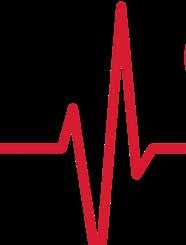


I’ve never waited less than two hours to be seen by a doctor in the ER, but this time Dr. A., a resident of general surgery, entered after about twenty minutes. His dark beard was all but covered by his mask and he listened attentively as I explained that I had food poisoning from eating bad chicken. I ranked the pain in my abdomen as a seven or eight out of ten. He then put gentle pressure on the right side of my abdomen, below the ribs. I suppressed a scream, and I was soon given an ultrasound. After an hour or so, Dr. A., reappeared and announced, “It’s your gallbladder. We want to take it out while we have you here. We found sludge.”
Before I go into the next chapter of this story, I have to warn you, dear Reader, that it is for mature audiences only because I am going to have to use a gross word, and that is pus. There is an equivalent medical term that sounds much more polite— purulence—but, to my mind, that word just cannot convey the feelings of horror and revulsion that I felt when I discovered a yellow-brown discharge coming out of my wound during an otherwise lovely spring day. It was the evening of Thursday, May thirteenth, and Michigan still had the highest Covid daily case rate and rates of daily hospitalizations and deaths. I had been out of the hospital just six days, but I felt strong and energetic, and I walked almost an entire mile with a friend. It was hot out, and I could feel moisture soaking through my T-shirt, which I assumed was sweat. But when I arrived back home, I discovered that a lot of pus was coming out of the largest of five incisions in my abdomen, where my gallbladder had been removed. So, my husband dropped me off at the ER for the second time in eight days. This time I was in the waiting room for more than an hour, and it had a completely different atmosphere from my first time. I overheard several patients being rude and aggressive toward staff about the policy barring visitors. In fact, one patient became so agitated that she began to threaten staff, at which point I believe she was taken to the Psychiatric ER—to the great relief of everyone else. It occurred to me that screening for Covid and enforcing the no-visitors policy must be taking up a significant amount of time and energy of the already stressed-out and overworked medical staff. I guessed that this could only lead to some of them taking short cuts to save time, which might even cause mistakes. And during this visit to the ER, I personally experienced two things that, unfortunately, seemed to indicate that my hunch was correct.
Once I was ushered into an examination room, I recognized Dr. A. when he entered—the resident who had conveyed my diagnosis of acute cholecystitis during my first visit. Because all the medical staff was wearing masks, it was difficult to tell many of them apart, but Dr. A. was the only man I had encountered with dark hair and a full beard. He started treating my infection by putting me on a broad-spectrum antibiotic through an IV. Then he announced, “We’re going to have to open that wound back up and clean it out. This might hurt a little.” Then he asked another resident to hand him a scalpel from a rolling white instrument case. I instinctively put my hand up over my wound to protect myself and asked if he was going to give me any pain medicine. He said the whole process shouldn’t last long, so I didn’t need any. Then he began cutting all along the length of the incision, which was about two inches long. I begged for pain medicine, but he kept saying, “I’m almost finished. You’re doing a great job. I’m almost done….”

Well, dear Reader, it turns out that, while almost all cholecystetctomies are textbook perfect, that still leaves a few of us who end up on the wrong side of statistics. Little did I know, my ordeal had just begun.

While he was cutting, I fantasized about channeling the spirit of my crazy Italian grandmother. I pictured myself grabbing the scalpel out of Dr. A’s hand, jumping off the bed, and brandishing my weapon. “Now, Dr. A., let’s find out more about your pain threshold!” But I knew that would certainly land me in jail. Still, just thinking about it helped reduce my pain level from a 9 to a 7.
My open wound was about an inch deep, and Dr. A. managed to squeeze out fifty milliliters of pus (or about two ounces. Don’t say I didn’t warn you that this is gross.) And only then, did a nurse administer fentanyl, a strong pain reliever and sedative.
By the time the fentanyl started working, it was too late; the damage had been done. To this day, I don’t know which was worst—the straightforward physical pain of being sliced into, or the emotional and psychological pain—the great vulnerability and helplessness I had felt. No doubt it was the combination of both that caused a psychological wound that was as big or bigger than my physical wound.


Dr. A. seemed to be oblivious to my emotional state and he asked me if I wanted to see the pus. I was so flabbergasted by the question that I couldn’t think of a reply. He then announced that he would teach me how to pack my wound. “How am I supposed to do that if I can’t see it?” I asked. (It was located below my right breast.) He suggested I could use a mirror, but there were about five steps involved and I couldn’t imagine keeping everything clean while also holding a mirror. I asked if my husband could please come in and learn how to do it. Even though guests were technically not allowed, the one exception was for teaching someone how to take care of a patient after release. So, Dr. A. relented, and another resident instructed my husband Ed on wound care. I was released from the ER shortly after midnight on Friday, and I couldn’t get out of there fast enough. Prescriptions for two different antibiotics were called into my pharmacy, and I was alarmed when one of them turned out to be a sulfa drug, which appears all over my records as something I am allergic to. I had, and have, great respect for, and trust in, the U-M Hospital, so I could only assume that I was glimpsing some chinks in the armor of a world-class facility that had perhaps become strained by the demands posed by more than a year of dealing with the pandemic. In this context, it was only logical—and perhaps even predictable—that these otherwise brilliant, talented, and committed staff might make a few mistakes during the course of a particularly challenging shift. I had to assume that Dr. A. had not intended to cause me so much pain; he had probably been under a lot of stress and was probably also treating people with conditions much more serious than mine at the same time. Cutting into me and squeezing out the pus in my wound without giving me pain medicine first was probably a short-cut he felt he had to take under severe time restraints. I knew this intellectually, but emotionally, I felt an enormous amount of anger toward him—how could I not? I was deeply conflicted, because I knew anger was a highly toxic emotion that could interfere with my healing. I tried grounding myself in the present. I tried to use my mindfulness skills and prayed for Dr. A. every time an image of him arose in my mind and caused anger. I said the Buddhist lovingkindness prayer over and over in an effort to turn my negative energy around and lift up Dr. A. so that he would feel rested, capable, and strong; so that his mind and his heart could be up to the task of caring for so many people.
I had been out of the hospital just six days, but I felt strong and energetic, and I walked almost an entire mile with a friend. It was hot out, and I could feel moisture soaking through my T-shirt, which I assumed was sweat.


continued...
I wish, dear Reader, that my tale ended there, because that would be a nice place to end this. And I also wish that I did not have to keep mentioning the word pus. However, within one day of being released from the ER that time, pus began pouring out of my wound again. It was Sunday, May sixteenth, and at first I spent a couple of hours in total denial. Denial is a skillful way of putting off something unpleasant, but it also can have very bad consequences. Deep down I knew the longer I put off going to the hospital, the more I was allowing the bad bacteria in my body to multiply exponentially. Still, I just couldn’t bring myself to accept the reality that my infection was so darned stubborn. I had been resting and taking my antibiotics properly, but I was getting weaker and weaker as time passed.
My husband finally insisted on taking me back to the ER, and I scanned my bookshelves for a book that I could take with me to help me get back some sense of agency again. Instead, the book that called out to me was Pema Chodron’s When Things Fall Apart: Heart Advice for Difficult Times. The title pretty much summed up my life at that moment—I no longer felt that I was sitting in the driver’s seat of my life. I was a passenger in a car that was moving at a deathdefying speed and careening from one collision to the next. I had read the book before, but I knew I needed to read it again, because it contained the essential Buddhist message that we are never actually in the driver’s seat of our lives. In fact, there is no car and there is no driver’s seat, and unless and until we accept that, we will cause ourselves great pain and suffering.
My husband is usually a very calm man, but I noticed that he was looking worried and strained when he dropped me off at the ER for the third time in eleven days. The ER was very crowded, but I was fast-tracked to an exam room, given an ultrasound and MRI, and again put on a broad-spectrum antibiotic through an IV. My infection had begun to kick my butt, and I was finding it difficult to find the energy and balance to get up and out of my hospital bed and walk to the bathroom. I was told I would be admitted, and I was interviewed by a surgery resident. “Do you know why this keeps happening to me?” I asked her.
“Sometimes with gallbladder surgery a nearby organ can get nicked,” she said. “Nicked?” I asked, my anxiety level increasing by a magnitude of ten. She reassured me that they would do more imaging and if anything had gotten “nicked,” they could repair it. Not too long after that my nurse announced that they were in the process of assigning a bed for me in the acute surgery critical care ward. “Are you the patient who has MRSA?” she asked.
sepsis at the U-M Hospital three times in the last four months. I tried not to listen to their discussion, but I was so tired and anxious, that I felt my roommate’s words almost physically.
I only got a few fitful hours of sleep that first night. I am terrified of MRSA and Covid, yes, but I am even more terrified of sepsis, and it was difficult to stop thinking about it when I knew that the woman on the other side of the room had been fighting it for four months. I like to think of myself as a kind person, an empath, but I was so exhausted and sleep-deprived that my anxiety revved into overdrive. I couldn’t seem to separate her situation from my own. Whenever I felt empathy toward my roommate, I felt anxious for her, too. Then I instantaneously became anxious for myself and imagined the worst possible outcome of my situation.
I was exhausted. I had not had any food for hours because they were still observing me and giving me tests. I had tried to stay polite with the staff, but at that point I lost my composure. “For God’s sake what is with you people?” I exclaimed. “First you tell me I might be nicked, then you mention I might have MRSA. Why can’t you just look in my records and find out the answer! There’s no need to terrify me anymore than I already am. I am more afraid of MRSA than Covid!”
“I didn’t mean to upset you,” the nurse said quietly, and while I couldn’t see her whole face—or the faces of anyone there, patient or staff—I became aware of the compassion in her eyes, which had been there all along. She asked if I would like more ice water or another warm blanket, and only then did I notice the white Styrofoam cup of ice water that I had been taking sips from. I appreciated how comforting it was to have a warm blanket covering my legs and torso. It reminded me of how my older sister tucked me in when I was a child. All this time, when the nurse had entered my room to take my vitals, she had also been making every effort to provide me with all the comfort she could offer. And I didn’t remember having ever thanked her.
“I’m so sorry,” I said. “You have been very kind and you have been taking very good care of me. Thank you so much.”
“Most patients are so distracted by their pain that they never thank us. So that means a lot to me,” she said. “Your room will be ready in half an hour, and then you will be able to get some good rest.”
Anyone who has ever spent the night in a hospital knows that it is very hard to get “good rest.” By the time I was settled into a room that night, it was midnight on May seventeenth, and my roommate was talking to her nurse about whether she was ready to die. They talked about her diagnosis—sepsis precipitated by a blood infection—and I overheard my roommate mention that she had been treated for
Dear Reader, have you ever had the experience of picking up a favorite book and opening it up at random to the exact page that you needed to read? At the point when I was giving up on ever falling asleep, I opened up my copy of When Things Fall Apart and found Pema Chodron’s description of tonglen—the Buddhist practice of “taking in pain and sending out pleasure” as a way to turn around our “well-established habit of doing the opposite.” She goes on to say, “Whenever we encounter suffering in any form, the tonglen instruction is to breathe it in with the wish that everyone could be free of pain. Whenever we encounter happiness in any form, the instruction is to send it out, with the wish that everyone could feel joy. It’s a practice that allows people to feel less burdened and less cramped.”
I became aware of how much emotional energy I was using to run away from my roommate’s pain and my own. Instead, I tried to become aware of the pain and let go of it on a moment-by-moment basis. I finally remembered that the way to get through difficult times is to stay anchored in the moment, with mindfulness—not look ahead toward some painless future which might always elude us.
I had definitely become traumatized by going to the ER three times in eleven days. Each of the two times I had gone before, someone had cut into me without a lot of notice, and I knew someone was probably going to cut into me a third time during this visit. I fell into a state of hypervigilance that made it impossible to sleep. I found myself in a place between dreaming and wakefulness, and I would startle awake whenever someone entered my room to check on me. It was dark, I was afraid, and I couldn’t see their faces behind their masks. In my mind’s eye each and every one of them became Dr. A. during the first few moments they were in my room. His words echoed over and over in my mind: This might hurt a little…hurt a little…hurt a little…. My sympathetic nervous system would kick in, my muscles tensed, and my mind ordered my body to flee. Each of these anxiety attacks lasted about half an hour to an hour, and then it would take me another hour to fall asleep—only to be awakened again by another nurse coming through the door. Finally, morning came. Bright sunlight flooded the room, and nurses told me that my window looked out on the best view that the Acute Surgery ward could afford. Hardly any buildings interrupted the seemingly endless procession of trees that stretched out to the horizon. My mood also greatly improved when my nurse told me that I could eat real food for breakfast. I was just getting over my lingering feelings of dread and danger from the night before when suddenly Dr. A. entered my room, with the parade of medical students, residents, and the attending doctor that is known as “Grand Rounds.” Dr. A. immediately stepped toward me and asked kindly, “How are you feeling, Mrs. Diehl?”
I tried to keep my voice calm and steady in front of the other medical staff. “I am so glad I have the opportunity to see you again, Dr. A.” I exclaimed, and his eyes seemed to brighten above his mask, until I added, “I need to tell you that I was in terrible pain Friday night because you didn’t give me any pain medicine, and don’t you ever do that to another patient again!”
And in front of his colleagues, Dr. A. said, “Well, it shouldn’t have hurt that much because the nerves in the wound were dead from your surgery.”
This of course made me livid. “Are you saying you knew more about my pain than I did?”
One by one Dr. A’s colleagues discretely left the room. “I apologize,” he said. “That was wrong of me not to give you something for your pain. Thank you for telling me. This is a teaching hospital, and I am here to learn.”
I could tell he really did feel bad, and I reassured him that I forgave him. But the problem with forgiveness is that at first, it’s almost impossible to forgive someone one hundred percent. Forgiveness is a process, and even if we don’t really feel it at first, we must do our best to clear the way for it to happen. One must begin with the intention to forgive someone, and then go from there. We need to be true to ourselves if we still feel anger, and we also need to make a commitment to ourselves not to hold on to our anger. Anger is like an infection that can poison our blood. If we don’t let go of it, it can spread all through us, body and soul. I
I guessed that this could only lead to some of them taking short cuts to save time, which might even cause mistakes. And during this visit to the ER, I personally experienced two things that, unfortunately, seemed to indicate that my hunch was correct.
While he was cutting, I fantasized about channeling the spirit of my crazy Italian grandmother. I pictured myself grabbing the scalpel out of Dr. A’s hand, jumping off the bed, and brandishing my weapon.
didn’t know how to bring resolution to the situation with Dr. A., and I ended up awkwardly holding out my hand. “Friends?” He shook my hand, and it was only afterward that I realized I hadn’t shaken anyone’s hand like that in more than a year. I figured that must be a sign of good intention.
I then met my roommate, and I was keenly aware that her condition was way worse than mine. She apologized for talking about her infection in my hearing the night before, and I told her I would pray for her, and asked her to pray for me. She told me she felt lucky to get a room, even a semi-private one, on a ward where there were no Covid patients. She said that during an earlier hospitalization that spring, she had stayed on a floor where non-Covid patients were mixed in with Covid patients. “I know there were Covid patients there because moonsuits were hanging outside some of the rooms,” she said. (NOTE: According to the U-M Hospital, the Covid Ward was closed in June 2020 and Covid patients were then treated on regular units including ICUs “with all appropriate infection control measures.”)
Dr. A. returned to tell me that images had revealed that the real site of my infection was not my incision, but below it, along the curve of my abdomen. I would undergo a procedure the next day to clear it out and wash the site, and they would take a culture to determine what kind of bacteria they were dealing with. I was so exhausted all I wanted to do was sleep, but nurses and physical therapists roused me regularly to walk to sustain my physical strength. That night started out badly, and I was even more anxious than before. But I remembered to use my mindfulness skills and try to stay in the moment. I became aware of medical staff coming in and going out of my room every half an hour or so, making sure I was okay physically and emotionally, and bringing me ice water and warm blankets. I relished the fresh water—it had never tasted so good. When an alarm went off on one of my monitors around midnight, a male nurse entered who appeared to be seven feet tall. He assured me that there was no medical emergency; the monitor’s battery was just being finicky. Then he spoke gently with the monitor and tapped it a few times, telling it everything was okay and asking it to calm down. He then turned his attention to me. “Would you like me to tuck you in?”
I accepted without hesitation. “Excuse me for asking you a personal question, but are you seven feet tall?”
“No,” he responded. “I’m six-foot-four, but people tell me I look taller at night.”
As nurses continued to come in and out, hovering around and over me, I began to feel like I was being watched over by angels—or at least the closest thing to angels that one can find on earth. I then dropped into a half-sleep, only to be awakened by the sound of someone fiddling with my trash can. “Oh, I’m sorry if I woke you up,” she said.
I tried to use my mindfulness skills and prayed for Dr. A. every time an image of him arose in my mind and caused anger. I said the Buddhist lovingkindness prayer over and over in an effort to turn my negative energy around and lift up Dr. A. so that he would feel rested, capable, and strong; so that his mind and his heart could be up to the task of caring for so many people.
“Actually, I’m glad to have you here. I’m feeling very anxious about my procedure tomorrow, and you are a nice distraction.”
“That’s actually what I think my real job is,” she said. “I clean the rooms of people who are sleeping really fast so that I can spend more time with the people who need to talk to me. Are you missing your loved ones?”
“Yes, and tomorrow they’re going to cut me open for the third time in two weeks.”

“Well, I took this job just so I can talk with people like you. I find it meaningful to support people during Covid when they can’t have visitors. I think it’s especially terrible when people die alone here because their loved ones can’t see them. Those are the people I really wanted to help, but I found out they’re not able to talk with me because they’re so sick.”
“You mean you took a janitor job just so you can talk to people during Covid?”
“Yeah. But I’m not a janitor—I’m an environmental specialist. And I’m proud of what I do. Why don’t you go to sleep now? Tell me your name and I will pray for you. And you can be sure the doctors really know what they’re doing here. People come here from around the state, and even the Midwest. I know because I’ve talked with them. The doctors will do a good job for you.”

All through the night the angels came, and just knowing they were available at the push of a button helped me finally get some good sleep.

In the morning, the attending surgeon and her team came to go through their plan. I put my husband on the phone so he could hear her explain how my infection had happened. Apparently, bile contains a lot of bacteria, and a few drops of bile had fallen into a small amount of blood as doctors removed my gallbladder. The blood was the perfect place for the bacteria to grow, and now I
had a large abscess that needed to be cleared away. The procedure went off as planned that afternoon, and I was released two days later.
During my follow-up visit, an attending surgeon told me that infections from gallbladder surgery at the U-M Hospital are so rare that they happen to only three to five patients a year. “When something like this happens, we doctors try to figure out why. Maybe we did something wrong. We are not gods, though some doctors might think that they are. We are mere mortals and sometimes we might make a mistake. We wonder if we could have prevented it. So, doctors cannot be perfect— as much as our patients might wish that we were. The only thing we are in total control over is kindness. If a doctor cannot be kind, he should go and work as a stockbroker. He has no place here.”
I almost told him about Dr. A. not giving me pain medicine, but I reminded myself that Dr. A. had apologized for that at least ten times. We had shaken hands on our agreement to be friends and I had made a promise to myself to forgive and forget. I had made a commitment to be kind.


By the day I was released, on May nineteenth, the state of Michigan was finally emerging from its third wave of Covid infections. Health officials attributed this to two factors: the warmer weather and mass vaccinations were lowering the daily case rate, so fewer people were exposed to the disease. For all their differences, many people in the state were pulling together to fight a common enemy. But there were still too many people who were left fighting for their lives inside hospitals around the state. And many, many healthcare workers would never forget what it was like to spend time with dying patients who could not see their family members. The pandemic left a scar that would never go away.
I was left with a wound that measured about three inches deep and two inches long after the infected tissue was cleared away. My scar is much smaller, but it, too, will never go away. And that’s okay. It helps me feel gratitude for all the people at the hospital who took such good care of me. And for the wisdom of my body, that knows so well how to heal.
Here we are in autumn and soon leaning toward winter, the holiday time when we gather with loved ones—when home becomes the warmth we circle around. When my spouse and I bought our house twenty years ago, we talked about getting a mezuzah. Mezuzahs are hung on the thresholds of Jewish homes, to signify the transition from the outer world to the inner. Inside each mezuzah is a prayer from the book of Deuteronomy. There was just one little hitch: Neither of us were Jewish.
Seeking, for spiritual and psychological reasons, is a common theme in Western society. We often talk about “what” we are searching for, yet I think a more relevant question may be “why” are we searching in the first place? Why was I looking outside Christianity for benediction and blessing for my home? I had attended Episcopal church, Catholic school, and Greek Orthodox services for years. So why a mezuzah? Why Judaism?
Seeking, for spiritual and psychological reasons, is a common theme in Western society.




One reason is I felt empty inside—a hollowness filled with despair and grief. I felt that I was not welcome in the world—that there was no place for me in those other communities. Psychologist Francis Weller calls this one of the gates of grief: we expected community but did not receive it. Our physical and psychic expectations were to be born into the village, he writes, as generations of our ancestors were—welcomed and acknowledged into community and communal life. Weller’s representation of our psyche looks like nesting Russian dolls: we are an individual body born within a family, nestled within a community, inside a clan, and part of the web of the cosmos. I felt a sigh and a sob within my soul when I first read that, a “yes” from my heart. In The Wild Edge of Sorrow Weller says, “The absence of these…haunts us, even if we can’t give them a name, and we feel their loss as an ache, a vague sadness that settles over us like a fog.”
I felt that I was not welcome in the world—that there was no place for me in those other communities. Psychologist Francis Weller calls this one of the gates of grief: we expected community but did not receive it.
In searching to fill this emptiness, I shopped the spiritual marketplace. If Christianity wasn’t for me, capitalism taught me I could purchase my way into another spirituality—a better, more pure and authentic form. My answer was the Four Winds Society. Ostensibly based on “shamanic energy practices” of the Andes, the program was an amalgam of spiritual practices from around the world. Hindu chakras, Jungian psychology, Indigenous North American smudging, Tibetan Buddhist breathing techniques, all stitched together with a South American Indigenous cosmology. I was so empty I devoured it. Class after class, hungry for a “tribe” and a place to spiritually belong, I zealously practiced my new skills, diving deep into the teachings. As I did, I realized there was no solid ground to the teaching, no single traceable tradition rooted in a place and a people. Four Winds work bonded multiple non-Western spiritualities, gilded them with a coat of indigenousness, and sold it to those with money to spend. My hunger and grief for community led me directly into the arms of cultural appropriation.
“Cultural appropriation” is the term for adopting practices, rituals, ceremonies, and rites from another group without their permission. Capitalism appropriates
practices like smudging, sweat lodges, chakra cleansing, and mezuzahs, which are commodified and sold in the wellness and spirituality marketplace. Users participate in these practices to heal but also to give a sense of identity and belonging to the originating culture. Capitalism typically works hand in hand with colonialism, defined by Webster’s as “control by one power over an area or people in order to exploit them economically.” Capitalism also financially rewards the marketer of the commodity at the expense of the original culture. In a capitalist mindset, culture can be consumed the way you eat an apple. Yet smudging and chakras didn’t make me feel less hollow, less grief stricken, less hungering for community. If anything, the semblance of connection, the ghostly appearance of community made me even more hungry for belonging, for the village birthright, for many faces welcoming me. Ultimately, borrowed practices didn’t fill me; they left me feeling more loss. In my participation of appropriated practices, I perpetuated a history of colonization on this continent that began with taking land, and lives, and now culture and spirit.
I recognize I was motivated by my own pain and emptiness, that I had no intention to steal from others. Yet, the lesson of 2020 is to be aware of our socialization, of where power is held, who holds it, who has access to it, who is denied it. My personal accountability and integrity require that I look at all my relations in the place where I work and live, that I look at my socialization within my culture and hold myself accountable on behaviors I have learned that are not in alignment with my values. As a white cis-gender queer woman, that means I am both oppressed and oppressor, that there are times I must speak up and times I must be silent. As a queer white male friend said recently, addressing his church for Pride: “Am I willing to see how—not if, but how—I am complicit in the violence and oppression of our society? Am I willing to live—not merely speak (because words are cheap), but live—liberation? I would add, am I willing to make democracy, true democracy, where all voices are heard, respected, valued, and expressed, a reality?
Here’s an example: smudging. While using medicinal plants to purify the air and oneself is a generic human practice—I’ve been doused with plenty of incense in church—smudging in North America typically uses sage, cedar, sweetgrass— all herbs that are sacred to Native North Americans. My ancestors came from Europe and in present day North America, white people have different access to resources and political power than Native North Americans. Many Native nations work hard to have treaties from the 1700s, 1800s, and 1900s honored by the US government. Many Native nations struggle with poisoned waters and persistent poverty, evidence that little of the $4.2 billion dollar global wellness industry benefits them (Global Wellness Institute 2017 statistic). While I have used sage and palo santo in the past, I don’t think they are appropriate for my future. Not only am I appropriating, these plants have been exported and exploited worldwide to the point of endangering white sage’s existence, with the current drought putting more stress on the ecosystem. Living consciously, with discernment and integrity is not an easy or simple task. Dismantling my socialization will be a lifelong practice. But as antiracism activist Robin DiAngelo writes, “I don’t feel guilty about racism. I didn’t choose this socialization [author’s note: into a racism-based society], and it could not be avoided. But I am responsible for my role in it. To the degree that I have done my best in each moment to interrupt my participation, I can rest with a clearer conscience. But that clear conscience is not achieved by complacency or a sense that I have arrived” (White Fragility p.149).
Instead, I am turning to Mediterranean herbs: lavender, lemon balm, oregano, and thyme. Rediscovering—and more importantly—reinventing sacred practices connected to the lands of my ancestors honors them and myself and creates a bridge between past and future generations. That emptiness within me is a longing
In a capitalist mindset, culture can be consumed the way you eat an apple….Ultimately, borrowed practices didn’t fill me, they left me feeling more loss.
I want to live with awareness and presence, not walking around with blinders on. What that looks like to me currently is to ask, with sensitivity and awareness of the power I hold: Am I appreciating this practice from another culture? Am I appropriating this from another culture? Or is this practice a gift?


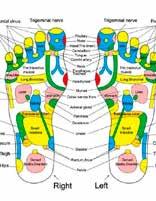
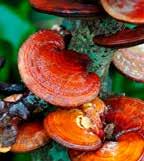

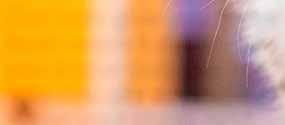
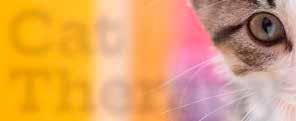
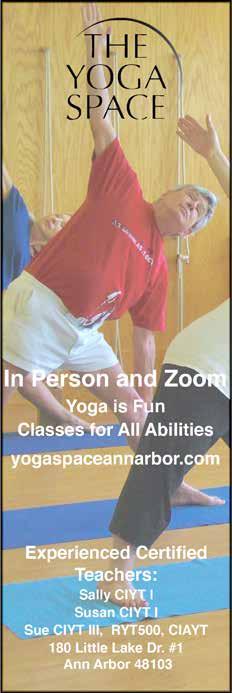


for the village, for a place of connection to my history, my ancestry, and my future in the weave of the world. I must attend to it, so it is not filled again with stolen idols and bloodied ceremony. I want to live with awareness and presence and not walk around with blinders on. What that looks like to me currently is to ask with sensitivity and awareness of the power I hold: Am I appreciating this practice from another culture? Am I appropriating this from another culture? Or is this practice a gift? Asking questions such as these isn’t new; environmentalists and spiritual teachers throughout the ages have asked us to look beyond the surface to what lies beneath in our thoughts, hearts, and actions. We need to look beyond solo selves and see each other, all the others we share the world with, human and nonhuman. As 2020 proved, we are all connected.
We never got a mezuzah on the door. Instead, a blue glass eye faces those entering. Common all-around Greece, these are thought to turn the evil eye and offer spiritual protection. My grandmothers would recognize it and know that they were home.

More information on cultural appropriation can be found here: nativegov.org/ cultural-appropriation-and-wellness-guide.

I invite you to get curious with me before you read the rest of this article. Look around the room and find an object that catches your eye. Study it closely. Look at where the shadows and light meet each other, and wonder at their points of engagement. Do you see areas that abruptly go from light to dark? Any areas that softly and gradually transition through more subtle lighting? Notice lines and curves, and how they reveal details about your chosen object. Can you tell which direction the light is coming from and how it affects the shadows being cast?
Now, imagine that the light falling on your object is extinguished, leaving you in complete darkness so that you can no longer see the item you were just studying. Without light, you wouldn’t know what you were looking at. Let’s try turning it around, and now imagine the light coming back. At some point it gets so bright that again you can’t see what’s in front of you. Isn’t it strange that somehow blinding light is as disorienting as impenetrable darkness?
What if we approach this exercise as an exploration in self-awareness? Look inside yourself and, just as you singled out the object in the room, identify a behavior or thought pattern that you might not like to admit exists. Be kind to yourself in this experience and try not to assign “good” or “bad” to your discovery. Acknowledge that undesired tendencies are naturally a part of each of us. Acclaimed 20th century Psychologist, Carl Jung refers to these hidden natural tendencies as “shadows,” and the accumulation of them as the “shadow self.”
For various reasons, the shadow self is hidden inside and often goes unshared with the world. Many of us have been taught to label behaviors and thoughts as either good or bad— light or dark. We realize quickly in life that we gain approval from parents, peers, and community by exhibiting the behaviors and thoughts that are deemed to be good and light. We avoid disapproval by suppressing what could be labeled as bad or dark.
This is unfortunate, because often our shadows hold information about our natural gifts. For example, a child whose parents are successful engineers may grow up hearing about how they should naturally be a great engineer, too. Their parents knowingly (and unknowingly) put pressure on them to follow their career path. But as the child grows up, even though they take classes to become like their parents, they do not enjoy learning about engineering. Instead, they are very creative and artistic. If they are discouraged from expressing their creativity, they may never realize their potential as a great artist.
Carl Jung explained that these tendencies and parts of ourselves don’t disappear just because we, or others around us, do not approve of them. In fact, there is usually an opposite result. As they find a place within us to be hidden, or shadowed, they may become darker—denser. In the above example, every time the young artist indulges in their artistic expression, feelings of shame and guilt grow around that activity. Rather than becoming a robust natural gift, it becomes a sickly and underdeveloped one.
Jung further explained that denying that our shadows exist can be harmful. It is a common source of unhealthy coping habits because it is based in self-deception.
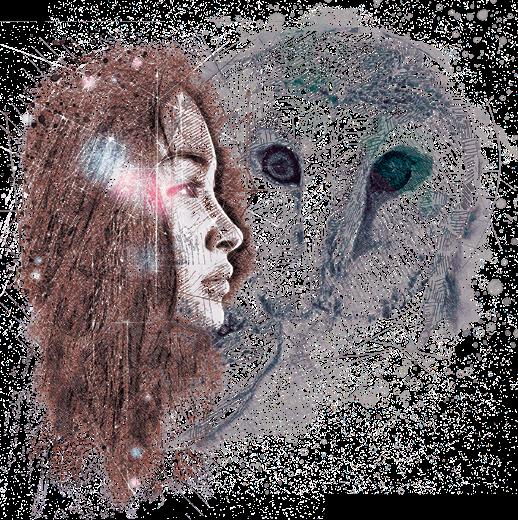
Failure to acknowledge one’s shadows allows them to mutate from being shadows that beautifully complement light, into darkness that chokes out light. With enough practice and time, one may eventually deny that their shadows exist, but this is an illusion that requires a lot of work to achieve and sustain.
If we go back to the idea of using light so bright that objects can’t be seen, just think of how much work and energy it would take to get to that level of blinding brightness. You would have to use more outlets and bring in more fixtures. And at some point, the energy company would collect payment for your energy usage. Can you afford the cost of living inauthentically? What extra effort and expense do we invest with the sole purpose of appearing brighter and pleasing to others?
Fortunately, when we become aware of our shadows, we have an opportunity to learn more about ourselves. Beginning with accepting ourselves as a pure and perfect creation. In case you have a hard time accepting your perfection, just think of newborn babies and their peaceful, radiating light. You too were born with absolute wholeness that radiated perfect light. Certainly, over time we all accumulate beliefs that overshadow that wonderful light. But a beautiful gift can be found in discovering that we have an ability to transform and find our way back to the pure love and light we had the day we were born.
Even when we know there is a purpose in the journey of transformation, shadow work is often a painful healing process. Challenging long-held beliefs requires intentional effort and an ability to trust the process and stay the course. In my own experience with illuminating personal shadow beliefs, I found therapy, yoga, journaling, self-help literature, and communicating with like-minded people to be especially helpful. These are compassionate tools that ease the pain of healing. They help us to find beauty in the complexity and texture that is more visible as we cast light on internal wounds and scars.
Balanced illumination creates a contrast that gives us accurate information. And just as visual contrast reveals optical clarity, internal contrast reveals emotional clarity. The balance can be tricky to achieve, but with practice we can integrate shadows and highlights in harmony.
Jung tells us that, “To confront a person with his shadow is to show him his own light. Once one has experienced a few times what it is like to stand judgingly between the opposites, one begins to understand what is meant by the self. Anyone who perceives his shadow and his light simultaneously sees himself from two sides and thus gets in the middle.”
This is such a powerful message because it means that to be aware of the shadow is the first step toward living as our most true and aligned self. In this awareness, we naturally integrate our dark and light in harmony and balance. As you embrace your authenticity, you become free to embrace your natural and whole self. Then you can care for, and cherish, every part of yourself in a way that was not possible before that awareness.
Now, I invite you to do one more activity with me, and that is to first acknowledge that your wholeness and perfection never left you as you grew up. You are, and have always been, divinely and intentionally created no matter what experiences and stories have darkened that knowing. Now imagine lighting a candle in your heart center. Feel its warm glow inside you. Put your hand on your heart and say to yourself “I love you. I will look inside with compassion so that I can see and know the whole you again.” Take as much time as you need to let these words find meaning for you. My friend, when you are ready to examine your shadows, let that warm candle light the way. I send my own love and light to help you illuminate and meet your truest self.
Failure to acknowledge one’s shadows allows them to mutate from being shadows that beautifully complement light, into darkness that chokes out light.

Knowing when (and who) to ask for help and how to have compassion for ourselves are crucial steps to our growth, wholeness, and happiness. When I was getting ready to have our second child two and half years later, I hired a post-partum doula to help me in the weeks following our son’s birth. I had learned from the past that I would need help with managing my own needs along with a toddler and newborn. I was so appreciative for the help our doula gave: cooking meals, doing laundry, letting me sleep or take a walk by myself. Gratefully, I had been able to learn what I would need and not judge myself negatively for needing it.



Knowing when (and who) to ask for help and how to have compassion for ourselves are crucial steps to our growth, wholeness, and happiness
As humans, we seem to universally value independence and a sense of control. When circumstances get intense, we may encounter a kind of identity crisis when we finally face that we need help. Being a good problem solver and feeling competent are qualities I highly value. When the circumstances in my life made me feel incompetent, and I was faced with problems I couldn’t see any solutions to, I felt stuck and in despair. What I’ve learned is it takes self-compassion but also grit and discipline to be able to get enough clarity to see the uncomfortable parts of one’s self and then find a solution. When we can identify with more than just a small, constricted feeling we’re having, we can see things in a more complete context. For example, the thought, “I’m totally exhausted, but I don’t have time to rest” can be seen next to the realization of how much time we spend worrying, replying to an email, or scrolling through social media. A deep breath and dose of self-compassion can illuminate the many pockets of time that could be used to feed your body’s needs.
It’s been said before, when we are in the vice grip of fearful and limited feelings, it helps to breathe. We need to have the discipline to come back to the breath, soften, and create a bit of space to widen our perspective. But, we need grit in this space, too, so we can see the uncomfortable parts of ourselves, show ourselves kindness and even humor, and act from this place. With meditation and other practices and a great partner, I’m still growing on my own and getting better at accepting the specific areas where I might need help and still feel grounded in a bigger sense of knowing who I am.
By Diane Babalas, DCThe weeks and months after my first child was born were some of the most difficult I have ever experienced. I was depleted from blood loss, and it felt like all the nutrients in my bones and muscles were being concentrated into the growing baby and breastmilk. For the first few days, my husband carried me down the stairs. He changed every diaper for the first month. However, the sleep deprivation, the intense emotional changes, and continual nutritional depletion converged to bring me to a point of stress in my system I was unprepared for and had little facility to manage. Adding to it, my beloved grandmother was very sick and dying. My parents and extended family lived in New England, and we didn’t have as much support as we needed here in Ann Arbor. Needless to say, the strain played out in many ways in my closest relationships. I remember one day my husband lovingly suggesting I think about getting some help and I frantically yelled back, “I don’t need any help!”
Why is it so hard to admit when we need help? Why is it even harder to ask for it? I learned from author and social work researcher, Brene Brown, that vulnerability is the thing we most want to see from others and the thing we least want to feel ourselves. Asking for help can bring up feelings of inadequacy, shame, or failure. As a chiropractor I have worked with many people over the years who have waited a very long time to ask for help with pain, physical disability, or an emotional burden. Without a doubt, it is easier to help someone resolve any situation as soon as they are aware of the problem, or imbalance, as opposed to months or years later. And yet, people have to be ready to receive help. Have you ever tried giving someone advice that they just weren’t ready to hear?
When we can identify with more than just a small, constricted feeling we’re having, we can see things in a more complete context.
My day-to-day experiences as a chiropractor have revealed that people sometimes view symptoms in their bodies as failures. I think it’s powerful to remember for ourselves, and to teach our children, that getting support for our bodies and minds is a normal and healthy thing to do. Something does not have to be broken beyond repair and horribly painful in order to benefit from healing expertise, compassion, and wisdom. Knowing that it’s normal to struggle with feeling vulnerable is in itself helpful. Counterintuitively, when we can own the knowledge that we need help, we can actually begin to feel more powerful and in control of the situation. Feeling heard and seen by another person is often potent medicine. In my chiropractic training, I was taught that the chiropractic adjustment is a two-way relationship. The person on the table is vulnerably bringing themselves. The doctor is receiving the person’s story both through his or her words and in the language of the tissues, fibers, and tones of the body itself. The chiropractor’s ability to deeply listen to the body and support it through touch allows the person on the table to access their own innate healing. I often say “thank you” during the adjustment process in my practice. This is because I know it is hard to lie there and be vulnerable, feel something uncomfortable, and still soften with it. I invite you right now to be vulnerable and soften inside. Thank you.
Diane Babalas, DC has been healing Ann Arborites since 2000. You can learn more about Diane Babalas on her website, Gatewaychiropracticbgi.com. Read the feature on Dr. Babalas in Issue #63 by visiting https://bit.ly/3AdWJm3. Her office is located at 210 Collingwood Road, Suite 100. Call (734) 239-6060 for an appointment.

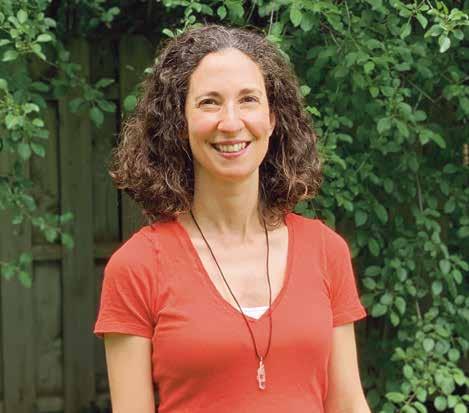




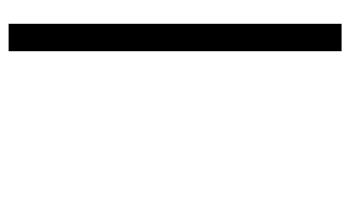

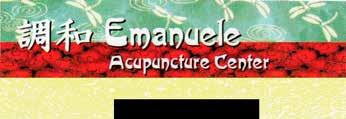









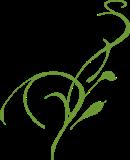


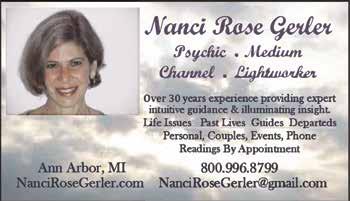







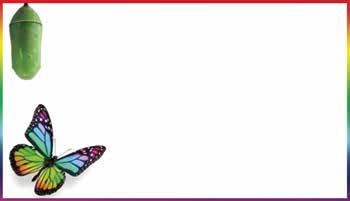






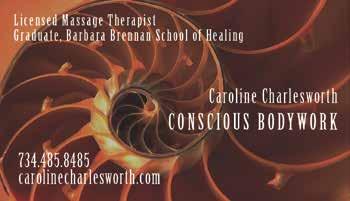



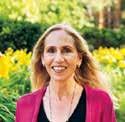
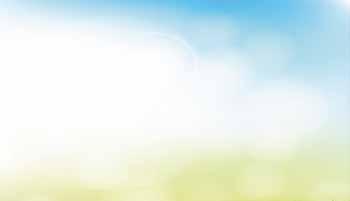


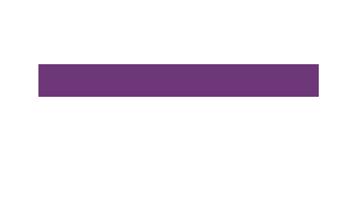

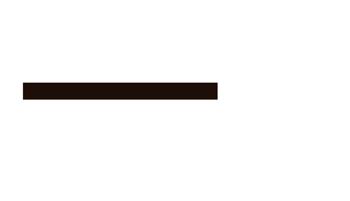

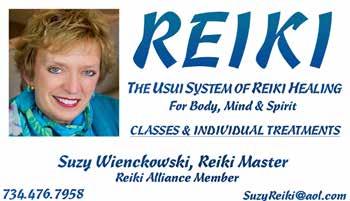

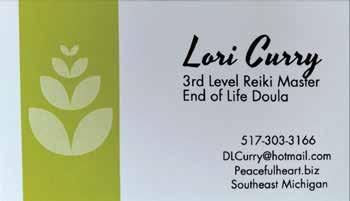

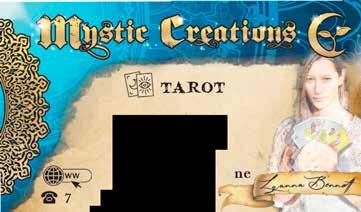







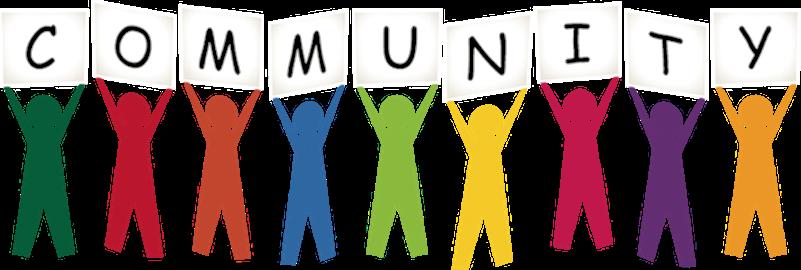
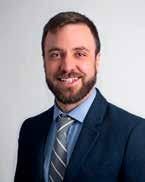

315 Eisenhower Parkway Suite 301 Ann Arbor, MI 48108
Phone: 734-944-7556
Fax: 734-661-1314 Toll-Free: 866-944-7556
For all of us, time marches on.
You may have been managing your finances sucessfully for many years. You still feel you can manage the funds, but would like some oversight to help you out as things change. You want someone who will listen, take good care of you, and not push you into the product of the day. Check with us to discuss how our services might help to reduce your stress at a very reasonable cost.
www.McLarenWealth.com


Energy
The two women blend energy medicine and prayer together, creating healing greater than either practice alone could achieve.
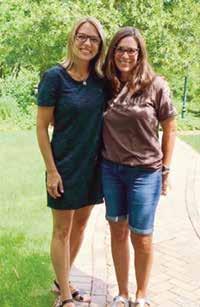
Groth is versed in Reiki, Emotional Freedom Technique (EFT or Tapping), and sound healing, while Lovell is an experienced educator, coach, and minister. In the fall of 2019, together in the room with a dying woman, they discovered how well their complimentary skills worked together to provide comfort and peace. They officially partnered in March of 2020 and have since worked with over 60 people, from teens to people at the end of their lives, to help them work through all sorts of challenges such as stress, anxiety, grief, trauma, chronic pain, and difficult emotions amid lifechanging medical diagnosis and other changes.
Wonder-twinning consists of energy medicine modalities combined with prayer and holding sacred space to assist people in healing. Each session is unique and depends on the needs of the individual, but might include Reiki, sound healing with tuning forks, talking, prayer, and a closing blessing. Lovell said that she is of Christian faith, but that she works with people of all beliefs or none, praying in a very general sense of the divine/universe/spirit, and holding people in a space of “basking in divine love.”
Timeline Mending goes a step further and is a process by which Lovell and Groth help clients look at their personal history and re-author—detach from the myths created over time that do not serve them any longer. This can include techniques they use in Wonder-twinning, in addition to Lovell leading clients in telling their life story while Groth journals. This then helps them use clinical EFT to work through the challenging memories and life events that may be blocking the client from moving forward and becoming their best self. “It is understanding life’s narrative and how traumatic events take a toll in one’s life emotionally, psychologically, spiritually, morally, and in their relationships with themselves, others, and God,” said Groth.
Lovell and Groth also offer joint services such as blessings and spiritual cleansing and clearings, they perform weddings and funerals, do guest speaking, and host mindbody-spirit retreats. Separately, Groth has her own energy medicine practice called I Am Well, and Lovell is a Pastor at Zion Lutheran Church. Both have donated much of their time and skills to the homeless population, which Zion includes in their mission to serve.
Danielle Groth and Vicky Lovell work out of an office located at 1785 West Stadium Boulevard, Suite 104A, Ann Arbor, MI 48103, which they share with Eleni Mitropoulos, ND and her practice: Luminary. Groth can be reached by phone at (734( 604-6938 or by email at danielle@iamwellreiki.com, and her website is iamwellreiki.com. Lovell can be reached at (734)276-6938 or vicky@victorialovell. com. Her website is angelwhispers.org.
The Covid-19 pandemic has forced a lot of evolution for businesses and practitioners since it began, bringing with it some unexpected positives. Andrea Kennedy of Mainstream Reiki has found her practice transformed in ways she could not have anticipated.
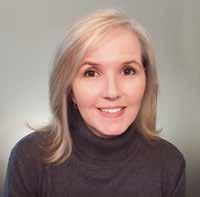

She has offered community Reiki sessions and classes in Saline since 2016, but the office and classroom she had used at a local nursing home were no longer available to her during the stayat-home orders. She decided to let go of the space, a difficult decision which she believes was nonetheless the right one. She invested in her online presence and further training, pivoting to teaching her classes online. She said she was “delighted at the unexpected benefits students enjoyed through the online format while still [receiving] high quality and complete training.” Not only did many of her existing students happily shift online, but she was able to serve many new clients who lived too far away to train with her in person—people from across the country as well as Great Britain, Australia, and Germany. The YouTube channel, Mainstream Reiki, which she created before the pandemic, has reached almost 20,000 subscribers and many students have found her through it. Kennedy’s mission has always been to make Reiki more “mainstream.” As someone with a degree in physics and a background in science, Kennedy refers to herself as “just a regular person.” She wants more people to understand that Reiki is “at its core not ‘new age-y’ or based on religion,” and “can be for anyone.”
Currently Kennedy is too busy teaching online to do individual healing, though she does offer mentoring to practitioners. As the pandemic eases, she said that she will
 Doug Gross, CFP® Financial Advisor Douglas.Gross@raymondjames.com
Sam Maness, CFP® Financial Advisor Sam.Paul.Maness@ raymondjames.com
Jason Coleman, CIMA® Financial Advisor Jason.Coleman@ raymondjames.com
Emily Rice Relationship Manager Emily.Rice@ raymondjames.com
Justin Rice Investment Specialist Justin.Rice@ raymondjames.com
Doug Gross, CFP® Financial Advisor Douglas.Gross@raymondjames.com
Sam Maness, CFP® Financial Advisor Sam.Paul.Maness@ raymondjames.com
Jason Coleman, CIMA® Financial Advisor Jason.Coleman@ raymondjames.com
Emily Rice Relationship Manager Emily.Rice@ raymondjames.com
Justin Rice Investment Specialist Justin.Rice@ raymondjames.com

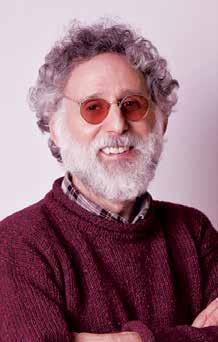
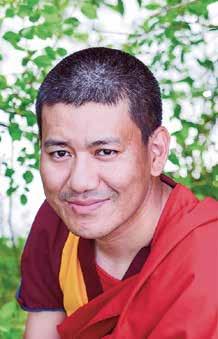
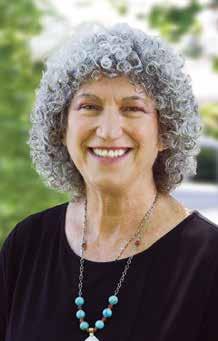



likely add some in-person teaching back into the schedule and may even travel to teach. In January, she started a podcast called “Beyond the Reiki Gateway,” which so far has reached over 5000 downloads. She recently completed Animal Reiki Master training and has added all levels of Animal Reiki classes to her offerings. She also has accepted an invitation to cohost the Reiki Rays Healing Summit, offered online in November. “While many practitioners and professionals have focused on getting their work back to being in person, my online experience has been so enjoyable and well-received [that] I will continue to expand Mainstream Reiki online for now with new ideas of in person offerings being considered for the future,” said Kennedy.
Mainstream Reiki’s website is mainstreamreiki.com. Andrea Kennedy can be reached via email at andrea@mainstreamreiki.com.
Ann Arbor psychotherapist and ordained interfaith minister Barbara McLeroy published her book Happiness: A Choice in December of 2020.

It is her first solo book as she co-authored You Are Not Alone: A Handbook for Hospice Caregiving in 1992, drawing from over 20 years of volunteering in hospice care. About the new book, she said, “We are all motivated by the desire to be happy. Not all of us realize how capable we are of achieving happiness.”
McLeroy was a facilitator of A Course in Miracles study groups for 25 years, and said that this, as well as what she has learned in her 28-year psychotherapy practice and other life experiences, has informed what she has written in Happiness. As an Interfaith minister, she said that a spiritual (not religious) perspective is present throughout. “We all have a belief system,” she said, whether we refer to “god, inner wisdom, or whatever.”
“I don’t have to be the be all end all of knowledge,” she said, “but I do believe there is a sustaining source we can call on for help.” She believes that connecting with that source to support our lives in whatever way works for each of us can help us reach the happiness we seek.
McLeroy said that her grown children and high school-aged grandchildren have all read and enjoyed the book, as well as several of her psychotherapy patients and others in her life. She said that people have told her that it helped them find a new way of looking at situations, by being open rather than resisting what they don’t know or understand at the moment. “My joy is helping people to realize how powerful they are,” she said, and “we always have a choice.”
More information is available at barbaramcleroy.com Happiness: A Choice is available at the Crazy Wisdom Bookstore. Barbara McLeroy can be reached through her website.
Detroit native and University of Michigan graduate LaDonna Davis published two books in 2020: New Moon Ascendant and Sprite: A Primer.

New Moon Ascendant is a fantasy novella, the author’s first, about a girl named Samantha navigating a world where a somewhat fragile peace exists between humans and trolls. When Samantha travels to the city of the trolls as part of an agreement meant to keep the peace, she discovers that she is part of a deeper story involving a moon goddess seeking to locate her replacement. As the story progresses, she develops a deeper understanding of herself and her connection to love.
Sprite is a nonfiction book about energy spirits called sprites, from the perspective of the author who is an engineer. Davis graduated from U-M with a bachelor’s degree in Aerospace Engineering and had a nearly 18-year career in the Air Force in testing and aircraft maintenance before leaving due to illness. She said that with this book, she wanted to “give people an opportunity to approach sprites with an intellectual eye,” as a phenomenon that is “observable, repeatable, and accessible.” She spoke of an energy system overlaying the earth, which is not something scientists have proven yet. But, she pointed out, “We can’t see air, but it’s here, and how long did it take for us to verify that oxygen existed?” She hopes to open the minds of some
skeptics through sharing both her personal experience with energy spirits and the research she has done. She said she has always been interested in metaphysics, which she emphasized is a branch of science, and she has had encounters with entities herself, which she has sought to understand and explain through her scientific point of view.
Both books are available through online retailers.
Learn more about LaDonna Davis on her website ladonnadavis.carbonmade.com. She can be reached at andshesawstars@gmail.com.
The Great Lakes Herb Faire, usually held in Chelsea, will be held online September 10-12, 2021, for the second year in a row.
Anna Fernandez, a founding organizer and one of about 14 people involved in putting on the faire, said that while she and others had hoped to gather in person again this year, there was too much uncertainty around Covid-19 to commit to doing so just yet. However, there are some upsides to an online event, she said. They were able to book several major speakers who, due to cost, probably wouldn’t have been able to host at an in-person faire. Tieraona Low Dog, MD will be the keynote speaker. She is an internationally recognized physician, author, educator, and thought leader in integrative medicine, and lives in New Mexico. Fernandez said that Low Dog would likely not travel all the way to Michigan for a live event, so the organizers are excited to be able to work with her virtually. David Winston is another big name; an internationally known lecturer, author, ethnobotanist, and herbal consultant to many doctors, based in Pennsylvania, and he will speak on pain relief in herbalism.
The Faire’s signature herb walk, in which an herbalist takes participants on a walk to find medicinal plants in their natural setting, will happen virtually with Jim McDonald, who will-pre-record his walk and be present virtually for comments and questions during the presentation.
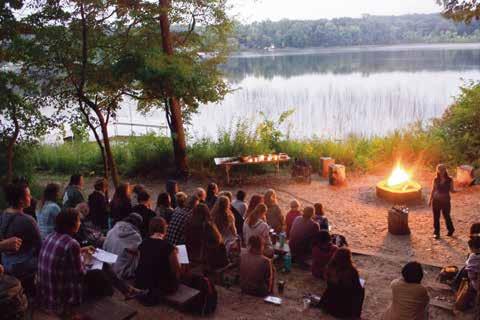
Fernandez said that sponsors helped make last year’s virtual event possible and are helping keep costs down for attendees this year as well. They include Mountain Rose Herbs, Learning Herbs, Bear Earth Herbals, Frontier Co-op, Castle Remedies, and others. The live event usually has a farmer’s market style vendor’s area, but this year there will be a virtual marketplace. Other events include a storyteller, live music, and different “tracks” of classes for attendees to choose from based on their interests and experience level with herbs. Fernandez said the live event usually sees about 350 attendees; at the time of this writing about 150 tickets have been purchased to the virtual event, but some of these may represent households of multiple people. She did say that the virtual format has not leant itself as well to their usual kids track, and she is very much looking forward to being able to offer more childoriented experiences at the in-person event next year.
More information about the Great Lakes Herb Faire is online at greatlakesherbfaire.org, and organizers can be reached through the contact form on the website.

Ann Arbor’s Deep Spring Center for Meditation and Spiritual Inquiry, like many organizations, expanded their reach via online teaching during the Covid-19 pandemic.
Deep Spring Center not only survived, but added to their offerings, and are now serving more people and offering more classes and training than ever before. Attendees at recent online retreats have included people from the Ann Arbor area as well as people from across the United States, Canada, Brazil, Spain, the Netherlands, Great Britain, Japan, and China. Board Member and Marketing Communications team leader Roann Altman said that the Center is pleased and excited about the greatly expanded sangha (community studying Buddhist teachings together).
The Center has completely revamped their website, which offers lots of information from their archives, their YouTube videos, and a brand-new blog.
Their new, greatly expanded program in meditation and spiritual inquiry is called the Eden Project (TEP). It is led by the Center’s founder and guiding teacher Barbara Brodsky, Aaron (a spirit channeled by Brodsky), and John Orr. There are four components: the Eden class, the Dharma Path class, Meditation class, and Mediumship class, plus and additional Eden Project workshop. The idea of the Eden project is that humanity can return to its original state, as in the Garden of Eden, by quieting our minds and tuning in to what we really know, which is that everything is interconnected. Said Altman, “We are not separate. We begin with the intention for the highest service to all beings; we include the self in that circle of love, but we do not separate the self.” She said that connection can be felt not just through formal meditation, but in things like hugging a tree and feeling one with it, connecting with people, connecting with our higher selves, and with others’ spiritual energy. “We come from Eden, we will return to Eden, and we recognize that we’ve never left Eden,” she said.
In addition, two long-time students of Brodsky’s are teaching new meditation classes. Robert Jacobs is teaching a class called Path to the Awakened Heart: The Yoga Sutras of Patanjali, and Celeste Zygmont is teaching Applying Vipassana in Daily Life and Seeing Its Progression Along the Path.
The Center will offer two fall retreats this year: a weeklong retreat from October 2-9, and a weekend retreat from November 12-14. Both will be offered online through Zoom, with options for full participation or as auditors, who may listen live or listen to the recordings later. Look for the full description of their classes in The Crazy Wisdom Community Journal calendar under the heading Meditation.
The Center’s longtime weekly schedule of classes and meetings has shifted somewhat as well, most notably Evenings with Aaron has moved from Tuesdays to Wednesdays after many years. Make sure to check the website for updated schedules.
The Deep Spring Center for Spiritual Inquiry and Meditation is online at deepspring. org and can be reached via email at om@deepspring.org.
Alison Kuchniki recently became certified to teach a course called Energy Care and Wellbeing through the Michigan Self Realization Sevalight Centre for Pure Meditation, Healing and Counselling.
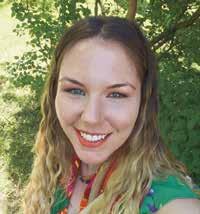
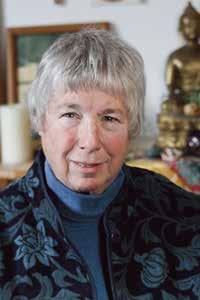
During the Covid-19 pandemic, she trained and taught students online, but she intends to offer both in-person and online training for individuals and groups in the future. The course, she said, is for anyone seeking more peace and tranquility in their life. It teaches the tools to help people “be more in command of their energy,” such as how and when to conserve energy at times when a full flow of energy is not needed. This, she explained, can help people “be more in command of themselves, prevent burnout, and cope with the natural ups and downs of life.” She said that it can also
help people deal with everyday triggers and return to a more peaceful state. She emphasized that the course and its concepts do not require religious or spiritual beliefs and can be used by anyone.
This is Kuchniki’s first teaching certification and a step on her path to eventually becoming a Pure Meditation teacher. She said that after recently completing her college degree, she asked herself, what was the best thing she could do for other people? She determined that teaching these skills was the answer. Kuchniki will be moving to the Sevalight Centre, located in a rural setting near East Lansing, as a livein volunteer and teacher. She explained that Pure Meditation is not about shutting out the world and meditating all day, but about including the practice as part of a full life. The Energy Care and Wellbeing Course, she said, is a great first or second step to “becoming your true self, mastering oneself, attaining peace, and gaining more love and joy in one’s life.”
The Michigan Self Realization Sevalight Centre for Pure Meditation, Healing & Counselling is located at 7187 Drumheller Road, Bath, MI 48808. More information about the Centre and its offerings is online at selfrealizationcentremichigan.org. Alison Kuchniki can be reached on the Centre’s phone at (517) 641-6201 or by email at alison.kuchniki@gmail.com.
Stardust, located in downtown Ypsilanti, was the brainchild of two Ypsilanti women.

Holly Shoenfield, graphic designer and visual artist, needed an office for her creative work, and Angel Vanas, Master Colorist and owner of Star Studio, especially known for her vivid color styles, needed more space for her salon. During the fall of 2020, the space next door to the salon at 224 ½ Michigan Avenue became vacant, and they decided to collaborate. They decided to not only fill their individual business needs, but to create a shop with the mission to “launch and support artists in Ypsilanti and the surrounding area,” and to “connect patrons of the arts with locals who make and sell their own art, crafts, and more.” The result was what Shoenfield calls a “galactic gift shop” with a variety of items including notecards, candles, stickers, magnets, art prints, woodcrafts, jewelry, t-shirts, suncatchers, lamps, keychains, and more.
The store works on a consignment basis. Artists can sell in the store and online at the store’s website, with the store serving as a contactless pickup point when desired. Some of the artists featured in the store started their businesses during the pandemic, while others have been established for a while. The store has fast become a part of the thriving creative community in downtown Ypsilanti and was especially busy during the Ypsilanti Pride celebrations.
Stardust is located at 224 ½ Michigan Avenue, Ypsilanti, MI 48197. The store’s website is stardustypsi.com and they can be contacted through a form on the site.
Rosina Newton has started her new business, New Earth Home and Garden, to offer her services as an organic gardening coach, landscape designer, and speaker.
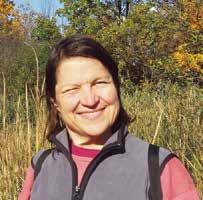
With over 35 years of experience and education in horticulture, she has a wealth of knowledge on gardening and plants. She started her business in January of 2020, and it has been slow going due to the pandemic, but she is now starting to see a stream of interest.
One unique offering is Newton’s “garden parties” in which a group of people can install an entire garden in one event. She put together her first garden party when she was living in Texas. A friend was retiring, and as a gift to him a group of his friends, led by Newton, put together a flower garden at his home in an afternoon. Newton designed the garden and helped and instructed the group in purchasing plants, digging, landscaping, putting in mulch and everything needed to make sure the plants would thrive. Now, she is available to help groups do this for themselves or for loved ones, at homes, businesses, and shared spaces. She said, “Butterfly and pollinator gardens, vegetable gardens, and woodland gardens are all within the realm of possibility.”



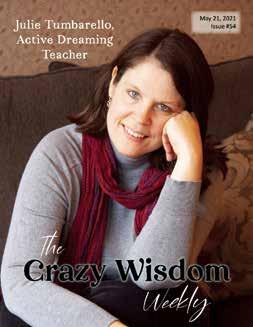


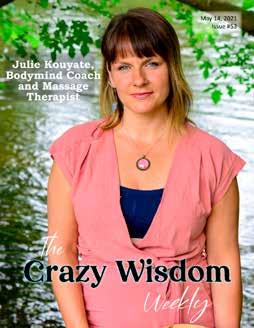
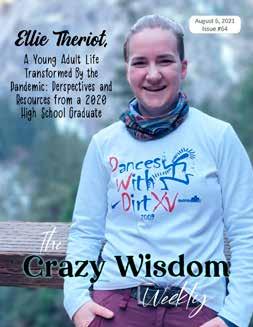
Born during the pandemic, The Crazy Wisdom Weekly seeks to represent the voices of our community in a timely and entertaining manner. Read the E-zine online by visiting crazywisdomjournal.com/crazy-wisdom-weekly. If you’d like the E-zine delivered directly to your inbox every Friday morning, click on “Sign Up Now.”

If you haven’t been reading
Newton is also available to speak to groups of all sizes and ages in schools, churches, businesses, or garden clubs, addressing topics such as Organic Gardens 101, Gardening Methods–Old and New, and All About Microbes. She will also coach individuals at all levels of experience on organic gardening.
Newton fell in love with nature and plants under the influence of her mother and grandmother, who filled her childhood in Houston with fruit trees, vegetables, houseplants, and flowers. She went on to earn a degree in horticulture from Texas A&M University. Since then, she has worked in a variety of positions and places all involved in creating, caring for, and educating people about gardens, parks, and urban forests. She settled in Michigan several years ago to be closer to her nowhusband.
The motto of New Earth Home and Garden is “Save our planet, one yard at a time!” Newton said that everyday citizens can have a major impact on reducing climate change by what they do, or don’t do, in their yards. Her goal is to empower people to experience the joy and healing power of nature, while also helping to heal our planet through gardening.
More information about New Earth Home and Garden is online at newearthhomeandgarden.com. Rosina Newton can be reached by email at rosina@ newearthhomeandgarden.com or by phone at (512) 638-3401.
Long time Ann Arbor resident and author Shaun Manning is opening a new bookstore, Booksweet, in August.
Booksweet is taking over now-closed Bookbound’s previous space in the Courtyard Shops in north Ann Arbor. A community open house was hosted on August 12 with a reading by poet Tarik Dobbs, live music, a debut of the shop’s window mural by local artist and U-M Stamps School of Arts and Design student Lauren McHale, and sweet treats by northside business Karma’s Kitchen.
Manning has worked with books for most of his adult life, including ten years at the University of Michigan Press, he said, and the idea of opening a bookstore has always appealed to him and to his wife, Truly Render. Bookbound was their local independent bookstore, and when Bookbound’s owners Peter and Megan Blackshear decided to move on to other things, Manning and Render saw an opportunity. He said that he wants the shop to be “a place to go and learn about books and discover something you might not otherwise have.” As the father of a 12-year-old, he wants families in the shop and will be stocking lots of middle grade level books. There will be some graphic novels, as this is an interest of his (and he has published several himself), but this will not be the main focus of the store. He said he wanted it to be a “cozy space,” where people can hang out. Day to day operations will, for the most part, be handled by Manning and one employee, who he is currently searching for. He is being selective because whomever he chooses will have a big influence on how the store evolves. He also emphasized that as a family business, his wife Truly and child Raymond enjoy helping out as well, though Truly also has a full-time job and Raymond has school to focus on.
Manning is a natural collaborator and has some interesting projects in the works for the store. The name, Booksweet, was a family decision. “We needed something that a) wasn’t taken and b) fit our ‘cozy’ vibe,” said Manning. The store’s logo, a diver plunging into a book, was designed and created by Katie Spak, a U-M Stamps alumna. Manning will be collaborating with the U-M Student Publications Office for a project focused on former Michigan Daily authors who have gone on to publish books (like Manning himself). Like many small bookstores, Booksweet will have a recommendation section. Recommendations will be from both staff and from customers, which Manning hopes will help community members feel like “part of the store.”
Booksweet is located at 1729 Plymouth Road, Ann Arbor, MI 48105. Their website is shopbooksweet.com, and Shaun Manning can be reached by email at shaun@shopbooksweet.com
Austeen Freeman opened Free to Be Yoga & Massage in Adrian on May 10 of this year.


Freeman graduated with a master’s degree in athletic training from Adrian College in 2019 and was working for Athletico as an athletic trainer, teaching yoga in her spare time, when the Covid-19 pandemic hit. She had long dreamed of becoming an entrepreneur and opening her own studio, and she said that the pandemic gave her the time to buckle down, get serious, and create her business plan. She signed the lease on her space on April 1st and proceeded to transform it bypainting, adding a wall, and replacing the flooring. She funded this with a “founding membership program,” in which about 10 people prepaid for yoga classes and some simply donated funds to help get her dream off the ground. Her husband was away serving in the military during this time, and she was focused completely on the studio. When she opened, she was the only
teacher, but by the next month she had hired several more and said that the studio has been more successful than she could have anticipated.
The studio now offers several types of yoga, including vinyasa, yin, gentle yoga (which Freeman calls tender yoga), glow-flow which Freeman described as a mix of slower flow yoga and tai chi, a mini strength band class, and a belly dance fitness class. Freeman is part of a belly dance troop and invited the two teachers to use the space and teach classes there as well, which has been very popular. She calls belly dance “freeing and empowering.” There are also four massage therapists specializing in different types of massage such as Swedish, therapeutic, and myofascial, including a woman Freeman called “The Shoulder Whisperer,” who specializes in shoulder pain and injury.
Freeman said future plans include adding meditation classes, more yoga classes, and other forms of movement. “Any movement can be yogic,” she said, by focusing and connecting to the body. She said that the health of the physical body helps provide a good foundation for mental health and all other aspects of life. She also stated, “We believe intentional movement is for everyone, no matter what ‘level’ you are. All are welcome.”
The studio offers student and military discounts. Classes use online registration. For more information and to register for classes, visit freetobeyogamassage.com. Free to Be Yoga & Massage is located at 1042 Sutton Road Suite 2C Adrian, MI 49221. Austeen Freeman can be reached at empowerment@freetobeyogamassage.com
Eleanor’s Sweets & Sodas opened in downtown Saline at the end of March 2021.
The store carries a wide variety of modern and old-fashioned candies, as well as over 50 flavors of sodas and snow cones. It is a destination for families, where sales tax is included in the prices to make it easier for kids to make a budget and make their own purchases using their own money. This helps the children learn about money, practice problem-solving, and gain confidence. It also reduces arguments with parents about what to buy, since the kids are making their own decisions on what to spend their set amount of money on. Owner Karen Tadd said that she and her husband Andrew are passionate about helping their own children become “selfsufficient citizens,” and that this aspect of the store grew out of their desire to help other families do the same.
Karen said that both she and Andrew have engineering backgrounds, but that she found herself tired of corporate life. She quit her job last year and spent the summer with her family (the “Tadd Summer of Fun”) during which they brainstormed about what was next for her. The store is named for their 12-year-old daughter Eleanor, who helps out in the store, and takes great pride in her namesake. Karen explained that what she enjoys most in her work is building great teams, and the store was one way to do that and to create a great workplace for the team to thrive. The employees at Eleanor’s are teens and each bring their own unique talents to the job–one of them even makes balloon animals for the kids. All of them are very supportive and welcoming to the children that frequent the store, Karen said.
The store has a suggestion board and Karen does her best to get in new candies for people to try each month. Andrew said it has been a learning curve as they stocked the store with what looked good to them and are learning what people actually purchase, and what they don’t. He said it’s very gratifying to watch people get excited about the store’s offerings. The collection of syrups to flavor the sodas and snow cones is large and has some unusual flavors. He mentioned that one customer was overjoyed to discover that they had violet syrup; others include lavender, basil, rose, cotton candy, cookie butter, cucumber, lime habanero, mojito, maple pancake, and toasted marshmallow, as well as the more commonplace black cherry, lemon, vanilla, and chocolate.
Eleanor’s Sweets & Sodas is located at 108 South Ann Arbor Street, Saline, MI 48176. They can be reached by phone at (734) 470-6323 or by email at manager@ eleanorssweets.com. Their website is eleanorssweets.com.

Submit your listing for the January through April 2022 issue.
Please note that the “What’s New in the Community” column is part of the editorial (not paid-for-advertising) part of the CW Journal, and the editors may or may not include what you submit. Whether the editors include material or not will depend on space considerations, as well as other editorial issues, such as the need for high resolution jpgs and the overall mix of stories included in the “What’s New in the Community” column in a given issue. If you would like to submit information to be considered for this column, please email communitynews@crazywisdom.net, or drop off or mail information to the store: What’s New in the Community, 114 South Main, Ann Arbor, MI, 48104. The firm deadline for submissions for the next issue (January through April 2022) is November 1, 2021.


 By Dori Durbin
By Dori Durbin
Undeniably, Covid 19 left a tidal wave-sized dent on the world. The pandemic greatly affected our daily lives, but some effects we are still discovering. This begs the question: Twenty years from now, what will you remember about your quarantine experience? Among my memories of more family time, higher frustration levels, Zoom visits, masks, off-brand groceries, and less toilet paper will be the sheer exuberance of our cats. Yes, I wrote exuberance. The cats were ecstatic: their human servants were home all day.
For non-pet owners this pandemic memory might seem trivial, but for pet owners their memories may be imprinted furever and, if they are willing to admit this publicly—their Covid cats may have permanently altered household routines. Without cats, we would have only been addicted to Netflix, Amazon packages, and waiting for the next official state order. Looking back, we can now reflect on how much our cats benefitted from our Covid lives.
During the pandemic, quarantiners with cats may have experienced life improvements:

Humans could not hide from the whims of their cats. Those furry felines could directly connect to the source of their every need. Hungry? “Human feed me.” Food too hard? “Human add water.” Pillow occupied? “Human meow-ve over.” There were no maybes, no laters, just nows... and the cats loved it. As humans, we were much more accountable under our cat’s supervision.
With limited in-person contact, humans and cats bonded even more. Cats may have learned to speak “human” more efficiently, but humans learned quickly to communicate in catisms. Humans became better at sharing things. This included sharing mealtimes (and often meals) with their cats. Humans were also forced to share their favorite comfy chairs, warm beds, or other lounging areas with their furred pals. Where once fur was a light and easily removable layer, it became an almost plastic coating. As a matter of fact, moments without a lap cat were few and far between. Cats and laps were like kindergarten art and a fridge—stuck for life.
Humans couldn’t be bored with a Covid cat. But could a human focus with a Covid cat? It was our cat’s unspoken, almost machine-like mission to cause “spontaneous distractions.” These were moments when a cat appeared literally out of thin air. If cats found our workspaces over-crowded, they initiated “clutter deletion.” All unessential objects became cat ninja targets until the open space was cat-sized
and cat-occupied. Screen time was handled by police-like cats. Humans blearyeyed? Police-cat patrolled in front of the screen... and stayed posted. Human, were you trying to write something down? That’s too bad... your pen was repurposed as a cat toothbrush. Zoom meeting going too long? The cat shifted into a squawking “food now” mode. By the way, to cats “Zoom” refers to cat speed and agility training across human workspaces and keyboards. Now you know, just in case there is a next time....
Speaking of next time...humans and cats were less frequently at odds with each other. In fact, humans and cats were often scheming together. However, there are some lingering effects of the Covid cat-human connection. For starters, the chronic overconsumption of favorite foods resulted in weight gain for both species. Humans often had visibly unfocused attention spans—a direct result of spontaneous cat distraction. Lap catting had a direct influence on human’s poor, slouched posture... and finally there is the time warp: a human’s lost sense of time due to a cat’s demand for excessive attention. Despite these minor nuisances, the Covid cat-human connection was undoubtedly an overwhelming benefit to both humans and cats.
In the end, humans benefitted from having cats during the pandemic. We gained an increased sense of accountability, expanded relationship skills, weathered through spontaneous distraction and cat co-conspirator outcomes—all of which make us more well-rounded people and pet owners. But, what about the cats? What would they say about the Covid 19 pandemic? Perhaps it would be something like this:
• Pandemics are purr-fectly fine.
• Don’t baby talk me… I can speak human, human.
• Next pandemic, please place Amazon cat food orders earlier.
• Quarantine? Let’s do it again!
Dori Durbin grew up in Adrian, Michigan. After earning a BA in English and a secondary teaching certification, Durbin taught middle and high school English and Science classes for ten years. She is the author of two picture books, Little Cat Needs Space and Little Cat Feels Left Out. You can learn more about her on her website doridurbin.com.
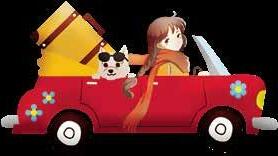

If you pay attention to the local music scene, you may already be familiar with the monster-themed band Fangs and Twang, the perfect soundtrack for the upcoming Halloween season. Joe Bertoletti (bass, vocals) is originally from Chicago, Billy LaLonde (drums, vocals) is from Bay City, and Andy Benes (guitar, vocals) is from Adrian, but they have all been living in Ypsilanti for the past 15 to 20 years. Fangs and Twang released their first album in 2015. The guys “are frequently joined by Loren Kranz on keys and Colin Murphy on fiddle and you will hear these guys featured on our albums as well.”
Benes shared with me, “The three of us were part of another local band and have been friends for a while. Fangs and Twang started as a joke, goofing on the idea of a country western vampire and throwing funny lyrics around this theme. From there we just expanded the ‘combine a monster with a country music trope’ concept, and seven years later, we’re still making bad jokes.” The name Fangs and Twang is literal.
To give you an idea of their repertoire, their 2016 Valentine’s Day single “Loveless in Loch Ness” is sung from the perspective of the Loch Ness monster. The first track of their album High Fives All Around (2017) is entitled “Frankenstein,” and a track from their Spirits & Chasers (2019) album is called “The Ballad of the Legend of the Saga of Swamp Thing.”
When I asked, “Why monsters?” Benes answered, “The nice thing about having a theme is it’s easy to find inspiration from whatever monster or local cryptid we come across. For example, a new tune we’re working on features the ‘Pope Lick Monster’ from Kentucky who has been known to lure its victims onto a train track to be struck by an oncoming train.”
Their approach to songwriting is democratic. “We usually start with a riff or a chord progression and will jam on that in our practice space to flesh it out and create a few parts. We share vocal and lyric writing duties so whoever feels inspired to add lyrics can do so.”
The trio likes to jam, but they also enjoy spending time together. “The three of us are close friends and having this outlet, especially over the last year, has been really helpful for me personally to blow off some steam and lose myself in music for a while. We keep it light-hearted most of the time with our music, but 2020 inspired us to write the song ‘You Monster’ that gets a little more metaphysical with our usual monster theme.” (These new songs will be recorded later this year for their fourth album.)
Find Fangs and Twang online at fangsandtwang.com. Their music is available on Bandcamp, Spotify, iTunes, and more. Benes’s YouTube channel features live videos of the band at youtube.com/user/apbenes.
When the pandemic hit in March of 2020 and much of Michigan closed down, many of us were feeling down and uncertain. Ann Arborites Dion “DJ 50one50” Pittman and Ed Williams decided to do something about it. “[We] had to start promoting positivity,” said Pittman. “A mentality we all realized we (our friends) had coming from a big 10 college campus, with some very creative schools, like Community High School, around it. We were taught to judge a man on his character, not his color in Ann Arbor.” Williams added, “We wanted to rekindle the A2 vibes of my youth: counter culture, multiculturalism, knowledge, wisdom, and understanding. The Ann Arbor Mentality Podcast is what we believe to be a multicultural education and understanding.”
“So, it’s a concept band and we’ve stayed pretty close to that original idea,” said Benes. “The music has a country rock feel, but over the years we’ve swayed more towards blues-based rock and stretching the songs out a bit.”
To give you an idea of their repertoire, their 2016 Valentine’s Day single “Loveless in Loch Ness” is sung from the perspective of the Loch Ness monster.



#AAMP is all about sharing people’s stories. “We believe everyone’s story is important,” said Williams. Pittman shared that he’s “inspired by really cool conversations” and “Ann Arbor has some really interesting people!” (This is something I have found myself in writing this column.)
How did they get started? Answered Pittman, “To get people on the show we started with our direct connections. We reached out to our former teachers, friends, and business owners whose establishments we liked. After having some really great conversations, people started recommending other people to come on to the show. It’s been a great vibe!”
Williams’ favorite part of the show is recording. “Our guests will usually speak over a phone. Some we know, some we don’t. By the end it feels like we are friends,” he said. Pittman enthused, “It’s really just digging deep into the person we’re talking to. Get a great understanding of what they’ve been through and how Ann Arbor has shaped them as a citizen. My favorite part of podcasting is finding out amazing
information on our city or on the person we’re talking to. The stories just blow me away!”

Episodes include topics such as “Space, Protest, Riots, and Rebellions” (episode 2), “Watching scary movies in Ann Arbor” (episode 17), and “Conversation with Commie High Documentary Creator Donald Harrison” (episode 22). I particularly liked episode 31, “The very well-spoken Racheal DeWoskin.” I met DeWoskin, an Ann Arbor native, several years ago while she was in her hometown promoting her book Blind

#AAMP is an unabashed love letter to, and celebration of, everything Ann Arbor.
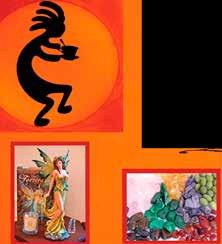


#AAMP is an unabashed love letter to, and celebration of, everything Ann Arbor. Those who grew up in the city can reminisce along with the hosts, and those who are new to the area can learn quite a lot about Ann Arbor’s past and current vibe. There is a place for everyone in the conversation.
#AAMP Ann Arbor Mentality Podcast can be found on all major streaming platforms, including Apple Podcasts, Spotify, and Google Podcasts. Find them online at facebook.com/Ann-Arbor-Mentality-Podcast-780521981999357.


Local artist Lavinia Hanachiuc moved to Ann Arbor ten years ago. “I was born in Romania, in a region called Transylvania,” she told me, “and I immigrated to the United States right after college.” She had always wanted to see the world, and she was drawn to Ann Arbor for its vibrant art scene.
Hanachiuc is a talented printmaker and photographer, but it was her distinctive ceramics that first caught my attention. (Halloween is my favorite holiday, so Hanachiuc’s white porcelain sculpture “Vampire child/ghost” currently has my eye.) She told me, “I started working with clay in high school, and my major in college was ceramic sculpture. Later, I learned how to work on the wheel from Charlie Blosser, a pottery teacher in Royal Oak, who was very generous with his knowledge.” She describes her style as experimental. “I work in small unique batches and switch when I’m interested in a new technique, material, or color.”
When I asked for more details on her process, she answered, “My clay work and my illustrations are always connected so if I work in printmaking, I’ll also have black and white ceramics going; if I’m painting, I would have very colorful plates. I’m inspired by world legends, and I have my own universe of characters that create their own stories. I like to think of my work as illustrated clay.”
Working with different mediums as she does, I had to wonder what her favorite thing to craft was. She said, “I don’t have a favorite material, but as a rule every new material that presents a challenge is my favorite. I like to explore a path until another one shows up. I have work in printmaking, photography, clay, painting, theatre, and installations. In the past decade one of my favorite times was designing and making papier mâché sculptures with Lloyd Hall Scholars at U-M.”
A number of her pieces can be found at her Etsy shop called Alma Pottery. About the shop, she said, “I started my Etsy shop...shortly after having my daughter when I had less time to make big pieces, and I concentrated on small works. Alma means soul.” Some of the popular items that customers raved about in the reviews are mugs and bowls, but you can also find small sculptures, jars, vases, prints, and more.
Lavinia Hanachiuc can be found online at laviniahanachiuc. com and on instagram @hana.qk, which includes pictures of works in progress. Alma Pottery is at almapottery.etsy.com. She can be contacted through Instagram or at almapottery@ gmail.com.

This column is a look at two brave souls who took a leap of faith to open their own business. What follows is a personal profile of Josh and Jen Maxam who are following their dreams and thriving despite the odds—and Covid.

19 East Cross St.
Ypsilanti, MI 48197
Tuesday 12 p.m. – 7 p.m., Wednesday – Friday from 10 a.m. – 5 p.m., Saturday morning from 9 a.m. – 12 p.m. thriftdepot.com (734) 516-1405
One of the first things you may notice when you walk into TTD is the long shelf in front of the cash register. On it are food items, home care products, and personal hygiene kits put together by the owner, Josh Maxam, and his family of five. Also visible is a sign that reads “FREE ESSENTIALS. Please take a care kit or food item if you’re in need.”
During my visit, I asked Maxam about the shelf. He explained that TTD partners with several non-profit programs to circulate donations that are brought in. Organizations such as A Brighter Way, Our House, Ypsilanti Community Schools, and many others send individuals to the store to do carefree, supplemented shopping. Maxam notes that, “There are more people experiencing financial need due to the pandemic. We have been grateful to be able to help these people with our voucher system and free essentials table.” A full list of partners working with TTD is available on their website.
Whether someone experiences hardship due to Covid, employment loss, natural disaster, health crisis, or any number of reasons, Maxam is glad he can be there for his community members. He tells me one of his favorite things about working at the store is seeing people relaxed and shopping, and realizing his store gives someone a spark of relief during difficult times.
As I continue looking around the store, I pick up a nice pair of name brand shoes and rifle through boxes of vintage records. As you might expect from a thrift store, there are rows and rows of clothing and household goods in great condition. What you might not expect is the modern vibe of TTD. The architecture is undoubtedly Depot Town chic with its exposed brick, large archway, and stained-glass windows.

It’s clear why the demographic of TTD is broad. The store offers a variety of goods. In addition to those seeking basic essentials, shoppers include college students searching for the perfect fashion statement piece as well as families with young kids who outgrow toys and clothes quickly. As I selected a group of glass vases for my plants and a sturdy note board for my entryway, I looked twice at the price tags to make sure I was reading them right. The note board still had its name brand and original price tag attached, letting me know I saved $36 by purchasing it lightly used. So, yes, it’s clear that TTD is also for people like me who are always on the lookout for a steal on home decor.
The price of items is consistently low, even for a thrift store, reenforcing what I’ve already gathered from my visit and interview with Maxam. There is a balance Maxam tries to strike between funds coming in to meet the needs of the store and his family, and as much as possible going back out to the community. He describes this balance by saying, “I did not just want to have a job that provided for my family financially, but also helped others. When opening The Thrift Depot, I wanted to have a place for people to buy the things they need at reasonable prices. I also wanted to help those in need, especially those experiencing hardship, to receive items for free.”
Let’s talk about the word “thrift” for a minute. For most people it simply implies spending less and saving more. But being thrifty is about more than fiscal responsibility. The definition of thrift tells us that it all comes down to not being wasteful with resources. That describes the business model of a thrift store in a nutshell. People bring usable everyday items that they no longer want, and the store puts them in the hands of people that can use them. This translates to a win for finances and a win for the environment. If you shop at, and/or donate to, The Thrift Depot (TTD) in Ypsilanti, it’s also a big win for the community.
So how does it all work? Maxam first explained that due to space restrictions, the store accepts everything but large furniture. So mostly he finds at the donation window a myriad of clothing and everyday items generously left by those who no longer need them. As you can imagine, there is a lot of processing to do in this business. Items that are unusable are recycled.
What tips does Maxam have for those wanting to donate? “As a rule, only donate items that you would feel comfortable giving to a friend or neighbor. If the condition is too poor to share with a friend, a community member in need may not want the item as well.”
TTD partners with several non-profit programs to circulate donations that are brought in.
The definition of thrift tells us that it all comes down to not being wasteful with resources.
Successfully creating and keeping a clean, organized thrift shop takes a lot of helping hands. Oftentimes family members help out with moving, sorting, and placing products. It’s an extra treat when Josh’s wife Jen, and their three young kids, can be with him at the store on weekends. He admits the 3-year-old, 2-year-old, and 11-month-old mostly help with testing products in the toy section of the store.
How was Maxam able to fill the shelves and racks during the pandemic, considering the store depends entirely on donations? With so many Michigan households sitting with the uncertainty of their financial stability, I was surprised and relieved to hear that TTD saw an increase in donations.



Maxam says there’s a simple reason the store made it through Michigan’s order to stay home to help stop the spread of Covid. “Because of all the extra time that people have had at home due to Covid, many people had time to declutter their homes. Many thrift stores were experiencing a surplus of donations at the time that we opened. Thankfully, we were able to fully stock the store within a couple weeks with very generous donations from the community when we opened in September.” That’s something that is not lost on Maxam. He adds, “We are so grateful for the generosity of the community during these last few months.”
Now, as shoppers and diners venture back into Depot Town’s iconic strip of Cross Street, Maxam hopes more people will stumble upon The Thrift Depot. I hope so too, so that another wonderful business can continue to contribute to the great Ypsilanti community. If you are eager to support The Thrift Depot and its partners, Josh suggests “One of the biggest ways you can support us is to not only donate, but also to shop and tell your friends.”
###

The note board still had its name brand and original price tag attached, letting me know I saved $36 by purchasing it lightly used.
There is a balance Maxam tries to strike between funds coming in to meet the needs of the store and his family, and as much as possible going back out to the community.

 By Madeline Strong Diehl
By Madeline Strong Diehl
Many people believe they can maintain a spiritual connection with a loved one even after that person dies. Ann Arbor resident Layla Ananda says that’s true for her, too—though two of the most important people in her life were complete strangers whom she never met. Ananda started to lose her eyesight at the age of twenty-nine, but thanks to two corneal donors and a pair of contact lenses, she now enjoys 20-20 sight.
“It’s a miracle!” she said during an interview at her home. “I cannot say enough about how profoundly grateful I am that two strangers and their families chose to donate a part of their bodies to me as they passed from this earth. I am grateful every day for their gift.”
Ananda says that receiving two corneal donations is just one of a series of “miracles” and “gifts” that have made it possible for her to continue to see the faces of her loved ones and the beauty of nature around her. On a more practical level, she says she feels fortunate that an optometrist discovered her condition—keratoconus—during a routine eye exam. She’s also lucky that it was caught early and progressed very slowly.
Her list of miracles and gifts goes on from there: she’s acutely aware that, if she were living in almost any other country, donated corneas can be rare, and she may have never received one. (Ananda received her corneal transplants from Eversight, an Ann Arbor-based nonprofit organization that serves as the eye bank for the state of Michigan and coordinates all eye tissue donations and transplants.) And just by chance, after she moved to Ann Arbor in 1979, she lived where there was a world-class clinic—the Kellogg Eye Center—that could offer her care. Along with that gift came Dr. Shahzad Ihsan Mian, MD; a U-M professor and world expert on keratoconus—a rare disease that causes the cornea to thin and bulge, resulting in scar tissue that blocks vision. Ananda has had two corneal transplant surgeries, and Dr. Mian was able to perform both of them. “It’s amazing how he can make these tiny little stitches on the eye by hand to attach a cornea,” explained Ananda. Her first surgery took place in 2003 and the other in 2014.
Thing Corale, the Threshhold Choir, and the Outloud Chorus. “Singing is a way to bring spirit into day-to-day life,” she explained.
Ananda has a very eclectic background. She earned her master’s degree in Clinical and Humanistic Psychology through the Human Center for Humanistic Studies (now called the Michigan School of Psychology), and she worked as a therapist for a decade during the 1980s. She also was ordained as a priest through the Sanctuary of the Beloved in upstate New York, and has gathered wisdom and knowledge from many different spiritual traditions. Though she never met him, she calls Maharajji her “spiritual guru” (also known as Neem Karoli Baba, or simply “Baba”). She says she became familiar with his teachings through the writings of Ram Dass. “Baba had no dogma,” said Ananda. “He taught that we should love others and dedicate ourselves to a life of service.”
She will always feel profoundly connected to the two strangers who gave her the gift of sight, though she was never able to meet them.
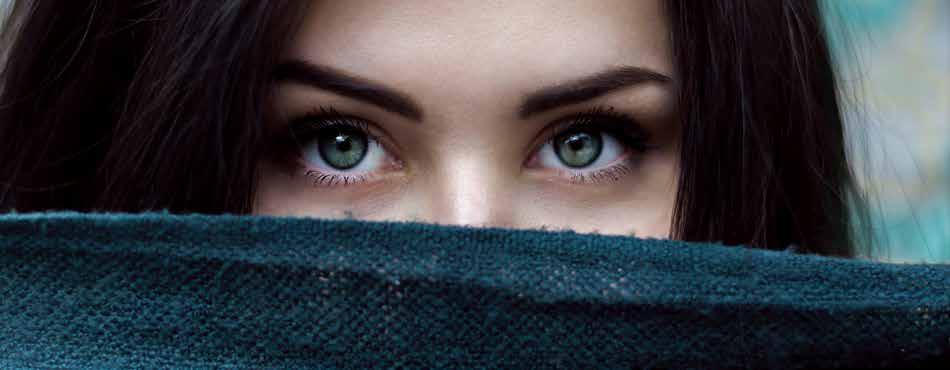
Ananda was raised Jewish, and “Layla Ananda” is the spiritual name that she chose for herself during her forties. “Layla” comes from lila, a Sanskrit word meaning the dance or play of life. In Hinduism and Buddhism, Ananda means “bliss.” As the founder of a business called Deep Peace Consulting, Ananda offers coaching, workshops, ceremonies, and music. When I asked her if she was a spiritual teacher or a healer, she quickly demured. “I am more a student of spirit rather than a teacher. I enjoy talking with spiritual people about ideas and beliefs.” She has led many life enrichment workshops and classes, but when I asked her what she wants to do in the future, she smiled ruefully and said, “I have been trying to retire for a while now.”
She said she has been working toward racial and social equality since her twenties, and she’s keenly aware that she might have gone blind by now if she hadn’t had medical insurance to cover the cost of both corneal transplants. “We all deserve to have the excellent health care I received, and for it to be available and affordable for everyone, along with food, clothing, housing, jobs, and community support,” said Ananda. “We all deserve to be treated with honor, respect, and kindness. I hope I can use the gift of sight I have been given to help this become so.”
Layla Ananda is a petite, graceful woman with short-cropped white hair and hazel eyes that change colors, from blue to grey to brown and green, depending on the light. She moved to Ann Arbor to take a job with North American Students of Cooperation (NASCO), a federation of housing cooperatives established in 1968. She earned her B.A. in contemporary musicology from Michigan State University and met her husband while they were both living in co-ops and performing folk music in East Lansing. She adds that music is still very important in her life. She plays the guitar and dulcimer and sings as part of numerous groups, including Our Own
Meanwhile, she says she will always feel profoundly connected to the two strangers who gave her the gift of sight, though she was never able to meet them. “I think most of us take our vision for granted,” she said. “I can slip into that, too. But I frequently remember, and am so very grateful, that I can see the sky and the trees and flowers and water; that I can read a book; that I can work on my computer; that I can see my friends and family; that I have been able to visually connect with people on Zoom during the past year. Vision is a miracle that I give thanks for every day.”
Headquartered in Ann Arbor, Eversight is a 501(c)3 nonprofit organization and a community-based eye bank network that serves as the world’s second-largest nonprofit eye bank. Eversight’s mission is to restore sight and prevent blindness through the healing power of eye donation, corneal transplantation and vision research. Operating in Connecticut, Illinois, Michigan, New Jersey, Ohio, and South Korea, Eversight works in collaboration with surgeons, researchers, academic medical centers, and eye banks across the United States and abroad.
Through an extensive and successful donation and transplant program, Eversight works with the families of cornea donors to facilitate donation and prepares corneal, scleral, and whole-eye tissues for safe medical transplant and research that enables surgeons and scientists around the world to restore sight and independence to patients.
Every day our dedicated team works with donor families at the time of death, screens donors with hospital personnel and obtains authorization from families to initiate the donation process. In the field, we perform surgical removal of the eye tissues within a short interval from the time of death. Once the tissue is in the lab, microscopic evaluations are completed and a donor eligibility determination is made to ensure the tissue is safe for transplantation or suitable for research.
Eversight provides services beyond traditional eye banking. In addition to recovering, evaluating, and providing donated eye tissue for sightrestoring transplants and supporting donation education, the eye bank advances research into the causes and cures of blinding eye conditions and provides humanitarian aid to people around the world in need of corneal transplantation. Eversight is increasingly recognized for:

Innovative surgical products that enable surgeons to improve corneal transplant techniques and patient outcomes.
An expanding research portfolio based at the Eversight Center for Vision and Eye Banking Research in Cleveland.


Our work with international medical communities to build capacity and develop eye banking solutions in countries where the need for sight restoration is critical.
Eversight is a thriving organization delivering exceptional service. It boasts a mission-focused, hard-working team that is energized and engaged by the purposeful work undertaken daily. The company values of service, drive, and trust guide Eversight every day, in every way. Together, with its many partners in sight restoration, Eversight works to make vision a reality for people in need. Join Eversight’s

 Edited By Diane Majeske • Photography by Susan Ayer
Edited By Diane Majeske • Photography by Susan Ayer
Crazy Wisdom Journal asked a number of leaders in southeastern Michigan’s conscious living community to reflect upon times in their lives that they’ve left their comfort zones to venture out in new ways. In the distant past or much more recently, we asked, what did you do, what inspired you, did it change you, inside or outside, big or little? Did you attend a new class, take an adventurous trip, go skydiving, stretch beyond a long entrenched boundary, start a new relationship or end an old one, take a leap, retire, join the Peace Corps, go on a night trek in the wilderness, or just do something way out of your ordinary?
My greatest transformations in my life have always begun when I have stepped outside of my comfort zone—when I have pushed beyond the place of mental limitations and/or resistance and fear.
Leaving my comfort zone has always felt like jumping into a big black abyss where everything is unknown… where my mind races with negative thoughts about what may lurk beneath the surface. Rather than see these moments as infinite possibilities, unfortunately, I tend to immediately jump into a place of fear.
For most of us, this past year has brought great uncertainty. 2020 raised great fears, not only about our very survival, but how we would weather the storm of stressful political times in a pandemic where uncertaintyas well as great loss of human life surrounded us. At the same time, living with two seventeen-year-olds in quarantine as they navigated their lives remotely, also gave me perspective on what truly mattered in life and what living a life of purpose meant—understanding what life should feel like, tapping into my inner calling, trusting myself and forgetting what others think, feeling the fear but taking the first step anyway, doing a daily check in, and recognizing that I have everything I need and giving gratitude for that.
the car, playing music, and seeing each drive as a journey of limited duration. Due to that first step, I am now comfortable driving throughout the state for hours to represent my clients.
Starting my law firm and my social justice organization was also terrifying and definitely had me leaving the comfort of a reliable paycheck. I also had a steep learning curve, especially on the technological front. I am now a zoom master, and I am glad I didn’t turn into a cat for any of my presentations.
It has been a year not only of great introspection but also of my greatest personal and career transformation. I sat at home in the early stages of the pandemic and pondered what was important in my life, what I wanted to do in the next five years, and how I was going to continue to build community as a lawyer, shamanic practitioner, curandera, reiki practitioner, and social justice activist. How was I going to adapt to the changes necessary to fulfill those dreams?
Ten years ago, I left New York (the city I had lived in all my life) and moved to Michigan. The beginning of my Michigan journey was hard: I didn’t have a job, my same sex marriage was not recognized, I had young children. I felt very different from everyone else because I was a Puerto Rican Lesbian East Coast person who talked too loud and didn’t understand tone. I didn’t drive. I broke my ankle. (Actually I was so terrified of driving that retrospectively, I think that I may actually have broken my ankle to put off driving!) If all that wasn’t enough, I also had no idea whether the laws of the state of Michigan would allow me to waive the State Bar. Finally, I was even horrible at geography, so finding addresses before the ubiquity of GPS was like a puzzle that greeted me every morning: I had left behind the comfort of an environment I could navigate very well.


I am not saying that I am not scared when I venture out of my comfort zone. Leaving my comfort zone is not easy and at times it has been downright terrifying. Over the years, as someone used to riding NYC’s subways and being comfortable driving only at 20-35 mph, screaming down the Michigan highways at 70 mph filled me with absolute terror. I conquered that fear by meditating before getting in
It’s not often easy to set aside your fears.…fears of limitation, failure, judgment. However, I have found that initial resistance becomes the greatest impediment. There have been days lately that I take one fear at a time. I love the ocean, but for a long time I feared it. My fear deprived me of the ability to explore a relationship with the ocean. Recently, after carrying this decade old fear, I took a leap of faith and enrolled in a snorkeling class and channeled my golden retriever Zoey to keep my fear at bay. I saw the most amazing sea turtle and a large rock that turned out to be a manta ray, and so the magic began….
My time here in Michigan taught me that leaving my comfort zone is the place of my greatest growth. It has taught me to see myself in a different way, to have the courage to speak up, to live in my truth, to be a good strategist and problem solver, to believe in myself, to be in flow, and to be the master gardener, not only of my actual garden, but my spiritual garden. Michigan taught me not only how resilient I am but who I am and that si se puede, yes, I can…yes, I can do anything. By expanding my comfort zone, I have acquired new skills, expanded my goals, and expanded and changed my concentration and focus.
My greatest transformations in my life have always begun when I have stepped outside of my comfort zone.
I found that the initial resistance becomes the greatest impediment.
My time here in Michigan taught me that leaving my comfort zone is the place of my
If we could all move outside of our comfort zones, we could all find so many creative solutions to empower ourselves and others, be part of a planet that is so amazing, and care about each other a little more than just living in spaces where we don’t grow. Leaving our comfort zone is about change. Coming together as a people is about change. And the more we leave our comfort zones and come together, the better we can be.
I look forward to the future despite the challenges that may arise because I have learned to rise to challenges and, rather than see them as obstacles, to see them as possibilities of expansion that allow me to not only weather the storm, but embrace it.

Lama Nancy Burks is a retired psychologist who teaches and leads meditation practices at the Karma Thegsum Choling Buddhist Center in Ann Arbor.
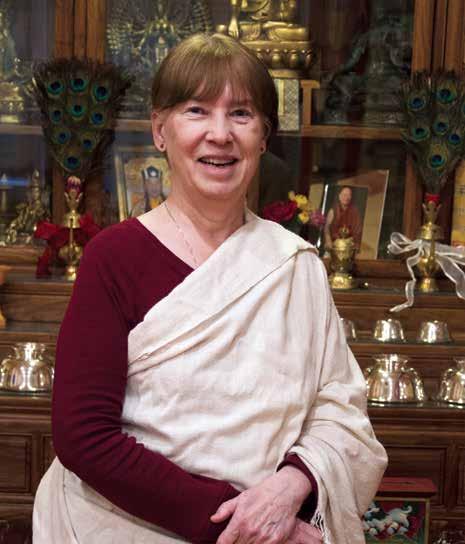
The older I’ve become, the more I’ve stepped out of my comfort zone. Sometime in my late 20s, I adopted the slogan, “No guts, no glory,” and I can’t say that I’ve always followed it, but when I have, it’s usually led somewhere fruitful.
Definitely the farthest I’ve gone is the three-year retreat I completed in my late 40s, from late 1996 to the beginning of 2000. It was a traditional Tibetan Buddhist retreat and it’s actually more than three years—it’s three years, three months, and three days in a cloistered, highly-structured setting, and I lived during that time as a nun. I’m not a nun now, but all participants took temporary vows during that time period. We had no contact with the male retreatants who lived in another building.
Prior to going on retreat, I was a clinical psychologist living in Kingston, NY, doing private practice and consulting at local hospitals. I was married, and in 1994 my husband, Yeshey, was suddenly diagnosed with pancreatic cancer and died three months later. That was the inciting incident that pushed me to do the three-year retreat. At that time, I’d been a practicing Buddhist for almost 20 years. If Yeshey hadn’t died, I have no doubt I would have continued with my fairly comfortable life and wouldn’t have joined the retreat. When he got sick, our teacher, Khenpo Karthar Rinpoche, suggested the three-year retreat as a possibility that would not only benefit me, but also Yeshey, should he pass away. At that time, it was obvious he wasn’t going to live very long. This terrible life-changing event brought everything in my life into question.
I adopted the slogan “No guts, no glory,” and I can’t say that I’ve always followed it, but when I have, it’s usually led somewhere fruitful.



The headquarters of our organization is in Woodstock, NY, and the retreat center, Karme Ling, is in the country west of there, outside a very small town in a very rural area of New York. One thing that made this retreat so far out of my comfort zone was the very strict schedule. We started every day at 4 a.m. and we finished at 9 p.m. We had three breaks for meals followed by work periods, and we were very busy trying to complete all the different practices we were assigned, as well as other tasks like making ritual offerings, practicing the musical instruments used during chanting, and studying the texts, which were all in Tibetan. Unlike nuns in Tibet, all this was new to us and needed to be learned quickly. Khenpo Rinpoche, our retreat master, taught us everything we needed to know and was available to answer all our questions.
Each day we had four periods of 2 ½ hours each of individual practice in our rooms. These were advanced practices which involved chanting, prayers, a lot of mantras, and a lot of complicated visualizations. We also had several other group practices that we did together in the shrine room. All together, we practiced 13-14 hours a day. And we also had chores like house cleaning, bringing in firewood, and meal clean-up.
I am not a morning person, so getting up before 4 a.m. was way out of my comfort zone. I also don’t do well when I don’t get enough sleep. That aspect of the retreat was very hard for me—getting up so early, and not getting enough sleep. My comfort zone involved having a lot of control over my own schedule and activities, and it was a real shock to give this up. There were also many issues with the group dynamic among the 12 of us women (11 retreatants and a cook/attendant) living
together, and all of us struggling with the loss of our comfort zones in one way or another.
We had carpeting, and we had electricity, and a woodstove downstairs to heat the whole building, so the external setting was much more comfortable than is traditional in Tibet, but the inner discomfort was at least as grueling. It was definitely full-time, 24/7, 365 days a year. Occasionally, we got a half-day off to clean our shrine and set it up for the next practice, but this only happened a few times a year.
And that’s a big part of what the retreat was designed to do—to push us out of our comfort zone. There were no escapes. There were no telephone calls, no entertainment. We could read books, but they had to be about spirituality or Buddhism, and we didn’t have access to a computer. We could only leave Karme Ling in case of an emergency. Not having any escape made it clear how many of my reactions to stress were based on my own habits and projections and not on an external reality. You gain a deeper understanding of how your mind works, and there’s nowhere to hide from the less pleasant parts of yourself.
Looking back, my retreat was the hardest thing I’ve ever done, and definitely the most meaningful. It was deeply transformative; I guess you could say it was a kind of spiritual therapy—a cross between boot camp and psychoanalysis. One of the hardest things for me was just following orders. The discipline. You don’t ask, you just do. If you had questions, you could talk to Rinpoche individually— he was wonderful, very encouraging and supportive. Whenever I told him how inadequate I felt, he helped me keep going. I probably would have left if not for his reassurance.
I had a great sense of accomplishment—and relief—from completing those three years. Afterward, I moved back to my hometown, Ann Arbor, which I had left when I was 17. My parents were now in their 80s and I wanted to be near them.
I’m still assimilating all my retreat experiences. I felt very reclusive at first, having been away from society, and from work, for so long. When I completed the retreat, I was given the title of Lama, and my teacher encouraged me to teach at the KTC center here in Ann Arbor, but I didn’t feel ready for that for a long time. I did start attending regularly, though, and the first time I walked in the door after my retreat I met a man who I connected with, and we were eventually married. We’ve been together ever since. That helped a lot.
Eventually, I began working again, though it was hard at first—definitely out of my new comfort zone! I ended up working for another 15 years until I retired. Since then, I’ve become more involved in teaching at the meditation center. I particularly enjoy giving individual spiritual guidance as well as helping to run the center.
From my view as a Buddhist, humans are creatures of habit. We’re ingrained not only in our daily habits, but in how we see the world. Pushing our comfort zones, going outside their boundaries, helps us to see things differently. It helps us understand that what we’re experiencing in our life at any given point isn’t a fixed thing. It seems very solid, but it’s not. It’s just how we perceive things at that particular moment. Stepping out of our comfort zone gives us a much bigger perspective. I think it helps free us. Often, we have a fixed sense of what the world is and our place in it, what expectations are put on us by ourselves and others. Going outside that comfort zone showed me that I had other options.
It was deeply transformative; I guess you could say it was a kind of spiritual therapy—a cross between boot camp and psychoanalysis.
greatest growth.
 By Cashmere Morley
By Cashmere Morley
It is possible you’ve met Ann Arbor’s Carolynn Hayman before, without even realizing it. Perhaps it was at a pride festival, where she skipped down the streets with a rainbow mane, a pair of hooves, and a bright pink horn atop her head. Or maybe it was at a bookstore, where she danced in a lobster costume, complete with bright red claws and googly eyes. She may have even showed up at your birthday party, a bright bouquet of flowers in her hands. What do all these events have in common? Hayman, owner of Pop! Designs & Creations, promises one thing: she creates unique balloon experiences “for every occasion.”
Hayman began her career as a balloon artist thirteen years ago. At the time, her daughter was ten years-old and had expressed an interest in balloon animals. After recruiting a friend that did balloon art on the side, Hayman said that her and her daughter both ended up learning some balloon techniques, despite Hayman originally thinking that balloon animals were “creepy.”
“And so of course, you know how the story goes. Who was most interested about balloon animals in the end?” said Hayman. “My daughter and I both learned a couple things from him, but the takeaway from that experience was my friend telling us, ‘you’ve got to use high quality balloons. And that’s the difference. If you use high quality balloons, the things you’ll be able to create will be insane. I mean, you can put twists into a balloon that you could never do with one of those cheap ones from the dollar store.’”
After working for several years in retail as a director of stores for a small women’s clothing company that made unique designs such as hand-painted clothing,
Hayman knew her passion had been sparked after experimenting with balloon art. Always a creative person, Hayman was raised by a mother who loved experimenting with crafting in all kinds of mediums, a trait Hayman later passed to her own daughter. Little did Hayman know that her balloon designs would later take her all over the world.
“I love when people ask me what I do for a living because it’s so weird. My husband likes to say that the first time I put ‘balloon artist’ on our tax return, we got a survey from the state of Michigan. But when you say ‘balloon artist,’ people automatically have an assumption of what that means. And then I say well, I specialize in balloon costumes, then I’ll have to pull out my phone and show them.”
Hayman’s creations vary from wearable balloon costume art to yard decorations. Balloon costumes can take anywhere from 150 to 200 balloons to create, while designs such as balloon bouquets only take from three to five balloons. Hayman said she used to blow up each balloon one at a time by hand but has since invested in a pump that can inflate two balloons at a time.
“One thing that I really like [about my job] is that it’s sort of temporary. The things I create are not meant to last forever,” said Hayman.
She notes that her art work is guaranteed to last for a day outside. Most people will keep them around for longer, perhaps three to five days, or even up to a week, but the intention is that they only last for the moment, whether that’s a parade or a birthday party. Hayman is best known for her wearable balloon costumes, such as Conrad the Unicorn, who is her most famous creation to date. Hayman describes him as “his own entity.”
The inception of Conrad came after placing fourth two years in a row in a balloon costume competition. Hayman knew she had to step up her game.

After working for several years in retail as a director of stores for a small women’s clothing company that made unique designs such as hand-painted clothing, Hayman knew her passion had been sparked after experimenting with balloon art.Photo by Marianne Cowherd

“The third year, I was like, I don’t care what it takes, I gotta get at least third place. So, I was trying to come up with something completely different. And that’s when I came up with this idea of a unicorn, and a costume that had arms and legs that you were inside of,” said Hayman. People instantly fell in love with Conrad.
“I was making people laugh. And I realized that I can act like a crazy person, dance around like mad, and no one knows it’s me. It was just freeing to be inside of this thing,” said Hayman. “Conrad took me all the way to [the television show] America’s Got Talent. And I was on Harry Connick Jr.’s show Harry, so those were both really fun. Harry took my lobster costume and made a couple of videos. There’s one of him playing the piano in the costume,” said Hayman.
While those television experiences did help Hayman gain some career exposure, she said that most of her work gained popularity through balloon conventions. Often, Hayman will set up classes at conventions, where people with inquisitive minds will come to learn how to create everything from something as simple as a bouquet of flowers to a wearable leprechaun costume. Hayman said it is classes such as those, that help her continue to reinvent the creative process, and are what drives her as an artist.
“I think of a concept I’ve always wanted to do, then I can apply it to what I’m teaching. Like when I made a pot of gold in a class I taught, complete with a rainbow, for a St. Patrick’s Day workshop. Immediately, I was wondering, how can this be something that someone can climb into that we can bring to a pride parade? And so, I came home and within three days, I was thinking, I have to make this pot of gold include this cloud with a rainbow behind. I constantly think of the concepts, trying to get ideas to create the next thing, and sometimes it’ll take a long time.”
Hayman figures that she’s created “thousands” of balloon creations within her career.

“The interaction is just incredible,” said Hayman of her designs. “I mean, when I do Conrad the Unicorn in a pride parade, people become super excited. Some are screaming at the unicorn. It’s just passionate, instant energy. That’s awesome.”
Liz Romani, a fellow balloon artist, sings Hayman’s praises as a pioneer in the balloon design world.

“There’s two different worlds in the balloon world,” said Romani. “We have a twister world and a decorator world. There are people who twist like clowns and entertainers, who make things like balloon animals. As a decorator, you’re making


Hayman is best known for her wearable balloon costumes, such as Conrad the Unicorn, who is her most famous creation to date. Hayman describes him as “his own entity.”Photo by Jenn Eastridge Photo courtesy of Carolynn Hayman Photo courtesy of Carolynn Hayman
things like flower arches. Carolynn is a twister who has turned into a decorator. She married both worlds. She uses decorator balloons and introduces this concept of costumes to the twisting world. I think she’s had a huge impact on helping to marry the balloon artist worlds.”

Having taught classes with Hayman, Romani notes how unique the balloon design process is.
“Carolynn will say, for the class, ‘we’re going to be making an elephant’ but literally, you don’t know what it’s going to look like until she actually physically makes it onstage. Before that, well, you’re just seeing reams of balloons. And you’re wondering...what’s that gonna be? Slowly, bit by bit, you can see the chest start to emerge. Then, okay, there’s the back. And there’s the face. Oh, my goodness, there’s a trunk. Before you know it, you have an elephant! And it’s right before your eyes.”
Romani said that the balloon work Hayman creates “just naturally makes people happy. And the fact that we get to tinker with balloons to create a positive emotion in the world, and get paid to do it, that is super fulfilling.”
Romani remembers Hayman’s unicorn design at a pride parade in Chicago, calling it “such an enormous hit.”
“I mean, this thing is like, 10 feet tall. Beautiful rainbow-haired unicorn that’s just bouncing around. Carolynn is just brilliant. I look forward to working with her any opportunity that I can. So many people in our industry look up to her.”
Hayman said she has plenty of ideas brewing for her next creation but won’t share any of them quite yet. She is interested in working with artists of all kinds in the future, noting that she is looking forward to working with anyone who is willing to “try new things, keep innovating in the balloon world, and help push the limits” of her artwork.

Hayman said a dream client would be someone such as pop singer Katy Perry, since Hayman envisions Perry’s bright, bold, colorful style meshing well with her balloon art.
To see more of Hayman’s creations, visit her online at popdesignsandcreations.com or Facebook and Instagram @popdesignsandcreations.
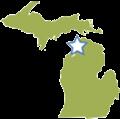 By Petula Brown
By Petula Brown
Confession time! As a native New Yorker who moved to Michigan to attend U-M, I never understood the appeal of going “up north” for a restful getaway. I could appreciate its appeal for campers, skiers, and hunters, but not having such interests made Northern Michigan something of an enigma to me. So, an extended visit to the Petoskey area was an ideal opportunity to see the variety of settings, cultures, and cuisines reflected in the region.
Rest assured, the landscape is not the urban vibe or suburban tone of Southeastern Michigan population centers. As a non-camper who appreciates opportunities to commune with nature, the accommodations at Petoskey’s Grace Grange provided the ideal compromise. The twenty-acre property near the North Country Trail is surrounded by state forest interspersed with walking trails. Established in 1986 as a horse facility, Grace Grange maintains boarding stalls that can be used by guests, one of the many distinctive traits of the bed and breakfast. Many furnishings are heirlooms crafted by family members accented with pottery from Petoskey’s Sturgeon River Pottery, a uniquely “up north” retail destination and four decades old family business. Additionally, innkeeper Pamela Rambow, serves as the artistin-residence as most of the artworks are her creations. Rambow’s emphasis on well-being was demonstrated by her attention to detail, from crafting innovative breakfast dishes to creating a guest-accessible area for food storage and snack access (to accommodate Covid-era requirements that guests not enter the kitchen). Such personal touches elevate the guest experience at Grace Grange beyond a typical B&B—it was an intimate respite for mind, body, and soul.
storybook setting. The manicured lawns and luxury amenities of resort communities yielded to log cabins and earthen landscapes. Exploring the Tunnel became a meditative experience in which the journey was the destination rather than the means to a destination.
While there are several arboreal settings within the Petoskey area, waterfront venues provide an alternative way to relax, refresh, and release. Bay View, midway between Harbor Springs and Boyne City, is a resort community with lodging options of various price points. Upscale accommodations abound but staying in nearby Petoskey provided opportunities for short commutes through eclectic neighborhoods as well as impressive views of Little Traverse Bay. Less than an hour south of Bay View, Walloon Lake and Boyne City provide walkable, intimate spaces that embrace lakefront environs. Both areas allow travelers to support local retailers, explore docks, and enjoy water sports. Particularly commendable are the Covid-era adjustments at the local restaurants. At Walloon Lake’s Barrel Back, the footprint was expanded to include an outdoor bar on the dock and tent seating in the courtyard to enjoy takeout orders. On Boyne City’s Water Street, outdoor seating provided by most restaurants afforded diners ample space as well as relaxing lakefront views.
Traversing the serpentine road through the natural canopy felt like a stroll through a storybook setting.
Though the serene backdrop of Little Traverse Bay is shared by Harbor Springs and Petoskey, each waterfront community has a unique identity. Petoskey’s larger footprint interlaces distinctive Victorian architecture, resort properties, and retail outlets, creating a hub of activity with a familiar suburban vibe. Harbor Springs, its population a fifth the size of Petoskey, has a smalltown feel. Nearly all downtown businesses are locally owned.
The tranquil, homespun style of Grace Grange was a contrast to the energy of agricultural activity at Lavender Hill Farm in Boyne City. Acres of lavender fields provided a unique aromatic experience, making a casual walk around the property akin to an aromatherapy session. My first experience at Lavender Hill’s was a lunch event highlighting lavender-infused selections and a candlelit yoga session. The importance of Lavender Hill as a nexus of community activity was obvious. Its popularity as a location (as evidenced by Illinois, Florida, and California license plates in the parking lot) was reinforced by a distinctive retail collection. Lavender-loving guests can bring home the Lavender Hill Farm experience in the form of plants, bathing products, snacks, and alcoholic beverages.
Acres of lavender fields provided a unique aromatic experience, making a casual walk around the property akin to an aromatherapy session.


After exploring Lavender Hill, driving through foliage wasn’t particularly exciting to me. However, I was encouraged to visit the Tunnel of Trees by a family of Chicagoans exploring Northern Michigan. Heading north on M-119 from Petoskey seemed uneventful, but beyond Harbor Springs exists a scene that could reside in a fairytale. Traversing the serpentine road through the natural canopy felt like a stroll through a
Most accommodations are vacation home rentals and B&B’s rather than hotels or resort communities. It’s low key, bedroom community vibe provides the ideal venue for a relaxing getaway.
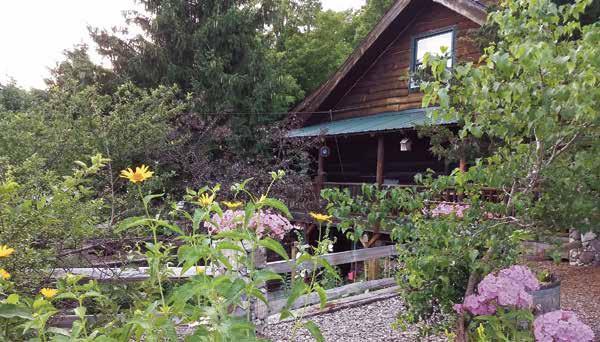
Though the serene backdrop of Little Traverse Bay is shared by Harbor Springs and Petoskey, each waterfront community has a unique identity.
Note that during my travels, no tents were pitched and no fish were caught. All accommodations had indoor plumbing. As someone who associated “up north” with frontier living, I appreciated the chance to experience a region that simultaneously offered natural beauty, relaxed surroundings, and varied refreshing experiences.
Learn more about Grace Grange Lodge and Stable on their website gracegrange.com. You can find operation hours, events, and information about Lavender Hill Farm at lavenderhillfarm.com
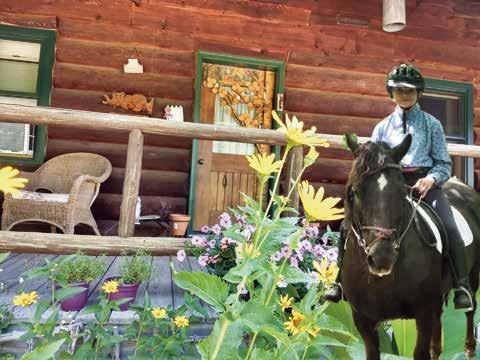
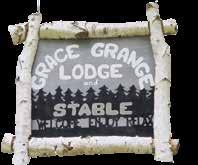
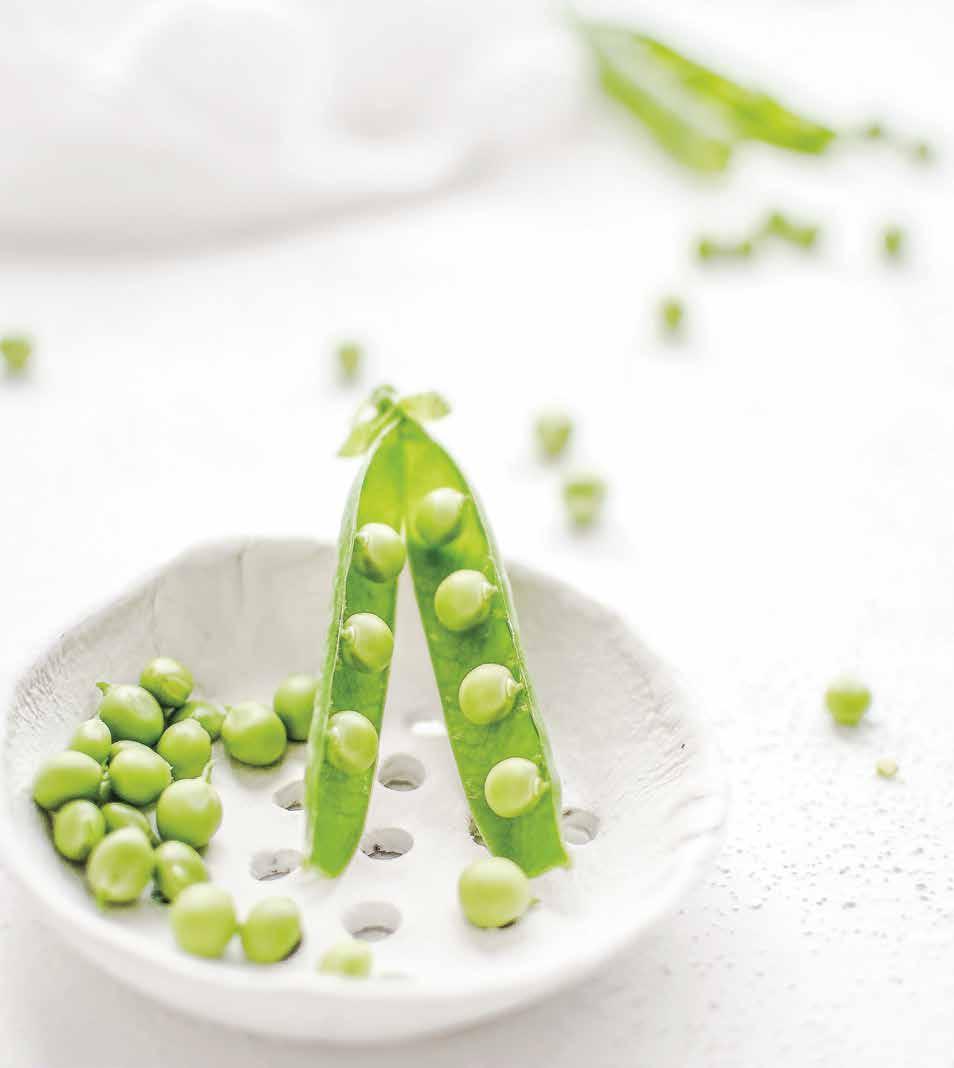



As we all know, the past 18 months brought disruptions that none of us expected or could have predicted. Significantly, Covid-19 stimulated a national hunger crisis. Nearly one in four households experienced food insecurity in 2020, many for the first time in their lives, as those impacted by pandemic-related shutdowns and layoffs struggled to afford enough food for their families. This surge undercut a decade of progress in reducing food insecurity, particularly among children.
As the coronavirus fundamentally upended communities, our mission at Fair Food Network to support communities in harnessing the power of food to grow community health and wealth never felt more fundamental or urgent. And so, we summoned all of our creativity to ensure we continued to meet the urgent and emergent needs of the families, local farmers, and food entrepreneurs at the heart of our work.
Across sites nationwide, families spent a total of $11.74 million Double Up dollars on healthy food in 2020 — a 98.9% increase from 2019. And in Michigan, Double Up use in 2020 was more than double that of 2019—resulting in an estimated reach of more than 200,000 Michigan households.


Because Double Up also focuses on locally grown produce, it boosts families’ limited food dollars, making healthy food within reach while supporting local farmers; and the program has stimulated our economies during this economic downturn.


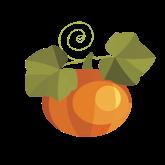
Key to this was pivoting our Double Up Food Bucks program, which matches SNAP, or food stamp, dollars on fruits and vegetables. For those locally, we may know Double Up as a Michigan program, but over the past decade it has blossomed into a national model for SNAP incentives active in 25+ states from coast to coast. As nutrition incentive programs like Double Up became more necessary than ever as an immediate emergency response with simultaneous benefits, practitioners stepped up to meet the acute needs in their communities.
In response to the pandemic, we lifted the $20/day earning cap to provide families increased food dollars. We also fast-tracked the onboarding of new retail markets and worked with partners to develop a new smart phone app, which shoppers can download to enroll in the program, check their balances, find a participating location, and earn/spend Double Up dollars. All of this reduced the need for in-person contact. Finally, we ramped up marketing efforts to get the word out, including the launch of a new website: DoubleUpFoodBucks.org
At Fair Food Network, we are privileged to do this necessary work and deeply appreciative of the partnerships and support that makes it possible.

Nearly one in four households experienced food insecurity in 2020, many for the first time in their lives, as those impacted by pandemic-related shutdowns and layoffs struggled to afford enough food for their families.
As the coronavirus fundamentally upended communities, our mission at Fair Food Network to support communities in harnessing the power of food to grow community health and wealth never felt more fundamental or urgent.
And while Michigan is home to the largest Double Up program in the country, we have connected with local partners and markets across the country to ensure Double Up remains a strong community resource and is keeping pace with increased demand, especially in grocery stores.
We’ve also expanded our reach to support the broader national network of nutrition incentive practitioners through our new role serving as USDA-designated lead for technical assistance and innovation for the Nutrition Incentive Hub, an entity founded to increase the impact of healthy food incentives and produce prescriptions. As part of this work, we recently hosted a national online convening that brought together 1,000 practitioners from across the country to learn how to more effectively expand their programs.
While Double Up programs stepped up, our Fair Food Fund worked to provide financing and business assistance to food entrepreneurs which has been equally critical in supporting healthy food access, local farmers, and a stronger, more resilient economy. It’s never been more important as businesses across the food system, from farm to fork, have experienced tremendous economic hardship.
Here, too, we moved quickly. We took steps to support our existing portfolio of businesses while accelerating new investments and business assistance to support
entrepreneurs in pivoting their businesses in order to maintain food access in the communities they serve. We are proud to have closed 2020 with four new investments including businesses in Michigan and the Northeast United States.

As part of our work with the Michigan Good Food Fund, a statewide loan fund we now administer, we brought together 13 early-stage grocers from across the state to explore how to elevate locally sourced food in the grocery setting.
Helping us was Argus Farm Stop, a local hybrid café and year-round farmers market here in Washtenaw County.
Finally, we launched a Collateral Initiative, which utilizes a pool of grant capital, to partner with other lenders and enable investments in businesses that do not have the reserves to weather this moment.
It is truly an extraordinary time we are living through, one whose full impact has yet to be fully felt as more fault lines in our society become apparent. Today, more than ever, it is important for all of us to do all we can to support those most destabilized.

At Fair Food Network, we are privileged to do this necessary work and deeply appreciative of the partnerships and support that makes it possible.
Oran Hesterman is the founder and chief executive officer of Fair Food Network. For more information about Fair Food Network, or how you can get involved, visit them online at fairfoodnetwork.org.
We are looking for good articles about the holistic scene ... reportage, personal journaling and essays, profiles, interviews, journalistic explorations, and other feature writing.
Modest but respectable pay. If you might be interested, please write to Jennifer at jennifer@crazywisdom.net.

We took steps to support our existing portfolio of businesses while accelerating new investments and business assistance to support entrepreneurs in pivoting their businesses in order to maintain food access in the communities they serve.
While we were perusing the innovative takeout menu of Ypsilanti’s new halal gourmet burger restaurant, Blazin’ Burgerz, my husband’s eyes landed on “The Heart Attack Itself” (because of course they did!).

“If you need someone to throw themselves on that grenade,” he said, “I volunteer.”
“It’s a good thing they’re located right down the road from St. Joe’s,” I quipped back.
The Heart Attack Itself is a single burger patty topped with macaroni and cheese, pickles, grilled onions, and spicy mayo sandwiched between two grilled cheese sandwiches. Yes, the grilled cheese sandwiches act as the bun. I felt my arteries clogging just looking at it nestled in its to-go box, and I wasn’t the one about to eat it. I have been assured by both my husband and a friend who just had to try it after we told him about it (a completely sane reaction) that the Heart Attack Itself is delicious and totally worth ordering.
I had to get a taste of the mac and cheese because it looked so rich and creamy, and it did not disappoint. To stay away from the burger bun, I ordered a burger bowl (bowls alternatively come with grilled chicken or chicken tenders). Using a bed of mac and cheese rather than the more conventional rice is downright brilliant in my book, but if you can’t have that, you can choose French fries instead. (As always, if you have food allergies or sensitivities, call the restaurant before ordering.) If fries are your thing, I highly suggest those seasoned with Jamaican jerk and Cajun spices. They surprised me by how flavorful they were, and the heat level was pretty low.
Blazin’ Burgerz hours are Monday through Thursday 11:00 a.m. to 11:00 p.m., Friday and Saturday 11:00 a.m. to 12:00 a.m., and Sunday 12:00 p.m. - 8:00 p.m. For more information, call (734) 905-7480 or contact them through their website.

Gora’s Grill is the new all-vegetarian fast-casual restaurant that took over when Veg-O-Rama closed earlier this year. For customers of Veg-O-Rama, the menu may look a little familiar, but the new owners have added their own offerings and distinct flair, many of which are made in-house. Most of the menu items are vegan (there are a few dairy options), and everything is gluten free.
Blazin’ Burgerz advertises themselves as being 100% halal, so no more driving to Dearborn for those in need. They are also located conveniently close to Cravings Dessert Lounge, a Middle Eastern bakery that I previously covered in this column. Although, the dessert options at Blazin’ Burgerz are impressive and include seven different varieties of cheesecake.
Other menu items of note are the Bacon Egg and Cheese Burger, Mac and Cheese Squeeze Burger, and Garlic Puree Burger, all of which are as advertised in their names. If burgers aren’t your thing, you can also order chicken sandwiches, bowls, and hot dogs. Worth highlighting on the hot dog menu is the Glizzy, a baconwrapped hot dog with mac and cheese, pickles, and melted cheese.
Whoever designed this menu clearly had a lot of fun, and from what I’ve tried myself, as well as heard from friends, the unique flavor combinations come together brilliantly. I’m really excited to have Blazin’ Burgerz in my neighborhood.
Blazin’ Burgerz is located at 2593 Ellsworth Road in Ypsilanti Township, three miles due south of St. Joseph Mercy Hospital. Find them online at blazinburgerz.com.
The heart of the menu is to build-your-own. You will find burgers, wraps, bowls, fries, sides, desserts, beverages, and a few specials. You start with a base, such as burger bun, bowl or wrap, including the Great Beyond, which is a Beyond Burger on a toasted bun with cheese and peppers. Next, select your protein: black bean, bird’s nest, coconut chana, grilled chik’n, or grilled jackfruit. Lastly, choose your sauces, sides, and a drink. If you don’t know what will taste good together, there are six classic combos to get you started.
I built my own bowl that started with basmati rice. My protein was the bird’s nest, consisting of fresh carrot and cabbage that is then fried in a “hearty batter” blend of chickpea flour and secret spices. I had it all topped with tzatziki, one of my favorite sauces. The bird’s nest was so thick and crispy and delicious! I was torn between getting this and the jackfruit, which I guess I will just have to return for in the future.
My husband ordered the Miranda classic combo, a white flour (as opposed to spinach) wrap with rice, grilled chik’n, and tamarind barbecue sauce. He had no idea that the chik’n was a vegan meat substitute (until I told him) and raved about the barbecue sauce. I tried a little of the sauce myself, and it was packed with flavor. Maybe I will order that for the sauce when I go back for my grilled jackfruit.
For lovers of French fries, there are multiple delectable options: regular, masala, sweet potato, and cheese. You cannot go wrong picking the masala fries! I don’t
Whoever designed this menu cLearLy had a Lot of fun, and from What i’ve tried myseLf, as WeLL as heard from friends, the unique fLavor combinations come together briLLiantLy.

know why I never thought of making these at home, but I am more than happy to let Gora’s Grill make them for me. Their spice blend is on point.
With the endless combinations of the build-your-own menu, it’s easy to keep things fresh and new. This is a restaurant that will keep me busy for a while as I make my way through its delicious menu.
Gora’s Grill is located at 533 West Cross Street in Ypsilanti, kitty-corner from Eastern Michigan University. Find them online at gorasgrill.com. Their hours are Tuesday through Saturday 11:30 a.m. to 8:30 p.m., closed on Sunday and Monday. For more information, call (734) 544-9707 or email gary@gorasgrill.com.


Like most people, I love cookies. Especially ooey gooey chocolatey cookies. Recently, downtown Ann Arbor got a significant upgrade in the cookie department with the opening of the Detroit Cookie Co. I was familiar with the original Ferndale location via friends in that area, so I was excited to see the familiar logo pop up near Nickel’s Arcade.
Detroit Cookie Co. is known for unusual cookie flavors. Here you will find things like the Mad Mix (a cookie made with crushed Better Made™ Sweet BBQ potato chips and Butterfinger), the 8 Mile (their original dough cookie containing M&M’s, Reese’s cups, and pretzels), and the Banana Pudding (per the website, “banana pudding and Nilla Wafers slammed into a cookie”). But there are more conventional finds as well, such as the Chocolate Chunk, Oatmeal Raisin, Ultimate Peanut Butter, and Double Chocolate Coffee Toffee. (Okay, maybe that last one is a bit unusual, but it sounds delicious.)
Don’t worry, gluten-free friends aren’t left out! There is a perfectly delightful and gluten-free chocolate chip cookie (“Our classic chocolate chip cookie, just without the gluten!”) that is guaranteed to soothe your sweet tooth. And I can’t forget the gluten-free Salted “Carmel” Brownie, which was so rich that I had to eat it in two separate sittings. Mixed in with the brownie batter are chunks of chocolate for an added chocolate fix. It claims to be “the best brownie you will ever have,” and it might be right.
The blondie flavor combinations seem to get changed up. My husband got the incredibly sweet Breakfast in Bed (a blondie with a layer of soaked buttermilk pancakes topped with Cinnamon Toast Crunch and maple glaze). He liked the flavor, but he wasn’t as big a fan of the texture the pancake offered. When I checked the online menu a few weeks later, the Breakfast in Bed was gone, and some new ones had appeared. The Netflix N’ Chill blondie (made with Oreos and rainbow sprinkles) made me giggle.
It’s clear that a number of items on the menu have a Michigan theme (8 Mile and the use of Better Made chips). But did you know that Blue Moon ice cream is also unique to this region of the country? It was one of the things I missed most about Michigan while I was living in California. Detroit Cookie Co. offers its own twist on Blue Moon—in cookie form, of course. This limited-edition cookie is flavored with blue raspberry and hints of sweet marshmallow. There was another limited-edition cookie put out for Easter, so keep an eye on the menu around the time of your favorite holiday to see what they come up with next.
The Detroit Cookie Co.’s Ann Arbor location is found at 609 East Williams Street, between Maynard and State Streets. Find them online at detroitcookieco.com. They are open daily from 12 p.m. to 8 p.m. For more information call (734) 4120104 or email sales@detroitcookieco.com.
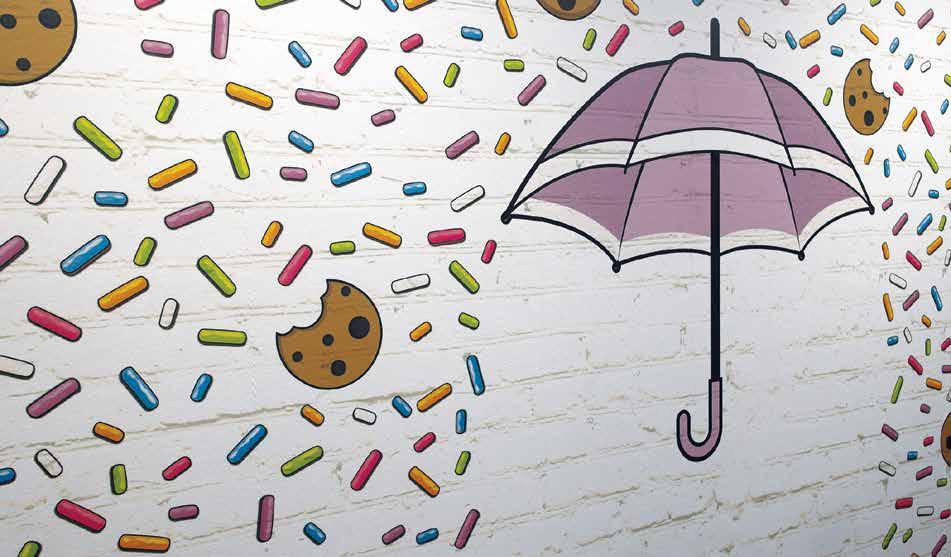


Since 1999, during the month of November, people across the globe have participated in the National Novel Writing Month (NaNoWriMo), attempting to write a 50,000-word novel in just 30 days. Many popular authors have gotten their start with NaNoWriMo. In 2008, some of Emily Springfield’s friends were among those who had taken up this, and other, month-long challenges. But, Springfield didn’t want to write a novel. As she told me, “I decided that since food and gardening were my passion, I would institute ‘NaLoFooMo’—National Local Food Month—and write about local food each day of November.”
That blog is called Eat Close to Home, and it has grown to encompass gardening, preserving, and cooking, all centered around food produced locally in the Great Lakes region. Specifically, its focus is on “foods grown and produced within 100 miles or so of Ann Arbor, Michigan.” A locavore (someone who eats foods grown locally whenever possible) could get lost in its virtual pages for hours.
Springfield’s interest in local food dates all the way back to childhood. “I grew up in rural southern Michigan,” she said, “and my kindergarten teacher’s family owned a huge apple orchard and cider mill. We took a tour when I was six, and it was just the coolest thing I’d ever seen. Then we went back to school and were served Washington apples. Even then, that seemed odd to me. Michigan has an incredibly diverse agriculture base, and we’re in a unique position to really provide most of what we eat.”
blog is called Eat Close to Home, and it has grown to encompass gardening, preserving, and cooking, all centered around food produced locally in the Great Lakes region.


2008 was famously (during the financial crisis) “the first time we, as a country, experienced first-hand how fragile our ‘just in time’ economy is, and it suddenly changed from a ‘nice idea’ to ‘we really need more local resiliency for our food
system.’ We, as a society, are facing a new crisis with the pandemic, when showing one’s support for our local economy has become vital to its survival.”
Springfield wants “everyone to have access to good food.” She went on to say, “That includes making sure options are affordable for folks with a wide range of budgets and physical abilities. I may not have a lot of cash, but I can grow my own [food]. Or, I may have cash but no time, which makes me a great candidate to support local small farmers. There’s also a lot of local food grown conventionally and at a scale that’s very affordable!”
Offering examples, she said, a “plain old gallon-jug of milk is almost always a local product. Michigan produces a huge percentage of the dry beans found in U.S. grocery stores. Jiffy mixes are made in Chelsea from Michigan-grown wheat and sugar. Ruhlig’s Market in Dexter sells bushels (50lb box) of locally grown cabbage for about $10 and tomatoes for $20. That’s a lot of good food, cheap.”
What does one do with all that food? This is where canning and preserving come in. Springfield learned how to can tomatoes and peaches from her mother when she was a kid. “When I was in my 30s,” she added, “I ‘topped up’ that knowledge by reading books and blogs.” In her blog, she helps readers to feel less afraid of having “too much” food by showing how it can be preserved for later. There are several posts walking readers through how to create and can salsa, make jam, properly freeze green beans, and so much more. There is even a blog post entitled Three-week quarantine shopping list that details what and how much to buy per adult and/or teenager in the household, then what can be done to make that food last for at least three weeks. This is a practical and useful tool for anyone who is limiting their trips to the grocery store.
Springfield is also an avid gardener, as were her grandfathers. “My paternal grandfather grew a classic Victory Garden; he and Grandma grew a huge amount of food in their tiny East Detroit suburban lot. They let me pick the first carrot out of the garden every year,” she said. “My maternal grandfather loved growing unusual foods and flowers, and my step-grandfather was passionate about flowers and landscaping. So, I’ve long seen gardening as a means to satisfy many human desires: food, curiosity, and beauty.”
In the blog, you will find posts detailing how to start a garden here in lower Michigan, which is USDA Hardiness Zone 5 (meaning our lowest average temperature is between -20°F and -10°F), how to build a raised garden bed, as well as tips for gardening with kids.

Where did Springfield learn her best gardening tips and tricks? “I loved watching The Victory Garden and Square Foot Gardening on PBS with my parents in the ‘80s,” she said, “and since then have learned more from sustainability-minded garden researchers like John Jeavons, Eliot Coleman, and Carole Deppe via their books. The best teacher, though, is the garden itself. Watching, listening, touching, tasting—keeping notes on what works and what doesn’t work for you—this is really the best way to refine your own gardening.”

A couple of essential garden tricks Springfield has learned are the importance of “covering brassicas (like kale) with a screen to keep out the cabbage moths (and) primarily growing butternut squash, which can be eaten like zucchini when small, and when fully ripe, cured, and stored properly, will keep until the next summer.”
Her favorite garden treats are snap peas, and she shared an amusing story about her own patch. “One morning, I looked out in the garden and saw the 6’ tall peas shaking on their trellis. I grabbed a broom to go chase away whatever critter was marauding my pea patch...only to find it was my husband, foraging a couple handfuls to pack in his lunch.”
That
Offering examples, she said, a “plain old gallon-jug of milk is almost always a local product.”Emily Springfield in her home garden.
It might sound impossible, but we can eat local year-round. It just requires some adjustment. There is an entire section on the blog called “changing habits” that can help readers make these kinds of accommodations. Springfield cautioned, “Before you build the root cellar, be sure you like to eat roots. Before you can 100 quarts of tomatoes, be sure you will use them within a year or two.”
The first step that Springfield recommends is to “eat as if your food were local. Find a dozen ways to love squash—even if it was shipped from California. Learn how to sneak cabbage into every meal—because that’s a vegetable you can buy cheaply, in bulk, and it’ll keep all winter. Figure out how to fill the gap if you take bananas out of your diet.”
In the early spring of 2010, I took a trip out to Boulder, Colorado. While talking to the concierge, my love of tea came up. He suggested that I check out the Dushanbe tea house and to make sure that I drank the house Chai. At the time I was a bit of a novice when it came to tea and knew little about chai. However, one sip of the hot, sweet, spicy concoction and I was hooked. There is just something about cinnamon and ginger that makes a person smile.
The typical American version of Chai tea usually consists of black tea, milk, sugar, cinnamon, ginger, clove, cardamon, and black peppercorn. It can also be made with Green tea, Rooibos, turmeric, fennel, and star anise. However, if you happen to be traveling elsewhere in the world make sure that you are ordering chai marsala if you are looking for a latte. Otherwise, you might just get plain old tea. It is also my suggestion for a first-time tea drinker or someone who has never seemed to like tea. With all the aromatic spices you tend not to taste any of the black tea. It also tastes great with soy, almond, oat, or coconut milk.
Besides tasting delicious, Chai has health benefits attributed to it. Some of which are aiding in digestion, regulating sugar levels, weight loss, heart health, combating urinary tract infections, and reducing asthma symptoms. The tea contains an abundant mix of ingredients, each with their own unique healing properties. The typical ingredients do have individual healing properties.
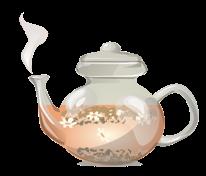
• Black Tea contains antioxidants just like green tea, but in a lower concentration.
• Cinnamon lowers blood sugar, blood pressure, triglycerides, and LDL cholesterol.
• Ginger is an anti-inflammatory, aides’ digestion, and lowers blood sugar.
• Clove is known to help with inflammation and tooth sensitivity.

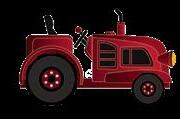
• Cardamon combats infections in the urinary track and helps to lessen asthma symptoms.
• Black Peppercorn detoxifies your body, helps with weight loss, and regulates heart rate.
Combined, these ingredients not only benefit your overall health, they are a nice cup of comfort on a balmy fall day. I like a chai tea latte hot or iced. Since most Americans prefer to drink their tea iced instead of warm, might I suggest an iced cranberry chai cider?
1 Chai tea bag per cup of boiling water, steep 2 minutes then chill
But, she adds, “while it’s fantastic to eat locally for a whole lot of reasons, it’s not the be-all, end-all of ‘ethical eating.’ I buy local food when it’s available, and I can afford it. I’m not giving up avocados, and I’m not going to try to grow them here.” Many nonnative plants are difficult to grow in Michigan, and our weather can be volatile.
Said Springfield, “I’d actually rather see lots of people choosing some local foods on a regular basis than to see a few people commit to eating 100% locally. Because what we really need is a more robust food system…. And hopefully, as more of us start making sustainable markets for local products, we will start doing all this at a scale that keeps prices low enough to afford, but high enough to keep farmers paid.”
1 Cup of apple cider per cup of chai tea

1/4 Cup of cranberry juice per cup of tea

1/4 teaspoon of pumpkin spice, or a little extra for those of us who like things spicy
Combine the chilled chai tea with the apple cider, cranberry juice, and pumpkin spice. Stir and add to a glass half filled with ice. If too tart for your taste, it can be sweetened with a little bit of sugar, honey, or agave.
Peggy Alaniz is a poet, writer, and tea enthusiast. If you have any questions, please e-mail her at paalaniz.email.me@gmail.com.
Emily Springfield lives near Chelsea, Michigan. When she’s not designing online courses or seeing reflexology clients (thanks to Covid), you’ll probably find her in the garden. You can get in touch with her at emilyspringfield.com. The Eat Close to Home blog is located at eatclosetohome.wordpress.com.

The caregiver’s heart is characterized by a few simple, yet powerful traits: empathy, commitment, and action. This holds true across diverse homes, occupations, and settings. The call to nurture another being is one of humility and hope. It is knowing that even when logic says nothing else can help, there is still love and presence to provide.
The presence of Amira Tal-Henig, founder and owner of Healing Hands Physical Therapy, in Ann Arbor, precedes her physical being. Her excitement and zeal for life, learning, and helping others energetically, extends both over the phone and upon physical approach. Her biofield extends respectfully but warmly, like a trusted family member’s hug, before words are even uttered. It is the mark of a caregiver’s heart— to extend honor and service without expectation of obeisance or respect given by the client first. This capacity for care developed through a lifetime of what some may describe as spontaneous adventure, in which Tal-Henig followed her heart from her home in Israel, across the world, and built her home, business, and family in Ann Arbor.
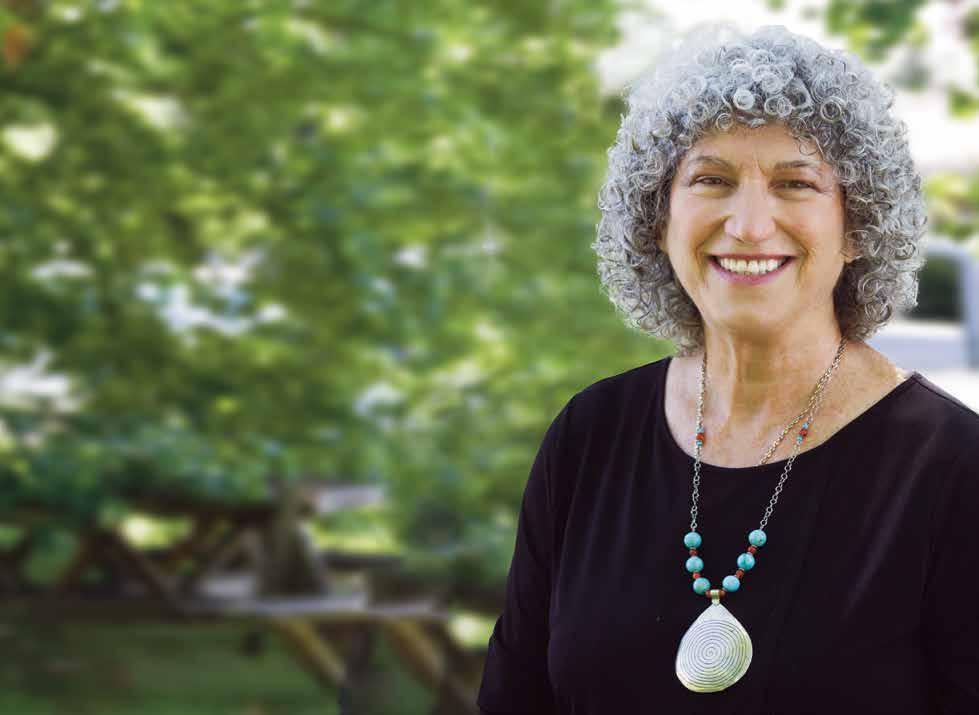
A relationship-building current permeates Tal-Henig’s workspace. When I arrived to interview Tal-Henig, one staff member came to the car, warmly greeted me by name, and proceeded to check my temperature and review the Covid-screening questionnaire. At the front desks, two others greeted me by name with direct eye contact, smiles, and focused presence of being. They weren’t just glancing up at “someone” coming through the door. I noted the entire staff, throughout my visit, committed to sharing moments without shuffling papers or giving off cues that I was interrupting their to-do list. Receiving the patients and myself was the priority at whatever moment we arrived in the various areas of the office.
training is a doctorate in physical therapy. We can even help organs and digestive issues!” Her enthusiasm was palpable. Later, as we toured the 4,800 square foot facility, Tal-Henig eagerly pointed out the gym, each therapist’s private room, and spaces for the newer modalities.
“I love my staff,” Tal-Henig enthused. “Everyone is amazing at what they do.” Currently, Healing Hands combines the talents of 13 physical therapists, two massage therapists, three therapy aides, and three office professionals. “Everyone at the center shares the core values of quality care, one-on-one care, going above and beyond, continuous learning, and doing what is best for each patient.” Tal-Henig continued, “I empower them to be the best they can be, which is naturally also good for business.” The same is true for the boss, as well. “I’m the queen of continuing education,” she joked. “If I get a little down, I need to take a class. It energizes me, and then I can give more to others.”
Tal-Henig and I settled in her office with cups of tea to discuss the 66 adventurous years of her life, including the nearly 40 devoted to physical therapy. “We are here to help everyone be the best they can be in their bodies. We are the muscular-skeletal masters!” she mused. “We learn a lot about each bone, joint, each muscle. Our
The biographies and trainings listed on the business website are impressive and include practitioner education and work in Nepal, India, China, England, Lebanon, Israel, California, Pennsylvania, and Michigan. Tal-Henig herself has extensive education and training in multiple methods. She earned her Bachelor of Physical Therapy degree through Tel Aviv University in 1983, and then worked at Tel HaShomer Hospital for three years. She later earned her degree as Doctor of Physical Therapy, Evidence in Motion, at the MGH Institute of Health Professions, in Boston, in 2013. Currently, Tal-Henig is a member of the American Physical Therapy Association, Michigan Physical Therapy Association, and International Pelvic Pain Society.
With the help of her focused vision and a dedicated and cosmopolitan staff, TalHenig has founded an integrative physical therapy center synthesizing the latest in therapy strategies, proven traditional techniques, and personalized patient care. Though they are widely recognized for their transformative work for scoliosis patients, their scope of care is quite diverse, while always featuring client-focused approaches. Laser therapy, dry needling, pelvic floor work, cranial sacral
therapy, post-Covid recuperation therapy, and orthotics are the latest innovations the team offers on location.
The call to nurture another being is one of humility and hope.
“We are here to help everyone be the best they can be in their bodies. We are the muscular-skeletal masters!”
— Amira Tal-Henig
“Everyone at the center shares the core values of quality care, one-on-one care, going above and beyond, continuous learning, and doing what is best for each patient.”
— Amira Tal-Henig
One of the newest options effective for multiple concerns is laser therapy. TalHenig clarified, “It is amazing because it works on inflammation and pain without contraindication. The light goes into the cell, excites it, and releases the natural substance for tissue healing. Dry needling—another newer technique—uses the same hair-thin needles as acupuncture, but we go into the muscle instead of a meridian point. This helps with pain, inflammation, and motion.”
Both Tal-Henig and another team member are versed in pelvic floor work through training from the Herman and Wallace Pelvic Rehabilitation Institute. Tal-Henig explained, “For me, the awareness of pelvic floor work came when I gave birth to my daughter, in England. There, it is standard practice after birth. At that time, I had 14 years of physical therapy work and a doctorate, but this was new.” The physical therapist coached her through her initial experience, and Tal-Henig was amazed by the results. It became the foundation for her passion for making greater availability of women’s health a priority. “Every woman should have this! It is a necessity. We don’t have to live like our mothers did.”
Pelvic floor physical therapy can do more than help post-delivery. It can treat chronic pelvic pain, painful intercourse, vaginismus, leakage, incontinence, and concerns with sexual arousal. “Some couples come because they cannot have comfortable intimacy,” Tal-Henig shared. Pelvic floor therapy has helped to strengthen their relations, leading to successful conception of their first children. In addition, therapy for males can treat leakage and other issues that occur post cancer treatments.
When asked her general philosophy, Tal-Henig revealed that the team’s goal is to educate all patients in preventive and self-care techniques, so that they can transition from a place of injury to a place of well-being. To further this goal, she has trained in many approaches. In addition to Craniosacral Therapy Certification (a two-year program at the Craniosacral Therapy Educational Trust in London, England, in contrast to condensed U.S. training), temporomandibular joint (TMJ) training, the Alexander Technique, and the Integrated System model, Tal-Henig also studied Trauma Healing in Boulder, Colorado, where she graduated from the Sensorimotor Psychotherapy Institute. Tal-Henig emphasized the importance of this training. “It is common during cranial sacral work for trauma to come out. The training is for dealing with the body sensations. You are able to create a safe space for them [clients] to go through the emotion. It is the skill to know how to move the patient forward, so they are not stuck in the trauma over and over again. I don’t tell anyone how to heal; we just support the person to move through it. It is important to empower the individual.”


As a group, the practitioners at Healing Hands Physical Therapy continually research how to best meet the Ann Arbor community needs and strive for the practice to be a “long term, responsible provider.” Developing an orthotics branch and a postCovid-19 therapeutic recovery program were both spring 2021 innovations for the team. Since they are neither associated with a hospital nor overseen by a doctor’s private practice, they must support themselves. Tal-Henig offered, “I’ve always

“We don’t have to live like our mothers did.” — Amira Tal-Henig
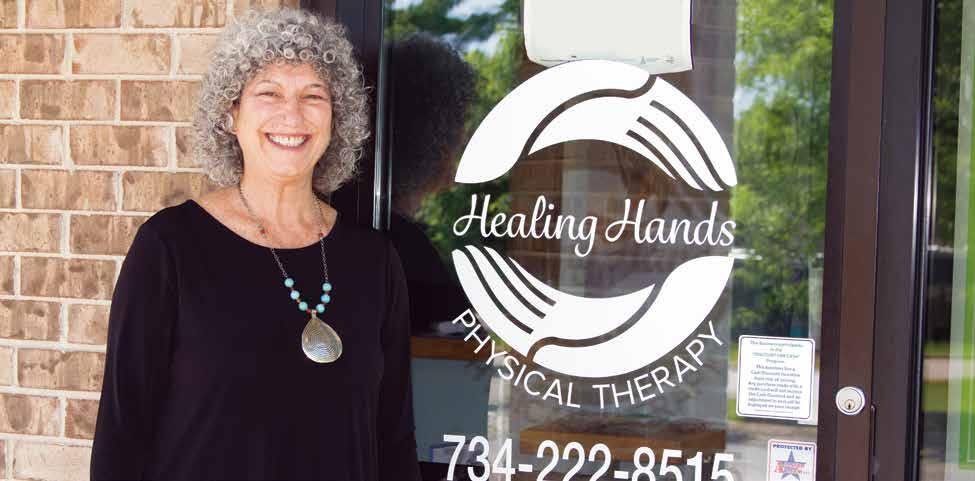
Laser therapy, dry needling, pelvic floor work, cranial sacral therapy, post-Covid recuperation therapy, and orthotics are the latest innovations the team offers on location.
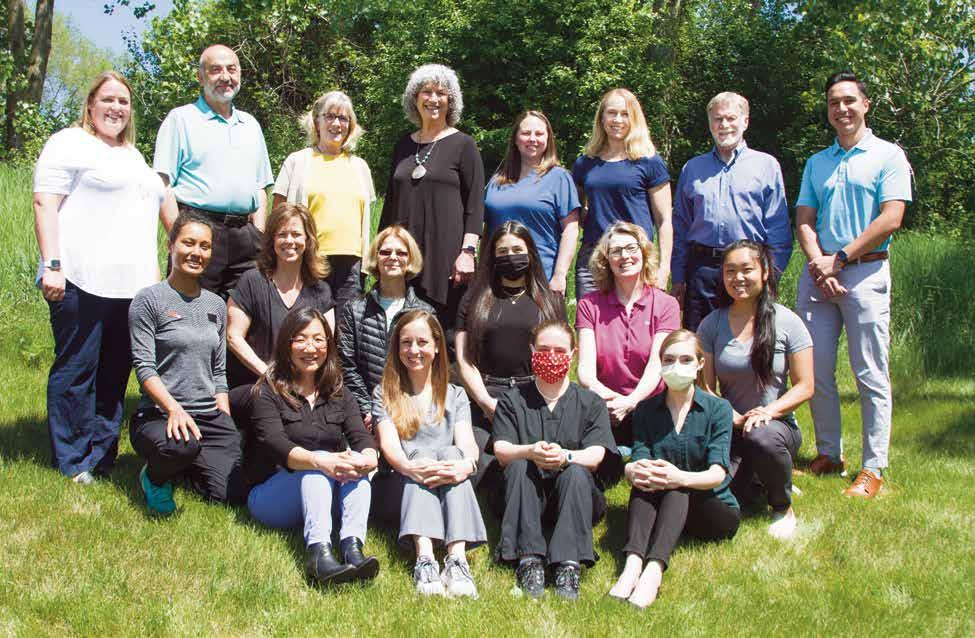
Continued from previous page
believed, if you do the right thing, do good work, do 120 percent—I used to say 150!—and give, then [good] things will come back.” The hard work and good TalHenig has shared her entire life seems to have given back generously across family and business ventures.
Tal-Henig was born and raised in Givatayim, Israel, near Tel Aviv, in central Israel. It is part of a metropolitan area known as Gush Dan. Upon graduation from high school, she served her required two years in the military. “I was idealistic,” she remembered.
“I wanted to help in the best way I could.” For Tal-Henig that meant requesting a transfer from a clerical position to social work, caring for approximately 300 male soldiers in the Golan Heights during a time of political strain. After completion of her service obligation and some personal time for traveling, she discovered her interest in physical therapy. The entrance interview for a program of study revealed what was to become the core of her practice.
“The final interview question was, ‘What do you do for the really frail old man in the chair for whom there is nothing that you can do—no therapy you can give?’” Without hesitation, Tal-Henig recalls, “I said, ‘I could still give him love.’”
One of her first affiliation experiences during training was in a pediatric burn unit. A six-year-old had burned his hand and was hesitant to do the rehabilitation. On their first meeting, suddenly Tal-Henig was inspired to begin identifying each finger as a character with a role in a story. “This one was the king, this one a messenger, food deliverer, and so on,” she demonstrated to me, her eyes taking on the look of one traveling back years, the office walls disappearing. She recalled that even then, a different state had come over her much younger self. “You know when you are really in the zone, you aren’t aware of anything around you.”
At some point, she realized, the nurses in the room had fallen quiet, all observing, as the boy and she worked together manipulating each digit. The mom was nearby crying. At the end of the session, the boy asked, “Will you come again tomorrow?” Tal-Henig reassured him, “Of course I will.”
“It was the transformational moment. I still feel it.” I felt it, too, as we sat in the quiet of the office, with the desk light casting a soft glow over her nostalgic face. Then, she was back in the present with a rush, “I knew—okay, this is what I want to do! That moment changed my life. I felt so aligned with who I am and what I want to do in this world. I am actually in love with the profession.”
“There is beauty in it—certain moments that are transformational—it does something to your heart.” She continued, “For me, every patient is a whole world. I look at the whole patient: the physical, emotional, spiritual, mental, and even sexual [aspects], because I do pelvic floor therapy. I believe it is all connected. In order to heal—not talking about range of motion—you need to address all those issues. I try to connect with all of my patients like that.”
Defining her current focus, Tal-Henig clarified, “Now I’m really working on the business. Originally, I wanted to be the best therapist I could be. Now I want to make it the best business it can be, while maintaining the core values. This sings my heart, to know that the center will continue helping women and the community.”
Tal-Henig’s passionate positivity is reflected in her family, as well as in her life’s work. Isaac (Itzik) Tal-Henig and Amira married in 1983. His job as an engineer for Ford Motor Company brought him to the U.S. ahead of her, as she stayed behind to finish her degree. She took her final exam for physical therapy while holding a ticket to New York for later the same day. A friend at the time asked, “What if you fail the test?” She remembers answering with certainty, “That’s not an option.” That confidence in direction seems to flow across the entire family. Itzik retired last December and now does green woodworking, or wood craft with unseasoned wood, on their 40 acres. Their son Ben earned his master’s in health information, son Daniel is a musician in California, and daughter Alona is designing her life in Colorado as a yoga instructor.
Noel is a Certified Life Coach, a Reiki Master, and holds a Master's in Counseling Psychology.
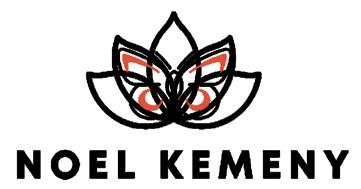
As an intuitive empath, she often receives messages from Spirit to help guide her clients. Sometimes loved ones who have passed come through to offer their love and support. She practices mindfulness and meditation daily and is currently studying interspecies communication.
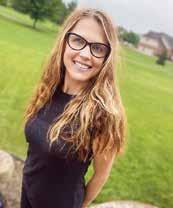
If you are looking for an intuitive coach or would like to explore energy healing with her, please check out her website. She would be honored to partner with you on your healing journey towards the next greatest version of yourself.
Outside of her dedicated work, Tal-Henig enjoys hiking, cooking, traveling, visiting with friends and family, and spending time with their rescue dog, RoZ, a combination of golden retriever and shar-pei. To stay balanced, she exercises, dedicates time to her spiritual path, and sees “one of our excellent physical therapists or massage therapists” as needed.
In listening to Tal-Henig’s stories and her excitement over her family, a constant theme was present: There doesn’t need to be a Plan B: find your spirit’s true Plan A. For example, Tal-Henig had instinctively rejected her father’s suggestion that she
learn typing for a clerical back-up option. She was determined not to enable that path, which seemed so against her inner voice. (Though now she laughs, seeing that typing skills would have been really helpful!) Her children have also listened to their hearts to create their most joyful lives.
When I asked, “How did you teach your children this intuitive, brave spirit—to follow their hearts?” Tal-Henig smiled and partially shrugged. “I trusted my kids. I never felt I knew better. I was there to support them in finding their right path. We come here on a journey to grow up. We try to fit in, but the journey is to undo that.”
In wrapping up, I was curious what final life advice we might glean from Tal-Henig’s vast experiences. She graciously offered, “Listen. Be open-minded. Take care of the earth…please. Every day, try to be the best you can be. Support each other. We are all connected—that is the thing. What one does affects everyone.” She paused for a moment thinking, and then added with a smile, “And always, don’t suffer—you don’t have to have pain. You can come for physical therapy!” We laughed. “No, seriously, pain can be a teacher, but you don’t need to suffer. You can have help.” She concluded with, “Be true to yourself. Design the life you want to live. Take care of self, life, and others.”
Tal-Henig may have arrived in the U.S. carrying “just two suitcases,” but her life experiences and passion for helping others could not be contained nor concealed, and she has years of clients and friends who are ever so grateful.
Browse physicaltherapyannarbor.com to learn more about the team and services Healing Hands Physical Therapy has to offer.

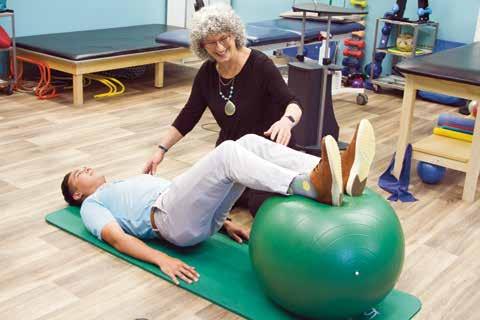
“This sings my heart, to know that the center will continue helping women and the community.”
— Amira Tal-Henig
“… pain can be a teacher, but you don’t need to suffer.”
— Amira Tal-Henig
“When the Covid shutdowns started and Jewish Family Services of Washtenaw County was providing food for more people in the community [than before], JFS asked if we would make phone calls to clients and just kind of check in and see how they were, and did they need anything,” said Phyllis Herzig. (Herzig is a member of JFS’ Board and has had a close association with the non-profit social service agency since its founding in 1993.) “So, I made some calls, and I called this one woman, told her I was calling from JFS, and she started crying and went on to say how grateful she was…she was so lonely and JFS was showing that it cared.”
Caring, in fact, is JFS’ primary purpose. Its stated mission is, “to create solutions, promote dignity and inspire humanity.” Over the past nearly three decades the agency has translated those lofty words into actions that, in 2020, benefited over 20,000 people in Washtenaw County. (That number included 18,500 people who received food assistance, nearly 400 who received mental health counseling, over 400 who received employment/career assistance, and over 1,000 older adults (and their caregivers) who received help with transportation, counseling, food deliveries and other services. 54 refugees were also resettled in this time period.) JFS, which was originally created with just two part-time employees, grew to a staff of about a hundred. In addition, in 2020 nearly 700 people volunteered at JFS in various ways.

as a second language, and through its employment and economic empowerment services, help educating people on issues around financing homes, cars, and educations. JFS provides food to those in need, including from a specialty food pantry stocked with halal, kosher, and gluten free foods, low sodium, low sugar, baby food and formula, and liquid nutrition. They also have therapists providing mental health counseling in four languages.
No one has played a bigger role in JFS’ transformation than Anya Abramzon, the agency’s first full-time employee who has been its executive director since 1997. I talked with her via Zoom and started out by jokingly asking her about her faintly Russian-tinged English.
Slomovits: Your accent tells me that you were not born in Michigan.
Abramzon: No. I was born in St. Petersburg, in Russia.
Slomovits: When did you come to the US?
Abramzon: In 1990.
Slomovits: So, you were in that group of people who inspired the creation of JFS.
Abramzon: Yes, absolutely.
Slomovits: How old were you then?
Abramzon: I was 20, 21 years old. I was finishing my studies at the university in St. Petersburg in history and law, and I came here with my first husband who was a refugee. I was not. So, I had to go through the entire process of applying for political asylum and understanding what it takes. It was a difficult process.
Slomovits: Why Ann Arbor?
When JFS was established nearly thirty years ago its intended purpose was to serve the county’s Jewish residents. Its primary goal was to help resettle Jewish refugees arriving then from the former Soviet Union. (That latter focus had its roots in an older organization called the Soviet Jewry Absorption Committee. See sidebar.)
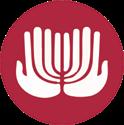

As JFS expanded over the years, its mission, and the clientele it served, changed, and expanded tremendously. The description on the agency’s website reads, “Together, we are strengthening the community by providing comprehensive services to vulnerable individuals and families of all faiths, races, ages, incomes, and abilities throughout Washtenaw County.” That wide variety of support and services includes transportation for the elderly and their caregivers, crisis intervention, resettlement and integration services for refugees and immigrants, teaching English
Abramzon: We first came to Flint, to a very warm, welcoming, very familylike atmosphere.
Slomovits: Did you already speak English when you moved here?
Abramzon: My husband did. I did not.
Slomovits: I’m impressed.
Abramzon: I was able to sort of understand very simple things, but not at the level where I could converse.
Slomovits: What brought you to Ann Arbor?
Abramzon: I applied for school to get my master’s degree and was deciding
Caring, in fact, is JFS’ primary purpose. Its stated mission is, “to create solutions, promote dignity and inspire humanity.”
between continuing with law and history, which was my path prior to coming to the United States [or following a path to social work]. But, being surrounded by all these amazing people who really helped me on my journey, and learning more about Jewish communal service, I started seeing a way for me to connect with what my upbringing did not provide. My grandparents on both sides spoke Yiddish. They did things that at the time I thought were just cute things that they did. Like my grandmother had separate dishes [for meat and dairy—in observance of Kosher dietary laws] and I thought it was like just this funny way of doing things, because it was never explained. With the last name I have, it was already hard enough to be in a Soviet school. We [our family, our whole generation] were robbed of what our grandparents could have given us. It was a big loss, and [in addition to] the horrible sufferings of my family through the Holocaust, losing 18 members of our family, it just felt like I wanted to do something to serve the Jewish community. Then, there was my father, who always wanted me to be a doctor (which I did not have a knack for). The closest I could come to fulfilling his dreams for me was getting a degree [in Social Work] where there was some clinical component—that was the mental health piece. So, in doing that, I sort of honored his wishes for me.
journey and every step of the way there were incredible people who either joined that journey or somehow contributed to that journey for JFS to become what it has become. It’s been like a constellation of stars that came together and made it all possible.
Slomovits: I’m pretty sure that most people would say that you’re being too modest, but we’ll leave it at that. One of the things that impresses me about JFS is that you are a Jewish organization that serves everyone, not only Jews. Would you talk about that?

Slomovits: Did you study at U of M?

Abramzon: Yes, and graduated from the Project Star program, which is now called the JCLB, Jewish Community Leadership Program.
Slomovits: Was it right after school that you started interning at JFS?
Abramzon: For part of the graduate studies (I believe it’s 900 hours) you have to provide services in the field under supervision. I did my internship with JFS, which at the time had a half-time director, Sue Sefansky, and a board of about 20 people, who did everything for the organization, from providing services, to setting out governance, to reaching out to clients. Concurrently, I also took an internship with the Jewish Community Center in Detroit, and I did a summer internship with the JDC (The American Jewish Joint Distribution Committee, the oldest Jewish relief organization in the world). I also went back to Russia to study the Jewish community. That was in ‘94. I graduated in ’96 and worked for Federation Apartments in Detroit and started their home care program. And then I got a phone call from Nancy Margolis, [of the Jewish Federation of Greater Ann Arbor] on my birthday. She said “Anya, let’s meet and talk.” And on April 1st, 1997, I was employed by JFS. The rest is history.
Slomovits: When you started you were a one woman show, and JFS has grown….
Abramzon: It’s really not my doing. I was incredibly lucky. It’s been a
Abramzon: It’s interesting how what we believe in, and what forms our vision, is a compilation of experiences. I had the privilege of not just getting my master’s degree in social work, but also getting a special certificate for Jewish communal service work. I had an opportunity to study the Jewish values side of social work, the concept of Tikun Olam (repair of the world), the greater sense of social justice, even looking at Jewish law, what justice means and how it can only be justice for all and not just for particular people. That was really the foundation, but then there were other things that really helped form my vision for what I wanted JFS to be and become. When I did my internship with JDC, and went back to Russia, I interviewed a number of people who were working in Moscow and St. Petersburg. They were delivering packages of food to older adults. Many of those older Jewish people lived in communal flats. There were so many in there that JDC would feed the entire apartment. And if there were other older people who lived in close vicinity to these Jewish elders, who were also struggling, no matter who they were, they fed them too. I remember thinking, why? The important thing is that we have to take care of our Jewish older adults. Why are we feeding the rest of the people? And I remember this rabbi in St. Petersburg said, “Well, you know, it’s really important to think about the person as a whole. If this person has food, but their neighbors don’t, if that person knows that their neighbors are taken care of too, they can enjoy what we do for them so much more. They’re safer, they’re viewed as part of the ecosystem that we are taking care of.”
And then there is also the practical side of it. As giving, as kind, as generous as our community has been, there are certain things that we are only able to do if we bring in government dollars. To be able to serve this community well, it was important to not only be compliant and prepared to administer government dollars, but that we have the right policies. One of the key policies is that we don’t discriminate. So, from Jewish values, to being able to serve our mission in a sustainable way, those things really come together.

Slomovits: Was that the stance of JFS right from the beginning or did that evolve as it grew?
Abramzon: It grew. When I joined JFS our mission statement was a page
In 2020 nearly 700 people volunteered at JFS in various ways. during Covid JFS had 400 people volunteer for months to deliver meals to those in need.
As JFS expanded over the years, its mission, and the clientele it served, changed, and expanded tremendously.

long. It started out with a beautiful paragraph about the tapestry of our community and how the Jewish community is coming together to give JFS this special mission to take care of its needs, to serve the Jewish community. Over the years, as we were growing and as we were serving more and more people in the community, it became very clear to us that the only way that we can serve this community well is if we serve the entire community—that we can serve the Jewish community only as part of the community at large. If we truly are building our services on Jewish values, Tikun Olam cannot be done in a very narrow way. It had to be applied in a community-wide way. So, right now our mission is really only six words: it’s about humanity and dignity and finding solutions to help people feel loved and cared for. When we describe how we provide employment and provide this and provide that, at the end of the day, what are we doing? We’re looking for solutions and we’re doing it in the most dignified way. Our goal is always to do whatever we do in the most dignified way.
Slomovits: Just the other day, after there was that horrible shooting in Atlanta, JFS sent out an email supporting the Asian-American community. I thought, wow, how, wonderful. And I’ve seen earlier emails about Martin Luther King Day and Black History Month. Everything that I’ve received from JFS is saying that nobody’s excluded.
Abramzon: We really, truly believe that. Today I had the pleasure of speaking with a client whose mental health is, unfortunately, not at the point where I could reason with her. I had to talk to her about not swearing and not saying offensive things to the drivers who were trying to take care of her, who happened to be people of other races. As I was trying to reason with her, she called me names; I was thinking that it’s a great privilege to be in the position where at the end of the day, I still love her. I still want to take care of her. She was saying horrible things to me and I was thinking, “Well, I still care about how you’re going to get to your medical appointments and what you’re going to eat.”
Slomovits: Yes!
Abramzon: There are so many amazing stories… stories of resilience,
No one has played a bigger role in JFS’ transformation than Anya Abramzon, the agency’s first full-time employee, who has been its executive director since 1997.

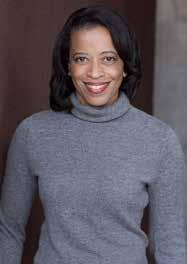
stories of success, stories of struggle and pain. Whether we’re working with Holocaust survivors, who almost eight decades later are still bearing the trauma, or we’re working with people who have just survived horrible atrocities and came to us as refugees looking for a safe haven, at the end of the day, what we do is offer safety. We offer protection, we offer freedom—freedom in the sense that they don’t have to always be in survival mode, that they’re not alone.
During Covid we had to deliver meals and we needed more volunteers. We had 400 people who signed up and continued for months delivering meals. When we had to retool to receive more refugees back in 2016, we had 13 congregations from around Washtenaw County come together, and they are supporting our resettlement work to this day. I think that the agency is a catalyst for people coming together, for people finding meaning, for connecting with values that maybe they didn’t think about but were always there. It was important for them to find something that would allow them to feel that they’re living their values.
We are a cradle-to-grave organization because we do so many things. We have this approach that you treat every person as a whole. We don’t say, well, we do X, Y, and Z, and the rest, you know, go find help somewhere else. We came out of a wraparound model, which worked really well with people who were re-establishing themselves. But then, we learned that it also works really well with older adults, and it works with people who are unemployed. When you can meet as many needs as you can, especially basic needs, through one agency where there’s trust, where there’s understanding, where there’s a connection, it really helps. We also know the things that we are not best at, and we know who our partners are. For example, we don’t provide substance abuse treatment. We don’t specialize in it, but we refer for it and we can provide other kinds of support.
Tuesday, Sept. 28, 2021 — 4:15 - 5:30 pm – Webinar Saturday, Oct. 2, 2021 — 9:30 am - 12:30 pm – Workshop

Winter 2022 — Follow-up Conversation with Dr. Magee (TBA)
Recordings will be made available to accommodate scheduling.
$75.00 per person
Special pricing for groups. Learn more and register at: www.Mc4me.org
GEERS / ESSER FUNDS CAN BE USED FOR THIS THREE-PART EVENT. Social work CEUs and Educator SCECHs will be available.

Slomovits: How do you see JFS evolving?
Abramzon: We would like to be much more involved in refugees establishing their own business opportunities. We want to be able to provide more support for their digital literacy, for all of the things that are above and beyond the initial integration, where you come in and you find a job and you have a roof over your head. But what are the next steps? In the past we felt that when refugees come, it’s important that we get them housing and we get them a job. Once they have a job, they’re going to be fine. And then we’ve learned that it’s really not enough because
“It’s been a journey and every step of the way there were incredible people who either joined that journey or somehow contributed to that journey for JFS to become what it has become.”
—Anya Abramzon
people come with such level of trauma that in order for them to hold a job, they need to start feeling human again. How can we help them start feeling human again? What would it take? Would it take us providing music lessons for their children, or having a group where they can share, making sure that we have an interpreter who speaks their language, not over a phone line, but in the room, holding their hand. What are the pieces that we have to put together for people to be most positioned for success?
With older adults, with caregivers, every time we think about what we do, I think about ten things that we’re not doing yet, and it drives me crazy. (Laughter) We wanted to provide respite services for so many years because we saw caregivers coming to us and after horrible, horrible months, sometimes years, when you don’t have time to get your hair cut, and you don’t have a moment for yourself because you’re caring for your loved ones. And sometimes you have a full-time job [on top of caregiving]. There are so many things that people have to endure. We really wanted to bring respite services, and now that we’re able to do that, we’re already thinking, “It’s not enough, you know, what we do is not enough.”
We’re in the process of building a kitchen because we really want to make meals—medically-tailored meals that would really be best for your diet. Not just something that as a poor person, you get, you say, thank you. We wanted to make sure that we work with your primary care physician. And if you need to be on the low sodium diet, or if it has to be kosher for example, or halal, that we make that happen. We are adding services every day because our community needs it.
Slomovits: That’s wonderful. It really is. You probably hear this, and you and your staff and the board should hear it. It’s inspiring, it’s uplifting. You can look at so many things in the world that are going wrong, and it’s wonderful to hear about things that are going right. Or at least that somebody’s trying to make them right.
Abramzon: It doesn’t mean it’s glamorous or happy all the time. There are problems every day. There are some days that are not that great. But then, at the end of every day, it still feels good to be doing what we’re doing.

Jewish Family Services of Washtenaw County is located at 2245 South State Street Suite 200 in Ann Arbor. Learn more about Jewish Family Services through their website at JFSAnnArbor.org. You can contact Anya Abramzon, Executive Director of the JFS, by calling the office at 769-0209




It all started with a single phone call. Helen Aminoff, who at the time was the administrator at Beth Israel Congregation, remembers that one day in the late 1970s a Rabbi from New York called and asked to speak to Rabbi Allan Kensky. When Aminoff told him that Rabbi Kensky was on sabbatical in Israel, the caller asked if she would be able to help a Russian émigré who was moving to Ann Arbor to work for Bechtel Corporation. Aminoff found housing for the man and his family and then, along with Rabbi Kensky, Claire Bernstein, the late Rae Lampe, and others, went on to establish the Soviet Jewry Absorption Committee (SJAC) of Washtenaw County in 1978. Over the course of the next decade, as thousands of Jews emigrated from Russia, the all-volunteer group helped resettle over 120 families locally, finding them housing, furnishings, medical attention, employment, and teaching English and civics classes for them.
Rabbi Rob Dobrusin, who followed Rabbi Kensky at Beth Israel Congregation in 1988, continued to help with the work of SJAC and says now, “It’s a tremendous story of how many, how effectively, how efficiently, and how kindly immigrants from the former Soviet Union came into the community and were helped and were supported. It’s a wonderful story.”
When JFS was created in 1993, one of its programs was to continue the resettlement work of the committee. Sue Sefansky, now president of the board of JFS, was its first executive director. It was a half-time position then and, as Sefansky recalls now, the resettlement work, “Wasn’t the primary reason for creating JFS.” The tide of immigrants had slowed to a trickle by then and, “There was a sense in the community that we needed something that was really addressing the needs of the Jewish community in a different way than synagogues or the Jewish Community Center could do. We did hire somebody part-time to work on the resettlement program, but we also created other programs. We initiated JDate, trying to connect single Jewish people with each other. We formed a network of Jewish providers who were willing to see people either pro bono or on a sliding scale, and in return we offered a series of trainings, a series of gatherings for Jewish community professionals. We helped support an AA group… we did all sorts of things. And then we found Anya (Abramzon). She was my student and one of the first things that she worked on was a grant to get help with employment. I always say that I’m never sure I would have been able to do what she did. Her way of looking at things was, ‘I can only help the Jewish community if I help the whole community.’ So, it [the JFS] began to move in very different directions and has led us to become the agency we are today, which is open to everybody in Washtenaw County.”
Helen Aminoff adds, “When we started that whole enterprise, [resettling Russian Jews over forty years ago] never in a million years did we think it [our organization] would develop and blossom the way it has now.”
If you ever have days when you’re feeling blue, or become red with passion, a recent resurgence in an antiquated form of spiritual photography says those feelings may not be too far off from reality.
Aura photography has become more and more popular on social media these past few years. The concept, which attracts enthusiasts and critics alike, originated in the 1970s. Unlike thermographic cameras which detect heat, aura photography captures a person’s aura. Aura photography is not a fortunetelling device nor a way to resolve questions. It captures the state you are in, right now, in your most present moment.

The uptick in recent interest in the practice has resulted in a flood of wispy, magical polaroids and inkjet-printed stills, scattered across screen feeds like a cotton candy, psychedelic dream. It’s a versatile practice in that everyone from grandma to teen brothers to Gwynth Paltrow is ready to discover what their own aura can tell them about themselves. But to understand what aura photography is, one must first understand the definition of an aura.
The first entry of the word aura in the Oxford Dictionary defines it to be a noun, meaning the distinctive atmosphere or quality that seems to surround and be generated by a person, thing, or place. Used in a sentence— "The ceremony retains an aura of mystery." The second entry, however, defines the word as a noun in terms of “spiritualism and some forms of alternative medicine:” a supposed emanation surrounding the body of a living creature and regarded as an essential part of the individual. Used in a sentence: "Emotional, mental, and spiritual levels form an energy field around the body known as the aura." Both definitions incorporate this idea of the aura surrounding the body, in one form or another.
While that is true, what remains a constant through the different interpretations is the idea that all things in this universe have energy.
Healthline.com notes that the “interpretation of what an aura is varies among practices and philosophies.” While that is true, what remains a constant through the different interpretations is the idea that all things in this universe have energy. Whether that energy is a reflection of your spiritual and/or physical body is up for debate. In more generic terms, an aura could be thought of as a vibe. If someone is giving off bad or good vibes, that’s their energy, or their aura, that you are sensing. In
short, all things have energy: plants, people, pets, rocks. It’s the way you send out those vibes or energies that manifests as an aura.
Annette Schilz, owner of DNA Sales 2100 in Tecumseh, believes that through aura photography, she can show visitors how to tap into their deeper selves. Specifically, she believes your aura “shows you the energies that you are receiving and sending, and that it changes with your emotional state and your health. Ideally, having a strong aura helps protect and feed your chakras and maintain a good mind, body, and spirit balance.”
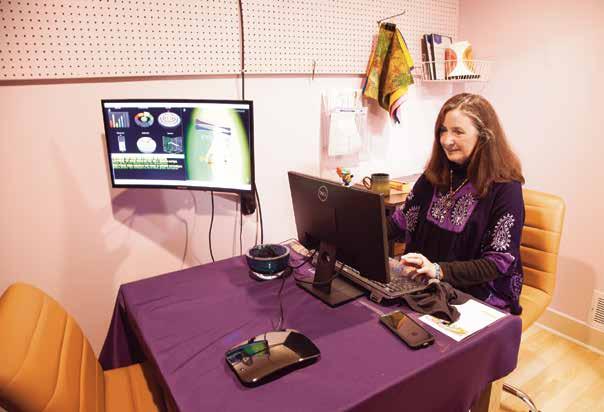

Said Schilz, “We interpret the aura as your energy field around your body. It’s like an emotional gauge, a little bit. You can tell what mode your thoughts are in by what colors are going to appear in the photo, and then naturally your chakras come into play with that, too. To me, they kind of meld together. Each thought or layer naturally goes to a different mode. I believe there are seven layers, which align with your seven chakras.” Those layers are physical, astral, lower mental, higher mental, spiritual, intuitional, and absolute.
Auras can change, second by second. With the use of rocks, essential oils, tuning forks, and more, Schilz can help guide visitors toward adjustments in their chakras, if they seek it. Sometimes, chakras can appear in aura photography sessions as blocked or lesser in levels than other chakras. By aligning those troubled chakras with objects that emit vibrations targeting those areas, anyone can learn how to make small adjustments in their lives to open themselves up to their full capacity, spiritually and otherwise.

“If you happen to get creative one day, and you say, ‘okay I need to do this creative thing,’ that's going to bring in those energies, it's going to change your colors to more creative green hues. And then, if you get into a layer of your mind where maybe you're thinking of someone you love, then that's going to change your chakras. What I love about the photography aspect, is that it gives a great visual so people can see how quickly the aura can change.”
A common question people have coming into aura photography, said Schilz, is, “What can I learn about myself?’”
To read an aura photograph, look not only at the colors and what they represent, but how are those colors haloed around the subject? Colors at the top of the photo represent your consciousness. The color to the left of the subject represents the
Aura photography has become more and more popular on social media these past few years. The concept, which attracts enthusiasts and critics alike, originated in the 1970s.Article and Photos Annette Schilz
energy that’s coming in, or the lens you see the world through. Are you an optimist? A pessimist? The color emanating on the right side of the subject’s body represents the energy that he or she is expelling. This is how the world perceives you. Are you warm and friendly? Or do people generally try to avoid your company? The visualization of an arch represents a goal or an aspiration the subject is perhaps trying to archive.
Is


energy that surrounds us and everything else measurable? And if so, how? As we turn to how the camera captures the aura, we must also examine how an aura manifests itself.


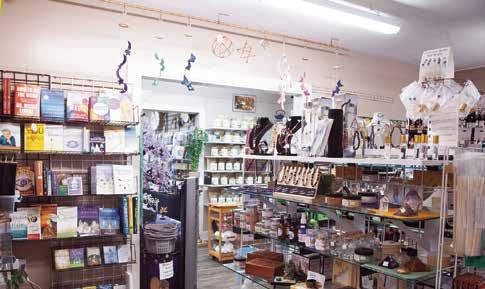
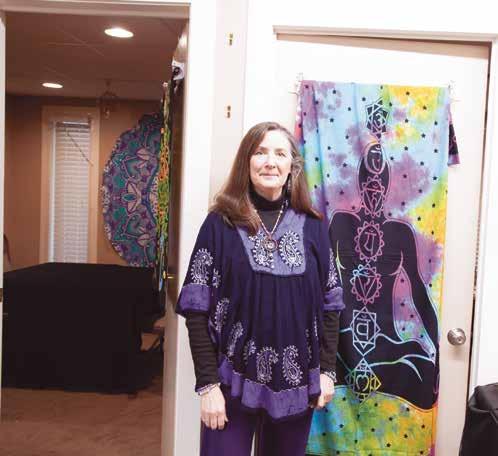
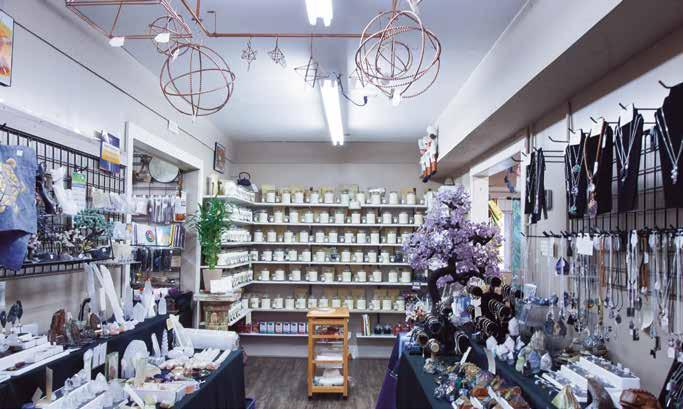
Colors can appear as a solid through the photograph, or can be mixed, a graduation from one color to the next. Red generally means the subjects are passionate but are encouraged to go out into nature to restore a balance in their lives. Orange auras exude confidence but can be emotionally aloof. Tan auras are generally organized go-getters that work best with structure in their lives. Yellow auras are known for their optimistic, warm personalities, which allow people to feel comfortable around them. Green can mean creative or goal-oriented types, but these energies can also hold themselves back. Blue auras are tied to nurturing, sensitive energies. Water activities can make them feel more grounded. Purple auras are the unconventional, non-judgmental types. They are encouraged to keep a journal and to trust in others. A white aura generally means intense energy and cosmic wisdom.
Schilz brings up a story about renowned psychic Edgar Cayce, who allegedly had the ability to ‘see’ auras without any kind of technology intervening. One afternoon, Cayce was going to board an elevator but stopped himself from entering, when he noticed everyone inside had a black aura clouding them. According to Schilz, the elevator line would end up snapping, killing everyone inside.
“Think about the people you surround yourself with,” said Schilz. “If you’re with someone that really brings you down, brings your energy down, and you tell yourself ‘Oh, I’m only around them for a half-hour, it’s okay,’ this practice disputes that. The energies you surround yourself with, do matter.”
Is the energy that surrounds us and everything else measurable? And if so, how? As we turn to how the camera captures the aura, we must also examine how an aura manifests itself.
To discuss the more tangible, scientific side of the aura phenomenon, we begin in Soviet Russia in the 1930s. Born out of Kirlian photography, the aura photograph was conceived when a scientist accidentally charged an object with electricity while sitting it on a photographic plate. The charge created when the two coalesced created a colorful ‘energy’ as the electricity discharged from the plate.
“Ideally, having a strong aura helps protect and feed your chakras, and maintain a good mind, body, and spirit balance.”
— Annette Schilz, owner of DNA Sales 2100
the
Aura photography did not take off, however, until the rise of alternative healing methods, such as crystals, in the 1970s. Guy Coggins took the Kirlian technique and tweaked it to his own camera system, resulting in the AuraCam 3000 (a later version, known as the AuraCam 6000, is still widely used today)
The AuraCam 6000 shows auras evolving in real time. To manifest your aura, you begin by placing your hand on a plate that contains sensors. Those sensors collect deviations in temperature, humidity, and static electricity. These parameters are then projected as a brilliant, colored aura on screen. Other parameters such as aura power, chakra levels, and balance between male and female energy, are also reported by infographs, and are all factored into the color that manifests onscreen and in your aura photo. If chakra adjustments are made during this time, the aura will reflect those changes almost immediately.
perception—helping us to acknowledge the naked energies we all radiate into our world. Perceptions can pivot with the click of a shutter, illuminating our truest selves, and giving new light to what was there all along.”
Schilz said she has been able to help diagnose and treat everything from stomach ailments to hernias in visitors, based on what chakras appear to be blocked or appear as lower levels in their aura photo. Whether you believe in the technology or not, Schilz suggests everyone should approach aura photography with an open mind.

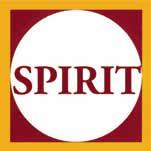
Schilz said she has been able to help diagnose and treat everything from stomach ailments to hernias in visitors, based on what chakras appear to be blocked or appear as lower levels in their aura photo.



While Schilz had an AuraCam that connected to the top of her computer, some practitioners of aura photography use a polaroid to capture auras, since it is more portable and can be used anywhere, as opposed to having a set studio space.
Christina Lonsdale, Portland creator of the popular roving polaroid photography aura practice, Radiant Human, prides herself on being the first “roving, fully adaptable aura photography laboratory” of its kind, in that she comes to you for an aura reading.
Lonsdale claims Radiant Human works as a “conduit for those seeking a new kind of self-exploration—a brief, metaphysical vision quest, compelling us toward a uniquely tangible kind of self-discovery.” She notes that while aura photography can help occupy “the gray space between science and mysticism,” familiarizing ourselves in the practice “immerses us in the quantifiable forces just outside of human
“My whole theory is that we really need to do more on our emotional level,” said Schilz. “I mean, I think that's kind of what's being missed. People are so focused on the physical, but they never really attach any of their problems to the emotional. So, we decided aura photography would be a great tool to help people first visualize and understand how outside problems might be connected to inside emotions, and it starts with getting in tune with the aura.”
Visit DNA Sales 2100 for an aura photograph at 406 North Pearl Street in Tecumseh, MI, between Monday and Friday, 10 a.m. to 7 p.m., and Saturday, 10 a.m. to 6 p.m. To learn when Radiant Human is coming near you, visit radianthuman.com.



If you live in America today, you might have noticed a mental health epidemic unfolding. While debate rages over the cause of the decades-long upswing in depression, anxiety, and PTSD, one thing is clear: most of us know at least one person who has been, at some point, dangerously depressed. Worse still, we probably all know someone whose depression has not responded to first-line medications like SSRIs.
While debate rages over the cause of the decades-long upswing in depression, anxiety, and PTSD, one thing is clear: most of us know at least one person who has been, at some point, dangerously depressed.
Watching our neighbors and loved ones struggling with deep depression can raise existential questions. And indeed, many researchers are asking what we are doing wrong as a society to have so many of our people in these dire straits. Yet, another avenue of research is drawing on the wisdom of previous decades and millennia to treat these seemingly un-treatable conditions.
Plant medicines, including psychoactive compounds, have been used for millennia by indigenous peoples to produce profound changes and healing in their users. In the mid-20th century, a wave of Western academics suggested that newly synthesized hallucinogens could also have profound therapeutic benefits. However, a wave of government crackdowns in the late 20th century made it illegal for even research scientists to possess or administer any hallucinogens, including the plant medicines of indigenous peoples, before definitive results could be found.
The first decades of the 21st century have seen a loosening of these bans, and a subsequent explosion in clinical research into plant medicines and synthetic psychedelics.
The first decades of the 21st century have seen a loosening of these bans, and a subsequent explosion in clinical research into plant medicines and synthetic psychedelics. The results have been astonishing. Medical and recreational marijuana has been legalized across swaths of America with astonishing speed, and early studies of the use of ketamine and psilocybin under the supervision of trained therapists have shown such strong results that both medicines have already been approved for compassionate use for patients in some countries when other treatments have failed.
One of the more remarkable aspects of this research has been the finding that a substantial portion of patients who experience remission of their treatment-resistant depression after using these medicines also have religious experiences during treatment. This has forced some clinicians who make use of them to begin learning about traditional shamanistic and other compatible theologies to help their patients make sense of their experiences.
In this article we’ll briefly discuss the state of research into several ancient and modern medicines whose abilities to open the mind are now being studied by doctors and scientists.
Once demonized as the cause of “reefer madness,” mountains of clinical data have finally convinced politicians that marijuana is no more dangerous than alcohol or tobacco—and has much more medicinal value than either of those long-accepted recreational drugs. Between THC, CBD, and thousands of other unique bioactive compounds, medical marijuana can now be prescribed in many states for the treatment of anything from life-threatening intractable seizures to anxiety and chronic pain.
Far from being the demon it was once regarded, marijuana is now viewed by many patients and doctors alike as a near-miraculous medicine for hundreds of painful and dangerous conditions.
Doctors caution that inhaling smoke is bad for the lungs no matter what is in the smoke, and that the use of psychoactive compounds in pregnant women and children under the age of 18 should be restricted to medically necessary uses because all psychoactive compounds can affect the development of growing brains in detrimental ways.
Far from being the demon it was once regarded, marijuana is now viewed by many patients and doctors alike as a near-miraculous medicine for hundreds of painful and dangerous conditions. Its recreational use is also now considered on par with the use of recreational alcohol in many states.

Long touted as “magic mushrooms,” the many fungi species that produce the compound psilocybin have been used by shamans and psychedelic adventurers alike. Many users have reported profound, life-changing religious experiences—but the potential for life-changing negative experiences including psychotic episodes, suicidal ideation, and seizures have caused shamans and medical doctors alike to advise against the use of these mushrooms by patients who are not spiritually prepared and supervised by trained experts.


Many people who have used psilocybin agree with this assessment. One person, who spoke on condition of anonymity, described her first trip as a bad one. “I felt so incredibly abandoned,” she says, speaking of being left alone by her friends for a few minutes while under the influence of psilocybin. “It was like being a newborn baby and having your mom, who you depend on for life, abandon you. I was in this state where anything seemed possible. And when they left, part of me was like—what if I died? What would happen? I became really curious about that. I thought seriously about the knives in the kitchen. If I’d had better motor control at the time, it could have been very bad.”
Results of recent studies have echoed the millennia-old wisdom of the shamans: the effects of psilocybin appear to be mostly beneficial as long as patients undergo proper mental preparation in advance and are overseen by experienced healers.

But she also reports enlightening experiences with the mushroom when working with a skilled trip sitter. “It’s like being born again,” she said. “And that can be amazing and enlightening, or it can be traumatizing, depending on what’s going on. I was seeing things in a way I’d never seen them before. It was like I was seeing and feeling everything for the first time. I was experiencing things I hadn’t known I could experience. If you’re confined in a closed space and you’re alone, and you feel like you just came into the world and that’s what the world is, it can be the most terrible experience. But if you’re surrounded by beauty and you’re outdoors with someone watching over you, it can leave you with this amazing sense of beauty and awe of life. You experience things you never thought were possible, and you get curious about what else is possible. But if you start wondering what life after death is like, for example, and you’re left alone and unsupervised, it can be very dangerous.”


Results of recent studies have echoed the millennia-old wisdom of the shamans: the effects of psilocybin appear to be mostly beneficial as long as patients undergo proper mental preparation in advance and are overseen by experienced healers while taking the mushrooms. Clinical trials have also found better safety results from excluding patients with family histories of schizophrenia and psychotic disorders from their studies, as the mushrooms seem to trigger latent disease mechanisms in some people with genetic predispositions to those illnesses.
Early studies of psilocybin’s therapeutic effectiveness for treatment-resistant depression and PTSD have gone well enough that the drugs have been approved for compassionate use in a handful of patients. With dozens of clinical trials of psilocybin’s safety and effectiveness set to be completed in the next decade, we’ll soon know more about the reliability and safety of these magic mushrooms.
Mescaline is the main psychoactive ingredient in many plant medicines used for religious experiences in the Americas. The peyote used by the Native American Church under religious freedom laws, and the San Pedro plant used by South American shamans, both feature mescaline among the major players in their psychoactive effects.

For the Native American Church, the sacramental use of peyote with proper training and preparation is intended to heal mental, physical, spiritual, and social ills.

For the Native American Church, the sacramental use of peyote with proper training and preparation is intended to heal mental, physical, spiritual, and social ills. The Native American Church has been able to obtain religious exemptions for the sacramental use of this plant despite it being considered among the most highly illegal substances to possess or distribute in the United States today. To the shamans of the Andes Mountains, ceremonial use of the San Pedro cactus has been used to treat both physical and spiritual ills, with its name, translating to “St. Peter,” deriving from the belief that the plant, like St. Peter in Christian theology, holds the keys to Heaven. The Western medical community has considered mescaline for the treatment of addiction and mental illnesses involving serotonin deficiencies, though its use for these applications in the absence of training and guidance from indigenous practitioners has so far yielded a mix of helpful and harmful results.
Mescaline presents a fascinating case in which spiritual preparation really does make a difference to the outcome from using plant medicines. While the profoundly beneficial experiences reported by America’s First Nations led to a frenzy of medical interest in mescaline, peyote, and San Pedro in the 20th century, preliminary results puzzled scientists. Just like with psilocybin, the reactions of unprepared modern Westerners to these plants could be negative or neutral as often as they were positive. The “disconcerting unpredictability” of the plants’ effects, which included intensely uncomfortable paranoia and potentially dangerous physical side effects in early test subjects, caused research into the therapeutic potential of mescaline to grind to a halt. But why should First Nations people experience a drug differently from modern Westerners?

This outcome is not so surprising when one considers that psychoactive medications work through the method of juicing up existing neural networks. Because many of our brain’s neural networks are built by learning, memory, action, practice, and emotion, it makes sense that people who have certain cultural practices and beliefs would have different neural networks from those who do not. First Nations people raised with cultural practices in symbiosis with mescaline-bearing plants, and who were raised to revere and have positive expectations of these plants from an early age, may well be predisposed to activate certain sacred neural pathways that secular Westerners may simply never have developed when they take mescaline.
Does this mean that only people born into First Nations cultures can enjoy the benefits of mescaline? Probably not—anecdotal evidence suggests that the simple psychosocial preparation granted by participating in Native American Church services may be sufficient to get good results. But people who are not receiving guidance from qualified First Nations practitioners may not be able to use these medicines with the expectation of safety.
It is unclear precisely which practices are needed, or how long they must be practiced, to develop the neural networks that make a great experience of mescaline more likely. Many variables, including what teachings a person has received, what expectations they have built up, and the behavior of the people around them, may affect which neural networks activate in response to mescaline.
So, on this one, it may be a good idea to listen to the First Nations practitioners who have used these plants for millennia. They generally advise that these plants only be used under the supervision of an experienced First Nations practitioner. And the people who recommend that have proven that they know more than modern medical scientists about how precisely to prime the brain to receive therapeutic benefits from mescaline while avoiding the potential dangers of this powerful medicine.
Ayahuasca is a plant medicine whose popularity has exploded among spiritually minded people in recent years. Made from a combination of two local plants by peoples native to the Amazon River basin, ayahuasca, like the other items on this list, is recommended to be prepared and consumed only under the supervision of welltrained shamans.

When used properly, users report profound spiritual awakenings which may include new insights into the nature of reality and/or contact with spirit guides from other planes of existence
When used properly, users report profound spiritual awakenings which may include new insights into the nature of reality and/or contact with spirit guides from other planes of existence. The plant medicine’s physical side effects can sometimes prove dangerous, mostly in people with pre-existing medical conditions or who have other substances or medicines that may interact negatively with ayahuasca in their bodies.
Like psilocybin, ayahuasca has shown early promise in clinical studies. The studies conducted so far have been too small to gather reliable data on this plant medicine’s safety and effectiveness, but their results have been sufficient to prompt much more research which is currently ongoing.
U.K.-based researchers working with traditional shamans at the Riosbo Ayahuasca Retreat and Research Center in Peru are investigating whether ayahuasca can safely and reliably provide therapeutic benefits including long-term improvement of trauma-related conditions, long-term reductions in anxiety, increases in openness to new experiences, and long-term improvements in symptoms of ADHD.
Intriguingly, one current avenue of research is based on preliminary evidence that ayahuasca may be able to reverse epigenetic changes which occur as a result of personal or generational trauma. Severe trauma in one’s personal or ancestral past has been shown to cause chemical changes to DNA which can result in lifelong changes to individual emotional processing, and which can even be passed on to future generations.
While the idea of inheriting ancestral trauma in a literal genetic sense may seem bleak, scientists have also discovered that these chemical changes to DNA can be reversed for oneself, and potentially future generations of one’s family, using certain practices. Practices including certain forms of psychotherapy and physical exercise have been found to reverse the changes to our genes caused by trauma. This means that practices we undertake to heal ourselves may result in lifelong changes to our DNA and may even be passed on to future children who may inherit the healed version of our DNA as a result of the work we do in our lifetimes.
Current studies are working to determine if the epigenetic healing permitted by these practices really can heal our descendants of past ancestral trauma. If this proves to be the case, ayahuasca may prove to be a way of producing lifelong epigenetic healing, not only for ourselves, but for future generations.
As these research studies are completed, we expect to learn much more about the safety and potential benefits of ayahuasca for Westerners not raised in the ayahuasca traditions in the next decade. Interested readers can donate directly to these research efforts by visiting AyahuascaFoundation.org/Research.
Originally used as an anesthetic due to its ability to blunt the sensation of physical pain, ketamine’s antidepressant action, which seems literally miraculous to some patients, was first discovered in the year 2000.
A controversial entry on this list because it is not a plant medicine, ketamine is nonetheless a psychedelic medicine that has been described by Hashimoto in a historical overview published in Psychiatry and Clinical Neurosciences as “the single most important advance in the treatment of depression in over 50 years.” Like psilocybin, ketamine often produces religious experiences and sensations of contact with the divine in patients who may subsequently experience lasting remission of previously life-threatening depression.

Originally used as an anesthetic due to its ability to blunt the sensation of physical pain, ketamine’s antidepressant action, which seems literally miraculous to some patients, was first discovered in the year 2000. Its precise mechanism of action is unknown, but some studies suggest that ketamine may actually prompt brain cells to grow new connections when introduced to the system. This may explain why its effects, unlike those of most mainstream psychiatric medications, persist long after the medication is out of the patient’s system.
Not all patients experience improvement after taking ketamine. In one clinical trial, about three out of ten patients who tried ketamine did not improve. As with the other items on this list, ketamine is authorized to be used only under the supervision of trained clinicians, due to many risks including the risk of contamination with other psychoactive substances and improper dosing from ketamine that is sold illegally.
The benefits of ancient plant medicines remain woefully under-studied by Western science. The intriguing questions raised by research studies to date ask us to go
OFFERING INDIVIDUALIZED MINDFULNESS, MEDITATION, AND TRAUMA-SENSITIVE YOGA DEEPEN
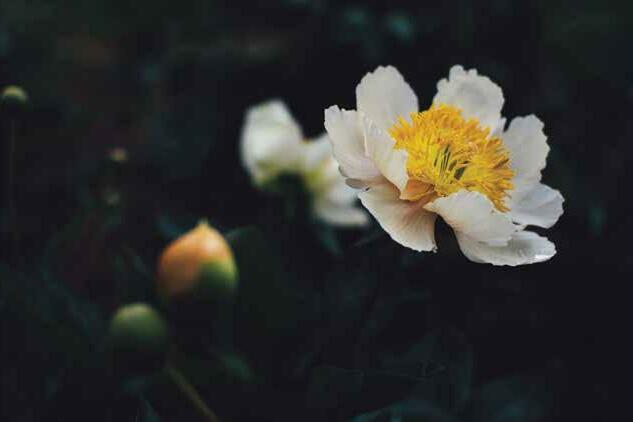
visit www.groveemotionalhealth.com GROVE EMOTIONAL HEALTH COLLABORATIVE

Author Catherine Carr has provided these resources from her research for further reading.
Patel, A., M.D., & Kiriakopoulos, E., M.D. (2018, July). Medical marijuana and epilepsy. Retrieved April 13, 2021, from epilepsy.com/learn/treatingseizures-and-epilepsy/other-treatment-approaches/medical-marijuanaand-epilepsy.
Survey study of challenging experiences after ingesting psilocybin mushrooms: “Acute and enduring positive and negative consequences.” Journal of Psychopharmacology. August 1, 2016. Retrieved April 22, 2019.
Jackson, P. (2020, August 06). Canada approves psilocybin for compassionate use in four patients. Retrieved April 13, 2021, from thestar.com/news/canada/2020/08/06/canada-approves-psilocybin-forcompassionate-use-in-four-patients.html
Abbot, A. (2019, May 23). Pharmacology the long, strange trip of ... - nature research. Retrieved April 13, 2021, from media.nature.com/ original/magazine-assets/d41586-019-01571-2/d41586-019-01571-2.pdf

Campos, Don Jose (2011). The Shaman & Ayahuasca: Journeys to Sacred Realms.
Current Research. (2020, September 30). Retrieved April 13, 2021, from ayahuascafoundation.org/research/ayahuasca-research-at-riosbo/ Hashimoto K (October 2019). “Rapid-acting antidepressant ketamine, its metabolites and other candidates: A historical overview and future perspective”. Psychiatry and Clinical Neurosciences 73 (10): 613–627. doi:10.1111/pcn.12902. PMC 6851782. PMID 31215725.
deeper, questioning the role of our society’s beliefs and culture in the epidemic of mental and spiritual illness we see today. The fact that people raised in Western culture do not always enjoy the same beneficial relationships with plant medicines as the people of the cultures who grew up alongside them should give us pause as we decide what really needs to be changed in our cultures and communities in order to heal our souls.
However, early evidence indicates that some plant medicines and other psychedelics may be our friends in this healing process. The amazing performance of ketamine and early good results from psilocybin studies indicate that we can still use such medicines to access divine healing by any other name.
More research is needed into other plant medicines before we can determine what teachings, beliefs, and practices are necessary to use medicines like ayahuasca and peyote safely in Western society. Still, the tantalizing glimpses shown by these cultures, and the Western scientists who study them, hints at the joyful relationship with the divine and the natural world that may be possible for us with help and guidance from plant medicines and the peoples who use them.
Catherine Carr obtained her bachelor’s degree in neuroscience from the University of Michigan in 2011. She coordinated clinical research studies, including studies of the use of ketamine for treatment-resistant depression, for five years before becoming a full-time writer. Her studies in recent years have been focused on investigating U.S. spiritual circles and their community healing practices. She now seeks to combine the disciplines of clinical research with the wisdom of spiritual traditions in her work.
Over the past six months, we’ve witnessed the transformation from last winter’s dormancy into a lush and verdant summer. We’ve been enjoying the fruits of Nature’s labors—beauty, food, and shade from flowers, vegetables, and trees.
Now is the time in our cycle when all this foliar production returns to earth. What has increased must decrease. For leafy life to begin anew next spring, all this green must become brown and nourish the soil.
Why is it that so many of us persist in thinking that autumn is a sad season? Nature has merely fallen asleep, and her dreams must be beautiful if we are to judge by her countenance.
 —Samuel Taylor Coleridge
—Samuel Taylor Coleridge
There are many fall gardening to-do lists out there. This one aims to bring a new perspective to the get-ready-for-winter action list!
Over the many decades I’ve had my hands in the dirt, scientific understanding of ecology has evolved tremendously, while horticultural practices still lag far behind.
One of the most exciting concepts is how we can help to reverse climate change, simply by growing our plants in healthy organic soil and by following a few key principles. As we know, plants absorb carbon dioxide from the atmosphere, putting it back into the soil. This reduces the excess atmospheric carbon produced from fossil fuels, but only if our gardening practices support the process. Here’s how we can do our part this autumn to benefit our yard footprint.
First, halt the use of all chemical fertilizers and pesticides, if you haven’t done so already. Besides other documented dangers, one way these synthetic products contribute to climate change is by harming soil microbial life. A living soil is essential to plant health
Now
soil-dwelling critters processes the incoming carbon and keeps it in the soil and out of the air. Thanks, fungus! Thank you, bacteria!
Second, add high-quality compost to as much of your soil as your budget and energy allow. Studies show that adding just a thin layer of compost allows the soil to absorb more atmospheric carbon, making your yard a carbon-sequestering superstar! Of course, what’s good for our environment is good for plants and vice versa. Compost adds more microbial life along with organic matter and nutrients. It’s also food for the microbes. Compost is one of the greatest garden investments. It may provide all the nutrition your trees, shrubs, lawn, and perennials need this time of year to tuck them in for the winter.
Your own homemade compost can help, but it is rarely enough for an entire yard. Last spring, I ordered 12 cubic yards of compost from Tuthill Farms in South Lyon. It is a family farm from the 1800s! (They sell bagged compost, too). I’ve also heard really good things about Midtown Composting in Detroit. This company is a real environmental mensch. They go door-to-door to pick up compostables, providing a convenient service, and reducing usable “waste” going to the landfill. If neither of these is your cup of compost tea, choose a high-quality compost from your local nursery. Two bagged composts I’ve tested in my garden this year are Master Nursery Bumper Crop Organic Soil Builder and Malibu Compost Bu’s Blend Biodynamic Compost.
A word of caution: Unfortunately, manure and mushroom composts often contain persistent herbicides such as clopyralid. Use one of the composts above or test a sample of new compost by growing beans in a mixture of compost and soil. If they

Compost is one of the greatest garden investments… Your own homemade compost can help, but it is rarely enough for an entire yard.
grow distorted, the compost likely contains herbicide residue.
Next on our list of fall chores to save our environment and our yard: Cover all bare soil, preferably with plants. In the vegetable garden and elsewhere, plant a cover crop. These are quick-growing plants sown specifically to cover, protect, and improve the soil. They prevent weeds, add organic matter and fertility, and feed pollinators when they flower. They’ll be busy absorbing atmospheric carbon to boot! Two examples for fall are clovers and hairy vetch. Plant 2-4 weeks before the first killing frost. (Our average first frost is October 20). Plant a blend for more diversity of benefits, such as the Cover Crop Mix from MIGardener.com. Some plants in the mix will die after a hard freeze, creating a mulch, and others will regrow in the spring.
The old horticultural recommendation is to rototill the cover crop into the soil in the spring. However, tilling does great harm to our soil, reversing the good work we’ve done. Pulverizing the soil breaks up the magnificent strands of fungal hyphae that support plant life and absorb atmospheric carbon. It destroys soildwelling pollinators and other beneficials. Instead of tilling, we can use a method from permaculture called “chop and drop.” At least a month before you need to use the garden, and before the cover crop goes to seed, use a sharp hoe and literally chop the plants down at the soil level. As you chop, this biomass will drop to the ground and become mulch—more organic matter for the soil!
For bare soil areas in the landscape where you don’t want to plant cover crops, consider planting a native perennial groundcover such as Common Cinquefoil (Potentilla simplex) or Wild Strawberry (Fragaria virginiana).
Although it may seem counterintuitive, fall is an optimum time to fertilize. Think of your plants as bears getting ready to hibernate. By the time you are reading this, we have at least three fewer hours of sunlight since that first day of summer. Plants have detected this too, and they have begun storing nutrients in their roots for the winter. You may need to supply some of these nutrients.

is the time in our cycle when all this foliar production returns to earth. What has
Michigan State University recommends fertilizing lawns in mid-September with a slow-release fertilizer. Organic, dry fertilizers are slow release by nature: they depend on the microorganisms in the soil to slowly transform their nutrients into a form the plant can absorb.
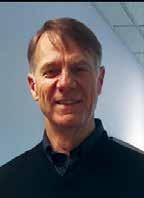
This is how Mother Nature fertilizes. In the untamed areas of our Earth, no human is there (I hope!) with a bag of 10-10-10 fertilizer to maintain the plants. Instead, leaves fall, plants and animals die, animals defecate, and all this is decomposed by microorganisms into fertilizer for the plants. That’s why we use compost, and why organic fertilizers contain ingredients such as bone meal and chicken manure. Organic fertilizers mimic nature’s exquisite system. To get the most out of fall fertilizing and avoid waste, apply before early October. The pelletized fertilizer I use for lawn, trees, shrubs, and perennials is Espoma All Season Lawn Food.
If you’ve been fertilizing organically and/or using compost for three years or more, and your plants are looking healthy, your landscape has likely become more naturally self-sustaining. Bravo! You may only need to fertilize trees, shrubs, and perennials this fall at half the recommended rate, if at all.
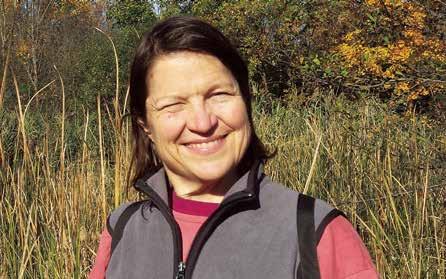

I can hear your trees now, “I’ve been working hard all summer to produce this rich organic matter for us, and this is the thanks I get? You’re bagging up my leaves and shipping them away?”


Studies show that if tree leaves are mulched into the lawn, they:
• Add about 2% Nitrogen fertilizer
• Improve soil texture (drainage, water-holding capacity, “sponginess”)
• Help prevent weeds
• A specific mulching blade kit may be available for your mower.
Meanwhile, are you dreading—or looking forward to—all of the tidying up chores this autumn? Before you get out the leaf rake and loppers, pause for a moment. Consider this, from a Xerces Society article entitled, Put Down Those Pruners: Pollinators Need Your Garden Garbage!
Cut down the stalks and stems bees are nesting in too soon in the spring, or while the bees are settling in for the winter, and its game over for your pollinator pals. Apply a thick layer of wood mulch over the top of ground nesting bees (70% of native bees are ground nesting), or till your garden in spring or fall, and you’ve wiped out your best allies including bees who emerge early in the spring to pollinate….”
Leave the leaves wherever you can. Allow leaves to be your mulch, providing habitat for “salamanders, chipmunks, wood frogs, box turtles, toads, shrews, earthworms, millipedes and many insects species, … (and) many butterfly and moth species, ... such as Luna moths, great spangled fritillaries, woolly bear caterpillars (which become Isabella tiger moths) and red-banded hairstreaks.” Rake leaves wherever you must, to comply with homeowner association rules for example, but keep them as composting material and/or mulch for your beds. Meanwhile, share Xerces Society information with your neighbors and Homeowners Association. All of us play a part in helping horticulture evolve past harming our ecosystem.
If you’re getting compost for the rest of your yard, get some for the lawn too. Add a sprinkling across the lawn—less than a half inch. Compost microbes help decompose thatch and those mulched leaves.
Make sure you are mowing high. Let grass grow to at least four inches before mowing down no shorter than three inches. As Jeff Copeland of A-1 Organic Lawns says, grass blades are the “solar panel of the plant.” Scalp the lawn or mow too short, and you’re removing the “business end” of the plant. You’re also exposing more soil to sunlight, drying out turf, damaging soil, and promoting weeds. Grass becomes stressed, becoming more susceptible to diseases and pests. Increase the lawn’s solar energy inputs this fall, storing them in roots for winter.
The dormant season is a time to think about maximizing your yard’s ecological services. First, assess just how much lawn is needed. Lawn is great for walking barefoot and for kids and dogs to play on. However, the lawn is “an ecological dead-zone,” as Xerces calls it. It supports very little—if any—diversity of life. Plan new spring planting areas to replace the lawn—woodland gardens in the shade or vegetable, herb, or pollinator gardens in the sun. In these areas, scalp the lawn now, and add compost and mulch; this will reduce your efforts in spring.
Plant more native trees now, being mindful of their maximum size. If you don’t have some already growing, throw white clover seeds in the lawn. Their flowers— along with dandelions—are one of the first nectar sources for hungry bees in early spring. You can find white clover seeds at MIgardener.com.
With all the extra time you’ll have by not raking, pruning, and tidying up, there’s more time to enjoy this annual transformation. Take a hike and get some design inspiration. Share the beauty of life in nature with a young person. Make a big mug of your favorite hot beverage and make art of any kind—poetry, song, or cooking. Share the bounty of your garden and yourself with others.
I have made a lot of modifications to my at home work space to be more body friendly. At the end of nearly every day I am finding my upper back tight. Is there something that I can do to alleviate that part of the body as I work on changing up my remote space?
Doug, Ann Arbor
Dear Doug,
Whether you're a seasoned yogi or getting ready to roll out your mat for the first time, here you'll find a variety of useful tips from local yoga instructor, Katie Hoener.
Namaste Katie,
One of my online yoga teachers is consistently talking about “lines of energy” and I think I get the concept, though I would like to hear a little more about that, and how it fits in more than just feeling a certain direction of movement, if that makes sense.
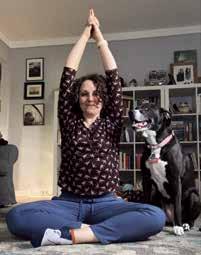
What a great observation and inquiry. Yoga is a philosophy deeply connected with energy bodies. When we discuss the chakras, those are energy centers in the body. Nadis are energy points in the body, and three of those lines are central in our study of yoga throughout its history, the Ida, Pingala and Sushumna Nadi are energy lines that crisscross at the chakras, creating powerful places to tap into.
Namaste Katie,
I am finding myself so scattered with my new schedule. My partner is telling me, and I do not think they are far off, that I need something grounding. I am finding that the breath practices that I am accustomed to are not holding my attention as I move from place to place. Do you have anything that is really stabilizing?
Thanks, Greg, Ann Arbor
You are hitting on something that many are experiencing. These ongoing adjustments to changing work, family, and home environments are leaving our bodies feeling tight for many reasons. Whether that tight sensation is in the rhomboids, the trapezius, or deeper in the muscles of the spine, a nice posture to support the remote work environment is a Sphinx or a Cobra posture. This posture may be a bit more challenging at a work location, as it does traditionally involve the body being on the floor.
Begin on the floor, resting the face to one side. For Sphinx Pose, slide the hands forward until the elbows are under the shoulders, or in front of the shoulders, this will vary on the height that feels right for your body. On an inhale press through the palms and forearms lifting through the heart. Gaze can be forward or toward the floor, whichever feels better for the neck.

For Cobra Pose, Bhjuangasana, the hands remain under the shoulders, or thereabouts, based on the comfort of your body. On the inhale in this posture, the pressure through the hands is light, and the lift comes more from the glutes and the low back. We continue to lift through the heart, creating space and opening through the upper back. In both postures
hold as long as feel safe and comfortable. Lower down and switch rest sides in between. If a counter pose is needed a Child’s Pose, Balasana, is a great space in between. Take that break for yourself.

When your teacher states “lines of energy” there may be a reference to these pivotal lines of energy in the body. However, there may be another direction they are taking with this. Erich Schiffmann in his book, Yoga: The Spirit and Practice of Moving into Stillness describes lines of energy as having three distinct elements in terms of an asana practice. The characteristics he describes are 1) “relaxed as possible” finding a way to soften the body and the breath together. 2) We want to find “desired intensity”—that place within the posture where we are utilizing the amount of energy that is needed for the pose, no more, no less. 3) Schiffmann outlines “alternating current,” where we expand the pose with the inhale, and soften and relax with the exhale, using the breath to align ourselves within the posture.
If your online class allows it, it may help to ask your teacher where they are going in conversation with “lines of energy” as the options truly are endless in yoga. This is a beautiful and constant exploration.
The transition spaces this last year and a half have been so challenging. Grounding exercises are a lovely way to come back into our own body and feel a little more settled. As you mentioned though, some days they work quickly and other days they take more time. Those exercises that are familiar to you may take more time and patience, which I get is a struggle in this rapidly shifting environment.
If time is not what you have, a great technique that you
may not have tried yet is Mountain Breath. This breath practice gets us right into that solid grounded space, while also offering the opportunity to feel expansive and vibrant. We sit where we are comfortable, a chair with our feet on the floor, or on the ground if that works for our body and for the space we are in. Take a few moments for a few rounds of Ujjayi breath, or a few deep inhales and exhales with sound. On an inhale, raise arms overhead, interlacing the fingers, with the index fingers pointing toward the sky. Engaging the pelvic floor, hold the inhale as long as you feel comfortable. Exhale, and let the arms slowly drift back to the floor. Take a few rounds of this Mountain Breath and see if you can move the breath deeper into the body.
Another way to develop that present moment awareness in this posture is to pay close attention to the pauses. Allow ourselves to notice how we feel. Can we take the time to settle into the space that we are in? Into the here and now? For that truly grounded space this breath work is practiced seated. That said, Mountain Breath can be practiced standing for a change of pace. See what helps you feel less scattered and stick with it.
Katie Hoener is an RYT 500, receiving her 200 and 500 hour trainings. She is also a Licensed Master Social Worker and a partner at Verapose Yoga in Dexter (veraposeyoga.com). Please send your own yoga questions to katie@verposeyoga.com.

These ongoing adjustments to changing work, family, and home environments are leaving our bodies feeling tight for many reasons.
If time is not what you have, a great technique that you may not have tried yet is Mountain Breath.
Yoga is a philosophy deeply connected with energy bodies.

Rinpoche has an impressive resume of lifelong monastic and religious studies starting at age five, when he entered Drepung Loseling Monastery in Mundgod.


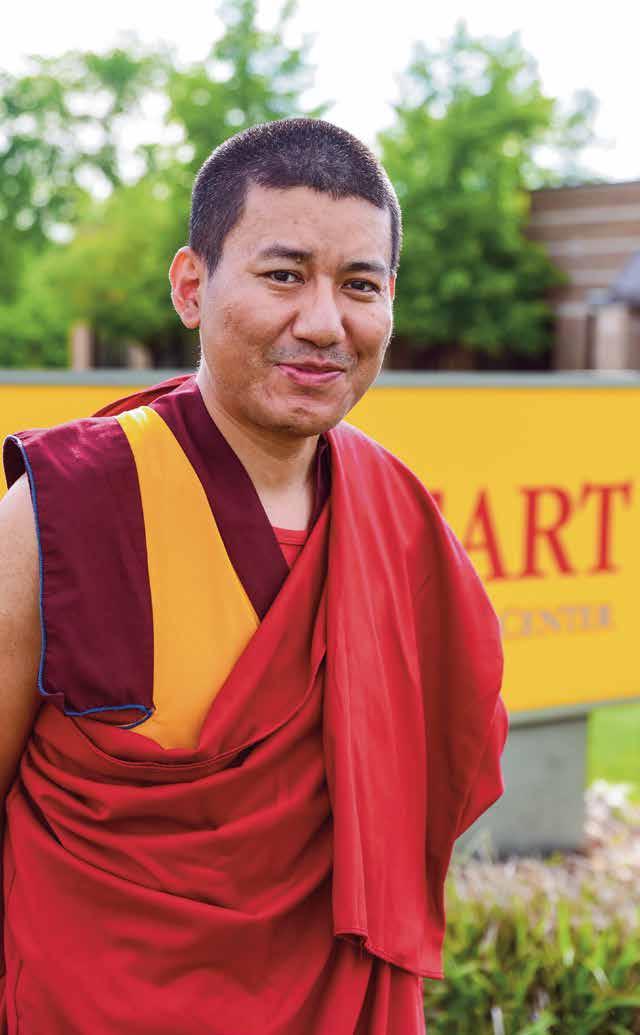

 By Madonna Gauding Photography by Hilary Nichols (and other photos courtesy of Jewel Heart)
By Madonna Gauding Photography by Hilary Nichols (and other photos courtesy of Jewel Heart)
(Editor’s Note: Here’s some historical context for this indepth interview with Demo Rinpoche, Resident Spiritual Director of Jewel Heart Tibetan Buddhist Learning Center, based in Ann Arbor. Jewel Heart was founded in the mid-1980’s by Gelek Rimpoche, Aura Glaser, and Sandra Finkel. Gelek Rimpoche was an incarnate lama within the Gelugpa tradition of Tibetan Buddhism. “Rinpoche” means “previous jewel” in the Tibetan tradition, and it is an honorific most often given to someone recognized as a reincarnation of a previous master.
Jewel Heart has had an impact not just locally, but nationally and internationally, as a center for Buddhist teaching.
A few years before Jewel Heart’s founding, in 1982, Aura Glaser founded Crazy Wisdom Bookstore, which she located on East Ann Street. She moved the store to North Fourth Avenue in 1984. Glaser sold the bookstore to Jonathan Ellis and Bill Zirinsky in 1989. Jon Ellis departed after four months but has remained a trusted mentor. Bill Zirinsky and Ruth Schekter, husband-and-wife, have shepherded forth the bookstore for the last 32 years. They moved the store to Main Street in 1999 and added a Tea Room. The Crazy Wisdom Journal began in 1995. In its January thru April 2001 issue (# 17), the cover story was Zirinsky’s multi-dimensional 16,250 word interview with Gelek Rimpoche. It is still available on our archive at: http://bit.ly/gelekrinpoche. So, Crazy Wisdom’s connectedness to Jewel Heart goes back many years.)
Demo Rinpoche, a 40-year-old Tibetan Buddhist monk and incarnate lama, who has spent most of his life studying in monasteries in India with thousands of other monks, and under the Dalai Lama’s direct supervision, now lives on his own in a simple apartment in Ypsilanti, Michigan. He is the nephew of the late Gelek Rimpoche, founder of Jewel Heart Tibetan Buddhist Learning Center. Since 2018, he has served as Jewel Heart’s Resident Spiritual Director. He is available to teach anyone who would like to learn about the Tibetan Buddhist path.
Rinpoche has an impressive resume of lifelong monastic and religious studies starting at age five, when he entered Drepung Loseling Monastery in Mundgod. He officially joined the monastery in 1987 where he spent nearly thirty years of uninterrupted education in meditation, debate, memorization, philosophy, and composition under the Dalai Lama’s direct supervision. After completing his studies at Drepung, Rinpoche received the highest monastic degree of Geshe Lharampa from Gelugpa University in India in 2011. He continued his studies at Gyume Tantric College and was a visiting scholar under the auspices of the Dalai Lama at Sarah College of Higher Tibetan Studies in Dharamsala. At the request of the late Gelek Rimpoche, Demo Rinpoche came to the United States, where he received his master’s degree in InterReligious Engagement from Union Theological Seminary in New York City in 2018.
Please note: Demo Rinpoche spells “Rinpoche” with an “n” while Gelek Rimpoche spelled “Rimpoche” with an “m” later in his life.
Madonna Gauding: Hello Rinpoche, it’s great to have this opportunity to talk with you. I would like to introduce you to the Crazy Wisdom community, let them know about your background and how you came to teach at Jewel Heart Tibetan Buddhist Learning Center in Ann Arbor. Let’s start with your relationship to the late Gelek Rimpoche, the founder of Jewel Heart, who passed away in February of 2017. Can you tell me how you are connected?
Demo Rinpoche: In this life, Gelek Rimpoche was my uncle. I am the son of his youngest brother. That is one relationship. Then, in the Tibetan Buddhist tradition, we have this system of reincarnation. In that system, I am the reincarnation of Gelek Rimpoche’s father, who was also my grandfather, the late Demo Rinpoche. My grandfather was the 10th reincarnation of the first Demo Rinpoche, and I am the 11th.
Madonna Gauding: When did you first know your uncle, Gelek Rimpoche?

Demo Rinpoche: I met him for the first time in India, in 2001, when I was about 20 years old. At that time, he invited me to visit him in Ann Arbor and to meet his students at Jewel Heart. My first visit was in 2006, and after that, I visited him often, about every two years. During that time, he encouraged me to consider a Western university degree after I completed my monastery training. In 2016, at his request, I began my studies toward a master’s degree in Inter-Religious Engagement at Union Theological Seminary in New York. Unfortunately, my uncle, Gelek Rimpoche, passed away in 2017. It was his wish that, after I finished my degree, I make myself available to teach Jewel Heart sangha members. Even though Jewel Heart has branches in New York, the Netherlands, Singapore, and elsewhere, I felt it would be best to be with the community in Ann Arbor. In 2018, after I completed my degree at Union Theological Seminary, I moved to Ann Arbor and became the Resident Spiritual Director of Jewel Heart.

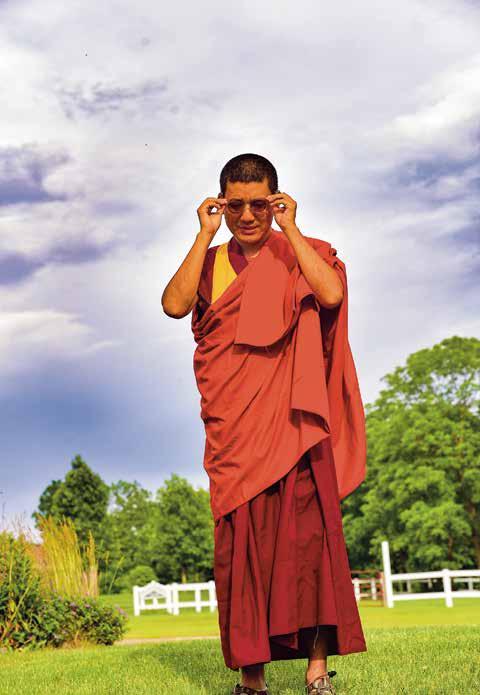
Madonna Gauding: A lot of people are intrigued by the reincarnation system in Tibetan Buddhism, so I would like to explore that a little further. How old were you when you were identified as the reincarnation of your grandfather, the 10th Demo Rimpoche?
monastery, I was a little kid and not yet capable of learning Tibetan philosophy and dharma teaching. So, my first years were spent learning how to read, write, and memorize. Then, when I was ten years old, I started my formal monastic training and began attending dharma teachings. I lived and studied there for quite a long time and eventually received the highest monastic degree, the Geshe Lharampa degree, in 2011.
MG: I understand that monastic training involves a lot of memorization. That’s something we don’t do in the West. Our kids rarely learn to memorize. After you got your Geshe Lharampa degree, you went on to study at the Gyume Tantric College in Karnataka, India. Was the training different than at Drepung Loseling?
Demo Rinpoche: I was about five years old when several incarnate lamas recognized me as the reincarnation of Demo Rinpoche. They felt I was different than other kids my age and saw several other signs that led them to that conclusion, but they wanted to know if His Holiness the Dalai Lama would agree. Around that time, my parents had wanted to visit His Holiness and they took me with them to his residence in Dharamsala, India. The first moment the Dalai Lama saw me he said, “Welcome Demo Rinpoche!” That was a bit of a shock. Six months after that meeting, after conducting special meditations and tests, the Dalai Lama confirmed I was the reincarnation of my grandfather, and I became the 11th Demo Rimpoche. After my official recognition, His Holiness arranged for me to go to Drepung Loseling Monastery in Mundgod, India because, before the Chinese takeover, when Drepung Loseling was in Tibet, all the Demo Rinpoches had trained there. So, in 1987, at the age of five, I joined Drepung Loseling.
MG: Was it hard to leave your parents and your family at such a young age?
DR: In the beginning I missed my parents, but after a short while I became used to life in the monastery. None of the other kids had their parents with them and my tutors took good care of me, so I didn’t feel lonely. When I first came to the
The first moment the Dalai Lama saw me he said, “Welcome Demo Rinpoche!” That was a bit of a shock.
—Demo Rinpoche
I can find comparisons and connections between Western science and Buddhist philosophy, and I think that is very special.
—Demo Rinpoche


DR: Both the training and daily life were different at Gyume. We had some religious studies, but we spent a lot of time doing spiritual practice, saying long prayers and sadhanas. We would get up really early in the morning, sometimes one or two a.m. They would tell us at the last minute in the evening when we were going to be awakened the next morning, and it would be different every day. We would be in prayer session until the afternoon, maybe three or four o’clock. It was really just a lot of intensive practice. We could take a break for maybe 15 minutes. That was it. At Drepung Monastery, we had our daily spiritual practice, but we spent a lot of time in teachings. Then, we would also practice debate. Our way of debating is a special invention of Tibetan Buddhism. In India, there had always been religious debate, where two people would present opposing views of a topic. The Tibetan system is unique. It is very formal and physical and takes place outside in a debate yard. There are lots of rules. One person sits and the other stands, and every point the
We were not allowed to bring any books or notes into the debate yard, so everything had to be in our head. As you mentioned earlier about memorization, you have to rely on your memory of basic texts and other material to make your points.
—Demo Rinpoche

standing person makes, he has to make a hand gesture and move in a certain way. He is required to follow certain rules of logic, and to use certain language. This is a very active and dynamic form of debate. There is no way one can debate in a sleepy mood. We were not allowed to bring any books or notes into the debate yard, so everything had to be in our head. As you mentioned earlier about memorization, you have to rely on your memory of basic texts and other material to make your points. Without memorization it is very hard to debate.
MG: It sounds like the Tantric College was much more practice oriented.
DR: Actually, there are two kinds of monks at the Tantric College. Some are long term. They study for ten or fifteen years. And then there are monks like me who had just completed their Geshe Lharampa degree at another monastery. We already have a lot of training, so we only spend a year there. Every month we study a different practice.
MG: After your time at the Tantric College did you go back to Drepung?
DR: In 2013, I went back to Drepung and worked for the monastery’s examination board. All Geshe Lharampas are required to do this, however, because I am an incarnate lama, I could have been excused from it. One of my teachers said to me, “So far you have been conducting yourself as an ordinary monk. You never took advantage of your position to get out of exams or other work. This is your last job at the monastery, so you should do it and complete it.” He thought I had handled myself well and I am happy I did it. His Holiness wanted me to serve on the examination board as well.

My job on the examination board was not that long, but it was an important job, and a big responsibility. At Drepung, everything depends on the annual exam. I was in charge of administering the exam to 1,500 monks. I had a team working with me. We had to not only administer the exam, but also make the results clear. Our team worked together well, and all of the monks were satisfied with the process. The exam is so important that if you fail the exam you have to wait a year to do it again. It can impact your whole life. If you did poorly on the exam, made many mistakes or couldn’t finish it, you may be assigned a job by your superiors you don’t really want to do.
MG: What did you do after working on the examination board?
DR: I was told by his Holiness the Dalai Lama that after I finished my Geshe Lharampa degree and other responsibilities, that I should come to see him. So, in 2014, I went to Dharamsala to discuss with him what I should do next. I asked him if I should focus on learning a language, like English or Chinese, or if I should focus on meditation. He said I should focus on my language skills and arranged for me to study at Sarah College for Higher Tibetan Studies in Dharamsala where I studied English and Chinese. At the same time, I was a visiting scholar there and taught Tibetan Studies to other students.
As I mentioned before, Gelek Rimpoche had been encouraging to me to get a Western degree, preferably one focused on studying other religions, and by 2016 I felt my English was good enough to go to university in the United States. I looked at a lot of different schools and settled on Union Theological Seminary at Columbia University in New York City. Gelek Rimpoche helped me get into the master’s program and sponsored me while I was there. The school was a very friendly and welcoming place. It was very open to students from different cultures and backgrounds, and we had a very diverse student body. There were different races
In the West there is a tremendous focus on making money. In this country if you don’t have a proper job your life will be very difficult… So here, in the United States, people need a practice that will help them calm down, slow down, get some perspective, and feel some ease in their life.
and ethnicities, men and women, and LGBTQ students. I learned a lot, not just about other religions, but about how different people think and feel. So that was a good experience.
MG: Clearly, you’ve been on a wonderful, long journey of religious study and learning. So now you are the Resident Spiritual Advisor of Jewel Heart in Ann Arbor. Do you see any unique problems that American Dharma students have in their spiritual and daily life?


DR: After being here for a while, I noticed certain difficulties in the West, one is that everyone is running. They cannot stop running. Running is part of this culture. Whether they are dharma students or college students, most have taken out big loans and they have to work to pay them off. In the West there is a tremendous focus on making money. In this country if you don’t have a proper job your life will be very difficult. Because of that a lot of people have stress—financial stress, stress over politics, family problems. So here, in the United States, people need a practice that will help them calm down, slow down, get some perspective, and feel some ease in their life.
In Asia, Tibetan Buddhists attend teachings because they think it is the “holy” or “auspicious” thing to do. They cling to their tradition, their clothes, their language, their rituals, because it is comfortable and familiar. They are not necessarily looking for help with their personal problems through study of the dharma. They prefer to say prayers because they feel teachings are long and boring during which they will often talk a lot and not listen. Dharma students are different in the West. You are not clinging to a tradition. You don’t necessarily think of practice or teachings as holy or auspicious although after you practice for a while, you may come to that feeling. Mostly, you are motivated to study the dharma because you are looking for help with your problems, and to make sense of your life.
When I studied different religions, it became clear that they all have their own way of helping people. Buddhism may not work for some, but another religion or spiritual practice might. People say, “I was born a Christian, or a Jew, or a Muslim or a Buddhist” but actually we are born as a human being. You are born into a family that may follow a particular religious tradition, but you may end up in another that serves you better. You can make a choice. Surely in Buddhism we have a basic foundation of non-violence and compassion. But that doesn’t make it special, other traditions have that as well. But if you want to go deeper in Buddhism, you can—as deep as you want. It is interesting for me as a teacher. If you don’t want to go beyond the basics, I am fine with that. That is your choice. But if you want to go farther, if you want to go deeper, you can. That is available to you.
MG: I’ve heard you are very interested in the arts, that you are a photographer, that you like to draw, that you like to write poetry. I’m wondering how your spiritual practice influences your creative expression. Do you see your art as an extension of your spiritual practice?
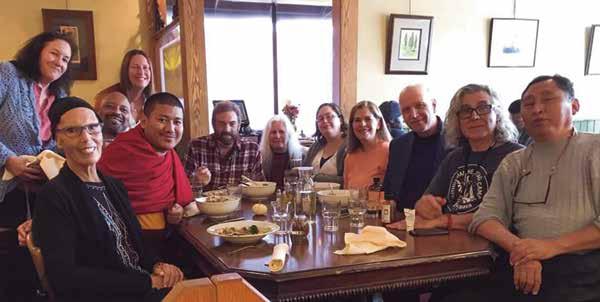




In the lobby of the Jewel Heart Center in Ann Arbor, a few members of the local sangha with Rinpoche after his November 29, 2019 program in honor of the 600th anniversary of Je Tsongkhapa, the founder of the Tibetan Buddhist Gelugpa tradition.
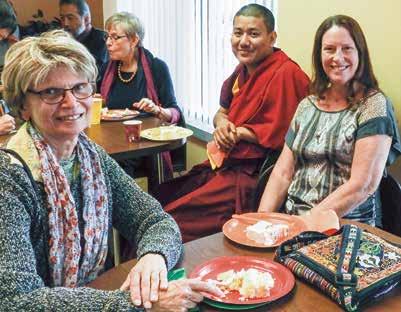




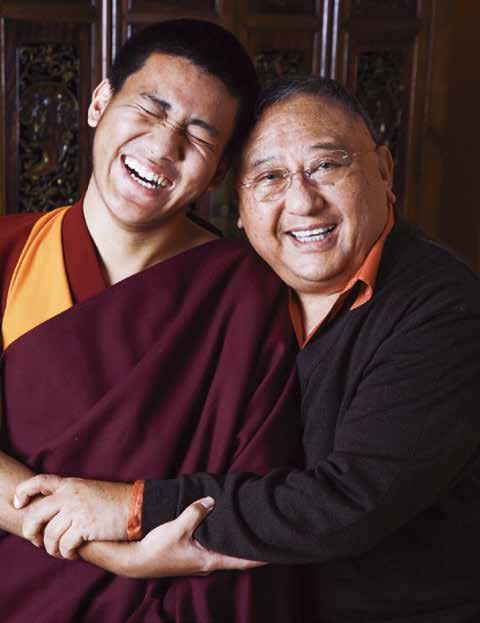


DR: When I was a kid, I was a little bit different. I was more of a creative person. I wanted to create my own things, I wanted to make things by my own hand. I liked fixing things. If I got a toy, I would take it apart and see how it was put together. Later on, I started writing poems. I’m not really a good poet, but I like to write poems. If I want to express something, I write a poem. The drawing I do is kind of a funny thing because I never learned art. But when I see something in my imagination, immediately I want to draw it. Most of the time I finish it in two or three minutes. My drawings are very small. I don’t do big paintings. I chose photography over art as my main expression because I didn’t want to spend that much time making art. With photography, you can make an image in a really short period of time.
As far as my spiritual practice informing my art, when I write a poem, surely a lot of things are coming from my Buddhist background. I may think “Oh, this is a symbol of suffering, or impermanence, or the mind’s negativity.” In my photography it is the same. My dharma training influences both my poetry and my photography, especially things that are hard to explain through ordinary language. I get an image in my head and I want to create it. I also take photographs simply because I enjoy it. Photography takes me into a different kind of world. My focus is on the picture and the subject and I’m not thinking about anything else. Sometimes I call my camera “my friend.” Some people like to hang out with their dog. I like to hang out with my camera. After I take a picture, I may not look at it for a long time. It will just stay on my hard drive. I think it’s the process of taking a picture that I like. Poetry is my “weekend friend.” When I was in the monastery, my teacher told me not to write so much poetry, and that I needed to focus on my studies. So, I decided I would not write on weekdays, just weekends and holidays, which I still do.
I studied different religions, it became clear that they all have their own way of helping people. Buddhism may not work for some, but another religion or spiritual practice might.

 —Demo Rinpoche
—Demo Rinpoche
MG: I have also heard you are interested in science, and environmental issues.
DR: We can’t ignore climate change. We have to talk about it. Nobody can ignore that. Add to that toxic landfills, and the extinction of animal species. Because we live on this earth, we are at the very least responsible to learn about these issues, care about them, and talk about them. About science in general, since I was a kid, I’ve always been a curious person. When I was five or six, I wanted to know if the Earth was round, how the sun goes across the sky, and the moon goes through its phases. I was fascinated that the earth was round and if you traveled as far as you can in one direction you would end up in the same place. Later, I studied cosmology on my own, and how the universe functions. I had a hard time explaining to some very old monks, things like a solar eclipse, or the phases of the moon. Having no Western science education, they thought the moon physically gets bigger and smaller. I would try to explain by rigging up light bulbs with shapes blocking the light and so on. They liked learning Western science because Buddhist cosmology doesn’t explain these things. They liked to argue and it was fun trying to explain things. His Holiness has always been interested in science, not so much in cosmology, but in how things exist, and if they truly exist or not. He is interested in quantum physics and how it relates to the Buddhist concept of emptiness. I can find comparisons and connections between Western science and Buddhist philosophy, and I think that is very special. I’ve attended some of the Dalai Lama’s Mind and Life conferences (mindandlife.org) which try to bring Western science and contemplative wisdom together.
MG: I’ve heard you are fond of dogs. Is that true?
DR: I’ve had many dogs in my life. We had a dog in my family and we really cherished that dog. When I was in the monastery, when I was eight years old, there was an elderly monk in my house who really liked dogs. He told me one day he would bring me a dog that is red in color with a black mouth. I told him I would like a dog. So, I started looking for a dog and got my first one when I as nine years old. Unfortunately, it passed away soon after I got it while I was away at teaching in Varanasi, India. That was a sad story. After that, the old monk decided I should have a small dog, not a big dog, and he brought me a small female dog. She was very special, and I had her for fourteen years. I had other dogs after her. I’ve always had dogs in my life up until I came to the United States.
MG: Are you going to get a dog?
DR: That is a question I haven’t answered. I would say currently, no. With my responsibilities as a teacher, and sometimes having to travel, I don’t know. I like dogs very much. Dogs are animals you can exchange feelings with. The Dalai Lama has always had dogs, and in general, Tibetans are really into dogs. There are many stories of dogs saving families and children.
MG: I want to change the topic to politics and social issues. In the past four years, with the Trump administration, and the Covid-19 pandemic, life in the United States, for many of us, has been difficult. I’m wondering what you think about the social and political situation in the United States and where you think we are headed?
I chose photography over art as my main expression because I didn’t want to spend that much time making art. With photography, you can make an image in a really short period of time.
—Demo RinpocheDR: That is a really big question for me. Sometimes it’s hard for me to understand American politics. It is very intense. I have been asking American friends if it has always been like this. They say this is a bad time, the worst time for me to be in America. But I am an optimistic person. I don’t feel this is the worst time. It’s not that bad things are happening to me because I live here. I remember that, as human beings, bad things are happening to all of us, everywhere on the earth.
~ Eyes ~ absence of clouds in the sky stars shine like beacon lights
~ Face ~ Even the harvest moon never held such beauty always full, gracing us with your presence evermore. when you smile bees confuse your face with a newly born lotus. It reflects the light of the moon shining between golden mountains in the Himalayas
~ Hands ~ One hand holds a bowl full of love invisible, yet it still exists; an empty bowl, though full of emptiness.
The other, stretching toward the ground, oh, trying to reach the poor dear ones who live on or under it, tiny ants and beetles, too. Your care for all living beings, makes your arm grow long.
~ Clothes ~ The clouds of sunset lingering around a golden peak like a scarf gently draped.

Drepung Loseling Monastery in Tibet, founded in 1416, was modeled after the great monasteries of Classical Buddhist India, namely, Nalanda and Vikramalashila, and was an institution dedicated to intense study of the traditional Buddhist arts and sciences.
Its training program requires twenty years of intense academic study, with rigorous testing and close supervision throughout, as well as six hours of debate each day. The focus of the program is the five major topics of Classical Indian Buddhism: philosophy, psychology, logic, metaphysics, and ethics. This is followed by an internship usually lasting five to ten years.

After completing this course of study and training, the student candidates are allowed to stand for the Geshe Lharampa degree. Drepung is one of only three monasteries in Central Asia with the authority to award this degree, regarded as the most prestigious honor in the Tibetan Buddhist world.
Gyümé Dratsang or Lower Tantric College is one of two the main tantric colleges of the Gelug tradition in Tibetan Buddhism along with Gyütö Dratsang. It was founded in Lhasa in 1440. The thirteenth Dalai Lama, Tubten Gyatso (1876-1933) made entrance into one of the two Tantric Colleges compulsory for all recipients of the two higher sutra Geshe degrees, one of which is the Geshe Lharampa degree. The main study at Gyume and Gyuto is of the tantric systems of Guhyasamaja, Chakrasamvara.
Purchase
A book that takes the reader on a journey of life, getting lost in challenges, working through pain, finding their way out while harnessing joy and love.
By Local Author Bobbie Kowalski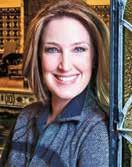

In America, I feel the political and social situation is too sensitive. Even in family gatherings you cannot talk in a normal, open way. You have to be really aware of everyone’s background and politics, who will think something is right or wrong, who will be offended. I think this is not only an American problem. Countries that have access to social media can cause every small disagreement to become a big one. Well-meaning people become wild online. You get the impression everybody is talking about something, but nobody is really communicating. My understanding of politics is that it should help everyone and bring us together. Bad politics tears down a society, allowing only a very few people to benefit.
MG: Do you miss living at the monastery in India?
DR: It depends. On a rare occasion, when disturbing or difficult things are happening, I may miss it. Surely, the monastery offers a very beautiful, serene life. And, in the monastery people are not overly sensitive. You can even joke about death. For example, we don’t cry if somebody dies. Maybe only for a few minutes. Death is treated as a normal part of life. In general, the monks are not as emotionally reactive as people are here. As far as living outside of the monastery, my only requirement is that wherever I am living I need to be able to fit in. I need to be able to function on a daily basis and handle small problems as they come up. Wherever I am, whether in the monastery or here, I know I can make myself happy, I can be happy.
MG: I think of you having lived in a monastery surrounded by thousands of monks and yet here in Michigan, you live alone. That’s a very different living situation than you’ve had most of your life.
My understanding of politics is that it should help everyone and bring us together. Bad politics tears down a society, allowing only a very few people to benefit
—Demo RinpocheDR: I don’t have a big problem with living alone. I can manage living on my own and I’m happy with it. If I think only about myself, the monastery is like heaven. Monks don’t have money, but they don’t have to worry about it. They don’t need social services. Everything is taken care of for them—food, shelter, clothing, health care. But it’s not just about me and my needs. That’s not the only consideration. Also, in my case, I always wanted to experience the world beyond the monastery.
MG: What is your typical day like in Ann Arbor?
DR: I do my studies. I read Buddhist texts. I do spiritual practice. People may think I have studied my whole life, and there is nothing more for me to study, but there is so much I haven’t read or learned. I also study languages and I’m still learning English and Chinese. Then I participate in meetings and programs at Jewel Heart where I give teachings and hold retreats on a regular basis, and I have other meetings with individuals. Since Covid-19 these have mostly been held on Zoom. I also stay in touch with my friends in India via the Internet. Like everyone else, I cook my own food, I wash my own clothes, and I drive myself where I need to go. I exercise on a treadmill or a bike, and when the weather is good, I like to kayak. Because we have to social distance, the best sport right now is kayaking, out on the water away from everyone. I mostly kayak in a lake so I can go by myself and drive there myself. On a river I have to be picked up by someone else at the end.
MG: Thank you, Rinpoche for sharing your history and background with us. It’s been great talking with you!
For more information on Demo Rinpoche’s teachings and retreats visit jewelheart.org.



 By Katherine Pryor, Illustrated by Rose Soini $9.95
By Katherine Pryor, Illustrated by Rose Soini $9.95
Say hello, garden! The sun is up and it’s time to explore the natural world right outside your door. Caterpillars wiggle and butterflies fly as you follow a family on a sensory journey through the sights, sounds, and tastes of their garden. Young readers will delight as they imagine their toes touching the dirt and their hands plucking some kale, in this sweet, sensory experience that captures a day enjoying nature while encouraging healthful eating habits and fostering family bonding. From sunup to sundown, there’s always a warm welcome hello to be found among the inhabitants and vegetation of your own backyard.
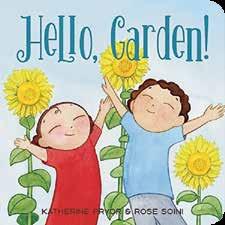
While Antoinette the tree frog is napping, the painter Monsieur Claude loses his hat in the breeze. Adventure unfolds when a magpie snatches the hat. Part of the First Steps in Art series, this whimsical tale introduces toddlers to fine art and the works of Claude Monet. The water lily painting Nymphéas, effet du soir, invites young readers to discover it at the Marmottan Museum and take a walk in the painter’s garden in Giverny! Water lilies and tree frogs await you there.
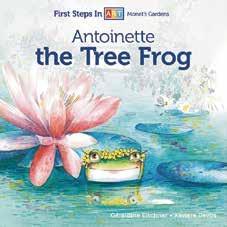 Kuan Yin
Kuan Yin
 By Maya van der Meer, Illustrated by Wen Hsu $17.95
By Maya van der Meer, Illustrated by Wen Hsu $17.95
Miao Shan isn’t your typical princess. She likes to spend her time quietly meditating with the creatures of the forest or having adventures with dragons and tigers. Miao Shan’s heart is so full of love that her dream is to spread happiness throughout the land and help people endlessly. But her father has other plans for her--he intends to have her married and remain in the palace. With the help of her little sister Ling, Miao Shan escapes and begins her journey to discover the true meaning of compassion.
During their adventure, Ling and Miao Shan are eventually separated. Ling must overcome doubts, fears, and loneliness in order to realize what her sister had told her all along--that love is the greatest power in the world. After the sisters’ reunion, Miao Shan realizes her true calling as Kuan Yin, the goddess of compassion. A princess-adventure story like none other, this ancient Chinese tale of the world’s most beloved Buddhist hero is a story of sisterhood, strength, and following your own path.
The story of a girl and a dog who discover how life transforms and expands with someone by your side. With lyrical text and stunning illustrations, this empathy read illustrates the power of friendship in the face of change. Can I Sit with You? takes readers along one loyal dog’s journey with the girl he’s meant to be with, no matter how far she roams. This timeless picture book illustrates the importance of companionship and loyalty, and how engaging with others makes the world embrace you in return.
 Penny By Karl Stevens $19.95
Penny By Karl Stevens $19.95
This colorful graphic novel features the philosophical and existential musings of a cat named Penny.
Told through a collection of stories, Penny: A Graphic Memoir wanders through her colorful imagination as she recalls her humble beginnings on the streets of New York and waxes poetic about the realities of her sheltered life living in an apartment with her owners. Filled with ennui, angst, and vivid dreams, Penny proves that being a cat is more profound than we once thought. A unique blend of high art and humor, Penny: A Graphic Memoir perfectly portrays one cat’s struggles between her animal instincts, her philosophical reflections, and the lush creature comforts of a life with human servants.

As a high school mindfulness teacher, I enjoy guiding, practicing, and applying mindfulness techniques along with my students. Seeing them learn about themselves as they grow their mindfulness practice teaches me about them daily. Every year, however, my students tell me I should teach a mindfulness class for parents and guardians, too. So, I’ve asked them, what have you learned in this class that you would most like them to know? If adults can practice tuning inward and grounding themselves when they are faced with challenging situations or strong emotions, it becomes easier for us to teach our children to do the same.
Every year, however, my students tell me I should teach a mindfulness class for parents and guardians, too. So, I’ve asked them, what have you learned in this class that you would most like them to know?


As human beings, we all experience a full range of emotions, but identifying how we feel at any given moment can be easier said than done. Of course, it’s easier to allow ourselves the space to feel emotions that are pleasant or acceptable to societal norms. What happens, though, when we’re feeling unpleasant emotions such as anger, sadness, anxiety, or boredom? When we don’t allow ourselves to feel what we feel, it can have many unintended consequences. Avoiding unpleasant feelings with cover-up behaviors is not uncommon. It can be hard to turn inward and admit what we are actually feeling and understand what those feelings are trying to tell us. Many people avoid uncomfortable feelings with distracting behaviors or negative choices. Oftentimes, people act as though they are angry, but when they look deeper, they may find they are feeling ashamed, disrespected, embarrassed, or hurt. Anger is more accessible and acceptable, especially for many boys who are told to “man up” or “don’t be a baby.” We need to be allowed to acknowledge the deeper, more vulnerable emotions. All feelings are normal, human, and okay to feel, however uncomfortable they may be. It can be helpful to think of our feelings as clouds—ever-changing, and some more pleasant than others. Some linger for a long time like the gray of a winter day; some come and go like a passing storm; some are beautifully full of color. When we are feeling unpleasant emotions, remember that eventually, like the clouds, it won’t always be this way. This can be helpful to remember when we feel stuck in an unpleasant emotion like anxiety or boredom— but leaning in to acknowledge the emotion is the first step in loosening its grip.

It can be hard to turn inward and admit what we are actually feeling and understand what those feelings are trying to tell us.
One great way to utilize mindfulness is to recognize one’s emotions in order to deal with them, which is a practice Dr. Daniel Siegal calls, “Name it to Tame it.” Consider our feelings like a very excited toddler who has something important to tell you. The sweet child won’t stop begging for attention until what they are trying to say is repeated out loud. Once they are acknowledged, they feel heard, and they move on. Likewise, when we avoid acknowledging an unpleasant feeling, it tends to linger on until confronted. What we resist, persists. Therefore, model being vulnerable with your feelings around your kids. Talk about how you’re feeling, especially when you are feeling unpleasant. This act of vulnerability is not a sign of weakness but demonstrates your humanity to your kids, and it opens the doors for them to be open and vulnerable with you as well. Children and teens often hold difficult feelings inside all day when they are away from home. For many, home is often their safe space where they feel they can be themselves and still be accepted, because of this they often let it all out on the family or trusted loved ones. While this is hard and often creates tension at home, kids do this because they feel safe. As their parent, we should stay grounded, allow for some space, and then get curious about what’s really going on. Try staying calm and open, centered, taking a moment to pause before proceeding.
People typically act how they feel to some extent. When people feel right, they act right. However, when the emotions are less positive, having a personal meditation


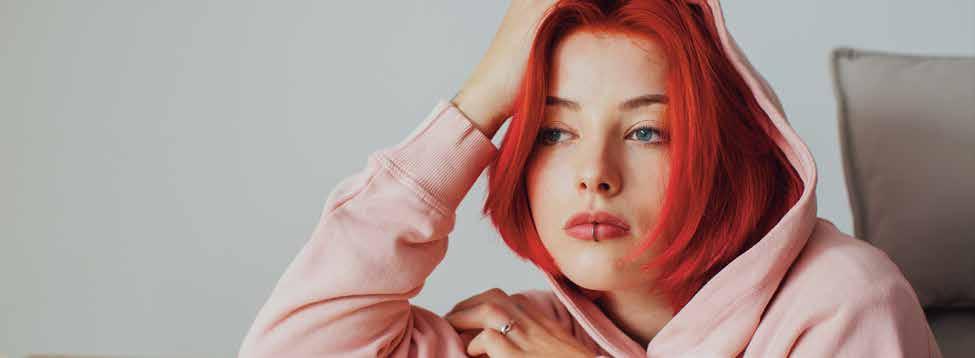
practice can help parents center themselves and avoid reacting rather than responding. Allowing time to pause when feeling annoyed, angry, or frustrated to think about how to respond rather than react out of strong emotion takes time and practice. Although hitting the pause button is difficult, kids are asked to do it all of the time. So, model this, “I’m so frustrated with your behavior right now. I need some time to cool off and then we’ll come back to it.” Or if you see your teen getting revved up, offer them time to step away for a moment. This lets our thinking brain and feelings brain reconnect; otherwise, we end up saying things that don’t work toward discovering the root of the problem.
What we resist, persists.

Growing up is hard. Our teens face immense amounts of pressure to “succeed” in all areas of their lives. This pressure doesn’t only come from external sources like parents, teachers, coaches, and the media, but they are constantly comparing themselves to each other and putting additional pressure on themselves. All this while trying to figure out who they are, what they stand for, and where they fit in. It can feel hard and messy at times. From teaching, I have learned not to assume I know what’s going on in the lives of my students. Kids and teens can be very open and honest when they are given the space to say what’s on their minds without the fear of being judged or ridiculed. Try asking questions about how something might pan out to get them thinking of things they may not consider instead of judging them or offering advice. This helps them process and come to conclusions on their own and helps them build confidence in their ability to make difficult decisions.
Allowing time to pause when feeling annoyed, angry, or frustrated to think about how to respond rather than react out of strong emotion takes time and practice.

We are all human. We all make mistakes. One of the top contributing factors to anxiety and students feeling hopeless is the fear of failure. Sometimes, fear is so great it prevents people from taking healthy risks such as contributing to discussions, talking to unfamiliar people, saying the wrong thing when making a phone call to schedule an appointment, or facing a challenge. A student once told me her mom calls mistakes “learning opportunities.” Wise advice! As a parent, it’s hard to see our kids struggle, and we want them to be successful and feel joy. However, we must allow our kids to feel disappointed, bored, and frustrated with low-stakes problems in life so that they may learn how to cope when life gets more challenging. When we “fix” problems for them, we rob them of the belief that they are capable of working through problems on their own. Becoming aware of how you respond to your own mistakes and how you react when your kids inadvertently mess up is more valuable. Responding with kindness, compassion, calmness, and blamelessness, allows them (and ourselves) the space to think about how to work through a mistake or problem, whether we process together or independently, can be one of the biggest gifts we can give them on how to handle the challenges they will face in adulthood.
Try asking questions about how something might pan out to get them thinking of things they may not consider instead of judging them or offering advice.
A student once told me her mom calls mistakes “learning opportunities.” Wise advice!
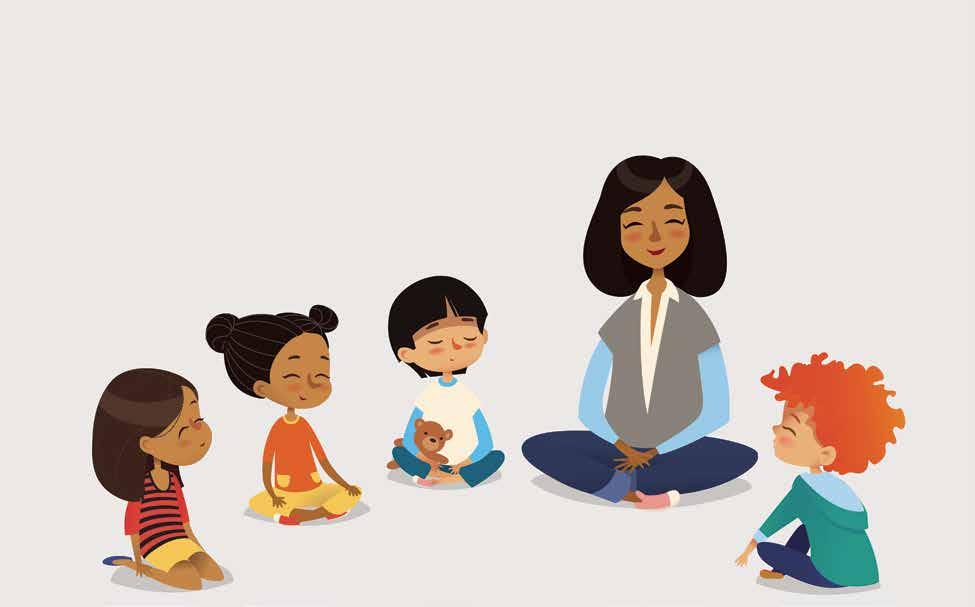 By Laura K. Cowan
By Laura K. Cowan
Kids who have been isolated this year might benefit a great deal from a meditation practice in the fall. Meditation is not just a way to relax—it gives kids a toolkit for handling stressful situations that life brings. It can be tricky to figure out which programs are going back to in person and what options are out there, so we did the digging for you to help families find some popular and newer meditation classes around town. Many of the meditation teachers featured graciously explained what a class with them is like, so you can get a sense of whether this is a fit for your little one. Namaste, fellow parents. It’s been a long year, and you’ve done an amazing job holding it all together for your family.

Ann Arbor Transcendental Meditation teacher Tom Masuga has moved the practice from its longstanding location on Stadium Boulevard on Ann Arbor’s west side to the east side on Hogback Road. If you live closer to the new location, you might find this more convenient for getting your little ones into a meditation practice. The best part about this option is that Masuga teaches kids individually. It’s in person, but for those concerned, not crowded.
Masuga teaches younger children a five-minute morning and evening routine they can complete while “walking around outside or getting dressed.”
Masuga teaches children as young as three years old. “Transcendental meditation is always taught one on one,” he said. “For kids aged three to 10, they don’t close their eyes or sit down to meditate.” Instead, Masuga teaches younger children a five-minute morning and evening routine they can complete while “walking around outside or getting dressed.” He explained the progression for different age groups as, “At 10 years old they learn to sit down for 10 minutes, ages 11-20 they sit for 11 to up to 20 minutes.”
How does it work? According to VeryWellMind.com, transcendental meditation is unlike mindful meditation or similar practices that involve clearing the mind, instead focusing on repeating a simple mantra silently. “The practice is simple to do,” Masuga said. “They learn in one day in a brief meeting with the teacher.” But there’s one catch. At least one parent needs to also be doing TM with their child so they know how it works. However, it’s not supposed to be another item on the to-do list to wear you out. “It’s a form of rest,” Masuga told me. “You’re allowing the mind to become more settled, and quiet, [to help] dissolve stress.”
Even young children have stress, Masuga explained. “TM is a simple, effortless technique, which allows the mind to become more calm, and we act from that space.” Important to note for parents, Masuga said, “You never demand they meditate. It’s a time we don’t do tasks and we are easy with the self.” But don’t worry if your kid forgets how it works. “It’s not like piano lessons,” Masuga laughed. “If your kid doesn’t remember the technique, they can come back to see the teacher for free.”
To learn more about Transcendental Meditation, you can visit the national TM website at tm.org or call Masuga about local classes offered at (734)330-3282.
Ann Arbor Yoga & Meditation


Ann Arbor Yoga & Meditation is one of the only locations in Ann Arbor that caters specifically to kids’ meditation classes. Founder Ema Stefanova is an internationally certified yoga therapist and trains teachers as well as teaches classes. She has taught yoga and meditation for over 30 years, following the popular Satyananda Yoga tradition, which is the yoga tradition that has been used in Western European schools for the last 60 years. Satyananda yoga focuses on yoga for the whole body— poses for the physical body, breathing exercises for the energy body, and meditation to still the mind. As such, it’s a great holistic yoga practice to help kids who are looking for a relaxation or self-care technique that involves body and mind together.
Classes at Ann Arbor Yoga & Meditation include in-person private or small group yoga focused on general or specialty yoga therapy, yoga nidra (the yoga of sleeplike relaxation for the mind), and workshops or half-day retreats by appointment. Workshops are sometimes located at Ann Arbor Yoga & Meditation’s building in west Ann Arbor on Federal between Stadium and Maple, but classes can be scheduled offsite at a business or a school.
Satyananda yoga focuses on yoga for the whole body—poses for the physical body, breathing exercises for the energy body, and meditation to still the mind. As such, it’s a great holistic yoga practice to help kids who are looking for a relaxation or self-care technique that involves body and mind together.
The Ann Arbor Yoga & Meditation studio opens to the outdoors for good ventilation, which Stefanova told us they use even in cold weather. They also follow all official guidelines for pandemic mitigation measures. It strikes me that while this is great
practice for germ mitigation, it is worth knowing what type of ventilation your studio has going forward if your kid is sensitive to the cold or heat.
Stefanova’s classes focus on supporting individuals through struggles such as anxiety, depression, or self-harm. It might be worth checking ahead of time what issues will be addressed and make sure the class is age-appropriate and a good fit for your child. The focus on special support might be just right if your kid is going through grief or a special challenge.
Stefanova told me:

Programs are tailored for clients’ specific needs. Children’s bodies and minds are different than those of adults. Therefore yoga, yoga therapy, yoga nidra, and meditation for children and teens (when it comes to technique and methodology, and the whole process of educating children in the subject of classical yoga and meditation) is totally different than what adults are taught. Children in my experience are naturals at yoga and meditation. Nine out of ten times the results are much better compared with adults.

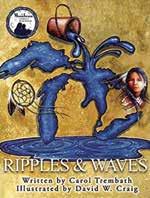
“When working with families, just kids themselves, or groups in schools, we [teach] parents and educators how to further the practice by providing home practice materials and recommending quality texts, audio, and more,” Stefanova explained. She said that she has seen classes help kids with better sleep, addressing fears and phobias, stress, and school performance anxiety. Even self-esteem, eating disorders, and more can improve with support from a mindful yoga class and instruction in meditation. These classes can’t replace medical care or psychological counseling for urgent issues, but it’s great to hear about a yoga and meditation class for kids that doesn’t shy away from supporting children through life’s bumps in the road. Ema Stefanova teaches on the west side of Ann Arbor. To learn more about Ann Arbor Yoga & Meditation, visit yogaandmeditation.com.
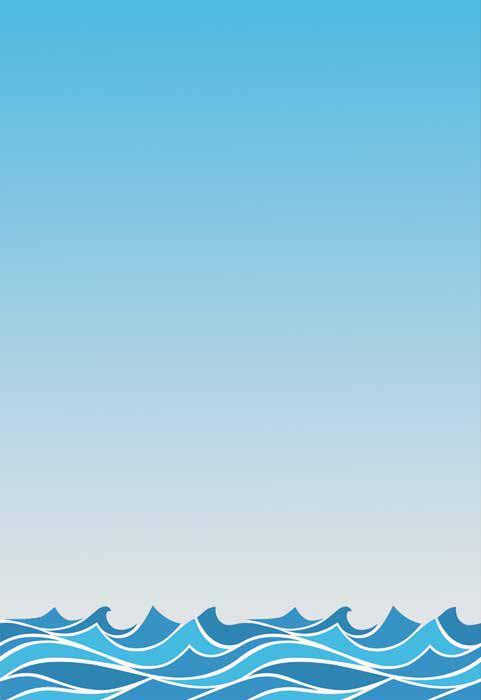
Kusun Ztaise (“Stacy”) Bradley is the Family Program Coordinator at Ann Arbor’s Zen Buddhist Temple, which hopes to open in the fall to in-person events. “We hold a family service the second Sunday of every month at 10 a.m. at our regular building,” Bradley told me. “The first half hour is chanting, talking, meditation, and instruction for kids. The last hour, kids break into age groups for activities around mindfulness and similar topics.” If you would like some family togetherness in the fall around learning to meditate or joining a mindful community, the Zen Buddhist Temple is a popular choice for parents who like meditating with their kids and giving them the community experience.
The temple has a free weekly newsletter you can sign up for with practices for parents and kids. Bradley told me this has given some kids a sense of continuity with their friends from the temple during the past year, because often “people they would see in temple would follow along with practice at home” via the newsletter in between meetings.
For older kids there is a youth group once a month, or every other month teens go kayaking or on a nature hike. Bradley said that if you’re interested in these activities, the best way to reach out is by email (info. below).

Bradley said that the primary benefit of meditation for kids is the “ability to calm

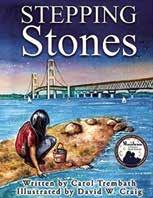


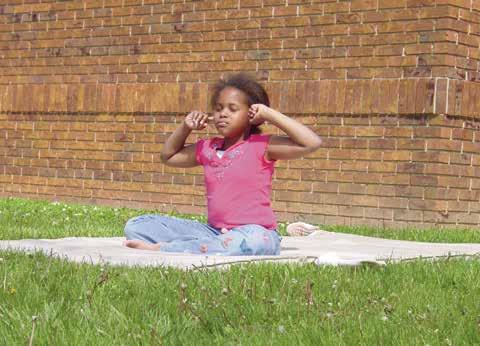
Bradley said that the primary benefit of meditation for kids is the “ability to calm down from all the things that are happening and find peace.” Learning that skill at a meeting, she explained, when things are not stressful, allows kids to calm down when they are stressed because they already have the skill in place. HEY MICHIGAN! NOW IS THE TIME . . . To own these three award-winning picture books about Mai's special journey to protect the waters of the Great Lakes. Available on Amazon - $14.95 ea Visit: caroltrembath.com
down from all the things that are happening and find peace.” Learning that skill at a meeting, she explained, when things are not stressful, allows kids to calm down when they are stressed because they already have the skill in place. “Kids who grew up in temple often find they come back to practice,” she said. “It’s a toolkit of skills to know when they need to sit down or how to listen to the sounds around them.”
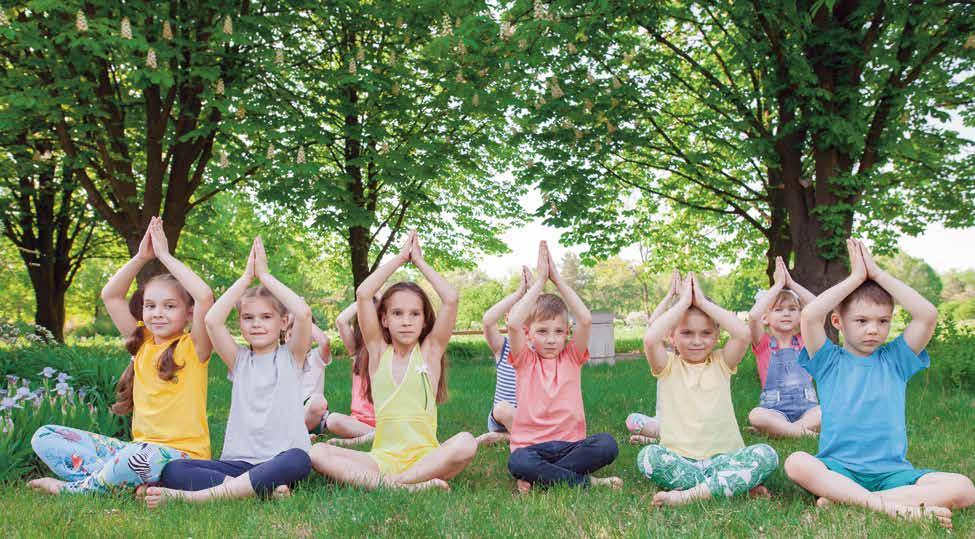
Continued from previous page
daily life—while doing dishes or playing soccer. “Youth classes often include stretches and yoga to get kids in their body,” Bradley explained. “Practice often involves mindfulness of your awareness of the body and what you’re doing right now.”
You can learn more about the Ann Arbor Zen Buddhist Temple meetings and kids’ activities by emailing zenfamilyprogram@gmail.com. For general inquiries, visit zenbuddhisttemple.org/annarbor for up-to-date meeting and program information.

Anique Pegeron is a local favorite for coaching kids through emotional stress and teaching meditation to young ones. Since the pandemic, she said she has been offering one-on-one sessions and family classes, and now has returned to in-person classes. “At Grove, we have a good system for sanitizing doors, HEPA filters in each room, and masks,” she reassured me. “We felt safe enough to offer in-person sessions.”
Pegeron tailors classes to children’s interests and hobbies, drawing on everything from an interest in the arts to fun games she can use to teach selfsoothing meditation techniques that speak to their specific style of interacting with the world.
“For a typical session, I’ll find out ahead of time from parents what the child’s hobbies, interests, and challenges are, and what they could benefit from.”
Pegeron said that when she is introduced to a child, she can use this knowledge of their interests to come up with relevant metaphors and examples. Sessions can incorporate everything from yoga to mindful games, art, and body scans she likens to a paintbrush painting over the body to check in with the senses. Mindfulness can also involve sitting or movement activities.
“I bring up different options and see how they respond,” Pegeron explained. “If they like the creative activities, we do more of those. I try to help children find their own connection point.”
Anique Pegeron’s classes are found at groveemotionalhealth.com. She teaches out of a South Main Street office in downtown Ann Arbor.

Other options for meditation classes this year could include martial arts, as they sometimes incorporate a style of meditation for centering into an active practice. Just ask before you schedule a session to find out what’s incorporated into a particular program.
Many therapists now teach mindfulness and stress-reduction relaxation techniques, which can be helpful if you have a specific concern that makes meditation more difficult for your child, such as a learning challenge or trauma that responds better to individual instruction or treatment. For example, PTSD can make it difficult for a child to be present for mindfulness meditation. They might respond better to talk therapy in conjunction with EMDR or havening therapy first to calm the nervous system and create a sense of safety which will then allow your child to feel safe to be present in the body.
If that doesn’t seem to fit your situation, you might even find your kid just likes peaceful trips to the library or wants to go out for ice cream like you used to, to get back to a sense of normality.
Pegeron tailors classes to children’s interests and hobbies, drawing on everything from an interest in the arts to fun games she can use to teach self-soothing meditation techniques that speak to their specific style of interacting with the world. “Some children need in-person tactile instruction,” she said. “We have yoga blocks and cushions we can incorporate.”
Pegeron said that in a group it can be harder to tailor instruction to individual concerns, so she has enjoyed working with children one at a time this last year. She paused group classes during the pandemic and hasn’t restarted them yet, saying the time doesn’t yet feel right.
If that doesn’t seem to fit your situation, you might even find your kid just likes peaceful trips to the library or wants to go out for ice cream like you used to, to get back to a sense of normality. I hope you find something just right for your kids this fall. I’m impressed at how many children have adapted to a year of change and upheaval, and hope you find the right tools for supporting your family through a peaceful fall season. To all the kids out there who already know a thing or two about centering, grounding, mindful breathing, and self-soothing, I am so proud of you and wish you the best with back to school. Blessings. We’ve got this, families. ###
 By Jennifer Carson
By Jennifer Carson
Bring a little whimsy to your holiday table with this cute hot pad for your special Samhain dishes. Easy to make with wool felt, a few hand-stitches, and a warm iron. The pattern will be available for printing online September 1. Visit crazywisdom.com and click on the featured stories and columns.
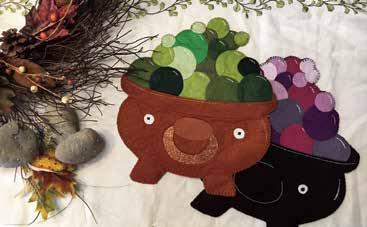
• 12” x 24” piece of wool felt in your choice of color for cauldron
• Assorted wool in your choice of colors for bubbles

• A scrap piece of white wool felt for eyes
• 12” x 12” piece of Insul-Bright
• ½ yard of Heat and Bond
• Embroidery floss: Metallic that compliments cauldron color, white, and black
• Embroidery needle
• Scissors
• Iron
• Printed pattern pieces
To begin, trace each pattern piece onto the paper side of the Heat and Bond. You will need to trace 9 large bubbles, 6 medium bubbles, and 3 small bubbles.
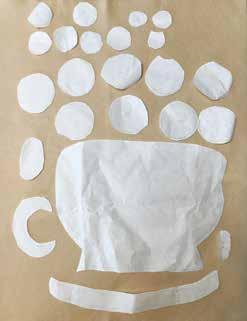
Cut these pieces out close to, but not on, the line.
With a warm iron, iron your wool felt to make sure there aren’t any creases in it, then iron on your pattern pieces to the corresponding colors. Cut your pieces out on the line and peel off the paper backing.
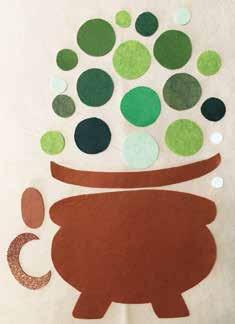
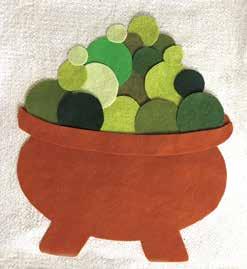
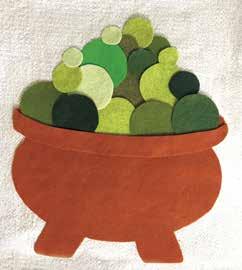
On your square of Insul-Bright, layout your cauldron base. Then start layering your bubbles. Make sure you don’t go below the rim of your cauldron! When you are happy with the arrangement of bubbles in your cauldron place your cauldron rim on top and line up with edge of cauldron on the right and left sides. Adjust any bubbles that are peeking out below the rim, if needed.
Cut out your cauldron from the InsulBright.
Carefully iron down your bubble and rim pieces.
Now arrange your “nose,” handle, and eyes, and iron those pieces down.
Embroider the highlights on the bubbles with 2 strands of white floss using a backstitch.
Use metallic floss to highlight the top of the rim, side of cauldron, top of nose, and handle.
Layer your cauldron full of bubbles (already ironed onto your InsulBright) on top of your remaining wool felt. Pin well so that it doesn’t shift and cut out the shape for your backing. Alternately, you could trace your shape onto the Heat and Bond and cut out the shape 1/8” inside the edge. Iron that onto the back of your shape, and then iron on to your wool felt, and then cut out the whole shape.
To finish, use two strands of floss and a blanket stitch the close the edges.
and over 60
Creating A Personalized Bath Collection with Karen Greenberg • Sunday, November 7 • 2 p.m. • Choose from a collection of essential oils to create your own personalized bath collection, to awaken, to believe in yourself, to help move you closer toward your life’s purpose, for purity, for clarity, to envision, for inspiration, to surrender, for acceptance, for hope, for joy, for gratitude, for humility, for courage, for love, for clearing, for energy, for creativity, and for abundance. Special $75 + $50 Materials. Contact Karen Greenberg at 734–417–9511, krngrnbg@gmail.com, or visit clair-ascenson.com.
Westside Art Hop! with Sophie Grillet and more • Saturday, October 16, 10 a.m. – 5 p.m.; Sunday, October 17, 12 – 5 p.m. • Over 50 artists showing and selling their work around Ann Arbor’s West side neighborhoods in studios, on porches, in garages, and childcare centers. Walkable area, free parking. Map will be available at WestsideArtHop.com. $Free. Contact westsidearthop@gmail.com or westsidearthop.com.
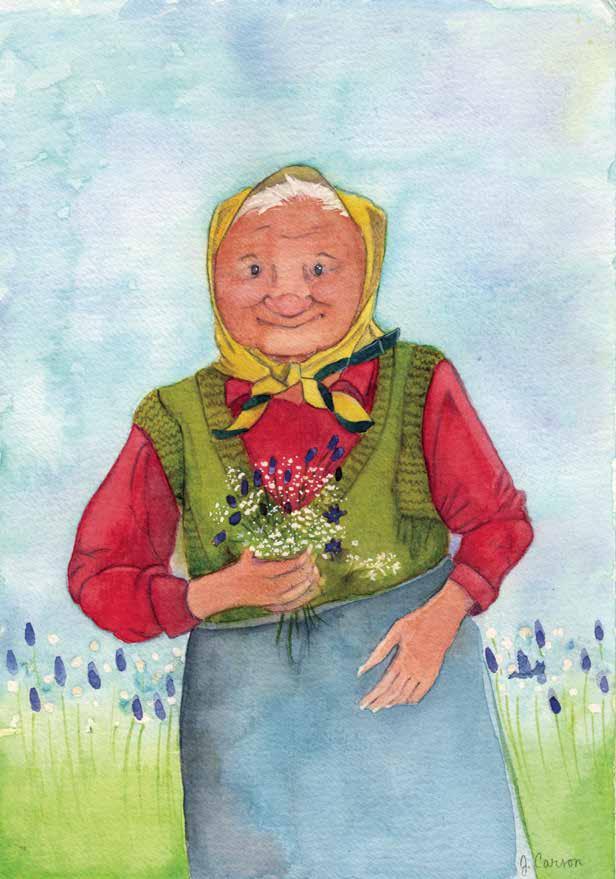

D.O.V.E. DIVINE ORIGINAL
System Practitioner Training (Karen Greenberg’s Clair– Ascension Kabbalistic Balance) with Karen Greenberg • Thursdays, September 10, 17, 24 or October 1, 8, 15 or November 5, 12, 19 or December 3, 10, 17 • 10:30 a.m. – 2:30 p.m. • After studying D.O.V.E. System manual, learning to identify and repattern client’s limiting beliefs, thoughts, attitudes, and patterns, and assisting client in expressing any commensurate low–vibrational emotions, and instituting new behaviors, through the Tree of Life, learn to Kabbalistically balance client’s energy via art, movement, music, toning, sound, aromatherapy, gemstones, sacred symbols, connecting with G–D, Archangels, Angels, Masters of Light, trees, powerful Archetypes, and more. $777 (pick any group of 3 dates above) + materials fee. Contact Karen Greenberg at 734–417–9511, krngrnbg@gmail.com, or www.clair–ascension.com.
A Course in Miracles Study Group with Randall Counts and Delyth Balmer via ZOOM • Weekly Thursdays, beginning September 9 –December 30 • 12:00 – 1:30 p.m. • Read and discuss A Course in Miracles via Zoom. $Free, but donations gratefully accepted. Contact interfaithspirit.org.
A Course in Miracles Study Group with David Bell • Weekly Mondays, September 13 – December 27 • 6:45 – 8:45 p.m. • Read and discuss A Course in Miracles $Free, but donations gratefully accepted. Contact interfaithspirit.org.
Bhagavad Gita Discussion Circle with Miranda and Kishor • Weekly Wednesdays, beginning September 15 –December 29 • 6:30 – 8 p.m. • Focusing on the timeless wisdom of the Bhagavad Gita, we read a group of texts together weekly and then Miranda and Kishor lead a participatory discussion where all attendees are welcome to share their insights as well as bring up questions for the group to consider. $Free. Contact info@theharmonycollective.org or theharmonycollective.org.
Jewel Heart Readers with Jewel Heart Instructors • Monthly, Second Mondays: September 13, October 4, November 8, December 13 • 7 – 8:30 p.m. • Enjoy lively discussion on monthly Buddhist– related book selections with our community. All are welcome. $Free. Donations are welcome. Contact for each month’s book selection and participation information. Email programs@ jewelheart.org or call Jewel Heart at 734–994–3387. For more information, visit www.jewelheart.org.
Kick off of Dine and Discuss with Weber Center • Thursday, November 11 • 5 – 7 p.m. • This inspiring true story reminds us of the amazing things one person can do to alleviate suffering in the world. The author, Tracy Kidder, is the recipient of a Pulitzer Prize for his story of Dr. Paul Farmer, a gifted doctor and his work to cure infectious diseases in remote parts of the world. From Harvard to Haiti, Peru, Cuba, and Russia, Farmer strives to change minds and practices through his dedication to all of humanity. Registration required. $15 includes book and dinner. Contact Weber Center 517– 266– 4000 or Webercenter.org.
Dreaming Your Own Oracle Deck: Personal Mythology with Dreaming Julie & Cassandra Matt Online Workshop• Saturday, October 23, 10 a.m. – 5 p.m. and Sunday, October 24, 10 a.m. – 3 p.m * See dreaming.
Qigong with Master Wasentha Young • Weekly Thursdays, beginning September 16 for 10 weeks • 11:15 a.m. – 12:15 p.m. * See Energy and Healing.
Ghidrah’s Mystic She Ways Psychic Fair • Saturday, September 18 • 11 a.m. – 7 p.m. *See Festivals and Fairs.

Gratitude, Giving, and the Holidays: Processing Grief on the Labyrinth ONLINE with Rob Meyer–Kukan • Monthly September-December: Third Wednesdays at 7 - 8 a.m. and last Sundays at 7 - 8 p.m. * See Meditations.
Kick off of Dine and Discuss with Weber Center • Thursday, November 11 • 5 – 7 p.m. * See Book Discussion Group.
The Twelve Links of Dependent Origination (Applied Meditation Technology series) with Hartmut Sagolla and Supa (Greg) Corner • October 2 • 9 a.m. – 1 p.m. * See Buddhism.
The Neuroscience and Psychology of Meditation: The Neurobiology of Mindfulness– Based Pain Management with Anthony King • Saturday, October 23 • 10 a.m. – 5 p.m. * See Buddhism.
Full Moon Ceremony with Alicia Clark Teper & Jenn Kirk • Wednesday, October 20 • 6:30 – 10 p.m. * See Ceremonies, Celebrations, and Rituals.
Belly Dance Fitness with Lora Forgiel and Cara Barket Yellott • September – December, Weekly • Sundays, 7 – 7:45 p.m.; Mondays, 8:159 p.m. * See Dance and Movement
Home Funeral ONLINE Training with Merilynne Rush • Monday, October 18 • Self-paced * See Death and Dying.

Singing for Comfort with various leaders ONLINE • Monthly, second Thursdays: October 14, November 11, December 9 • 7 – 8:30 p.m. * See Music, Sound, and Voice.
PSYCH– K Basic Workshop with Mary Mazur • Friday, September 10 – 12 • 9 a.m. – 6 p.m., ending 5 p.m. on Sunday * See Personal Growth.
The ABC’s (and DEFG’s) of Light Body Development ONLINE with Karlta Zarley • Saturday, September 25, 8:30 a.m. – 1 p.m. and Sunday, September 26, 1 – 5:30 p.m. * See Retreats.
Psoas Release Workshop ONLINE with Sharon Hillenaar • September 17, November 5• 7 – 9 p.m. * See Yoga.
Basic Animal Communication (via Zoom) with Judy Liu Ramsey • Saturday, Jun. 19-Sunday, Jun. 20 • 9:00 a.m. * See Animals and Pets.
Sunday Meditation and Sharing with Still Mountain Buddhist Meditation Center • Weekly Sundays in September • 10 – 11:30 a.m. • Our Buddhist meditation and sharing session is open to the public. We sit in silent meditation for about 45 minutes and then allow open sharing, discussion, or teaching related to the Dharma. $Free. Contact https://stillmountainmeditation.org.
Jewel Heart Sunday Talks: Ancient Wisdom: Modern Times with Demo Rinpoche or Gelek Rimpoche • Weekly Sundays, September 5 – December 26 • 11 a.m. • Enjoy one–hour Sunday morning talks with live presentations by Demo Rinpoche and video recordings by Gelek Rimpoche. Stay tuned for the moderated hour discussion after the talk. $Free, but donations are welcome. Contact 734–994–3387 or email programs@jewelheart.org. To register, visit jewelheart.org/free–weekly–virtual–programs. For more information, visit jewelheart.org.
Buddhism Practical Buddhism by Gelek Rimpoche with Gelek Rimpoche • Weekly Tuesdays from 7 to 8:30 p.m. from Sept. 7 through Dec. 28, 2021 • 7:00p.m. • Practical Buddhism by Gelek Rimpoche offers video recordings of earlier teachings by Gelek Rimpoche as an opportunity for some to revisit and as an introduction for others. A panel discussion with Jewel Heart Instructors will follow each session. Free/Donations are welcome. Contact To register, go to the Jewel Heart website at jewelheart.org/, scroll down, and select this program. For more information, call 734–994–3387 or email programs@jewelheart.org.
The Cause of Suffering (Applied Meditation Technology series) with Hartmut Sagolla and Supa (Greg) Corner • Saturday, September 11 • 9 a.m. – 1 p.m. • There are many obvious reasons for the various kinds of human misery but underlying all of them are our own individual and collective actions, perceptions and emotional reactions. Exploring these leads to a reappraisal of our choices and a path to lasting happiness. (This workshop is one of several in the Applied Meditation Technology series that explores different approaches to gain deeper insight into our lives, aiming at gaining freedom from all suffering. All workshops include instruction, guided meditation, individual meditation, and discussion.) $25 Jewel Heart Members / $30 Non– Members. No one is turned away due to financial considerations. To register, visit jewelheart.org. For more information, call 734–994–3387 or e-mail programs@jewelheart.org.
The Twelve Links of Dependent Origination (Applied Meditation Technology series) with Hartmut Sagolla and Supa (Greg) Corner • October 2 • 9 a.m. – 1 p.m. • Investigating the causes for all suffering, the Buddha discovered a deep–
seated pattern tracing back to a fundamental misconception of our own existence, which then spawns many secondary afflicted states of mind and thereby powers a chain reaction of events that constantly recreates situations of pain and discomfort. Understanding this is the key to disengage from the self–perpetuating cycle of misery. $25 Jewel Heart Members / $30 Non–members. No one is turned away due to financial considerations. To register, visit jewelheart.org. For more information, call 734–994–3387 or email programs@jewelheart.org.
Fall Retreat: Delam: The Easy Path with Demo Rinpoche • Saturday, October 9, 8:30 a.m. – 8 p.m., Sunday, October 10, 8:30 a.m. – 8 p.m., Monday, October 11, 8:30 a.m. – 5 p.m. • Delam, or the Easy Path, composed by the Third Panchen Lama, is a multi–dimensional map that, when followed with genuine effort, will help us remove limitations imposed by fear and confusion, and open our hearts and minds to reach their fullest potential. Delam presents aspects of life for meditation that will deepen our relationship with ourselves, our guru, and ultimately bring about our future enlightenment. $180/Jewel Heart Members, $225/Non–Members. No one is turned away due to financial considerations. To register visit jewelheart.org/retreats. For more information, call 734–994–3387 or email programs@jewelheart.org.
The Neuroscience and Psychology of Meditation: The Neurobiology of Mindfulness–Based Pain Management with Anthony King • Saturday, October 23 • 10 a.m. – 5 p.m. • This day–long experiential workshop will provide instruction and guided practice in several forms of contemplative practices including basic mindfulness, loving–kindness (metta), and self–compassion. It will also provide a comprehensive and up–to–date explanation of the psychology, evolutionary biopsychology, and neuroscience of love and compassion from neurobiology research in animals and humans. $80 Jewel Heart Members / $100 Non–Members. No one is turned away due to financial considerations. To register, visit jewelheart.org. For more information, call 734–994–3387 or email programs@ jewelheart.org.
If you are interested in obtaining some biographical information about the teachers, lecturers, and workshop leaders whose classes, talks and events are listed in this Calendar, please look in the section that follows the Calendar, which is called “Background Information” and which starts on page 101.
Delam: The Easy Path – Workshop by Demo Rinpoche • Saturday, November 20 • 10 a.m. – 4 p.m. • The workshop will highlight how we can remove limitations imposed by fear and confusion and open our hearts and minds to reach our fullest potential. Delam presents aspects of life for meditation to deepen our relationship with ourselves and those around us. $80 Jewel Heart Members / $100 Non–Members. No one is turned away due to financial considerations. To register, visit jewelheart.org. For more information, call 734– 994– 3387 or email programs@ jewelheart.org.
Palden Sa Sum – Praise of Tsongkhapa with Demo Rinpoche • Saturday, December 18 • 10 a.m. – 4 p.m. • In this poetic praise to Je Tsongkhapa, the great philosopher–yogi of Tibet, Khedrup Rinpoche, one of his closest disciples and lineage holders, points to the many unique qualities of Je Tsongkhapa and his teachings. Demo Rinpoche will explore those qualities and share how we, too, can follow in Tsongkhapa’s footsteps. Members $60/ Non–members $80. No one is turned away due to financial considerations. To register, visit jewelheart.org. For more information, call 734–994–3387 or email programs@jewelheart.org.
September Full Moon Ceremony with Sacred Lotus Experience • Monday, September 20 • 6:30 – 10 p.m. • Reiki, Astrology Talk, Meditation, Bonfire, and S’mores. $25. Contact Alicia Clark Teper at 734–945–5396 or sacredlotusexperience@yahoo.com; SacredLotusExperience.com.
Full Moon Ceremony with Alicia Clark-Teper and Jenn Kirk • Wednesday, October 20 • 6:30 – 10 p.m. • Gather in sacred space to unite under the Full Moon energy while Reiki is working its magic. We will combine grounding and breathwork, meditation, yoga, crystals, astrology, bonfires, and of course, s’mores. Come as your crunchiest self and leave grounded and glad you spent time on yourself. $40. Contact Alicia Clark Teper at 734–945–5396 or sacredlotusexperience@yahoo. com; sacredlotusexperience.com.
Judy Ramsey has over 40 years of experience in counseling, teaching, and mentorship, holding an M.A. from the University of Michigan. In addition to being a craniosacral therapist specializing in brain trauma, she is a professional animal communicator, interspecies counselor, and shamanic healer and teacher. Learn more about Ramsey and her offerings on her website judyramsey.net.
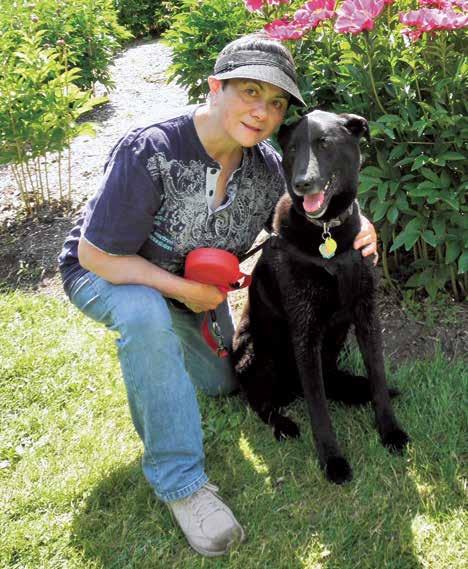
The Cessation of Suffering and the Path Leading to It (Applied Meditation Technology series) with Hartmut Sagolla and Supa (Greg) Corner • Saturday, November 6 • 9 a.m. – 1 p.m. • By uprooting fundamental misconceptions about reality, all misguided actions and consequently all causes of misery will cease and lasting happiness can be attained. (This workshop will focus on practical methods to get closer to this goal, and it is one of several in the Applied Meditation Technology series that explores different approaches to gain deeper insight into our lives, aiming at gaining freedom from all suffering. All workshops include instruction, guided meditation, individual meditation, and discussion.) $25 Jewel Heart Members / $30 Non–Members. No one is turned away due to financial considerations. To register, visit jewelheart.org. For more information, call 734–994–3387 or email programs@jewelheart.org.
Library of Wisdom & Compassion with Venerable Thubten Chodron • Weekly Wednesday, October 6 – November 10 • 7 – 8:30 p.m • His Holiness the Dalai Lama and Venerable Thubten Chodron have been developing a comprehensive multi–volume resource guide for all levels of interest in Buddhism’s foundational teachings. Ven. Chodron will touch on topics of the first six: (1) approaching the Buddhist path, (2) the foundations of Buddhist practice, (3) Samsara, Nirvana, and Buddha Nature, (4) following in the Buddha’s footsteps, (5) great compassion, and (6) courageous compassion. Ven. Chodron will also talk about working with the Dalai Lama on this project. $100 Jewel Heart Members / $120 Non–Members. No one is turned away due to financial considerations. To register, visit jewelheart.org. For more information, call 734– 994– 3387 or email programs@jewelheart.org.
Sacred Cacao Ceremony with Victoria Schon • Saturday November 20 and December 18 • 6 – 7:15 p.m. • Drinking ceremonial cacao is considered spiritual medicine by many indigenous cultures around the world. As we sit together in a small group and consume this sacred beverage, practice mindfulness, participate in guided meditation in a backdrop of sacred sound, our soul is nourished, and we experience a heart opening. It is a time for deep inner–reflection and connection with community. $35. Contact Victoria Schon at victoria@veraposeyoga.com.
Winter Solstice with Alicia Clark Teper • Tuesday, December 21 • 7 – 9 p.m. • Bring in the Winter Solstice with a night of self–care. Using a combination of breathwork, grounding, sound, yin yoga, astrology, meditation, crystals, intuitive tarot and Reiki. $44. Contact Alicia Clark-Teper at 734–945–5396 or sacredlotusexperience@yahoo.com; sacredlotusexperience.com.
Evenings with Aaron with Aaron channeled by Barbara Brodsky • Tuesdays: September 7, October 19, November 16, December 14 (Christmas stories) • 7 – 9 p.m. • A weaving together of the components of The Eden Project (Mediumship, Eden Class, Dharma Path and Vipassana and Pure Awareness Meditation) with elements of practice or daily life. Suggested donation: $10– $35. Contact 734–477–5848; om@deepspring.org or deepspring.org.
Remembering Wholeness with The Mother channeled by Barbara Brodsky • Monthly, third Sundays: September 19, October 17, November 21, December 19 • 2 – 5 p.m. • Remembering Wholeness is an opportunity to experience the sharing of energy with The Mother channeled through Barbara Brodsky. The Mother invites us to experience the deeper truth of ourselves—where we might be stuck and how we can learn to release when held deeply with love. While The Mother speaks briefly to each person, messages will be delivered aloud to the whole group, allowing people to hear what resonates for them. Suggested donation $10–$25. Contact 734–477–5848; om@deepspring.org or deepspring.org.
Birth Doula Training with Patty Brennan • Saturdays & Sundays: October 2–3 and December 4–5 • 9 a.m. – 4 p.m. • Train online with Patty Brennan to become a birth doula and begin providing support to families in your community. Professional certification through Lifespan Doulas. Training includes a combination of self–paced study and life online workshop. $697. Contact Patty Brennan at 734–663–1523 or patty@lifespandoulas.com; lifespandoulas.com/birth–doula–training.
Postpartum Doula Training with Patty Brennan • Friday, October 8 • 9 a.m. – 4 p.m. • Learn how to create a cocoon of rest, healing, and support for the new mother and family. Professional online training and certification. $697 (payment plans available). Contact Patty Brennan at 734–663–1523 or patty@lifespandoulas. com; lifespandoulas.com/postpartum–doula–training.
Youthful Spirits Class for Young People ONLINE with Heidi Kaminski • Weekly Sundays: September 12 – December 26 • 1 – 2 p.m. • Spiritual discovery for young people on Zoom. Details on web site. $Free, but donations gratefully accepted. Contact interfaithspirit.org.
H2W2 – K4K – Happy, Healthy, Wealthy, Wise – Kabbalah for Kids (5th grade & up) with Karen Greenberg • Tuesday, October 19, Wednesday November 17, Sunday December 12 • 1 – 3 p.m. • Utilizing movement, multi–sensory input, color, and experiential learning, we build self–esteem of spiritually evolved children (rather than reinforcing feelings of being different, damaged, defective, disordered, dysfunctional). In an ascensional journey through the Tree of Life, we aid in organizational skills, navigating low-vibrational emotions, relationships, setting healthy boundaries. We encourage children in discovering and fostering their authentic selves and genius, to fulfill their spiritual mission of a healthy, interdependent, functional planet for the prophecy of 1000 Years of Peace. $50 for 2– hour class; meets one time a month for about a year. Contact Karen Greenberg at 734-417-9511 or krngrnbg@gmail.com; clair–ascension.com.
hosted by Edward Morin, David Jibson, and Lissa Perrin
Second and Fourth Wednesday of each month, 7-9 p.m.

Until further notice, all sessions are virtual and accessible through Zoom. Email cwpoetrycircle@gmail.com for Zoom link

Second Wednesdays, 7-9 p.m.: Poetry Workshop. All writers welcome to share and discuss their poetry and short fiction. Sign-up for new participants begins 6:45 p.m.
Fourth Wednesdays, 7-9 p.m.: Featured Reader(s) for 50 minutes. Open Mic reading for up to 1 hour. All writers welcome to share their own or other favorite poetry.
—William Wordsworth
Belly Dance Fitness with Lora Forgiel and Cara Barket Yellott • September –December, Weekly • Sundays, 7 – 7:45 p.m.; Mondays, 8:15 - 9 p.m. • Come join us for 45 minutes of belly dance cardio. Learn how to belly dance and get your workout in for the day. Laugh, sweat, and dance. Connect with music and your body in a deeper way. No experience necessary. We are an Adrian sanctuary dedicated to empowerment. Join us for movement and health at Free to Be Yoga & Massage. $First class on-site FREE. $13 for drop-ins, $108 for 10 class, or unlimited monthly membership for $65. Please check website for current class options and pricing. Contact austeen.freetobe@gmail.com; freetobeyogamassage.com.
Glow Flow with Michelle McLemore • September – December, Weekly Wednesdays • 9 - 10 a.m. • Greet the morning with a 60-minute combination of slower flow yoga, Tai-Chi, pranayama, and basic dance from across cultures to open your energy anatomy and promote a positive mindset. Feel the magic of merging slow breath with intentional movements while toning and increasing flexibility. Low impact. No prior experience necessary. We are an Adrian sanctuary dedicated to empowerment. Join us for movement and health at Free to Be Yoga & Massage. $First class on-site FREE. $13 for drop-ins, $108 for 10 class, or unlimited monthly membership for $65. Please check website for current class options and pricing. Contact austeen.freetobe@gmail.com; freetobeyogamassage.com.
Mini-Band Class with Austeen Freeman • September – December, Weekly Thursdays • 5:45 – 6:15 p.m. • A 30-minute full body burn. Bring your own bands or use the studios as we target major muscles group in a HITT style workout. Great for any level, very low impact, and low resistance. Strengthens and tones the body. If you have your own resistance bands, please bring them. We are an Adrian sanctuary dedicated to empowerment. Join us for movement and health at Free to Be Yoga & Massage. $First class on-site FREE. $13 for drop-ins, $108 for 10 class, or unlimited monthly membership for $65. Please check website for current class options and pricing. Contact austeen.freetobe@gmail.com; freetobeyogamassage.com.
September 22 – Ed Werstein received the Lorine Niedecker Prize from the Council for Wisconsin Writers and is regional VP of the Wisconsin Fellowship of Poets. His poems have appeared in Rosebud, Blue Collar Review, Stoneboat, and several anthologies. His books of poetry include A Tar Pit to Dye In and Communiqué: Poems From the Headlines


October 27 – Michael Zadoorian has four published novels, The Narcissism of Small Differences, Beautiful Music, The Leisure Seeker and Second Hand, and a story collection, The Lost Tiki Palaces of Detroit. His fiction has appeared in NAR, Literary Review, and Witness. The Leisure Seeker was made into a film starring Helen Mirren and Donald Sutherland.

December 1 – Judith McCombs grew up nomadic in a geodetic surveyor’s family. Her poems appear in Poetry, Shenandoah, Nimrod, and in five books including The Habit of Fire: Poems Selected & New. She has taught at Wayne State U. and in the Washington, D.C. area. She received awards from Michigan and Maryland State Arts Councils.

December 1 – Molly Spencer has recent poems published in Blackbird, Los Angeles Review, and Prairie Schooner. She is the author of the poetry collections If the House, winner of the Brittingham Prize, and Hinge, winner of the Crab Orchard Open Competition. She teaches writing at the University of Michigan.

End-of-Life Doula Training with Merilynne Rush ONLINE• Fridays, September 10, 17, 24, and October 1, 8 • 3 - 6:30 p.m. • The Dying Year EOL doula training meets five consecutive Fridays. Our six diverse teachers from varying backgrounds fully prepare you to offer your services to dying individuals and their families/ caregivers. $725; scholarships and payment plans are available. Contact Merilynne Rush at 734-395-9660 or thedyingyear@gmail.com; thedyingyear.org/end-oflife_doula_trainings.html.
End–of–Life Doula Training with Patty Brennan • Weekly Tuesdays, September 14, 21, 28 • 1 – 4:15 p.m. • Lifespan Doulas End–of–Life Doula Training covers how to provide non–medical comfort and support to the dying person and their family, in the final days, weeks and months of life. Professional training and certification online with Patty Brennan. $697. Contact Patty Brennan at 734–663–1523 or patty@lifespandoulas.com; lifespandoulas.com/end–of–life–doula–training.
Ann Arbor Death Café ONLINE with Merilynne Rush and Diana Cramer • Monthly, Third Saturdays: September 18, October 16, November 29, December 18 • 10:30 a.m. - 12 p.m.• At Death Cafe, we talk about and increase awareness of death to make the most of our finite lives. All adults are welcome. $Free. To receive the link, please send us your email. Contact Merilynne Rush at 734-3959660 or msh.rush@gmail.com; thedyingyear.org.
Death Cafe ONLINE with Annie Kopko and Susan Thompson • Monthly, first Tuesdays: October 5, November 2, December 7 • 6:30 – 8:30 p.m. • Discussion of Death and Dying. $Free, but donations gratefully accepted. Contact Andrea at andrea.shaw@interfaithspirit.org; interfaithspirit.org.

Home Funeral ONLINE Training with Merilynne Rush • Monday, October 18 • Self-paced • This course fully prepares you to care for the body of your loved one at home after death, like many people used to do in the ‘old days. Learn all about regulations, legalities, working with a funeral director, creating a circle of support, and much more. Discssion boards and weekly optional office hours are available. $595; scholarships and payment plans are available. Contact Merilynne Rush at 734-395-9660 or thedyingyear@gmail.com; thedyingyear.org/end-of-life_doula_ trainings.html.
Advance Care Planning Facilitator Training ONLINE with Merilynne Rush • October 21 • 1 -6:30 p.m. • Become a Respecting Choices® ACP Facilitator and learn how to help others discuss their values and wishes so that they may complete their Advance Directive. 4-6 hours of preparation are required. The Respecting Choices® method is internationally known, evidence based, and has
been developed over the last 25 years. $250. Contact Merilynne Rush at 734-3959660 or thedyingyear@gmail.com; thedyingyear.org/end-of-life_doula_trainings. html.
End-of-Life Doula Training with Patty Brennan • Saturdays & Sundays October 23-24; November 20-21 • 9:30 a.m. – 3 p.m. • The training covers how to provide non–medical comfort and support to the dying person and their family, in the final days, weeks and months of life. Professional training and certification online with Patty Brennan. $697. Contact Patty Brennan at 734–663–1523 or patty@ lifespandoulas.com; lifespandoulas.com/end–of–life–doula–training.
End-of-Life Doula Training with Merilynne Rush ONLINE • Tuesdays, November 2, 9, 16, 23, 30 • 3 - 6:30 p.m. • Our six diverse teachers from varying backgrounds fully prepare you to offer your services to dying individuals and their families/ caregivers. Cost is $725; scholarships and payment plans are available. Contact Merilynne Rush at 734-395-9660 or thedyingyear@gmail.com; thedyingyear.org/ end-of-life_doula_trainings.html.
Dreaming Your Own Oracle Deck: Personal Mythology with Dreaming Julie & Cassandra Matt Online Workshop• Saturday, October 23, 10 a.m. – 5 p.m. and Sunday, October 24, 10 a.m. – 3 p.m. • Everyone has symbolic dragons in their lives and personal situations that we need to draw on our inner power to find courage. From every day to life–long challenges, we have an entire cadre of guides and mentors within each of us. In this workshop, you will meet your own personal companions, explore the light and shadow side of each, bring them back to create individualized oracle cards. In addition, you’ll tap into your creative writing powers to build a personal reference book to correlate with each card. By the end of the workshop, you’ll have a one-of-a-kind, unique, deck of 24 powerful personal mythology oracle cards and reference book to use in accessing your own innate, intuitive guidance. $120 prior to October 9; $145 after. Contact Julie at info@ dreamingjulie.com; dreamingjulie.com/workshops.html.
Qigong with Master Wasentha Young • Weekly Thursdays, beginning September 16 for 10 weeks • 11:15 a.m. – 12:15 p.m. • Feeling like you could use some self–care techniques that will help to give you an energy cleanse and revitalize your sense of well–being? During these sessions you can learn basic qigong stretches, breathing, and visualization meditations, and self–acupressure (acu– points used in acupuncture) for just this purpose. $150. Contact 734– 741-0695 or Info@ peacefuldragonschool.com; peacefuldragonschool.com.
Heightening Your Vibration: Alchemy (2-day class) with Karen Greenberg • Sundays, October 3, 10 • 1:30 p.m. – 6 p.m. • Some people have become depressed with the Covid–19 isolation. Learn a myriad of tools and techniques, to change your vibration from a lower to a higher vibration, and to sustain it including, but not limited to, sacred letters, powerful archetypes, sacred oils,
affirmations, visualization, meditation, prayers that you compose, gratitude, breathing, drumming, movement, music, Holy Geometry, traditions, toning Names of G– D, archangels, Masters of Light. $110. Contact Karen Greenberg at 734-4179511 or krngrnbg@gmail.com; clair– ascension.com.

Ghidrah’s Mystic She Ways Psychic Fair • Saturday, September 18 • 11 a.m. – 7 p.m. • Psychic readings, tuning fork healings, past life regression, tarot readings, crystal light bed, mini reiki, chair massage $45 – $70 per session. Contact Support@ghidrahs.com; mysticsheways.com.
Film Watch Party: The American Rimpoche – A Tibetan Lama in the 21st Century with Nikki Appino • Tuesday, October 26 • 7 – 8:30 p.m. • This is a film featuring Gelek Rimpoche, a renowned Lama born in the legendary Shangri–la of old Tibet, who lived an extraordinary life spanning continents, customs, and cultures. Framed by archival photos of old Tibet taken by Rimpoche’s father in the 1930s and 1940s, the film traverses the link between one man’s job as a modern spiritual teacher and the impact of Tibet’s myths and practices on Americans seeking direction in an increasingly complex world. The film was produced by Nikki Appino, and the music was composed by Philip Glass, Chairman of the Jewel Heart Board. Nikki will host the live watch party. $10 suggested registration fee. No one is turned away due to financial considerations. To register, visit jewelheart.org. For more information, call 734–994–3387 or email programs@jewelheart.org.
Winter Festival with Rudolf Steiner School of Ann Arbor • Saturday, December 11 • 9 a.m. – 3 p.m. • All are invited to celebrate our 41st annual Winter Festival. Children will be enchanted by the magic as they explore the Crystal Cave, have a tasty treat, and enjoy a festive song! With live music, puppet theater, children’s activities, crafts, and an artisan market, this event is one for the entire family! Wind a wool jump rope, make a beeswax candle, or take a cakewalk. $Free entry; cost varies by activity. Contact SteinerSchool.org or cstandke@steinerschool.org .
Life Force Intensive Retreat at Rudolf Steiner Health Center • 12 Days: Monday, October 25 – November 6 • Continuous • Holistic medical retreat designed for patients with chronic illnesses and cancer. Vegetarian organic and biodynamic diet, therapies, movement, and holistic treatment under experienced physicians. Step into a world of healing for two weeks and your health will thank you for it. $Sliding scale fee structure dependent on shared or single Room. Contact Steiner Health 734–222–1491 or rshc@steinerhealth.org.
Yoga Nidra and Meditation: Way to Health 2-Day Seminar with Ema Stefanova
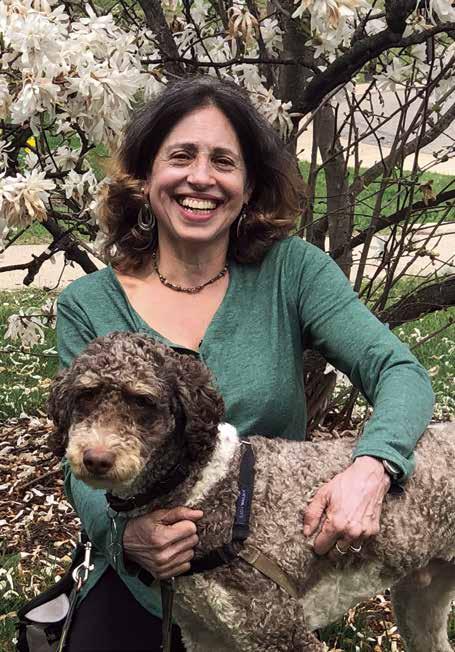
• Saturday, November 6, 2:30– 4:30 p.m. and Sunday, November 7, 1 - 5 p.m. • Therapeutic Satyananda Style Yoga Nidra and meditation have been used in medical settings worldwide for over 60 years as powerful tools for patients and staff to manage anxiety, depression, and chronic illness. Locally Ema has worked with cardiac and cancer patients, private yoga therapy clients including children and families. Contact Ema at EmaStefanova@cs.com or YogaAndMeditation.com.
Focused Mind Meditation – Teleconference with John Friedlander • Monthly, first Sundays: September 5, October 3, November 7, December 5 • 9 a.m. – 12 p.m. • The development of sustained focused meditation makes it easy to develop a whole new magnitude of psychic skill and healing ability—as well as a whole new level or mental clarity and spiritual openness. $15. Contact Violeta Viviano at mvaviviano@gmail.com or 734–476–1513; psychicpsychology.org.
Fall Intensive 2021 video/tele-conference with John Friedlander • October 16 - 24 • Saturday & Sundays 10 – 12 and 2 – 4; Weekdays 7 a.m. – 9 p.m. • Deep, sustained meditation and training, spending considerable time on each of the seven major chakras from a clairvoyant technical sophisticated perspective. You may participate in some or all of the coursework. Prerequisite: Foundations Level I (class or CD class) or instructor’s permission. $TBA. Contact Gilbert Choudury at gchoud@yahoo.com; psychicpsychology.org.
Psychic Psychology Women’s Group – Teleconference with John Friedlander
• Monthly, first Tuesdays: October 5, November 2, December 7 • 7 – 9 p.m.
• For women only. Meditations will concentrate on women’s issues relative to biological energies as well as that of the aura. $12.50. Contact Violeta Viviano at mvaviviano@gmail.com or 734–476–1513; psychicpsychology.org.
Creating Your Ideal Mate with Karen Greenberg • Sunday, September 12 • 1 – 6 p.m. • Has it been lonely being in lockdown during the pandemic? Identify your ideal mate’s qualities (as I did so to manifest my mate of over two decades), learning how to use ceremony, meditation, chanting, movement, fragrances, essences, elixirs, herbs, flowers, colors, shapes, metals, altars with sacred symbols, archetypal images, and candles. Learn to work to remove blockages, to work through fears and deserving issues, and to trust the Divine Order and timing. $125. Contact Karen Greenberg at 734-417-9511 or krngrnbg@gmail.com; clair–ascension.com.
I cannot endure to waste anything so precious as autumnal sunshine by staying in the house.
—Nathaniel Hawthorne
Linda J. Young was on the faculty of the Detroit Psychiatric Institute early in her career, and for the last several decades has practiced the art of psychoanalytic therapy in Ann Arbor, where she works with adult individuals and supervises psychology students. Her office is located on Stadium Boulevard.
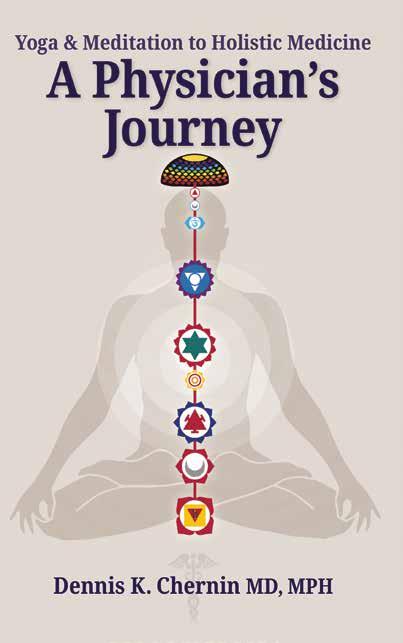
After many years on the path of meditation and holistic health, I’m delighted to finally tell the story of my professional and spiritual journey. I am using the singular journey because my spiritual and professional lives have melded into one. For the last seven years I had been thinking of writing a sequel to my book How to Meditate Using Chakras, Mantras and Breath, describing the meditation practice that I had been initiated into by Swami Rama, which has been integral to my holistic medical practice. However, every time I attempted this task, I would develop a severe case of writer’s block. I tried using various concentration techniques including meditation on the fifth chakra, the center of communication and creativity, but to no avail.
Understanding my angst and wanting to release me from this quagmire, my life partner, Dr. Ruma Banerjee, wisely suggested that I expand How to Meditate, incorporating more about my personal spiritual and professional medical journey. So, this book begins with my early experiences with living in a yoga ashram that seeded my lifelong experiment with integrating meditation and holistic medicine and illuminates this journey with personal anecdotes and case histories. Initially, I was uncomfortable about writing a memoir, concerned that it might be an egotistical exercise. However, when I started putting pen to paper, to my astonishment the words came flowing out and I began to feel at ease with the project.
The book is divided into five parts. In Part I, I describe my childhood years, my family, medical school, meeting Swami Rama, the birth of my children and my life in Ann Arbor. Part II delves into my study of yoga philosophy, the foundation of my meditation practice and introduces the three major paradigms from yoga and meditation philosophy: the koshas, the chakras and raja yoga, which I have used in my personal spiritual and medical practice. I believe these paradigms offer clear and comprehensive models to understand human health and interpret disease. My forays into tai chi, kirtan, Jewish Kabbalistic and the microcosmic Taoist meditation practices are described and compared to the yogic meditation path.
After many years on the path of meditation and holistic health, I’m delighted to finally tell the story of my professional and spiritual journey.
Part III presents the theory and practical application of raja yoga, the royal path of meditation, which integrates all the other paths of yoga, including karma, bhakti, jnana, tantric and mantra yoga. Part IV is a practical guide to the meditation system that I was taught by teachers from the Himalayan Mountain tradition.
Part V, the final section of the book, provides a detailed description of the therapeutic modalities I use in my medical practice, including nutrition, Ayurveda, exercise, breathing techniques, meditation, psychotherapy and homeopathy. It includes several case histories that illustrate how I integrate these varied modalities within the paradigms of the chakras and the koshas.
SK is a 66-year-old mechanical engineer who was semi-retired. For many years, he had practiced meditation, delving into Buddhist and yogic philosophy. Three years previously, when away from home, his 15-year-old son was killed in a tragic accident. Receiving the news, he immediately felt pain in the center of his chest, which exacerbated his asthma. He felt he was going to die from oxygen deprivation. He couldn’t cry. A rather stoic person, he had grown up being told that men don’t cry.
Although it was never articulated, he felt that his wife blamed him for being away at the time of their son’s death. She became emotionally and physically distant, which deepened his sense of loss, loneliness, and grief.
After six months of continued chest discomfort, a stress echocardiogram and angiography, led to the diagnosis that he was in heart failure. A stent placed in his left anterior descending artery (widow making artery) alleviated the chest pain, but he remained in heart failure. The prescribed medications were of no avail and his physicians were at a loss to understand why he wasn’t improving.
Charka Perspective: In my opinion, SK was suffering from a broken heart. Despite the medications, his cardiac problems persisted. From a yogic perspective, the mental and physical bodies are intimately connected through the energy body. SK’s heart problems were partly a manifestation of grief following his son’s demise. His wife’s isolation deepened his sadness and guilt about having been away. From a chakra perspective, the imbalance was in the fourth chakra, the heart-center.
Treatment: I recommended individual psychotherapy, believing that it would help SK tap into suppressed feelings from his childhood associated with very controlling and critical parents, which resulted in repressed anger, sadness, and frustration. Therapy could also be an outlet for his current grief and loss. I also suggested marital therapy.
We worked on improving SK’s diet, moving more toward a mostly vegetarian heart-healthy diet to help lower his cholesterol. I recommended less red meat and larger portions of beans and whole grains, which are associated with less heart disease. I also suggested a high potency probiotic to enhance intestinal microbiome health.
We also worked on yoga postures for opening the chest (camel, bridge, cobra, and fish). I taught him the calming practice of alternate nostril breathing to balance the right and left energy channels. After learning to slow down and regulate his breath, we worked on lung and heart stimulating pranayama techniques such as kapalabhati and bhastrika. I suggested vigorous walking to improve cardiovascular health.
I recommended that he use the fourth chakra, the center of love, compassion, loving kindness, and self-forgiveness, as a focus of his meditation together with the associated bija mantra, Yam. For his morning meditation, I suggested that he repeat the mantra, Om Hrim Shrim Klim Hamsa Soham Swaha. Since he is Jewish, we discussed reciting the Shema prayer upon waking and going to sleep
From a yogic perspective, the mental and physical bodies are intimately connected through the energy body.
to help lessen his sense of aloneness and to enhance feelings of connection to something larger than his own self-suffering.

I prescribed Natrum Mur in high potency (10M), which is the classic homeopathic grieving remedy for people who isolate rather than reach out for consolation and comfort. Later, I added the remedy cactus grande 30C and calcium fluoride 6X to help improve heart muscle strength and contractility.
Outcome: About six months after following most of my suggestions, SK’s heart ejection fraction went from 26 to 46, reflecting greater heart strength and indicating that he was out of heart failure. He lost seven pounds. He was better able to communicate with his wife and they were enjoying time spent together. Having made substantive progress, he realized that he needed to continue to incorporate holistic approaches to heal in body, mind, and spirit. From a yogic perspective, his fourth chakra had been strengthened.
I am now in the seventy-second year of this life’s journey and am regularly asked by patients, family, and friends about my retirement plans. While I have pondered this question, the truth is that the practice of holistic medicine and caring for people is part work and part spiritual practice for me. In fact, my spiritual life is so intertwined with my medical practice that they have become one and the same.
The doctor’s black bag I carry contains not only the standard instruments for diagnosis and care but also guidance for dietary adjustments, supplements and nutriceuticals, homeopathic remedies, yoga postures and breathing techniques, and meditation practices. For example, I show my patients which yoga postures could be used therapeutically for an underactive thyroid or lower back pain and teach breathing exercises to patients suffering from asthma, anxiety, or depression.
Kabbalah for Couples with Karen Greenberg • Monthly Sundays: September 19, October 17, November 14, December 12 • 3 – 5 p.m. • Have relationship issues been amplified being quarantined at home with your partner? This is for basically good relationships that both parties are willing to work on to improve physically, emotionally, mentally, financially, spiritually, and energetically. This course is not couples’ therapy but can help you get your relationship to the place that you always wanted it to be but did not know how. $205 if one, or both, have taken Beginning Kabbalah. Contact Karen Greenberg at 734-417-9511 or krngrnbg@ gmail.com; clair–ascension.com.
Beginner’s Yoga and Meditation 2– Day Seminar with Ema Stefanova • Saturday September 4, 2:30 – 4:30 p.m. and Sunday, September 5, 1 – 5 p.m. • Total beginners, busy professionals, people looking for safe yoga and meditation as therapy, athletes, and all are welcome to experience practices they can apply right away in real life. No stretchy pants, mats, or props required. Come as you are. $179 early registration; $199 regular. Contact EmaStefanova@cs.com; YogaAndMeditation.com.
White Tara Guided Healing Meditation with Jewel Heart instructors • Weekly Sundays, September 5 - December 26 • 9:30 – 10:40 a.m. • Tara is the mother goddess of Tibetan Buddhism, known for her quick and compassionate activity. She is particularly associated with healing and long life. Join us for a guided meditation using visualization techniques to overcome physical, mental, and emotional suffering. $Free, but donations are welcome. To register, visit jewelheart.org/free–weekly–virtual–programs. For more information, visit jewelheart.org, call 734–994–3387, or email programs@jewelheart.org.
I practice the different types of yoga that I describe in the book, including karma yoga, serving people and their health needs as selflessly as possible. I practice bhakti yoga by caring deeply about my patient’s overall well-being with as much compassion and empathy as possible. Through my study and teachings, I practice jnana yoga while the practice of raja yoga brings it all together. I help others see how ethical and simple living can combine with healthy physical and dietary habits and the practice of meditation, to become the best person they can be.
When I look back on my career, I feel grateful. I have been privileged to treat four generations of some families and witnessed how patterns of behavior and health are passed down, what homeopaths call miasms. Besides my public health work with its community and global implications, my private family practice is preventive in its focus with an emphasis on good nutrition, exercise, natural medicines when possible, and holistic practices. I feel very blessed to have had the opportunity to care for patients and to guide them on the path of holistic and healthful living.
Dennis K. Chernin is an Ann Arborite who received his M.D. and M.P.H. from the U of M, and is board certified in preventive medicine. He currently practices holistic and family medicine using nutrition, yoga, meditation therapies, and homeopathy, is the medical director of two county public health departments, and is the co-owner of The Parkway Center. He is the author of several books including: Homepathic Remedies: For Health Professionals and Laypeople, and How to Meditate Using Chakra, Mantras, and Breath.
Healing and Compassion Meditations with Hartmut Sagolla • Weekly Mondays, September 6 - December 27, • 12 – 1 p.m. • Sagolla leads a 30 – 40-minute guided meditation on a Buddhist theme followed by discussion. Meditations are centered around healing oneself and others and developing compassion. They include concentrated meditation, visualization and contemplative meditations. $Free, but donations are welcome. To register, visit jewelheart.org/free–weekly–virtual–programs. For more information, visit jewelheart.org, call 734–994–3387, or email programs@jewelheart.org.
Path to the Awakened Heart: The Yoga Sutras of Patanjali with Robert Jacobs • First and Third Thursdays: September 9, 23, October 7, 21, November 4, 18, December 2 • 7 p.m. • This class will explore the Yoga Sutras of Patanjali. We will consider the Sutras from the point of view of Tantric Yoga, particularly the North Indian school of Kashmir Shaivism. This non–dual school emphasizes śakti, the divine energy of the Absolute that creates our universe and forms the basis of the streams of our Awareness. Along with studying the text, we will practice tantric forms of meditation to help us understand the sutras. Suggested donation: $120–$360. Contact 734-477–5848; om@deepspring.org or deepspring.org.
Days of Mindfulness with Esther Kennedy • Monthly Saturdays: September 11, October 9, November 20, December 11 • 10 a.m. – 2:30 p.m. • Basic Connection, Looking Deeply, Wandering Mind, Wholeness, Happiness, Peace. Registration is required. $35 (includes lunch). Contact Weber Center 517–266–4000; webercenter.org.

My spiritual life is so intertwined with my medical practice that they have become one and the same.
Applying Vipassana in Daily Life and Seeing Its Progression Along the Path with Celeste Zygmont • Monthly, mostly first Mondays: September 13, October 4, November 1, December 6 • 7:30 - 9 p.m. • This class is designed for those who are dedicated to deepening their experience of the Dharma and moving further along the path. The class will be largely experiential. We will use our increasing focus and spaciousness to deepen our ability in the moment to know our experience. As part of a path of service, we will learn to investigate and transmute objects of mind in any conscious wakeful moment. Sacred darkness will more clearly be seen as nondual expression, and our true nature as spaciousness and Light will begin to come into view. Interactions with the presenter and one–on–one meetings will continue throughout the month. Suggested donation: $60–$180. Contact 734477–5848; om@deepspring.org or deepspring.org.
Myriad of Meditations (series) with Karen Greenberg • Sundays, September 12, 19, 26; October 3, 10, 17, 24 • 10 a.m. – 12:30 p.m. • Meditation is an essential component to spiritual evolution. Learn a myriad of techniques to discover which resonate for you (possibly dissolving years of resistance to mediation). Learn meditations with fire, water, air, earth, with the Four Worlds, with different breathing, with Holy Geometry, sacred letters, powerful archetypes, spiritual beings, qualities of G– D, with movement, music, toning, colors, scents, gemstones, and trees, including several guided meditations through the Tree of Life. $25 per class. Contact Karen Greenberg at 734-417-9511 or krngrnbg@gmail. com; clair– ascension.com.
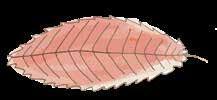

Vipassana and Pure Awareness Meditation with John Orr • Wednesdays, September 15, 29, October 13, 27, November 10, 24, December 8 • 7 – 9 p.m. • Module 4 of The Eden Project. Deepening of Vipassana (Insight Meditation) and Pure Awareness. Designed for those who already have the basics and have the ability to be mindful in daily life situations. Developing and sustaining a daily formal meditation practice will be encouraged. Refer back to The Eden Project description (listed under Spiritual Development). Contact 734-477–5848; om@ deepspring.org or deepspring.org.
Maha–Mantra Kirtan Jam with Devin O’Rourke • Thursdays, September 16 – December 30 • 6 – 8 p.m. • An immersive kirtan experience with the Hare Krishna maha–mantra. Musicians are welcome to bring instruments to join in for this fluid program and all levels of experience with kirtan are invited to join. Kirtan is meditation using mantras with musical accompaniment and provides an easy and pleasing atmosphere to focus the mind. $Free. Contact info@ theharmonycollective.org; theharmonycollective.org.
Magee • September 28, 4:15- 5:30 p.m.; Sept 29 - October 1 anytime; October 2, 9:30 – 12:30 p.m. • We invite you to explore concerns and begin to heal the issues of racial inequity, social injustice, and trauma in our schools and communities by participating in a unique opportunity — a series of three ZOOM events with Dr. Rhonda Magee, known for her transformative work in racial justice and mindfulness. For more information or to register visit mc4m3.org.
GOM – A Day of Meditation with Hartmut Sagolla and Supa Corner • Saturday, September 18 • 9 a.m. – 5 p.m. • This day of meditation will include an instruction session, practice sessions, discussion session, and guided meditation. Open to all experience levels. $Free, but suggested donation is $15. To register, visit jewelheart.org/free–weekly–virtual–programs. For more information, visit jewelheart.org, call 734–994–3387, or email programs@jewelheart.org.
Gratitude, Giving, and the Holidays: Processing Grief on the Labyrinth ONLINE with Rob Meyer–Kukan • Monthly September-December: Third Wednesdays at 7 - 8 a.m. and last Sundays at 7 - 8 p.m. • Join Veriditas-trained Labyrinth Facilitator, Rob Meyer–Kukan for this opportunity to quiet your mind, to release, receive, and return from the comfort of your home or office. Register at facebook.com/ robmeyerkukan/events. $Free, but donations accepted gratefully at paypal.me/ robmk. Need a handheld/finger labyrinth? Simply indicate that on your registration form. For more information, contact Rob Meyer–Kukan at 248–962–5475 or rob@ robmeyerkukan.com; 7notesnaturalhealth.com/events.
Silent Meditation ONLINE with volunteer facilitators • September – December • Weekly Sundays, 11 a.m. – 12 p.m. and Tuesdays, 9 – 9:30 a.m. • Insight meditation offered via Zoom twice weekly. No experience necessary; all levels welcome. No instruction. $Free, but donations appreciated. Contact at 734-477–5848; om@deepspring.org or deepspring.org.
Yiquan + Inner Smile ONLINE with Steven Sy • Weekly Wednesdays: November 3, 10, 17, 24; December 1, 8, 15, 22, 29 • 7:30 – 8:45 a.m. • It consists of a standing meditation (Yiquan) and a seated meditation (Inner Smile). No familiarity with these is assumed prior to enrollment. The purpose of these sessions is practice. While there is guided instruction of the actual practice, it is mostly non instructional. Repetition of the practice over the 9 Wednesdays serves to help one to learn the practice, as well as establish a practice habit. $99. Contact Steven Sy at 517–295–3477 or steven@spiritualtao.com; spiritualtaoworkshops.com.
for mantra recitation and the possibility to complete 10,000 migtsemas on the same seat. For those interested in completing a 100,000 Ganden Lha Gyema migtsema retreat, the 10,000 mantras would set the base to continue toward the 100,000-mantra goal. $80 Jewel Heart Members / $100 Non–Members. No one is turned away due to financial considerations. To register, visit jewelheart.org. For more information, call 734–994–3387 or email programs@jewelheart.org.
Sound Bath ONLINE with Rob Meyer– Kukan • Monthly first Sundays: September 5, October 3, November 7, December 5 • 7 – 7:15 p.m. • Come, settle into the safety and comfort of the combined sounds of singing bowls, gongs, chimes, and more as Sound Therapist, Rob Meyer–Kukan, weaves together a blanket of sound sure to comfort and relax the soul. Each month has a different theme: Sound Sanctuary, Mystery of Sound, and The Season of Hope. To watch/listen to this sound bath meditation, visit youtube.com/robmeyerkukan. A link will be posted on my Facebook timeline when the video is live. $FREE, but donations gratefully accepted at paypal.me/robmk. Contact Rob Meyer–Kukan at 248–962–5475, rob@ robmeyerkukan.com; fb.me/e/5hdyA8OnH.
Celebrate with Sound: Sound Bath Meditation with Rob Meyer–Kukan • Saturday, September 25 • 7 – 8:30 p.m. • Relax. Calm. Soothe. Renew... with the soothing sounds of singing bowls, gongs, and more. $25. Advanced registration and payment by September 24 are required to secure your space. Contact Rob Meyer–Kukan at 248– 962–5475 or rob@robmeyerkukan.com; fb.me/e/Q37BfqrZ, robmeyerkukan.com.
Sacred Sound Journey with Victoria Schon • Mainly Saturdays: September 25, October 9, November 6, 27 • 6:30 – 7:45 p.m. • This is a non–invasive complementary healing modality that provides an environment of sound, tone and vibration to create harmony, order, and deep relaxation in which insights and a deep meditation state can be experienced. $40. Contact victoria@veraposeyoga. com; veraposeyoga.com/events,
Singing for Comfort with various leaders ONLINE • Monthly, second Thursdays: October 14, November 11, December 9 • 7 – 8:30 p.m. • Take some time away from life’s stresses with an evening of peaceful, comforting singing. Layla Ananda will teach and lead songs that are easy to learn and sing, including some from the Threshold Choir repertoire. No experience necessary. $Free, but donations gratefully accepted. Visit events at interfaithspirit.org.
Autumn’s Bounty: Sound Bath Meditation with Rob Meyer–Kukan • Saturday, October 23 • 7 – 8:20 p.m. • Allow the soothing tones of singing bowls, gongs, and more to transport you to a place of relaxation and calm as we celebrate the bounty of this season. $25. Advanced registration and payment by October 22 are required to secure your space. Contact Rob Meyer–Kukan at 248– 962–5475 or rob@robmeyerkukan.com; fb.me/e/Q37BfqrZ or robmeyerkukan.com.
Harvest of Sound: Sound Bath Meditation with Rob Meyer–Kukan • Saturday, November 20 • 7 – 8:30 p.m. • Harvest season is a time to be grateful and to give thanks for the blessings from the labors of the previous seasons. In this time, together, we will lift our hearts in gratitude for the blessings in our lives and enjoy the relaxing tones of singing bowls, metal and crystal, as we settle into a space of peace and calm. $25. Advanced registration and payment by October 22 are required to secure your space. Contact Rob Meyer–Kukan at 248– 962–5475 or rob@robmeyerkukan.com; fb.me/e/Q37BfqrZ, robmeyerkukan.com.
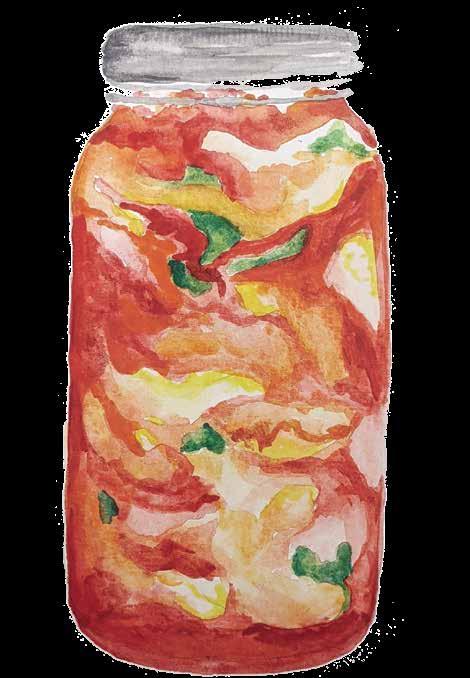
Cohousing Tours with Cohousing Tour Leaders • Sundays, September 5 –December 26 • 2 - 4 p.m. • Cohousing is a form of intentional community centered on the joy that comes from residents sharing their work, resources, and talents. The Ann Arbor area is unique in the US for having 3 cohousing communities. Come find out what it’s all about. Meet at the Touchstone Common House, 560 Little Lake Dr. $Free. Contact 734-274– 9110 or info@natureandnurtureseeds.com; natureandnurtureseeds.com.
PSYCH– K Basic Workshop with Mary Mazur • Friday, September 10 – 12 • 9 a.m. – 6 p.m., ending 5 p.m. on Sunday • During this three-day workshop, you will learn how to transform beliefs within your subconscious mind utilizing PSYCH– K® in your Daily Life using two balance processes and bringing clarification to the subconscious mind when needed. You will also learn and transform any perceptions of stressful situations (past, present, and future), to offer you peace, clarity, and joy in new levels. $850. Contact mary@igniteandhealyourlife.com.
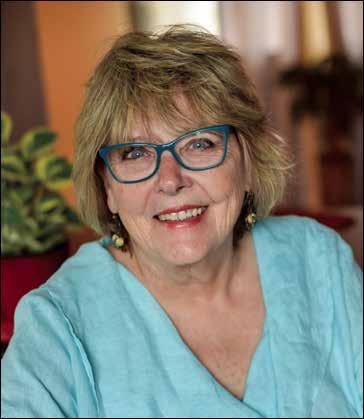
Healthy Boundaries with Karen Greenberg • Sunday, October 31 • 10 a.m. – 2:30 p.m. • Learn how to define healthy boundaries for (and with) yourself, how to set and enforce them (without caving in), and how to respect others’ boundaries, in all kinds of personal and professional relationships and situations. Role play is a chief learning tool in the work. $55. Contact Karen Greenberg at 734-417-9511 or akrngrnbg@gmail.com; clair– ascension.com.
Traumatic Incident Reduction Workshop ONLINE with Marian Volkman • Monday, November 1 – Friday, November 5 • 10 a.m. – 4 p.m. • Online workshop: Practical Trauma and Stress Resolution Techniques to use with clients Move Beyond Symptom Management to Effective Trauma Recovery. Learn to use (TIR) Traumatic Incident Reduction, effective for reducing and eliminating aftereffects from: stress, difficult relationships, any upsetting, severe, or shocking event, war trauma (either received, caused or observed), any trauma (caused as well as received or observed), including domestic violence, accidents, and injuries, losses of all kinds, unwanted feelings or thoughts. $695 or early bird price $625. Contact Marian at marian@tir.org or 734–662–66864; marianvolkman.com.
www.victoriaschon.com

of self–paced study and life online workshop. $697. Contact Patty Brennan at 734–663–1523, patty@lifespandoulas.com; lifespandoulas.com/birth–doula–training.
Postpartum Doula Training with Patty Brennan • Friday, October 8 • 9 a.m. – 4 p.m. • Learn how to create a cocoon of rest, healing, and support for the new mother and family. Professional online training and certification. $697 (payment plans available). Contact Patty Brennan at 734–663–1523 or patty@lifespandoulas. com; lifespandoulas.com/postpartum–doula–training.
RYT200, RYT300, and RYT500 Holistic Yoga and Meditation Teacher Training with Ema Stefanova • Tuesday, September 7 – Sunday, December 19; Flex Start/Finish Dates • Our intelligent programs are hands–on, user–friendly, and common sense. Our approach is student–centered and takes in account each trainee’s talents, special interests, prior learning or lack thereof. Professional Teacher Training Certificate earned automatically qualifies to become registered at the RYT200, RYT300 or RYT500 level with the Yoga Alliance national registry. Our high-quality programs are designed to: systematically deepen your understanding of all aspects of yoga, help develop skills for safely teaching, help integrate yoga and meditation in your professional career as a social worker, schoolteacher, massage therapist, healthcare professional or other. Our graduates teach worldwide. Contact EmaStefanova@cs.com; YogaAndMeditation.com.
Heart Centered Community Connection with Rachel Egherman • Weekly Thursdays • 4:30 – 5:30 p.m. • Learn HeartMath and other Heart Centered practices for building resilience physically, mentally, emotionally and spiritually. Great for stress management. $10 donation suggested, but not required. Contact Rachel Egherman at tellrachel123@gmail.com; celebratedheart.com.
End-of-Life Doula Training with Merilynne Rush ONLINE• Fridays, September 10, 17, 24, and October 1, 8 • 3 - 6:30 p.m. • The Dying Year EOL doula training meets five consecutive Fridays. Our six diverse teachers from varying backgrounds fully prepare you to offer your services to dying individuals and their families/ caregivers. $725; scholarships and payment plans are available. Contact Merilynne Rush at 734-395-9660 or thedyingyear@gmail.com; thedyingyear.org/end-oflife_doula_trainings.html.
Evolving Your Doula Business Workshop with Patty Brennan • Saturdays, September 18, December 11 • 8:30 a.m. – 5 p.m. • Learn how to approach the business side of being a doula. How to get started, establish your value, grow your business, and more! $247. Contact Patty Brennan at 734–663–1523 or patty@ lifespandoulas.com; lifespandoulas.com/doula– business– workshop/.

Birth Doula Training with Patty Brennan • Saturdays & Sundays, October 2–3 and December 4–5 • 9 a.m. – 4 p.m. • Train online with Patty Brennan to become a birth doula and begin providing support to families in your community. Professional certification through Lifespan Doulas. Training includes a combination
Yoga Teacher Training – 200 Hr (Yoga Alliance Certified RYT– 200) with Courtney L Fitzpatrick • Saturday and Sundays: September 11-12, October 2-3, 23-24, November 13-14, December 4-5, January 8-9 • 9 a.m. – 5:30 p.m. • Verapose Yoga is a Registered Yoga Teacher Training School with the Yoga Alliance. Upon completion of the requirements, you may register with the Yoga Alliance as a Registered Yoga Teacher (RYT– 200). At Verapose, our Yoga Teacher Training (YTT) program is rooted in the belief that everyone is beautifully unique and capable of enjoying the deep and lasting benefits of a holistic yoga practice. Join us for our 200 Hour YTT to empower your connection to your Self, and to learn how to guide others in enjoying the benefits of yoga. Small class size. Space is limited, to provide high–quality instruction and support. $3200 early bird until Aug 15 (reg $3400), payment plan available ($150 fee). Contact courtney@veraposeyoga.com; veraposeyoga.com.
First Degree Reiki Training with Suzy Wienckowski • Saturday, October 9, 10 a.m. – 5 p.m. and Sunday, October 19, 10 a.m. – 1 p.m. • Reiki is a gentle, hands–on healing art. Reiki is easily learned by all and, after initiation by a Reiki Master, healing energy flows effortlessly through your hands. Reiki reduces stress, eases pain, and restores balance and harmony on all levels: Body, Mind, and Spirit. The First-Degree class includes the history of Reiki, hands–on treatment form for yourself and others, and four individual initiations. Certificate awarded. $150. Contact Suzy Wienckowski at 734–476–7958.

Discover Reiki I & II with Alicia Clark Teper • Saturday, November 13 and Sunday, November 14 • 10 a.m. – 6:30 p.m. • Reiki I & II includes attunements. $333. Contact Alicia Clark Teper at 734– 945– 5396 or sacredlotusexperience@yahoo. com; SacredLotusExperience.com.
Holy Fire III Advanced Reiki III with Alicia Clark Teper • Saturday, October 16 – Sunday, October 17 • 10 a.m. – 6:30 p.m. • Advance your Reiki Practitioner skills with Holy Fire III ignition and attunement. Learn advanced Reiki techniques, Crystal Reiki, Chakra Clearing, pendulum work and new symbols. $333. Contact Alicia Clark Teper at 734– 945–5396 or SacredLotusExperience@yahoo.com; SacredLotusExperience.com.

Can the Earth Heal? Insights from Teilhard de Chardin (Virtual presentation) with Ilia Delio • Saturday, September 18 • 9:30 a.m. – 3:30 p.m. • Global warming, racial conflict, gender discrimination all mark the early decades of the 21st Century. The environmental crisis, in particular, poses a real danger to the future of planetary life. Despite the signals of systems’ breakdowns, the western consumer lifestyle proceeds unabated. Our unhealthy patterns of liberal autonomy do not have a sufficient rationale for radical change because they are supported by old philosophical principles. Teilhard de Chardin reframed the human phenomenon within the process of evolution and offers new directives for interpersonal planetary life. Registration Required. $45 (no discounts). Contact Weber Center 517– 266– 4000; webercenter.org.
Every leaf speaks bliss to me, fluttering from the autumn tree.
—Emily Brontë
 By Phillip Permutt
Book Review By Catherine Carlson
By Phillip Permutt
Book Review By Catherine Carlson
Phillip Permutt was recommended as an excellent resource for knowledge about crystals. When his new book, The Modern Guide to Crystal Healing came out, I thought it was a great opportunity to take a look. Permutt lives in the United Kingdom and began practicing crystal healing after a severe illness many years ago. He is now considered an expert in the field.
The nicely sized book is packed with an amazing amount of information organized in a simple fashion with sharp photographs for identification. The introduction contains a history of how crystals have been used throughout different civilizations. Crystals have been described in ancient texts and found in early graves. Permutt says that crystals work first with the energy system of the body which then affects the physical body, and that’s how they can help with healing. Permutt discusses several ways to work with crystals to benefit from them, including making an elixir. These can be taken as a drink or applied to the body. For example, amber elixir “can act as an antiseptic for cuts and grazes.”
There is a section on preparing for crystal work which includes how to choose a crystal that’s right for you. You may also choose one for someone else. Permutt tells the story of how he chose the yellow crystal citrine for a customer, having a feeling it was related to his digestion. The man insisted there was nothing wrong but took the crystal. Several days later he called to say at a dinner the previous night everyone he was with had gotten food poisoning. He was the only one who didn’t and had been carrying his citrine.
The Crystal Finder chapter has descriptions and clear photos for over 400 different crystals. Quartz and Amethyst are listed first because they are “two of the most powerful healing crystals.” For myself, I’m often drawn to crystals based on their color as are many people. The rest of the crystals are organized in rainbow order with colored bands at the top of each page. If you know you tend to be attracted to green stones, it’s easy to flip to that section.



For each crystal, he lists where it is sourced, astrological associations, and the chakra alignment followed by healing qualities. For example: the crystal aquamarine can be found in several countries including Afghanistan, Brazil, and the USA. It is associated with Aries, Gemini, and Pisces and aligns with the throat chakra. It is listed as protecting travelers, giving courage, and being helpful when studying or communicating. Aquamarine also “makes things happen.” Physically it is healthy for the kidneys, lymph, blood, teeth, and eyes. Emotionally it has a
The ABC’s (and DEFG’s) of Light Body Development ONLINE with Karlta Zarley • Saturday, September 25, 8:30 a.m. – 1 p.m. and Sunday, September 26, 1 – 5:30 p.m. • Please join me for this Zoom mini–retreat for total beginners or those who want more foundational information about the Light Body. There will be a 1/2-hour break during each day’s session for body care. Registration deadline September 18. $110. Contact Karlta Zarley at 734– 834– 1566.
Awakening to the Compassionate
Retreat ONLINE with
and John Orr • Saturday, October 2 – Saturday, October 9 • Check in TBA • A week–long Vipassana retreat offered via Zoom. Our focus will be deepening of Vipassana and Pure Awareness practice and of compassion, as support through these challenging times. Such challenges can lead us to profound insights. We understand there will be some busyness at home. As much as is possible, we ask the retreat to be held in silence. $TBA. Two levels of registration: full participation and auditors. Contact 734-477–5848 or om@deepspring.org; deepspring.org.
Holistic Yoga Meditation Retreats at the Vivekananda Retreat Center in Ganges, MI with Ema Stefanova • October 22– 24; November 5– 7 • Check in TBA • Our small group retreats are for total beginners, continuing students, and teachers who
calming energy and helps if you’re feeling judgmental. What if you are repelled by certain colors or stones? He talks about the reasons behind that, too.
Another way to find a crystal for you is based on the healing properties. The last chapter is all about crystal remedies. There is a section for crystals for physical remedies, another for emotional remedies, as well as sections for crystals for spiritual enhancement or lifestyle enhancement. I had been suffering from a frozen shoulder and wondered if there was anything listed to help me. There were several listings under both muscle and bone. I was pleasantly surprised, however, to actually see a separate listing for frozen shoulder! It said to “Hold azurite/malachite or liddicoatite in the hand of the affected shoulder.” I had some malachite and I tried holding it as suggested, for 30 minutes and I did notice a bit of pain relief. It was enough to inspire me to try it again. There are also several allpurpose crystals that are useful if you’re not sure where to begin.
would like to experience classical yoga and meditation as a way of life, healing, and growth, develop and refine their practice in an environment dedicated to peace. The Vivekananda Retreat Center has provided home for our retreats since 1991. It is located on 110 acres of beautiful non– farming land in the Saugatuck area at Lake Michigan. Lodging (some private and double occupancy rooms with shared bathrooms), vegetarian meals, and six guided group classes are included in cost. Register early to save. RYT200 and RYT500 teachers earn CE hours with the Yoga Alliance. $445/$845. Contact Ema at EmaStefanova@cs.com; YogaAndMeditation.com.
Insight Meditation & Community: New Hope Fall Retreat with Barbara Brodsky, Aaron, and John Orr • November 12– 14, 2021 • Check in TBA • A weekend Vipassana retreat held at The Pavilion at Nicks Road, Mebane, NC (near Raleigh/ Durham) and ONLINE via Zoom. $TBA. Contact John at johnorr108@gmail.com, 734-477–5848, or om@deepspring.org; deepspring.org.

Permutt says based on his experience and that of others, “a full-course of crystal healing leads to an improvement in well-being.” I own several books on crystals, but this one has inspired me to really investigate how to use them more in my daily life for all kinds of reasons. The tell-tale sign of a good resource book is how easily you can find what you are looking for, and this book is very well put together. I can already tell this is going to be a book I reach for often!The nicely sized book is packed with an amazing amount of information organized in a simple fashion with sharp photographs for identification.
I own several books on crystals, but this one has inspired me to really investigate how to use them more in my daily life for all kinds of reasons.Heart – Oakwood Barbara Brodsky, Aaron,
A Cosmological View of Sacramental Life with Linda Gibbler (In-person or ONLINE) • Saturday, November 13 • 9:30 a.m. – 3:30 p.m. • Drawing from scientific cosmology and Catholic tradition, Sr. Linda discusses creation as the original source of divine revelation and the root of sacramental life. Through storytelling, lecture, and conversation, Sr. Linda explores with us how the incarnational presence of God extends to the ends of the Universe, touches everything we see, and calls us to live sacramentally with God and Creation. Registration required. $45 In-person (includes lunch); $35 Virtual. Contact Weber Center 517–266–4000; webercenter.org.
Coming Back to Ourselves: A Half Day Mindfulness and Self–Compassion Retreat with Rita Benn • Saturday, November 13 • 9 a.m. – 12:30 p.m. • You will be guided in mindfulness and compassion meditation practices that will invite you to pause, rediscover your center and restore the sense of quiet and inner balance. The event may be virtual or in–person. $35. Contact info@mc4me.org; mc4me.org.
Shamanic Extraction, Residential with Connie Eiland • Friday, September 3 –Sunday, September 5 • Friday start 7 p.m. – end Sunday afternoon • This class teaches ways to perceive and remove misplaced energy in clients. In addition to multiple methods done in pairs, there will be individual journeys, and ceremony. Close relationship with Helping Spirits and taking Introduction to Journeying are required. Class and accommodations will be in Clarkston, MI. Single room without bath is $174.90 + $250 tuition if paid before Aug. 15, after $290. Contact Connie Lee Eiland at 248–809–3230 or clshebear7@gmail.com; shewolfshaman.com.
Light Worker Activation with SANDYA– Sandra Shears • Weekly Wednesdays: September 1 – December 29 • 7 p.m. • As a Light Worker or World Server you have incarnated at this time in order to facilitate the transition in the next Age. It is time to bring forth the gifts that will accelerate healing and activate spiritual purpose. $100 per month prepaid – ongoing commitment required. Contact SANDYA– Sandra Shears at 734–340–2616 or sandya2033yahoo.com; sandya–sandrashears.com.
Metaphysics for All of Us with Mary Alice Truitt • Weekly Wednesdays: September 1 – December 29 • 9:15 – 10:45 a.m. • Explore metaphysics via Zoom. $Free, but donations gratefully accepted. Visit interfaithspirit.org.

Lightworker Development with SANDYA– Sandra Shears • Monthly, 3rd Fridays: September 17 – December 17• 7 - 9 p.m. • Group light work with current spiritual, astrological, and energy events. Includes energy adjustment and activation with sound attunement. Includes individual setup the week before. $100 per month prepaid. Requires ongoing commitment. Contact SANDYA– Sandra Shears at 734–340–2616 or sandya2033@yahoo.com; sandya– sandrashears.com.
Extraction: Illness and Healing from a Shamanic Perspective with Judy Liu Ramsey • Saturday, September 18 – Sunday, September 19 • 9 a.m. – 5 p.m. • From a shamanic perspective, there are three causes of illness: loss of power, loss of soul essence, and intrusions. Explore different ways to diagnose an illness as well as to spiritually address its healing. Working with partners, you will deepen your understanding of power restoration and learn ways to address and extract spiritual intrusions. This is an advanced in–person class with a limit of 6 persons. Prerequisites: Basic Journeying, Medicine for the Earth/Healing with Spiritual Light. Suggested Reading: Walking In Light by Sandra Ingerman. This class will repeat via ZOOM with a limit of 4, October 23– 24. $180 if paid by September 10. $220 if paid after September 10. Visit judyramsey.net.
Shamanic Healing for Animals: Level II ONLINE with Judy Liu Ramsey • Weekly Tuesdays: November 30 to January 11, 2022 • 7 – 9 p.m. • This class deepens your relationship to animals and their healing within the context of working with their ancestors and the elements. Psychopomp with animals will be covered in depth. Prerequisite: Shamanic Healing for Animals I. The class is taught via ZOOM. $280 if paid by November 15; $320 if paid after. $125 for repeat students. Visit judyramsey.net.
Creating Safety and Sacred Space with Connie Lee Eiland • Sunday, November 14 • 9:45 a.m. - 3 p.m. • This class gives you practices, ways of looking at safety and sacred space that will serve you whether or not you are a practitioner. You will clear the space and set an altar together, so you become aware of the aliveness of all beings. Additional journey and practices included. $80 until October 30, then $110. Contact Connie Lee Eiland at 248– 809– 3230 or clshebear7@gmail.com; shewolfshaman.com.
Introduction to Journeying with Connie Lee Eiland • Sunday, October 10 • 9:45 a.m. – 3 p.m. • Class includes power animal retrieval and journeys to Upper, Lower, and Middle Worlds. Journey is with drums and rattles. $70 until September 24, then $80. Contact Connie Lee Eiland at 248–809–3230 or clshebear7@gmail. com; shewolfshaman.com.
 Muriel Barber
Muriel Barber
Science of Mind for Today with Janet Somalinog and Raymond Fix • Wednesdays: September 8, 22, October 13, 27 November 10, 24, and December 8, 22 • 7 – 8:30 p.m. • Discussion of Science of Mind via Zoom. $Free, but donations gratefully accepted. Visit interfaithspirit.org.
Midrash Study with Karen Greenberg • Monthly on Fridays: September 10, October 8, November 5, December 3 • 3 – 6 p.m. • The written version of the Old Testament (Torah) tells a story. What has been passed down orally for thousands of years is the backstory and various mystical, hidden meanings. It is rich, colorful, detailed, and compiles interesting data like who ascended to Heaven alive, who was so righteous that their deceased bodies never decomposed, and the seven things that we are not permitted to know in human form. $150 per month, various options. Contact Karen Greenberg at 734-417-9511 or krngrnbg@gmail.com; clair–ascension.com.
The Journal is distributed to more than 235 locations in the Ann Arbor Area, including Crazy Wisdom Bookstore, Whole Foods, Castle Remedies, Arbor Farms, Kerrytown, Nicola’s, Jewel Heart, and many more!
We also distribute to the offices of dozens of doctors, holistic health care providers, and therapists.
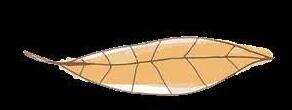
If you’d like to have copies delivered to your office, studio, or center, please email: bill@crazywisdom.net.
When tea becomes ritual, it takes its place at the heart of our ability to see greatness in small things.
Have you ever had a day where nothing was really going as planned? Or one you knew was going to be busy and full of stressors? We’ve probably all had a day where we felt ill, and energetically on empty with no desire to power through. Did you make yourself a nice cup of tea and instead of drinking it from a travel mug on the go, you sat and enjoyed your tea for a few moments? Did it make you feel better and more equipped to deal with the moment? My best guess is yes! If so, then you’ve experienced firsthand the ability a simple cup of tea has to transport, nourish, and fortify. You indulged in a simple time-tested act of healing and self-care. An activity that could easily be ritualized. Using tea to commune with the sacred has a long history starting in ancient China. It’s the intention that makes it a ritual.
As a student of herbal remedies, I’ve had the pleasure of spending time learning the medicinal properties of various plants. When studying the medicinal properties of plants, you also learn the history of usage and folklore associated with herbs along with the metaphysical or magical properties that various cultures assigned to the plants. In many cases plants are associated with Deities as well. It is fascinating to explore these underutilized properties and connections.
connecting intentionally with plants is a portal back to this ‘lost’ knowledge, and yet another way the divine feminine is bubbling up.
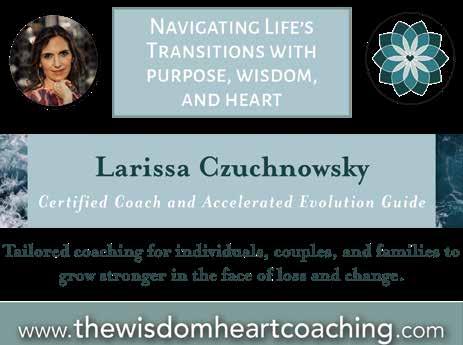
When I observe the world it’s clear to me that many people are looking for alternative ways to live, work, play, learn, and heal. Old systems of doing and being just aren’t working for many of us any longer.

Let’s say you’re working on being a more loving person to yourself and others, or perhaps you’d like to magnetize a romantic partner. If you’re a fan of tea, wouldn’t it be fun to learn all the various plants that are associated with or sacred to, Venus, the goddess of love and beauty? Imagine creating a blend of your favorite Venus herbs that you keep in a beautiful container, and you savor your special blend before an anticipated first date, or better yet, you drink it every morning to remind yourself to be open to love and serendipitous encounters.
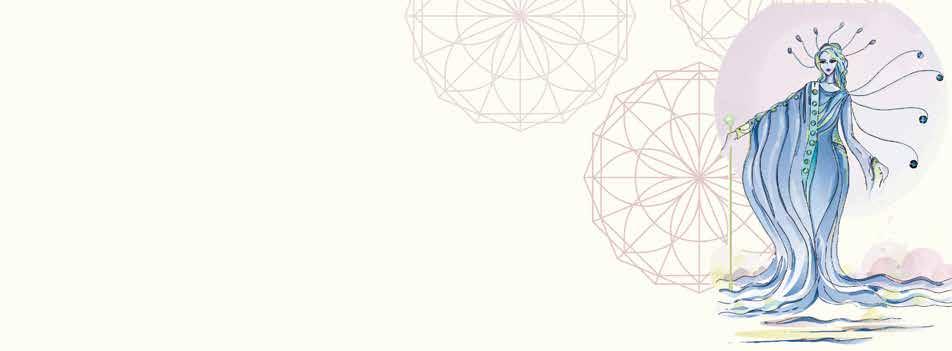
That is just one of many ways you can use plant associations with a deity to set an intention and improve your life in some way. Love, of course, is a universal theme, we’d all like to have more love and be more loving. Qualities like love, grace, mercy, collaboration, nurturing, and receptivity are commonly thought of when referencing the divine feminine, but it is important to note that this is a very narrow definition. Power, destruction, rage, transformation, strength, justice, truth, wildness, and wisdom are prominent aspects of the divine feminine as well. When most of the world moved to a monotheistic belief system, we stopped sharing much of the cultural knowledge around different ways of being feminine. It’s time to recover the myths, legends, and stories of impactful Goddesses as part of our human heritage. I believe
In the United States we have created a hyper-masculine society. Our values of independence, freedom, and competitiveness are wonderful traits when they are balanced by interdependence and collaboration (qualities associated with the divine feminine), without such balance they have hardened into a hierarchical, overly patriarchal, aggressively independent-minded mentality of ‘survival of the fittest.’ An unbalanced society where values traditionally associated with the Divine Feminine are not honored and cultivated is a weakened society, and one where both women and men have difficulty connecting to and developing their Divine Feminine qualities. It harms both genders. Exploring qualities of various Deities and their cultures is a fun and engaging way to be a small part of the worldwide rise of the Divine Feminine. I’d posit it’s a beneficial transformative experience wherever your faith lies.
Hot water, dried plant matter, a favorite teacup, steam, inhale, exhale. Simple. Inexpensive. Effective.
Shalina Nicohl Rankin is an Herbalist and founder of Fiery Maple Wholistic Living, Inc. Rankin holds a B.A. from the University of Michigan, holds a certificate of completion in Herbal Studies from the Habitat Reskill Center of Ann Arbor, completed an Herbal Medicine Apprenticeship at the Scottish School of Herbal Medicine on the Isle of Arran, Scotland, and is currently studying to become a Naturopathic Doctor at The Naturopathic Institute of Therapies and Education. You can reach her at (734) 315-0105 or visit her online at fierymaple. com. Look for her calendar listing under Tea Events.
Interfaith Sunday Service with Interfaith Center for Spiritual Growth • Weekly Sundays: September 12 – December 26 • 10:45 a.m. – 12:15 p.m. • Join us as we explore our spiritual nature and how it connects to all aspects of our human lives. Free, but all donations gratefully accepted. Visit interfaithspirit.org.
Mediumship Class and Eden Class with Barbara Brodsky • Tuesdays: September 14, October 12, November 2 • 6 – 9 p.m. • Modules 1 and 2 of The Eden Project. Allowing each of us to know ourselves as Expressions of the Unconditioned and remembering our connection to everything. Our intentions are for the highest service to all beings; to include the self in the circle of love but not separate the self; to learn to connect with our own higher self and perhaps with our spirit guides. Then we begin to visualize what this Eden consists of, what we choose to co–create. Refer to The Eden Project description (listed under Spiritual Development). Contact 734-477–5848; om@deepspring.org or deepspring.org.
Sufi Class of Chanting, Movement & Meditations ONLINE with Imam Kamau Ayubbi • Weekly Tuesdays: Sept 14 – December 28 • 6:30 – 8 p.m. • Sufi class via Zoom. $5– $10 donation per class. Visit interfaithspirit.org.
Dharma Path Class with Barbara Brodsky • Tuesdays, September 21, October 26, November 30 • 7 p.m. • Module 3 of The Eden Project. Support practices as we move further into the path of sacred darkness and into living the non– duality of light and darkness, deepening our ability to live in non–duality, preparing ourselves to live a life deeply committed to service to all beings and harm to none. Refer to The Eden Project description (listed under Spiritual Development). Contact 734-477-5848 or om@deepspring.org; deepspring.org.
The Eden Project with Barbara Brodsky and John Orr • Monthly two Tuesdays and Wednesdays •. A comprehensive program created by Aaron as a path to awakening to higher consciousness; learning to live with less suffering and to live with greater happiness. Four modules: Mediumship, Eden, Dharma Path, Meditation; plus small group meetings. Mandatory meeting for newcomers Saturday, September 11. Registering once entitles you to enroll in all four modules or portions thereof. Suggested donation: $150– $300. Contact 734-477–5848 or om@deepspring.org; deepspring.org.
Peace Generator ONLINE with Craig Harvey • Monthly third Fridays, Oct 15, Nov 19, Dec 17 • 7 p.m. • Create Peace in our world. Bring your inner light to bring loving kindness to the world, offer healing energy, generate world peace, create inner space for forgiveness to grow, envision miracles, and even hold our planet in light at this silent meditation circle. Stay for a few minutes or for the entire time of inner and outer harmony. $Free, but donations gratefully accepted. Visit interfaithspirit.org.
Connecting with Archangels – Parts 1, 2, 3, & 4 with Karen Greenberg • Sundays, November 7, 14, 21, 28 • 9: a.m. – 1 p.m. • Become acquainted with the various Archangels represented in the Sephirot (Spheres) in the Tree of Life. Learn who the Archangels are, what they each do, how to create a sacred, protected space, on whom to call for particular assistance, and how to safely call upon them. Connect, ask questions, often receive helpful information. $180 for all 4 parts. Contact Karen Greenberg at 734-417-9511 or krngrnbg@gmail.com; clair– ascension.com.
Connecting with Various G–D Names/Aspects: Heavenly Travel with Karen Greenberg • Sundays, December 5, 12, 19, 26 • 9 a.m. – 1 p.m. • Learn how to create a sacred, protected space to astral travel safely to the planets associated with the Ten Sephirot (Spheres) in the Tree of Life, to become more deeply acquainted with ten different aspects of G–D. Learn how to connect to the energy of each different aspect of G–D, and the special quality that it represents. You may


If you are interested in obtaining some biographical information about the teachers, lecturers, and workshop leaders whose classes, talks and events are listed in this Calendar, please look in the section that follows the Calendar, which is called “Background Information” and which starts on page 101.
receive invaluable messages and/or answers to compelling questions. $190 for all 4 parts. Contact Karen Greenberg at 734-417-9511 or krngrnbg@gmail.com; clair–ascension.com.
Chen Tai Chi Chuan with Joe Walters • September 2 – December 30 • Monday & Thursday, 5 p.m., Saturday, 9:30 a.m. • Instruction in Chen tai chi chuan, a unique movement art emphasizing inner stillness and relaxation developed through disciplined whole-body integration and refined awareness. $Free. Visit annarbortaichi.com.
Beginner Tai Chi with Master Wasentha Young • September 13 – December 16 • Mondays, 10 – 11:15 a.m. Thursdays, 6 – 7:15 p.m. • $195. You can attend one or both classes during the week. Contact Info@peacefuldragonschool.com or 734734–7410 ext. 695; peacefuldragonschool.com,
Adult Martial Arts • Weekly Mondays and Wednesdays: September 13 –December 16 • 7:45 – 8:15 p.m. • The Chelsea ATAT Martial Arts curriculum provides a great way for adults to stay in shape. It won’t become dull or routine because as soon as you get better and continue learning, there are always more challenges ahead to keep you inspired and coming back for more. Confirm days and times on website. $100 per month. Contact 734-846-1914 or info@chelseaata. com; chelseaata.com/about-us/Chelsea.
Yang & Chen Style Tai Chi & Qigong: Beginning/Intermediate with Karla Groesbeck • September - December • TBA • Multiple classes sponsored by Washtenaw Community College & Meri Lou Murray Washtenaw Rec. Center: Qigong & Easy Tai Chi, Tai Chi for Mobility Maintenance, Yang & Chen Style Long & Short Forms. Live and Virtual classes. $Free/Low Fee. Contact Karla Groesbeck at 734–325–4CHI or info@taichilove.com; taichilove.com.
A Deia-Tea for Every Season • September 23, 30, and October 7,14- • 7- 8:30 p.m. • Hosted by Evenstar Institute and conducted by Shalina Rankin. Every season of our life has its unique blessings and challenges. This course we’ll explore how formulating unique tea blends can help us cultivate characteristics of various Goddesses to help us on our life’s journey. We will start with the season of autumn learning from Roman Goddess Abundantia, how to bring in the harvest, give thanks for our bounty, prepare for the shortening days and separate the wheat from the chaff. We’ll move through the wheel of the year concluding with summer. This is a 4-session course with one class covering each season. For more information email shalina@fierymaple.com. Visit evenstarchalice.com to register.
Crazy Wisdom Poetry Series ONLINE with Edward Morin. David Jibson, and Lissa Perrin • Monthly, second Wednesdays: September 8, October 13, November 10, December 8 • 7– 9 p.m. • Poetry Workshop. All writers welcome to share and discuss their poetry and short fiction. Sign up for new participants begins 6:45p.m. Email cwpoetrycircle@gmail.com for Zoom link.
Write with your Shadow Self with Julie Mariouw • Thursdays, September 9 – October 28 • 6:30 – 9 p.m. • An 8– week online writing workshop in which we will work with dreams, access the unconscious, locate sensations in the body that correspond to the shadow, and write narratives using this material. $250. Contact Julie Mariouw julie@wellspringwritingworkshops.com; wellspringwritingworkshops.com/events.
Critique–a–thon with Write On, Ann Arbor! • Tuesday, September 14 • 6 – 8 p.m. • Bring some printouts of a couple pages typed and get your critique on with the members of Write On, Ann Arbor! It is an outdoors in-person event. $5. Details at meetup.com/Write–On–Ann–Arbor.
Crazy Wisdom Featured Readers ONLINE with Laurence W. Thomas, Michael Zadoorian, and Judith McCombs • Monthly, fourth Wednesdays: September 22, October 27, December 1 • 7– 9 p.m • Featured Reader(s) for 50 minutes. Open mic reading for 1 hour. All writers welcome to share their own or other favorite poetry. Sign– up begins at 6:45 p.m. Email cwpoetrycircle@gmail.com for Zoom link.
The Wide World of Publishing Options ONLINE with Clementine Kornder of Courage Publishing • Wednesday, October 6 • 6 – 8 p.m. • Zoom event. Learn the many options you have to publish your work in traditional and non–traditional ways. $5. Visit meetup.com/Write–On–Ann–Arbor.
Spooky Writing Prompts for Halloween with Lexi Mohney • Tuesday, October 19 • 6 – 8 p.m. • Prepare those fireside scary stories with these writing prompts! This event is an in-person, outdoor meeting. $5. Details at meetup.com/Write–On–Ann–Arbor.
Creating Your Characters Through Collage with Lexi Mohney • Wednesday, November 3 • 6 – 8 p.m. • Bring a magazine and have fun putting together a character through the artistic practice of collage. Scissors, boards, and glue provided. In person event. See meetup for details. $5. Contact meetup.com/ Write–On–Ann–Arbor.
How Long Is Too Long ONLINE with Clementine Kornder and panel • Tuesday, November 16 • 6 – 8 p.m. • Zoom. What length should your book be? Should you buck contemporary trends or follow classic formats? Hear what some of our member authors have to say and share your ideas. $5. Details at meetup.com/ Write–On–Ann–Arbor.
December Book Teaser and Holiday Party with Write on Organizers • Wednesday, December 8 • 6 – 8 p.m. • Our members are busy bees! Come meet our members and hear new stories that have been published by authors in our group. Get a copy of their books to gift for the holidays. More about the event on meetup. $5. Details at meetup.com/Write–On–Ann–Arbor.
RYT200, RYT300, and RYT500 Holistic Yoga and Meditation Teacher Training with Ema Stefanova Tuesday, September 7 – Sunday, December 19; Flex Start/Finish Dates • Our intelligent programs are hands–on, user–friendly, and common sense. Our approach is student–centered and takes in account each trainee’s talents, special interests, prior learning or lack thereof. Professional Teacher Training Certificate earned automatically qualifies to become registered at the RYT200, RYT500 or RYT300 level with the Yoga Alliance national registry. Our high quality programs are designed to: systematically deepen your understanding of all aspects of yoga, help develop skills for safely teaching, help integrate yoga and meditation in your professional career as a social worker, school teacher, massage therapist, healthcare professional or other. Our graduates teach worldwide. Contact EmaStefanova@cs.com; YogaAndMeditation.com.
The Yogic Path with Courtney L Fitzpatrick • Fridays: September 10, October 1, 22, November 12, December 3, January 7 • 6 - 9 p.m. • The Yogic Path Program is for students interested in diving into the study of Yoga, or the Science of Self– Realization, for personal growth. Each Friday evening session is a sacred time to gather for friendship, practice, discussion, learning and profound self–discovery. While this program is non–certifying, the curriculum and themes are based on our Yoga Alliance Teacher Training approved curriculum. The Yogic Path is concurrent to our RYT200 program weekend intensives; this intentionally flexible program allows students to pick and choose what interests them within the RYT200 curriculum, yet not have the rigor of the Yoga Alliance standards of completion. This program is for students ready to live a well–lived life, and to discover the essence of their own true nature. $1600 early bird before Aug 15 (reg $1700) which includes Unlimited Yoga Membership. Or, with no Membership $1000 early bird by Aug 15 (reg $1250). Contact courtney@veraposeyoga.com.
Yoga Teacher Training – 200 Hr (Yoga Alliance Certified RYT– 200) with Courtney L Fitzpatrick • Saturday and Sundays: September 11-12, October 2-3, 23-24, November 13-14, December 4-5, January 8-9 • 9 a.m. – 5:30 p.m. • Verapose Yoga is a Registered Yoga Teacher Training School with the Yoga Alliance. Upon completion of the requirements, you may register with the Yoga Alliance as a Registered Yoga Teacher (RYT– 200). At Verapose, our Yoga Teacher Training (YTT) program is rooted in the belief that everyone is beautifully unique and capable of enjoying the deep and lasting benefits of a holistic yoga practice. Join us for our 200 Hour YTT to empower your connection to your Self, and to learn how to guide others in enjoying the benefits of yoga. Small class size. Space is limited, to provide high–quality instruction and support. $3200 early bird until Aug 15 (reg $3400), payment plan available ($150 fee). Contact courtney@veraposeyoga.com; veraposeyoga.com.
Free Iyengar Yoga class with David Rosenberg and Ann Arbor Rec & Ed • Monday, September 13, 6 – 7:30 p.m., Thursday, September 16, 7– 8:30 p.m.; On-line free class Saturday, September 18, 10 a.m.– 11:30 a.m.; outdoor Sunday, September 19, 10 a.m. – 11:30 a. m. • Experience invigorating yoga postures using the methods of BKS Iyengar to strengthen the body, create a feeling of well–being, reduce stress, and release tension through physical activity and meditation. The instructor emphasizes the use of props and individualized instruction so students of varying experience, age, flexibility, and strength can participate together. $Free. Contact David Rosenberg at 734–646–4195 or massage4@aol.com; aarecedonline.com.
Psoas Release Workshop ONLINE with Sharon Hillenaar • September 17, November 5 • 7 – 9 p.m. • The psoas (pronounced with a silent p) is often called the muscle of the soul. Join us for a stress relieving practice which will focus on movement and poses that help to release the psoas muscle leaving you feeling calm, relaxed, and de–stressed. We will end the practice with a Psoas release technique called the Psoas Shake. Please make sure you have 2 yoga blocks (hard covered books are great too!), a bolster, or pillow and a blanket. $30. Contact courtney@veraposeyoga.com; veraposeyoga.com.
Verapose Yoga & Meditation House International Day of Peace Celebration with Victoria Schon & Courtney Fitzpatrick • Saturday, September 18 • 12 – 4 p.m. • Join us as we celebrate International Day of Peace on our 6– Year Anniversary. Since the planting of our peace pole, we continue our dedication and celebration toward global peace. We’ll gather for connection, building community, ceremony, celebration, prizes, refreshments, and sacred sound to symbolize our continued commitment toward promoting more peace on earth. We will be offering free workshops on the following: Sound Journey (gongs/crystal singing bowls), Discussion on Women’s Health & Ayurveda, Cacao Ceremony and Kids of all ages & games with Yoga. Please register ahead of time! The public is invited to join in this dedication and celebration toward global peace. $Free. Contact Victoria Schon at victoria@veraposeyoga.com; veraposeyoga.com/events.
Autumnal Equinox Yoga and Sacred Sound Workshop with Courtney Fitzpatrick and Victoria Schon • Wednesday, September 22 • 7:30 – 9 p.m. • Join Courtney and Victoria for a beautiful Autumnal Equinox celebration! We’ll mark this changing of the seasons through gentle movement, breath work, poetry, meditation, sacred sounds of the gongs, crystal singing bowls and other crystal instruments. A wonderful way to celebrate our own life’s seasonal changes, and to recognize how connected we are to the cycles of nature. $30. Contact courtney@veraposeyoga. com; veraposeyoga.com.
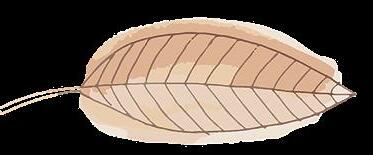
Embodied Resilience in Uncertain Times with Julie Woodward • Mondays, September 27 - November 15 • 6:30 – 8:30 p.m. • A Mindful Yoga Practice and Discussion, this 8–week interactive yoga workshop includes weekly yoga movement, breathing and meditation practices along with guided inquiry and discussion. In addition, participants will receive two hours of one–on–one coaching, scheduled upon registration. Drawn from eco–psychologist and Buddhist scholar, Joanna Macy’s Work That Reconnects Program, this workshop provides a format for meeting The GreatTurning, or eco–social disruption we are experiencing now. This class is designed to support participants in developing the skills and practices to stay centered during times of turmoil, to cultivate resilience in community, and to imagine and create what is possible going forward. Join us as we discover how we can transform despair and overwhelm into inspired collaborative action.~ J. Macy. $440.00. Contact Julie Woodward at jawh@comcast.net; juliewoodwardmsw.com.
Guided Yoga Therapy for Anxiety with Ema Stefanova • Saturday November 6 Workshop (2 hrs) and Sunday, November 7 Half–Day Retreat (4 hrs) • Start times TBA • This is one of our most popular workshops for adults and teens. Experience deep relaxation and peace. Learn practical ways of how to relax any place any time at will. Ours are proven medicinal yoga and meditation programs that work. Participants will get audio for home practice. Contact EmaStefanova@cs.com; YogaAndMeditation.com.
Hatha Yoga with Jen Abraham • September – December, Weekly Fridays • 12 -1 p.m. • A Hatha Yoga class incorporates many of the same poses you would see in a Vinyasa Flow class except the class is slower paced and the poses are held for longer periods of time. The transitions between poses are very well cued and do not include Vinyasas. This is a great class to attend if you are new to a flow style class. Join us for movement and health at Free to Be Yoga & Massage. $First class on-site FREE. $13 for drop-ins, $108 for 10 class, or unlimited monthly membership for $65. Please check website for current class options and pricing. Contact austeen.freetobe@gmail.com; freetobeyogamassage.com.
Iyengar Yoga with David Rosenberg • September – December • In person classes: Mondays 6 – 7:30 p.m., Thursdays 7 – 8:30 p.m.; Online Zoom classes: Saturdays 10 – 11:30 a.m.; Outdoor Yoga Sundays 10 – 11:30 a.m.• 6 p.m. • Free class on September 13 at 6 p.m. In any of these 10- week sessions, experience invigorating yoga postures using the methods of BKS Iyengar to strengthen the body, create a feeling of well– being, reduce stress, and release tension through physical activity and meditation. The instructor emphasizes the use of props and individualized instruction so students of varying experience, age, flexibility, and strength can participate together. Join my Yahoo group to learn more about my classes. $119 for ten classes. Contact David Rosenberg at 734–646–4195 or massage4@aol.com; aarecedonline.com.
Meditation brings wisdom; lack of meditation leaves ignorance. Know well what leads you forward and what holds you back, and choose the path that leads to wisdom. —Buddha
Swami Atmananda is a longterm resident of Ann Arbor and co-director of the Kashi Nivas Shiva Meditation Ashram. Grounded in the nondual Trika Shaivism philosophy of Kashmir, the ashram provides a spiritual environment in which seekers can be supported on their path to self-realization. In the ashram, seekers of truth can hear spiritual discourse, chant the Divine Names, meditate, and have profound experiences. In this dynamic environment, transformation takes place by means of the awakening of the divine inner energy. Learn more about the Ashram on the website, kashinivas.org or contact Swami Atmananda by email at atmananda@kashinivas.org.

Great spirits have always encountered violent opposition from mediocre minds.
—Einstein
Open Level Yoga with Michele Bond • September – December • Sundays, 4– 5:30 p.m., Tuesdays 6 – 7:30 p.m., and Saturdays, 10 – 11:30 a.m. • Each student is encouraged to honor their own unique abilities and limitations in this mixed level class, with variations offered for all levels. Our method blends the science of biomechanics with an openhearted, uplifting philosophy. Learn to look for the good in yourself and others as you enjoy a dynamic practice. $15 if registered for the semester; $20 drop in with instructor’s permission. Contact Michele Bond at 734-358– 8546 or michele@yogahouseannarbor.com; yogahouseannarbor.com.
Tender Yoga with Austeen Freeman • September – December, Weekly Wednesdays • 7:15 - 8:15 p.m. • An intentional yoga class dedicated to ease. Expect candlelight, restorative poses, and soothing positions for the body. A slower paced class. We will move through a grounded practice with just a few standing poses. If you have your own props like blankets, blocks or bolsters, please bring them. Great for all levels. Join us for movement and health at Free to Be Yoga & Massage. $First class on-site FREE. $13 for drop-ins, $108 for 10 class, or unlimited monthly membership for $65. Please check website for current class options and pricing. Contact austeen.freetobe@gmail.com; freetobeyogamassage.com.
Vinyasa Yoga at Free-To-Be Studio with Austeen Freeman • September –December Weekly: Mondays, 6 – 7 p.m. and Thursdays, 6:30 – 7:30 pm. • A hatha style vinyasa flow-based class. This 60-minute class will encompass poses that will coax balance, strength, and flexibility in your practice. Prior yoga experience/ knowledge is recommended for this class. We are an Adrian sanctuary dedicated to empowerment! Join us for movement and health at Free to Be Yoga & Massage. $First class on-site FREE. $13 for drop-ins, $108 for 10 class, or unlimited monthly membership for $65. Please check website for current class options and pricing. Contact austeen.freetobe@gmail.com; freetobeyogamassage.com.
Yin Yoga with Austeen Freeman • September – December, Weekly Mondays • 7:15 - 8:15 p.m. • The queen of yoga. Yin targets the joints flexibility in our bodies. We move through 4-7 different poses during a class period, holding each position for long amounts of time (3-7 minutes). If you have your own props like blankets, blocks or bolsters, please bring them. This class is perfect for all abilities. Join us for movement and health at Free to Be Yoga & Massage. $First class on-site FREE. $13 for drop-ins, $108 for 10 class, or unlimited monthly membership for $65. Please check website for current class options and pricing. Contact austeen. freetobe@gmail.com; freetobeyogamassage.com.
Yoga Essentials with Michele Bond • September - December • Weekly Tuesdays, 6 – 7:30 p.m. • For those new to yoga, or new to this system. Learn Universal Principles of Alignment that are an invaluable aid to learning the postures, deepening your understanding of the body, developing a yoga practice that is safe, joyful, therapeutic, and fun. $15 if registered for the semester; $20 drop in with instructor’s permission. Contact Michele Bond at 734-358– 8546 or michele@ yogahouseannarbor.com; yogahouseannarbor.com.
Yoga for Athletes with Michele Bond • September - December • Weekly Wednesdays, 6 – 7:30 p.m. • Our cutting-edge method will bring balanced muscular action, power, lightness and spring to your sports performance, as well as grace and ease to daily movement. Enhance core strength, decrease risk of injury, and learn to heal pre-existing injuries with indispensable tools for anyone who likes to play hard in their bodies. $15 if registered for the semester; $20 drop in with instructor’s permission. Contact Michele Bond at 734-358– 8546 or michele@yogahouseannarbor.com; yogahouseannarbor.com.
Yoga Classes with Sue Salaniuk, Sally Rutzky, Pam Lindberg, Susan Bellinson
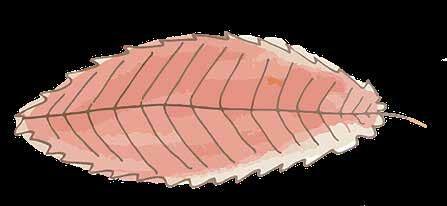
• September - December • Yoga in person and zoom taught in a progressive way that meets the needs of each individual class and participant. All levels and more experienced as well as Supported Yoga is taught. Appropriate modifications are made as necessary. $112/series of 8 classes or $15/class. Contact sue@ yogaspaceannarbor.com.
Virtual and In–Person Private Yoga Classes at The Yoga Room with Christy DeBurton • In–person (with proof of vaccination) and virtual yoga and wellness courses: Hatha, Vinyasa, Yin, Yoga for HSPs, Aqua Yoga, private lessons and more. Please see website for current class options and pricing. Contact Christy, info@ christydeburton.com; yogaroomannarbor.com.
Aaron is a discarnate entity channeled through Barbara Brodsky, founder and guiding teacher of Deep Spring Center Meditation and Spiritual Inquiry. He offers wisdom and teaches us that we are all beings of light.
Ann Arbor Rec & Ed is a provider of fitness and yoga classes throughout the Ann Arbor area. Rec & Ed is a division of the Ann Arbor Public Schools.
Nikki Appino is a multidisciplinary theater artist and filmmaker. Awards include the National Endowment for the Arts/Theatre Communications Group directing fellowship.
Imam Kamau Ayubbi received his religious and spiritual training under the Islamic Supreme Council of America.
Delyth Balmer is a long-time student of The Course.
David Bell is one of the Spiritual Leaders of The Interfaith Center for Spiritual Growth.
Rita Benn, PhD, is a long-term practitioner of meditation and has been leading retreats and classes in mindfulness-based compassion practice for over 20 years. She is adjunct faculty at the University of Michigan in Integrative Medicine and co-founded the Michigan Collaborative for Mindfulness in Education and other mindfulness organizations in Ann Arbor.
Michele Bond has an extensive background in martial arts, dance, competitive synchronized swimming, gymnastics, stunt fighting and swordplay, as well as over 800 hours of training in yoga, yoga therapeutics, and meditation.
Patricia Brennan has supported families in transition for the past 40 years as a doula, midwife, educator, and nonprofit doula program executive. She is the author of The Doula Business Guide and has trained over 2,000 people to become doulas.
Barbara Brodsky is the founder and guiding teacher for Deep Spring Center for Meditation and Spiritual Inquiry and a channel for Aaron and The Mother. Rooted in the Buddhist and Quaker traditions her teaching reflects this balance
Alicia Clark-Teper is a Holy Fire III Karuna Reiki Master Teacher and has been an active Reiki practitioner since 2017. She started her journey in Las Vegas and now is in Michigan to help spread the word of the light in her home state.

Venerable Thubten Chodron is an author, teacher, and the founder and abbess of Sravasti Abbey, the only Tibetan Buddhist training monastery for Western nuns and monks in the United States. She graduated from UCLA and did graduate work in education at USC. Ordained as a Tibetan Buddhist nun in 1977, she has studied extensively with His Holiness the Dalai Lama, Tsenzhap Serkong Rinpoche, and Kyabje Zopa Rinpoche. She received full ordination as a bhikshuni in 1986.
Supa (Greg) Corner has been practicing Buddhism since 1979. He was ordained in the Chogye order of Korean Zen Buddhism with seven years of formal practice. In 1987, he began studying Tibetan Buddhism with the late master Kyabje Gelek Rimpoche and is currently a Jewel Heart instructor, community chaplain, and Director of Jewel Heart’s West Michigan chapter.
Randall Counts is a long-time student of The Course.
Crazy Wisdom Poetry Circle is a writers group based at Crazy Wisdom.
Christy DeBurton is a Registered Yoga Teacher and Wellness Educator with over 20 years of experience. She is the founder of The Yoga Room in Ann Arbor.
Ilia Delio, OSF, PhD, is a Franciscan Sister of Washington, DC and an American theologian specializing in the area of science and religion, with interests in evolution, physics, and neuroscience and the import of these for theology. Ilia currently holds the Josephine C. Connelly Endowed Chair in Theology at Villanova University and is the author of twenty books. Delio holds two honorary doctorates, one from St. Francis University in 2015, and one from Sacred Heart University in 2020.
Erica Dutton started studying meditation 30 years ago. Over the years she has studied both Vipassana and Reflective Meditation practices. She has been teaching about 12+ years starting with vipassana but now teaches Reflective Meditation exclusively.
Rachel Egherman is a certified HeartMath™ Coach, Mentor, and Licensed Reflexologist. For over 25 years Rachel has worked with people in all stages of life.
Connie Eiland has been a shamanic practitioner starting in 2000 and a teacher since 2013. She has studied with Sandra Ingerman, Ana Larramendi, Herb Stevenson, Carol Proudfoot-Edgar, and others. She has just retired from 50 years as a physical therapist.
Courtney Fitzpatrick co-founded Verapose Yoga with Katie Hoener, LMSW in 2015, and together they’ve co-created two Yoga Alliance certified Yoga Teacher Trainings. (RYT-200 & RYT-300). Courtney has her master’s degree in Arts Administration,RYT-500, and Reiki III Master Level, Birth and Postpartum Doula training, and is the owner of Verapose Yoga Studio in Dexter, MI since 2015. She purchased the Yoga House in 2017 and created the Verapose Wellness Cooperative (shared space) in 2019.
Raymond Fix is a long-time student of The Science of Mind.
Austeen Freeman is a writer, life-long learner, and facilitator of healing. She is the author of the Mystic Wanderer Oracle cards, a journaling workshop instructor, and teacher of virtual and in-person yoga classes at Free to Be Yoga & Massage.
John Friedlander is an internationally acclaimed psychic, author, and teacher with degrees from Duke University and Harvard Law School. He studied with Jane Roberts in first Seth class and Berkley Psychic Institute with Lewis Bostwick. He is working on his 4th book, to be launched 2021-2022.
The Michigan Collaborative for Mindfulness in Education (MC4ME) is a non-profit organization dedicated to providing training workshops and programs in mindfulness to support its practice among school professionals who work in k-12 education, or with students and parents.
Ghidrahs’ Mystic She Ways is a solely women-owned store located in Adrian, MI with products and services at the store and also available online. They offer yoga classes, spiritual tools, sacred items, wellness products, and much more.
Linda Gibbler is a Dominican Sister of Houston and is the Associate Academic Dean and Associate Professor of Science and Religion at the Oblate School of Theology in San Antonio. She lectures and gives workshops on living Laudato Si’ and on the significance of cosmology and evolution for Catholic theology and spirituality. Her book, From the Beginning to Baptism: Scientific and Sacred Stories of Water, Oil, and Fire was published in 2010 by Liturgical Press.
Karen Greenberg is a Success-Tracking Train-theTrainer, Essence Repatterning Certified Practitioner, and a Registered Physical Therapist. She has taught physical therapy at University of Maryland Hospital and teaches dance at her studio. She has traveled and taught personal/spiritual growth to metaphysical spiritual seekers worldwide.
Sophie Grillet has been the main organizer of Westside Art Hop since 2012.
Karla Groesbeck has nearly 25 years of experience in the body movement, meditation, qigong, and martial aspects of Tai Chi Chuan. She is owner and founder of Tai Chi Love Studios (formerly Good Enerchi Studio) in Ann Arbor. Karla performs and innovates solo Tai Chi (as seen in parks and movies), two-person (martial art) and weapons forms, and presents throughout the Southeastern Michigan area.
Anita Moorjani’s new book Sensitive is the New Strong: The Power of Empaths in an Increasingly Harsh World, is a slightly different spin on the subject of being highly sensitive or empathic. She knows the subject matter first-hand and the pain and suffering it can cause when a person isn’t aware of, or doesn’t know how to, deal with it. You see, in 2008, hours from dying from the end stages of cancer, she had a near death experience (NDE) and completely recovered. The late author Wayne Dyer discovered her story and was instrumental in her telling it through her earlier bestselling book Dying to be Me. Her new book’s title Sensitive is the New Strong grew out of her experience with the hurt she experienced from negative and critical people online. She began asking questions—Did others feel this way? Is this why there are so few sensitive people in leadership roles?
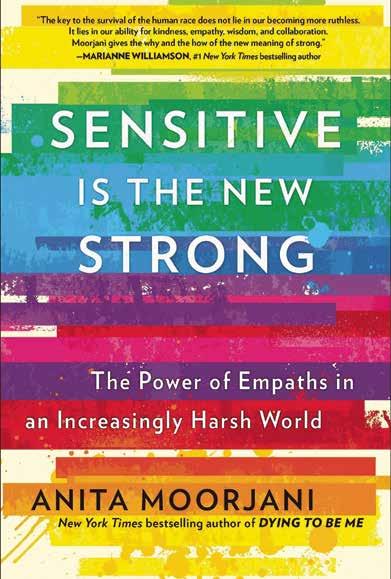
Empaths are different than others and they often feel like there is something wrong with them, when in actuality, they are unaware of their gift and how to deal with it.
In the first part of the book The World of an Empath, she discusses her NDE and years later, a transformational encounter with a shaman in Costa Rica. She learned being an empath was the definitive reason for why she had been so challenged throughout her life. This new information gave her the language to understand herself and the people that she attracted to her work. Empaths are different than others and they often feel like there is something wrong with them, when in actuality, they are unaware of their gift and how to deal with it. Moorjani sums it up this way, “We’re six-sensory beings who’ve been conditioned to believe that we’re five-sensory beings in a world created by people who believe that they’re five-sensory beings.” How to know if this is you? There is a quiz to determine your empathic score. Are you somewhat sensitive or a full-blown mystic? I shared the quiz with a few friends and family and found not everyone can relate to being an empath.
In the second section, Your Relationship with Yourself, Moorjani goes deeper into how to function more ideally as an empath. She covers the energy zapping that occurs from using the internet. There’s an important chapter called Turning Up the Dial on your Ego. To help with stronger boundaries empaths need to align their ego with naturally high level of conscious awareness. She tells the story of her friend who became terminally ill (before she herself did). Moorjani felt guilty if she wasn’t helping her friend or her friend’s children and she became weak from her body’s natural inclination to feel what her friend was feeling. Moorjani’s underdeveloped ego led to her denial of her own needs. Even as Moorjani’s own illness began, she still cared more about how everyone around her was feeling than herself. She shares the wisdom that illness, whether small or big is often the body pushing back, and can be an alarm telling you, it’s time to value yourself as an individual, to pay attention to your own needs, before it’s too late.
She shares the wisdom that illness, whether small or big is often the body pushing back, and can be an alarm telling you, it’s time to value yourself as an individual, to pay attention to your own needs, before it’s too late.
In Part 3: Your Relationship with The World, Moorjani covers a big trigger for empaths—creating financial abundance. On the one hand empaths are naturally gifted at manifesting. However, their desire to people-please and give out of a desire to serve can lead to them to devalue themselves, their talents, and their work. Moorjani says following her NDE she would do healing work and speak to others about her experience for free. It took a lot of her time, but she loved doing it. Eventually she let go of her fear of what others would say due to the common belief that “money isn’t spiritual.” Doing so changed her whole world and she became the well-known author and speaker she is today.

This book is full of other helpful teachings for empaths such as learning to say “no” and dealing with the side of guilt that comes afterward. She herself ended up saying “no,” to an arranged marriage. She talks about the role of gender as an added layer to being an empath. In her culture she was groomed from an early age to be submissive and obedient in order to be a good wife to her husband and the family she would marry into. Moorjani was also bullied growing up and has a really unique way to approach confrontation and deal with adversaries. At the end of each chapter is a relevant meditation. There is one for tuning in, for abundance, and for being yourself unapologetically, to name a few.
Years ago, I saw Moorjani tell her incredible story in person. She speaks with confidence and authority because she has real experience. Maybe like Moorjani, you (or someone you know) feel things more deeply than most—you may feel drained from daily life more often than not. It took clinical death for Moorjani to honor and love herself, own her gifts, and connect to cosmic consciousness. To be clear, she is saying that her inability to be herself is what lead to her nearly dying! There is so much wisdom here from her own journey both before and after her NDE, including how to increase your life force so that you can, as she was instructed by her father, “live your life fearlessly.”
The Power of Empaths in an Increasingly Harsh World
It took clinical death for Moorjani to honor and love herself, own her gifts, and connect to cosmic consciousness.
Craig Harvey is a long-time practitioner and supporter of peace.
The Harmony Collective is a community of Bhakti Yogi’s based in Ypsilanti.
Sharon Hillenaar is a LIVE Coaching & Fitness, LLC NASM CPT-CES, Yoga Alliance 200RYT, Pilates Instructor.
Robert Jacobs studied meditation with two spiritual masters from India for 18 years, described in his memoir Journey to the Awakened Heart. He is founder of Awakened Heart Yoga & Meditation in Gainesville, FL.
Jewel Heart is dedicated to the preservation of Tibetan Buddhism and to bringing the practice of this rich tradition within the context of contemporary life to everyone.
David Jibson is an editor and former social worker.
Heidi Kaminski is a certified teacher and spiritual student of many years. Kennedy conducts a monthly Day of Mindfulness at Weber Center.
Anthony King is an Associate Professor in the Department of Psychiatry and Behavioral Health and the Institute for Behavioral Medicine Research (IBMR) at Ohio State University. He is also the Director of the OSU Center of Excellence for Resilience where he conducts NIH-funded clinical neuroscience research on Mindfulness and Compassion-based psychotherapy for PTSD, anxiety, and depression. He has been a student of Gelek Rimpoche for over 30 years and a Jewel Heart instructor since the mid1990s.
Jenn Kirk, is a Reiki Healing facilitator and hosts a ceremonial Full Moon Bonfire ritual.

Kishor is a lifelong practitioner of Bhakti and has lived and taught at ashrams in India and NYC before coming to Ypsilanti.
Rev Annie Kopko is an interfaith minister.
Clementine Kornder is an artist and writer that works with Courage Publishing and organizes the meetup events for Write On.
Lifespan Doulas offers professional online doula training and certification for the complete lifespan.
Dr. Rhonda Magee is a law professor at UCSF, a social justice advocate, mindfulness meditation teacher, and author of the book, The Inner Work of Racial Justice She is a nationally known presenter.
Julie Mariouw is a former English teacher, published writer, and certified Amherst Writers & Artists workshop leader. She focuses on the healing power of creative writing, helping writers access their subconscious minds.
Mary Mazur became a PSYCH-K® Facilitator in 2010, a Reiki Master in 2012, a Board-Certified Holistic Nurse in 2014 and a Certified PSYCH-K® Basic Instructor in 2017, being one of only 35 Instructors in the world.
Molly and Quentin McMullen were trained in anthroposophical medicine in Germany and Switzerland.
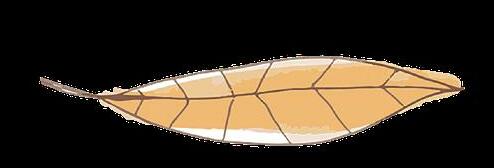
Rob Meyer-Kukan began his practice in 2015 as the Healthy Musician Institute, LLC, serving musicians and performing artists with repetitive strain injuries. He is a passionate educator and musician. In addition to this he is a licensed massage therapist and sound therapist.
Miranda began her practice three years ago as part of her recovery process which inspires in her a deep appreciation for the Gita’s straightforward philosophy.
Lexi Mohney is an author and book coach who owns Courage Publishing and helps organize events for Write On, Ann Arbor.
Edward Morin is a writer, editor, translator, and former university teacher.
John Orr received Theravada Buddhist ordination and training for a period of eight years while living as a monk in the 1970s in Thailand and India. After retiring from the faculty of Duke University, he now lives near Asheville, North Carolina.
Peaceful Dragon School has offered year-round programs in Tai Chi (Yang Style – Short Form) and Qigong (Energy Work) since 1990.
Lissa Perrin is a poet and former clinical social worker.

Judy Ramsey was trained as a shamanic practitioner by Sandra Ingerman, Carla Meeske, Kate Durda, Stephanie Tighe and others, and is approved by Sandra Ingerman as an instructor for Journeying, Extraction, Medicine for the Earth, Healing with Spiritual Light, Soul Retrieval, and Death and Dying.
Gelek Rimpoche (1939–2017) was the Founder and Spiritual Director of Jewel Heart. Among the last generation of incarnate lamas tutored by the great masters in Old Tibet, Rimpoche’s command of western culture allowed him to convey the Tibetan Buddhist tradition with wisdom, kindness, and wit.
Demo Rinpoche is Jewel Heart’s Resident Spiritual Advisor. He studied uninterrupted for almost thirty years at the Drepung Loseling Monastery in India under the supervision of the Dalai Lama and received the highest monastic degree of Geshe Lharampa in 2011. His studies continued at Gyume Tantric College, Sera College of Higher Tibetan Studies, and Union Theological Seminary.
David Rosenberg is a certified Iyengar yoga instructor who has been teaching since 1993. He traveled to Pune, India in 1996 to study from the Iyengars and other advanced Iyengar yoga teachers.
Crystal Scott is a sculptor, graphic design artist, and the Visual Arts Coordinator for Chelsea Area Festivals and Events (CAFE). See more of her art work on Instagram
has been a Registered Yoga Teacher and Wellness Educator for more than 20 years, and has supported hundreds of students on their yoga and wellness journeys through private and group yoga classes, retreats, and more. Connect with her at yogaroomannarbor.
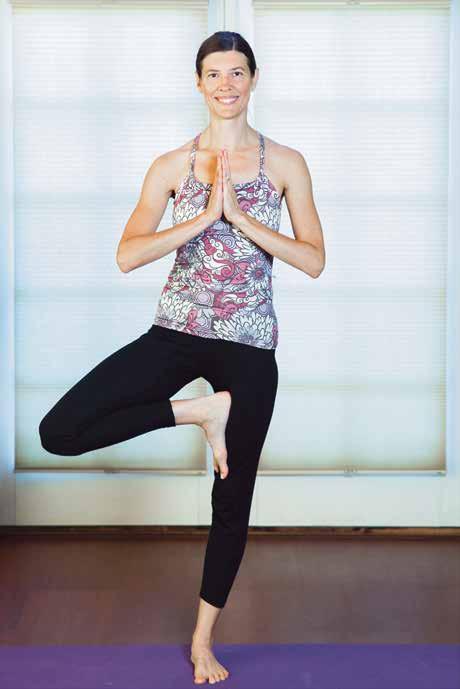
com or see her calendar listings under the Yoga heading on page 99.
Mary Alice Truitt is a member of the Interfaith Center for Spiritual Growth and a long-time student of metaphysics.
Verapose Yoga & Meditation House is a center for yoga teacher training, meditation, yoga, sacred sound, workshops, ceremony, and healing arts cooperative in Dexter with the intention of helping others develop a stronger sense of inner peace and wellbeing.
Shalina Nicohl Rankin is an Herbalist and founder of Fiery Maple Wholistic Living, Inc. Rankin holds a B.A. from the University of Michigan, holds a certificate of completion in Herbal Studies from the Habitat Reskill Center of Ann Arbor, and completed an Herbal Medicine Apprenticeship at the Scottish School of Herbal Medicine on the Isle of Arran, Scotland.
Suzy Wienckowski is a Reiki Master and Massage Therapist. Suzy has over 40 years of experience in the healing arts. Reiki has been the focus of her work since 1993. Suzy teaches the traditional Usui System of Reiki Healing and is a member of The Reiki Alliance.
Julie Woodward, MSW, RYT-200, is a coach, experienced psychotherapist, health educator, and yoga teacher. Trained facilitator of The Work That Reconnects, Julie offers coaching and group classes to people who wish to experience embodied practices to support personal growth.
Write On has been helping Michigan writers reach their goals since 2014.
Yoga House is known for its nature-filled setting and commitment to helping students understand the power of yoga to enhance and enrich all areas of one’s life.
Yoga Space has been helping people learn about the body/mind connection since 1998. They have helped countless students live more stable and aware lives.
The Rudolf Steiner Health Center is designed to support those with chronic illness or those looking to avoid developing illness when they realize that their health is endangered. They utilize small group settings with a balance of activities throughout the day and evening to teach, experience, and inspire patients to feel a new sense of vitality and healing forces. All conditions are welcome and even those who are not yet diagnosed with anything.
Rudolf Steiner School of Ann Arbor offers an independent education that is helping students look beyond GPA and imagine, analyze, create, collaborate, and build a better future. A hands-on PreK-12 curriculum supports students throughout their educational journey.
Hartmut Sagolla has been studying Tibetan Buddhism for over 30 years. He lived at the Tibetan Buddhist Society in Melbourne, Australia before moving to the U.S. and since 2002 has served as a Program Director at Jewel Heart. He is a long-time Jewel Heart instructor and Director of the Bloomfield Hills chapter.
Victoria Schon traveled to Costa Rica to learn about ancient cultures and shamanic practices that tap into Mother Earth. She participated in sacred plant medicine ceremonies and sat with indigenous medicine men and women. While there, she was introduced to crystal singing bowl sound healings. She has a B.A. from the University of Michigan, Ann Arbor. She is certified by the International School of Regenerative Detoxification as a Detoxification Specialist; certified Holistic Health Coach by the Institute of Integrative Nutrition; certified Holistic Health Practitioner by the American Association of Drugless Practitioners, and the State University of New York Purchase College.
Sandra Shears is a spiritual channel, healer, and counselor since 1990 as guided by the Higher Communities of Light. As a Light Worker and Vibrational Practitioner, she specializes in the activation and development of other practitioners, light workers, and world servers.
Janet Somalinog is a Religious Science practitioner.
Ema Stefanova C-IAYT, E-RYT500 is a holistic master yoga and meditation teacher, owner of Ann Arbor Yoga and Meditation, RYT200, 300 and 500 teacher trainer, retreat and workshop provider, internationally certified yoga therapist, healer, speaker, and author since 1979.
Steiner Health is a 501c3 dedicated to educating patients and practitioners about the benefits of anthroposophical medical insights based on the research of Rudolf Steiner and practical application of that research for the betterment of humanity.

Still Mountain is a community of people practicing meditation and studying Buddhist teaching, located in Ann Arbor, Michigan.
Steven Sy is a Senior Instructor of Master Mantak Chia’s system, certified in Qigong Meditation Basics, Tao Yin Qigong, Iron Shirt Qigong 1-2, Tantien Qigong, Tai Chi Qigong 1-3, Fusion of the Five Elements 1, Healing Love, and Inner Alchemy Qigong.
Susan Thompson is a long-time student of metaphysics of all types.
Touchstone Cohousing is the youngest of 200 cohousing communities in the US. Touchstone Cohousing has recently added 12 new units, offering a rare opportunity to join this amazing, multigenerational, multi-cultural way of life.
Master Wasentha Young has been a practitioner since 1968. She shares her in-depth knowledge of practices that nurture the human spirit, promote health, and move students into a place of strength, harmony, and well-being.
Karlta Zarley has been a nurse for 40 years and in private practice for 23 years as a professional healer/educator. She provides energy work, spiritual direction, and leads classes and retreats, most recently on Light Body and the use of energy work on those on the Autism Spectrum.
Celeste Zygmont has been involved with Deep Spring Center for three decades learning through its programs, talks, and retreats. Her own spiritual growth through meditation and mindfulness has shaped her to help others along the Path of the Dharma.
